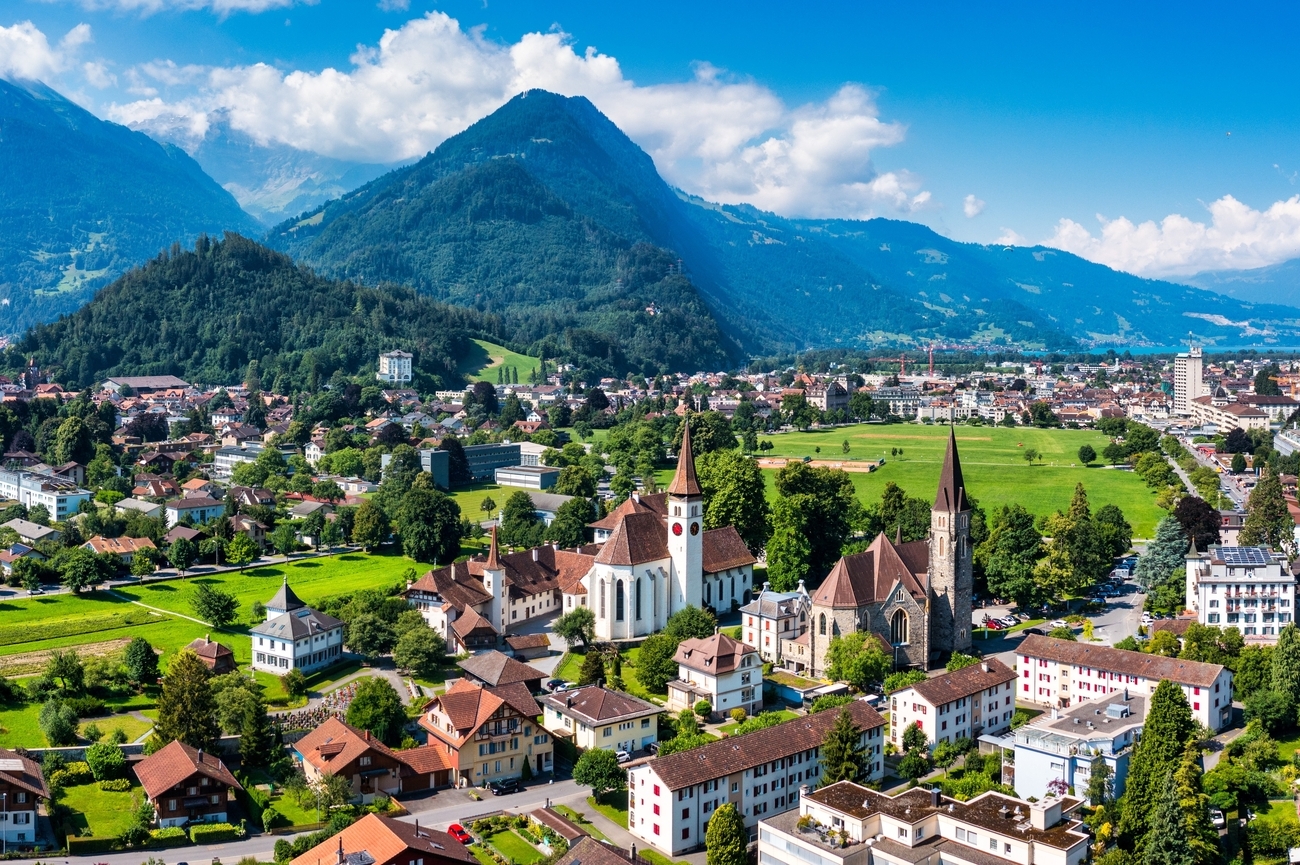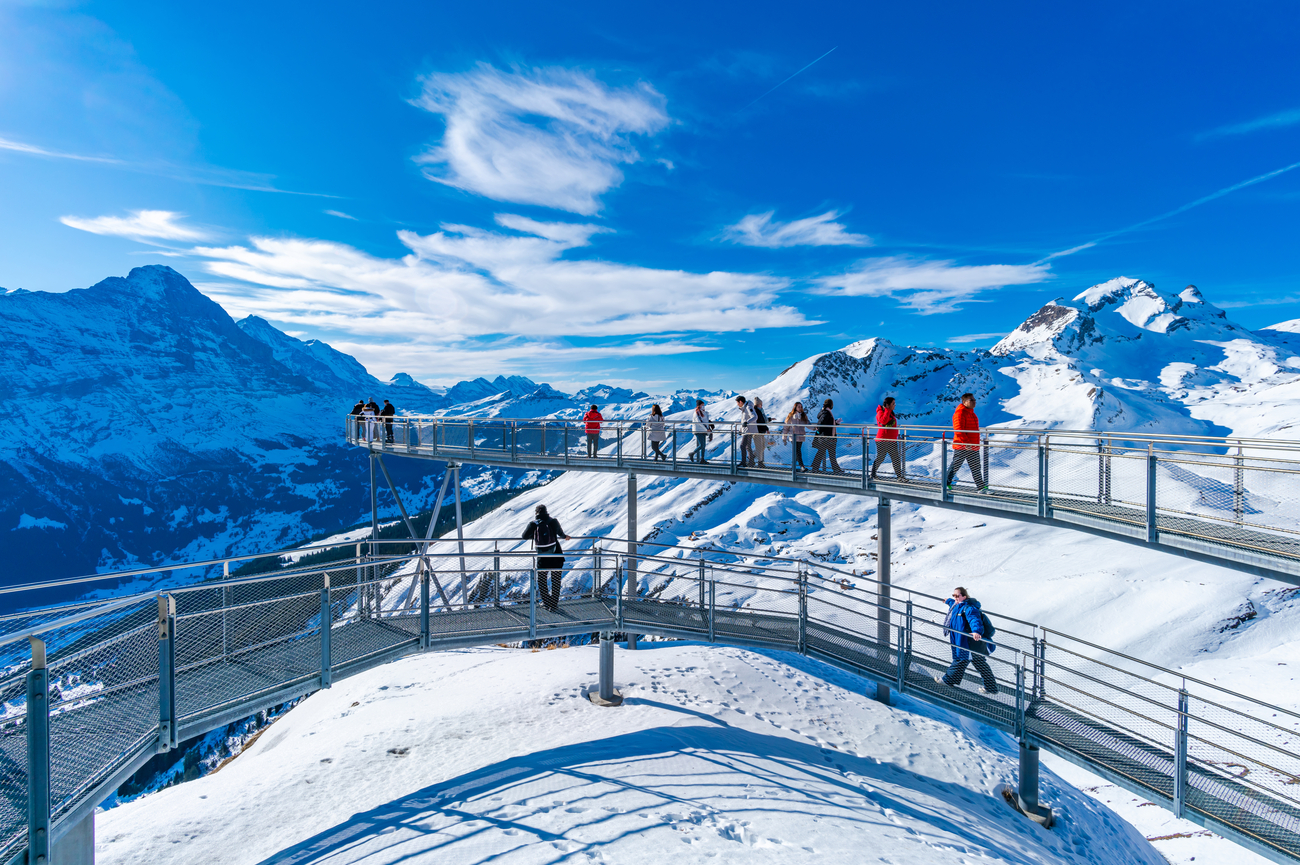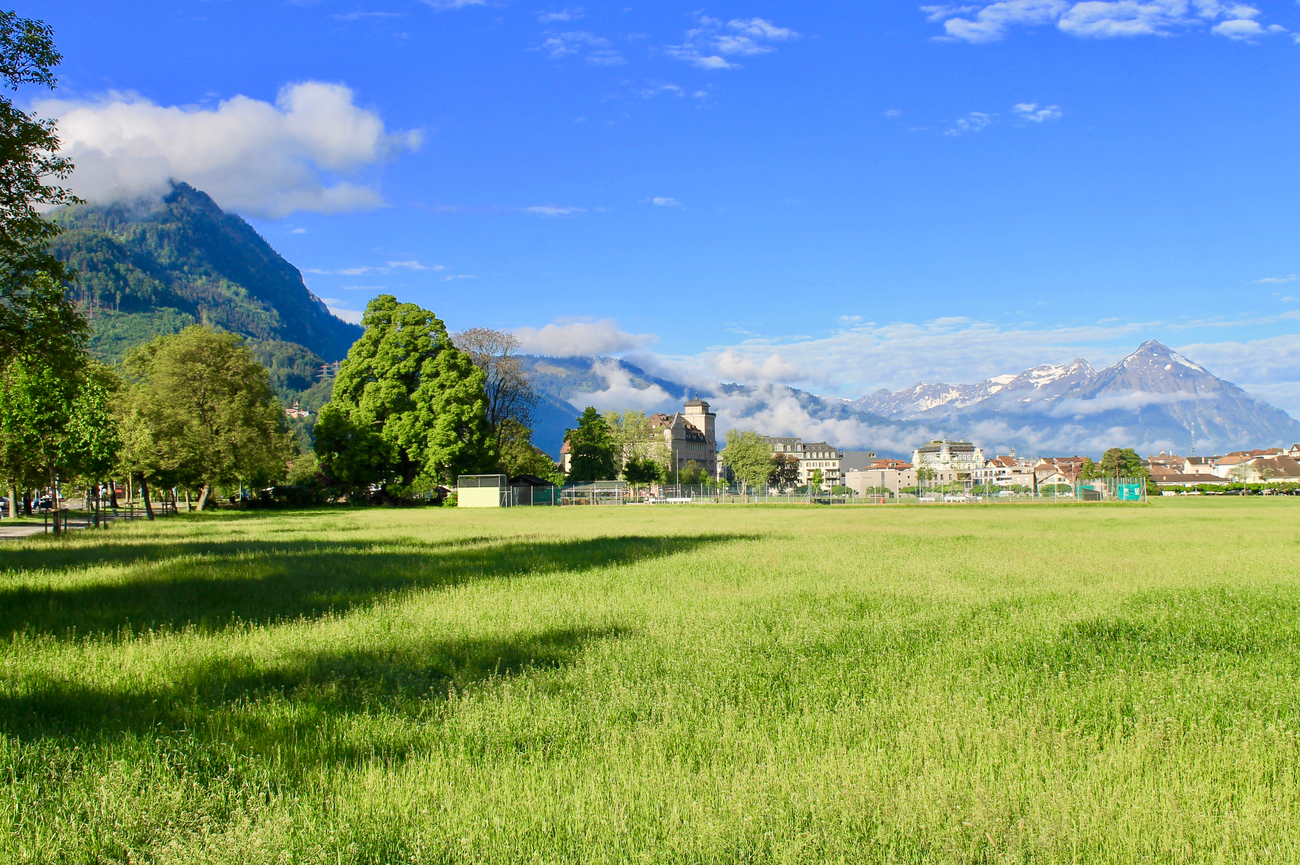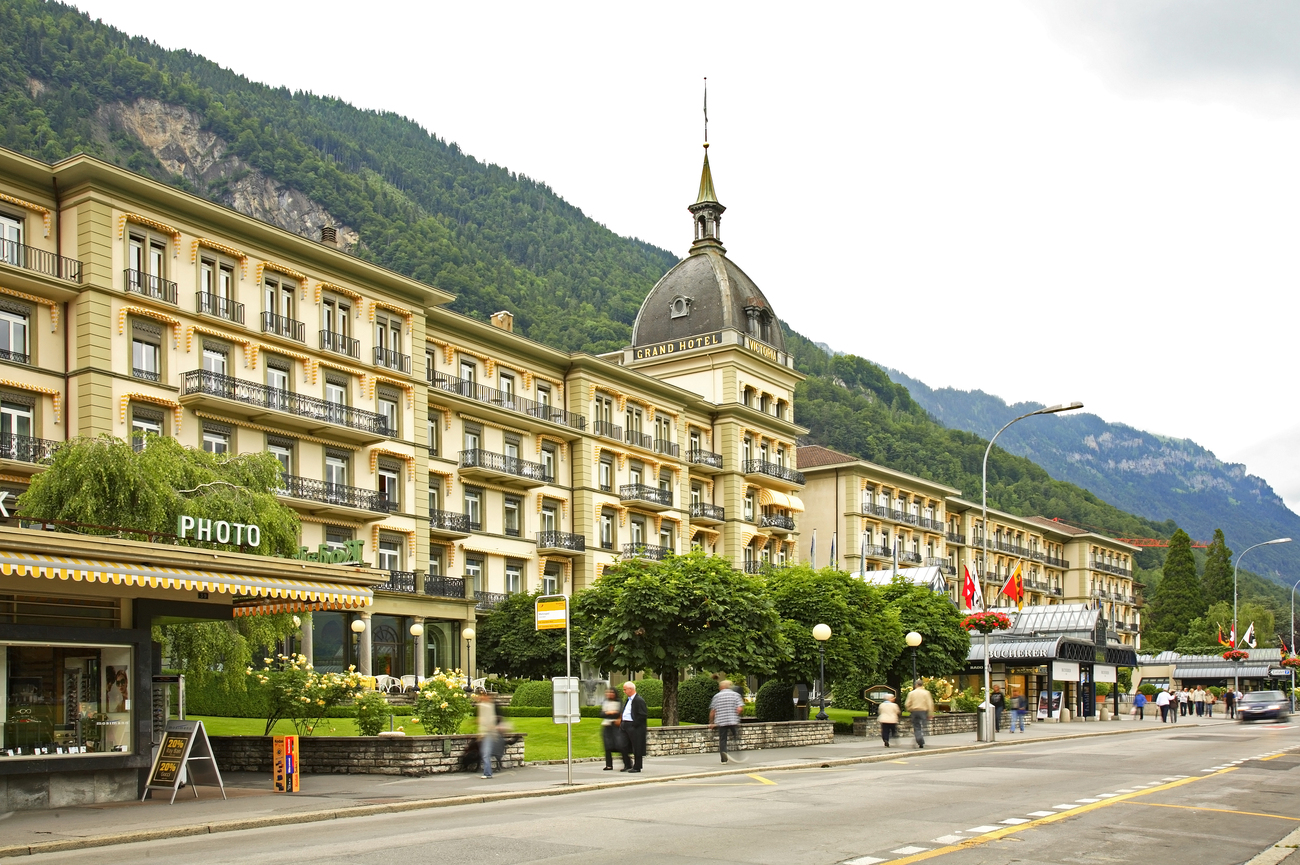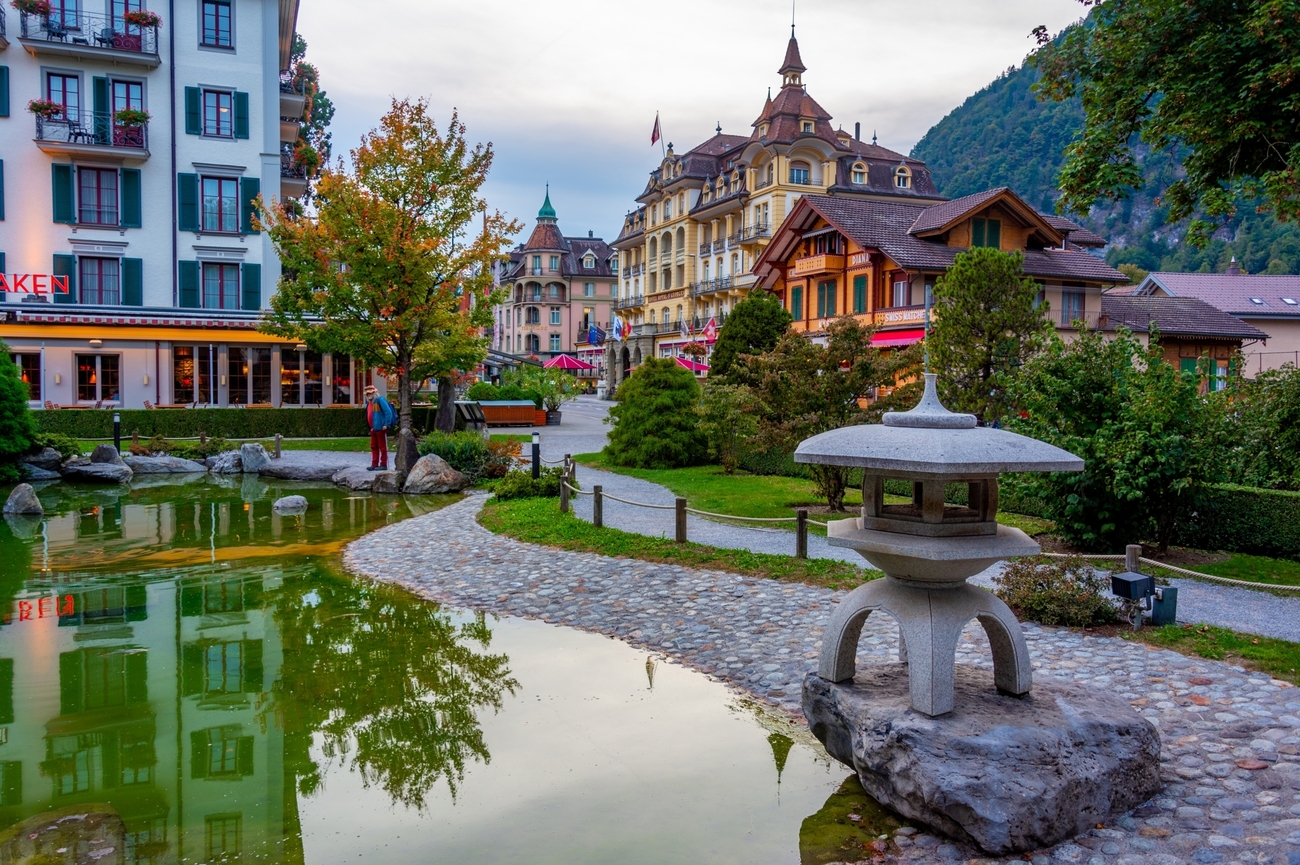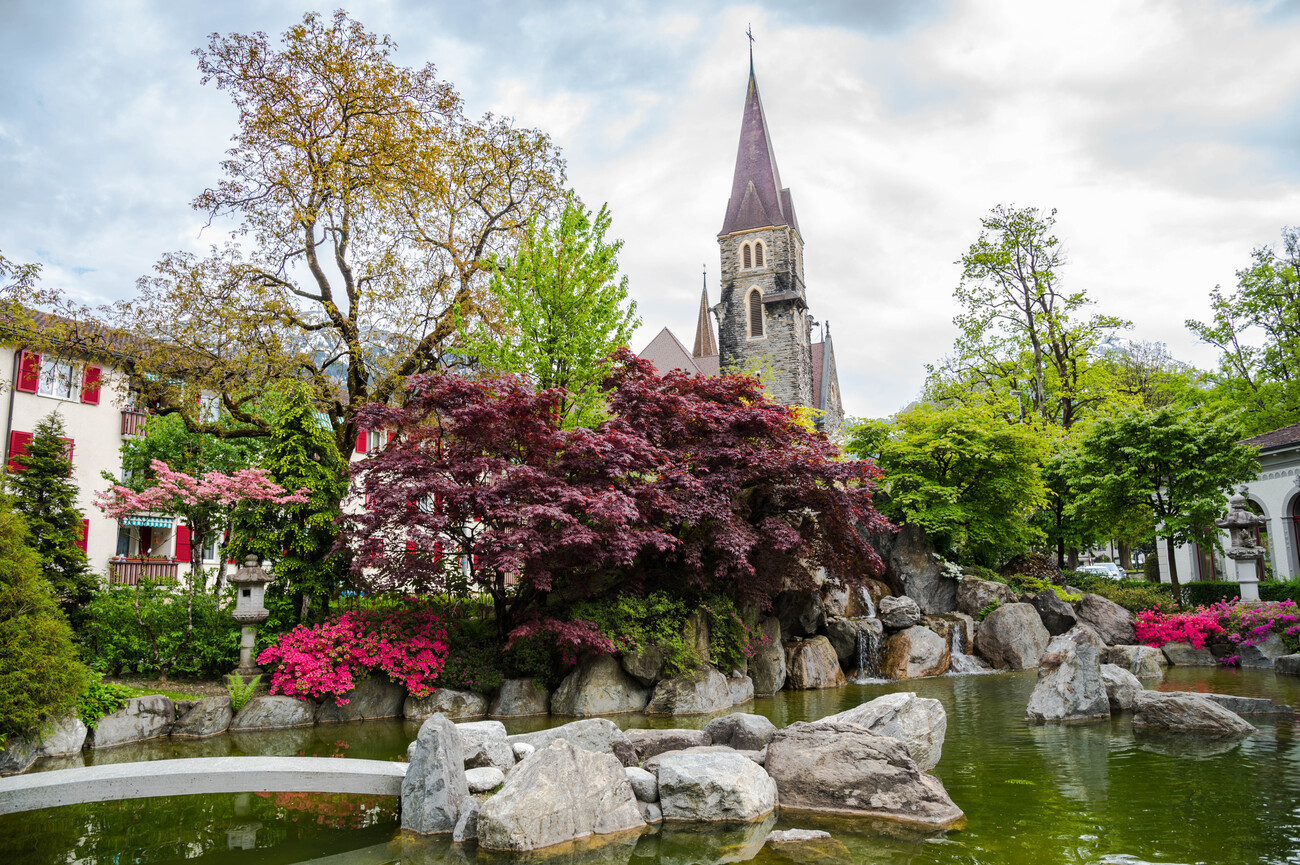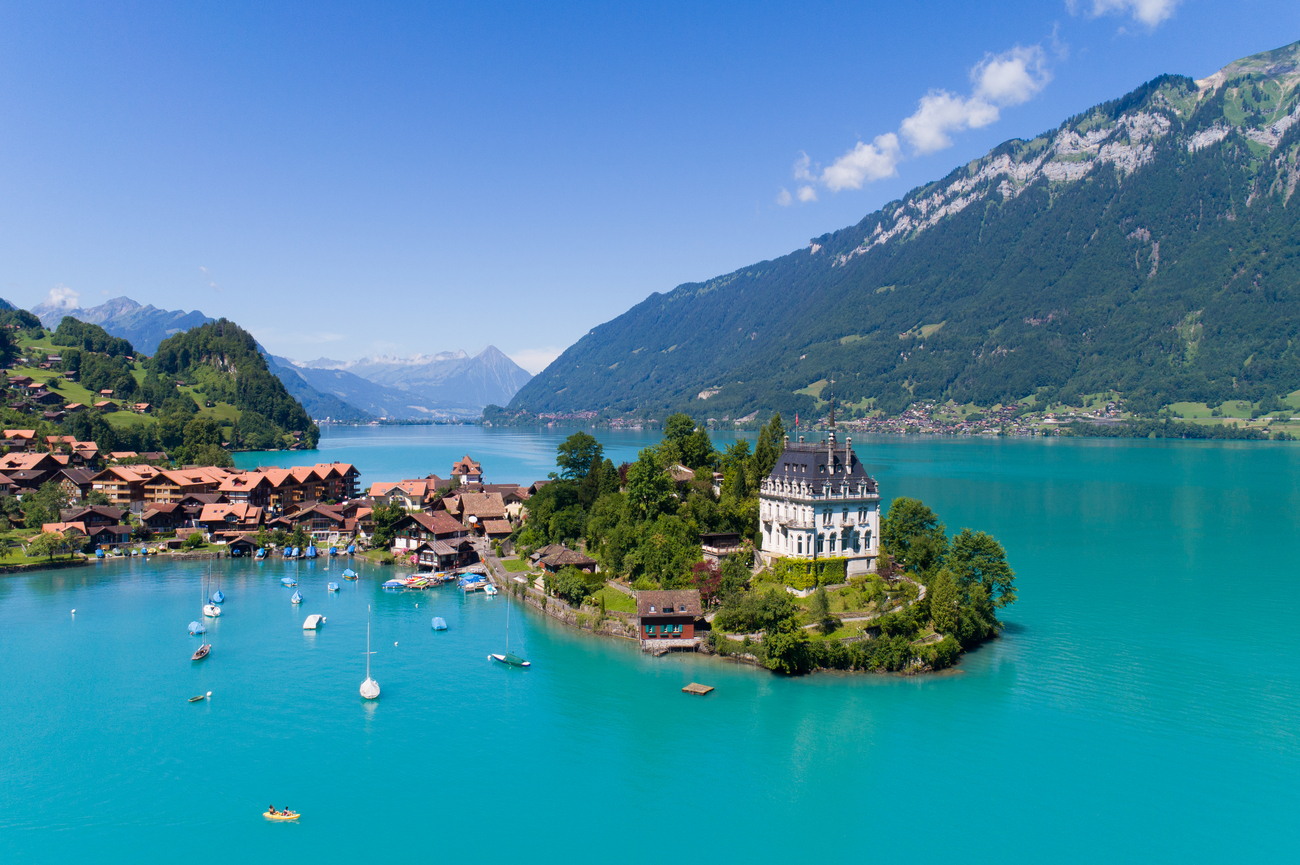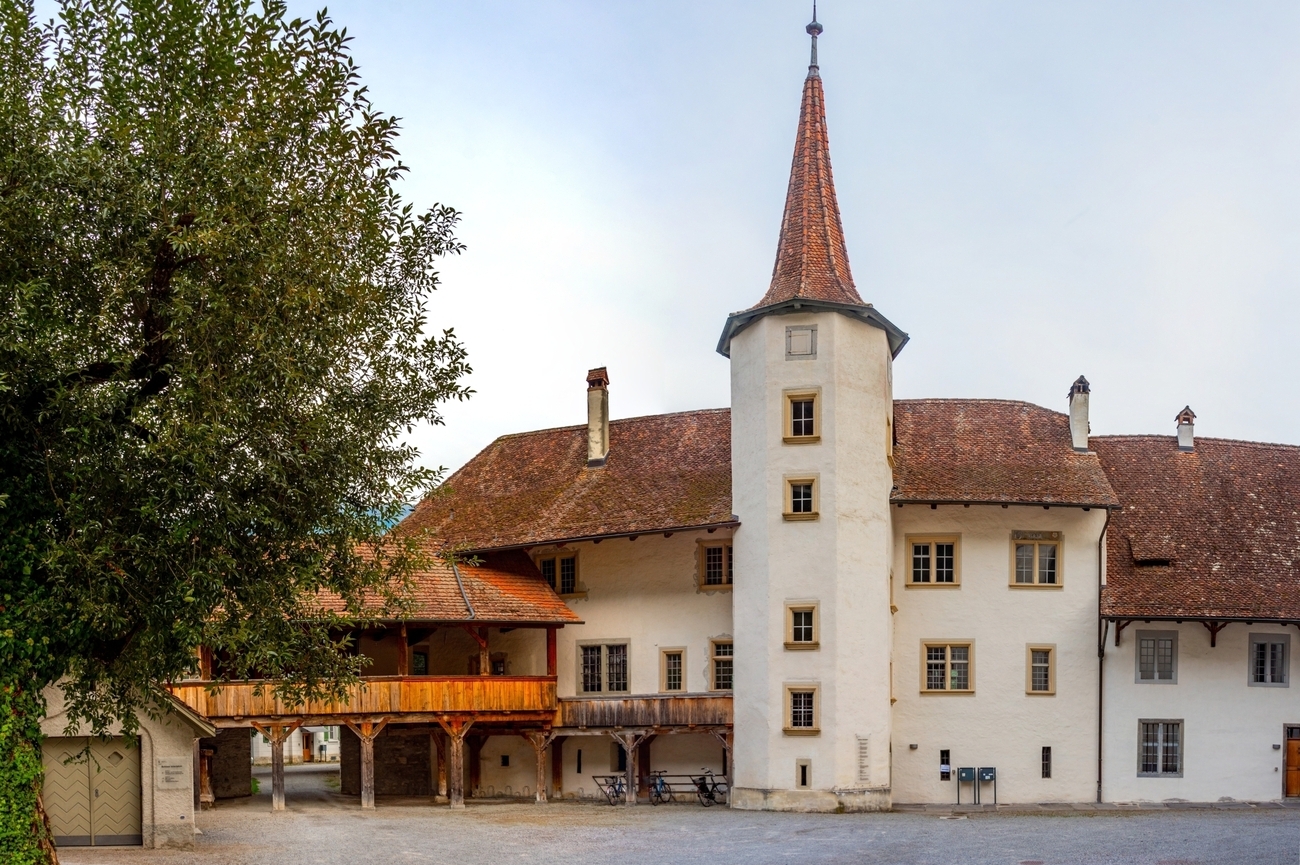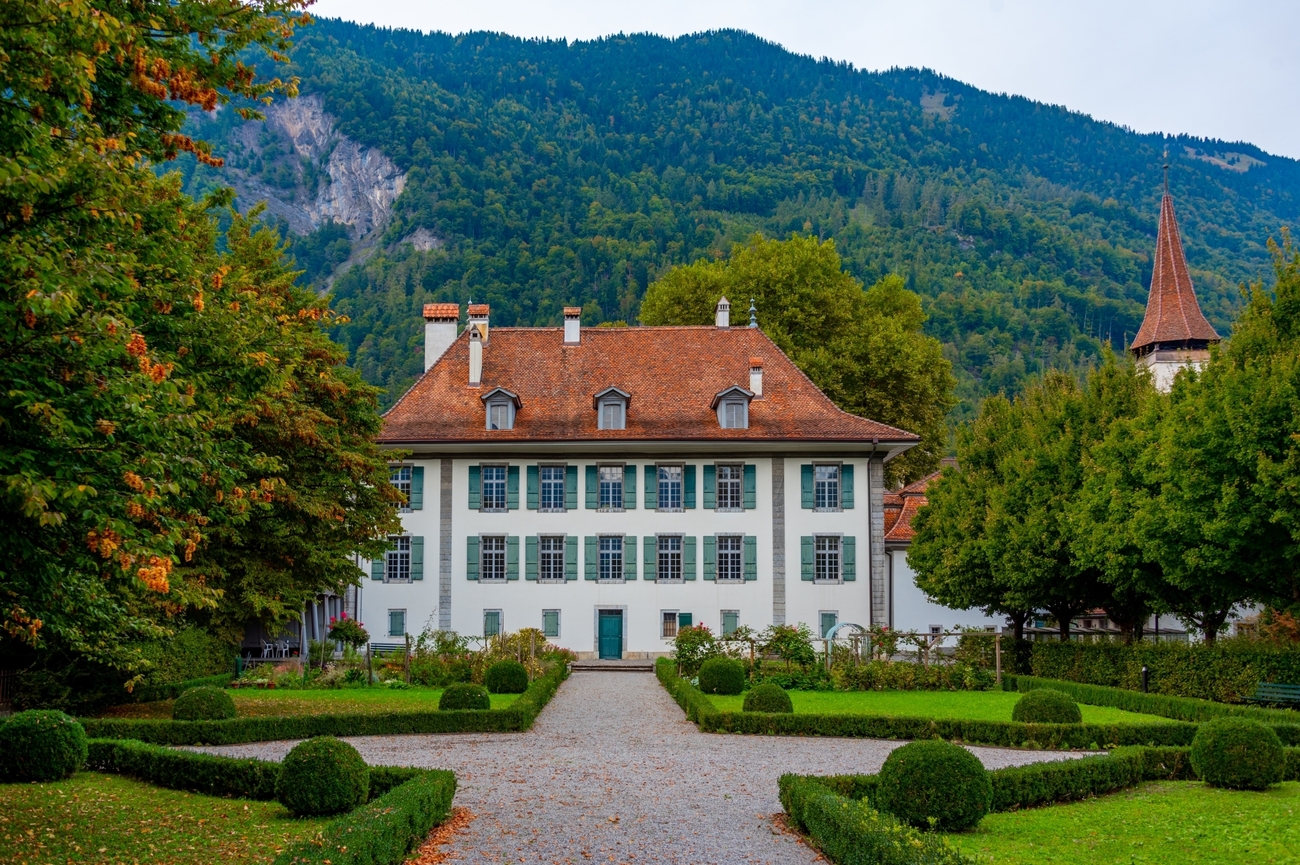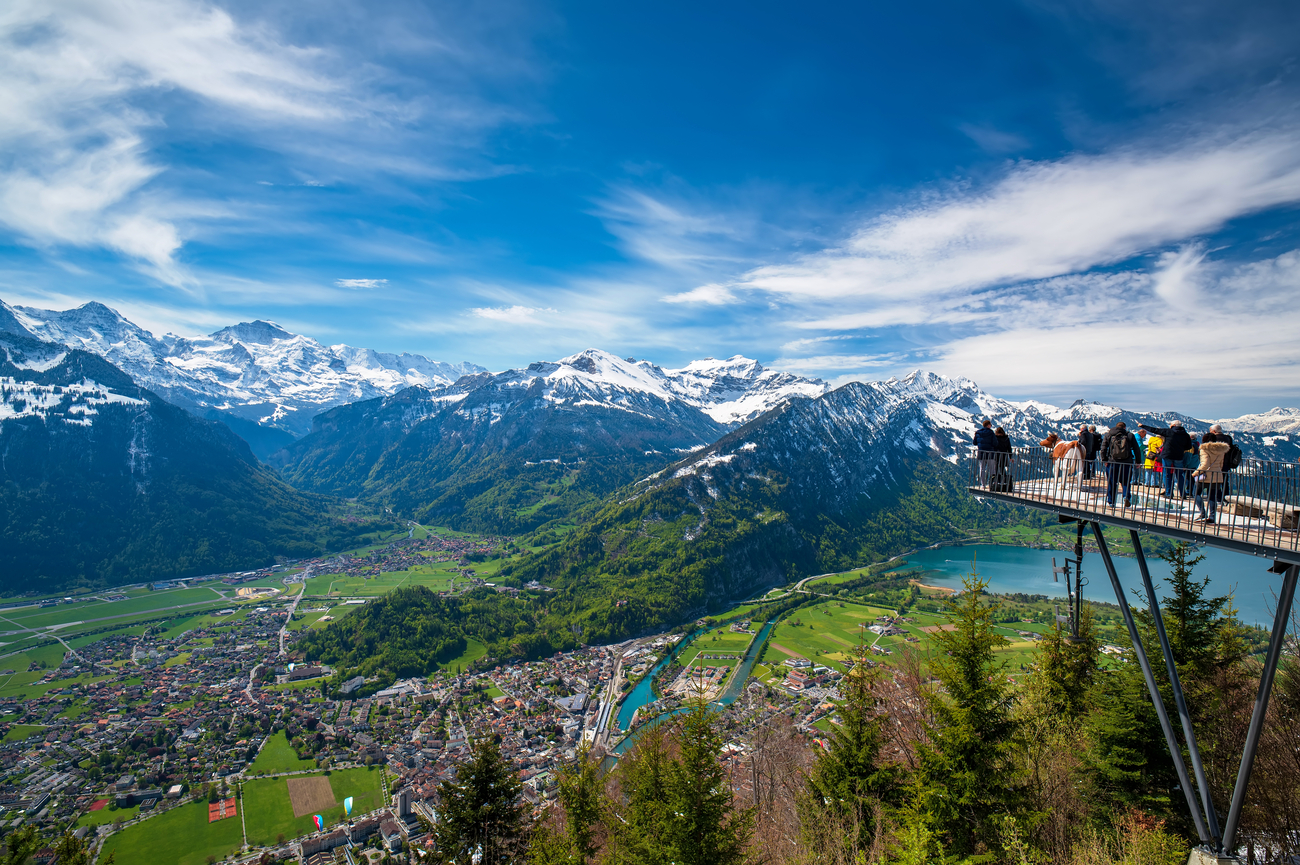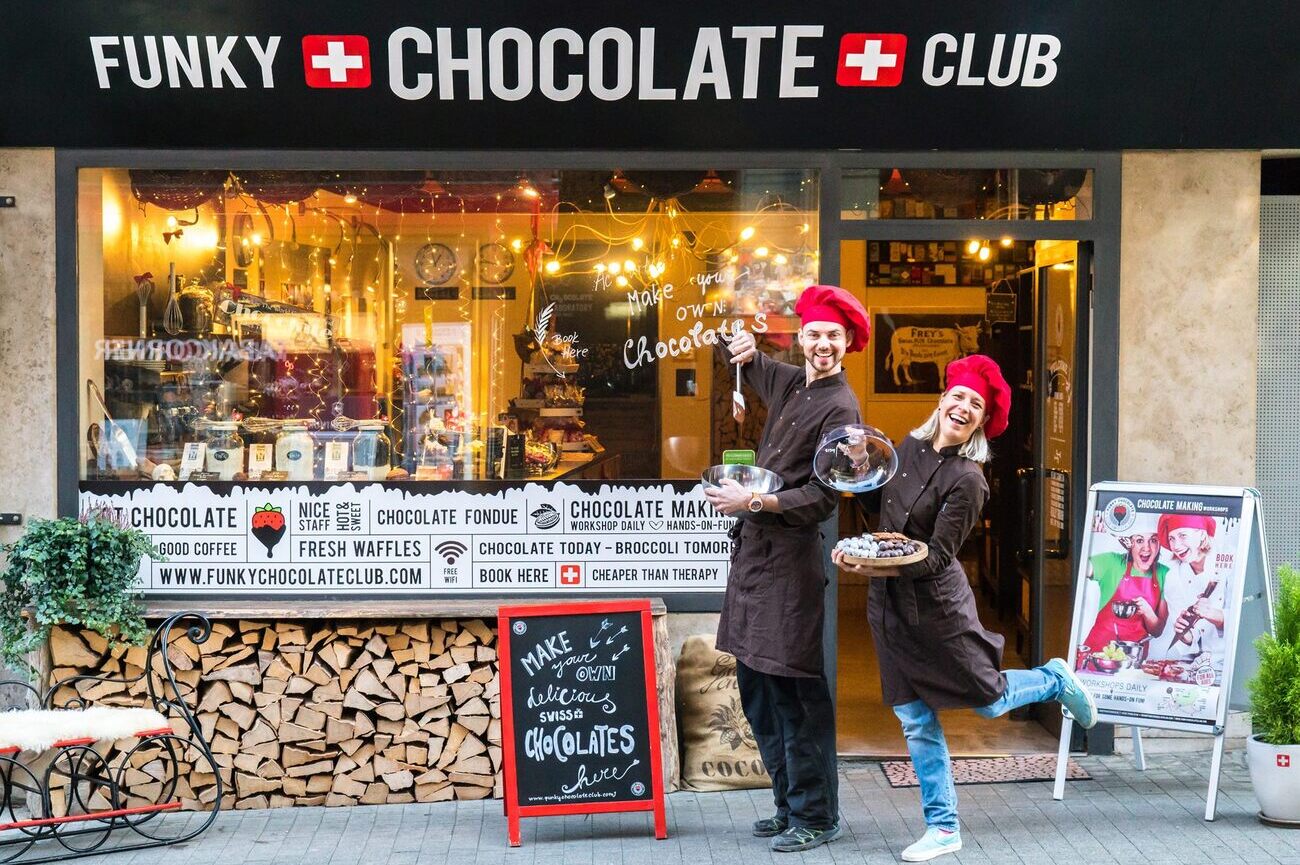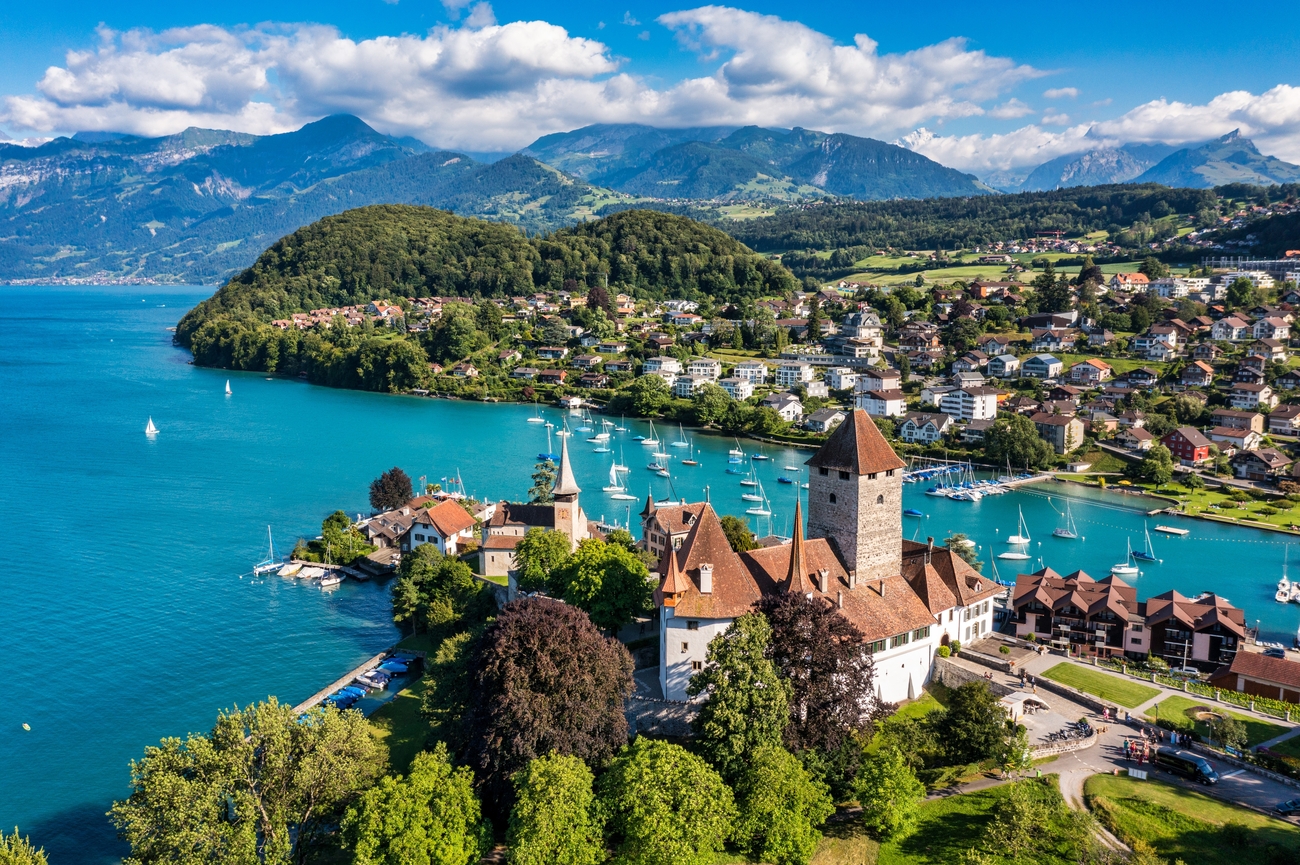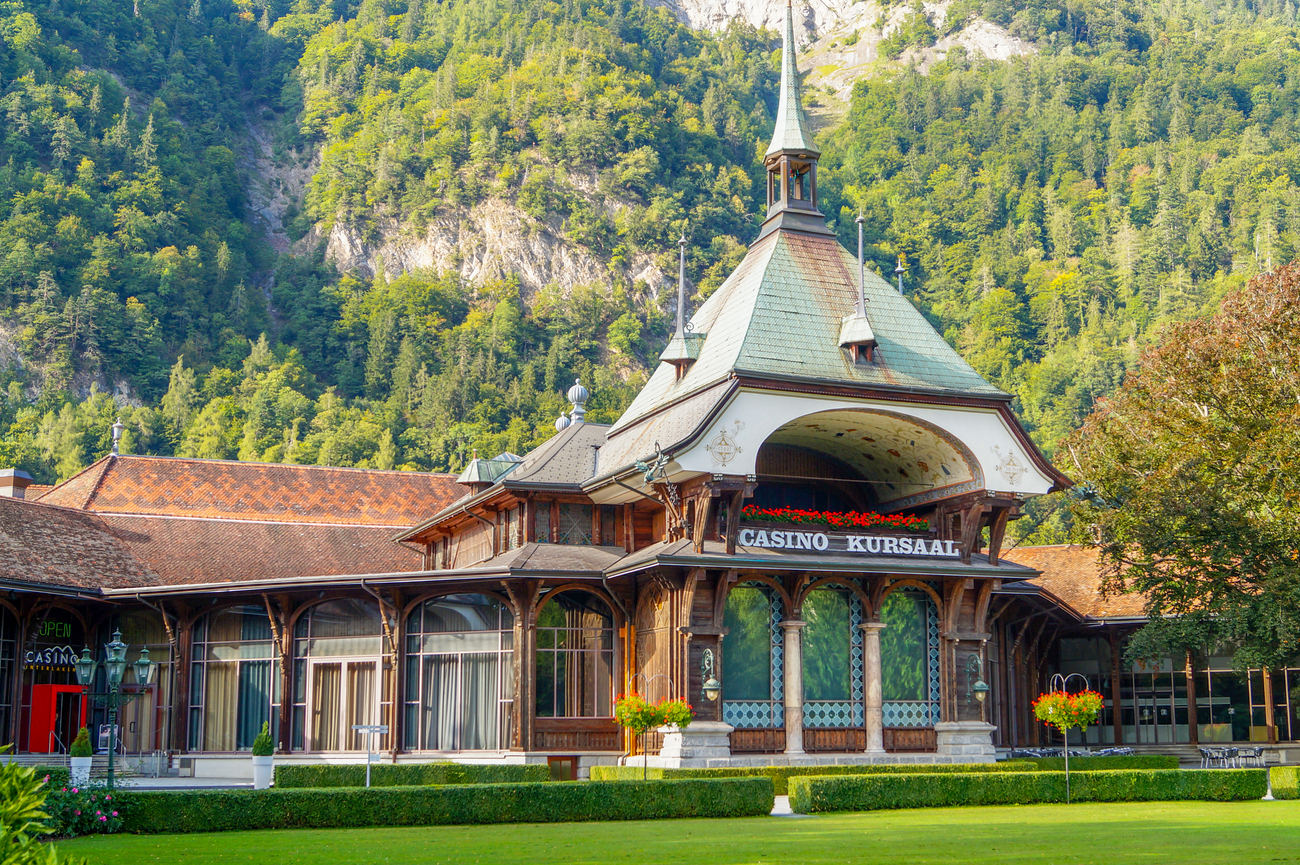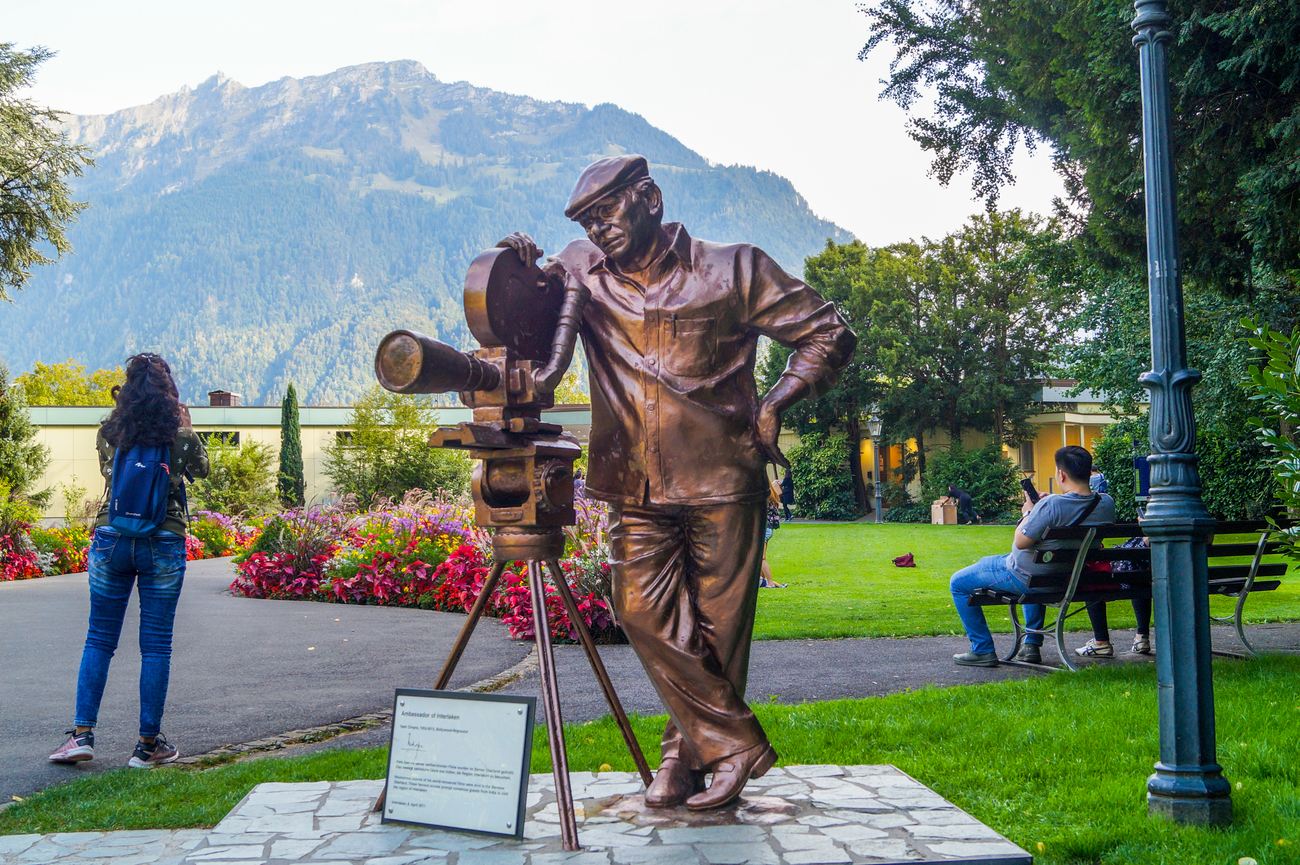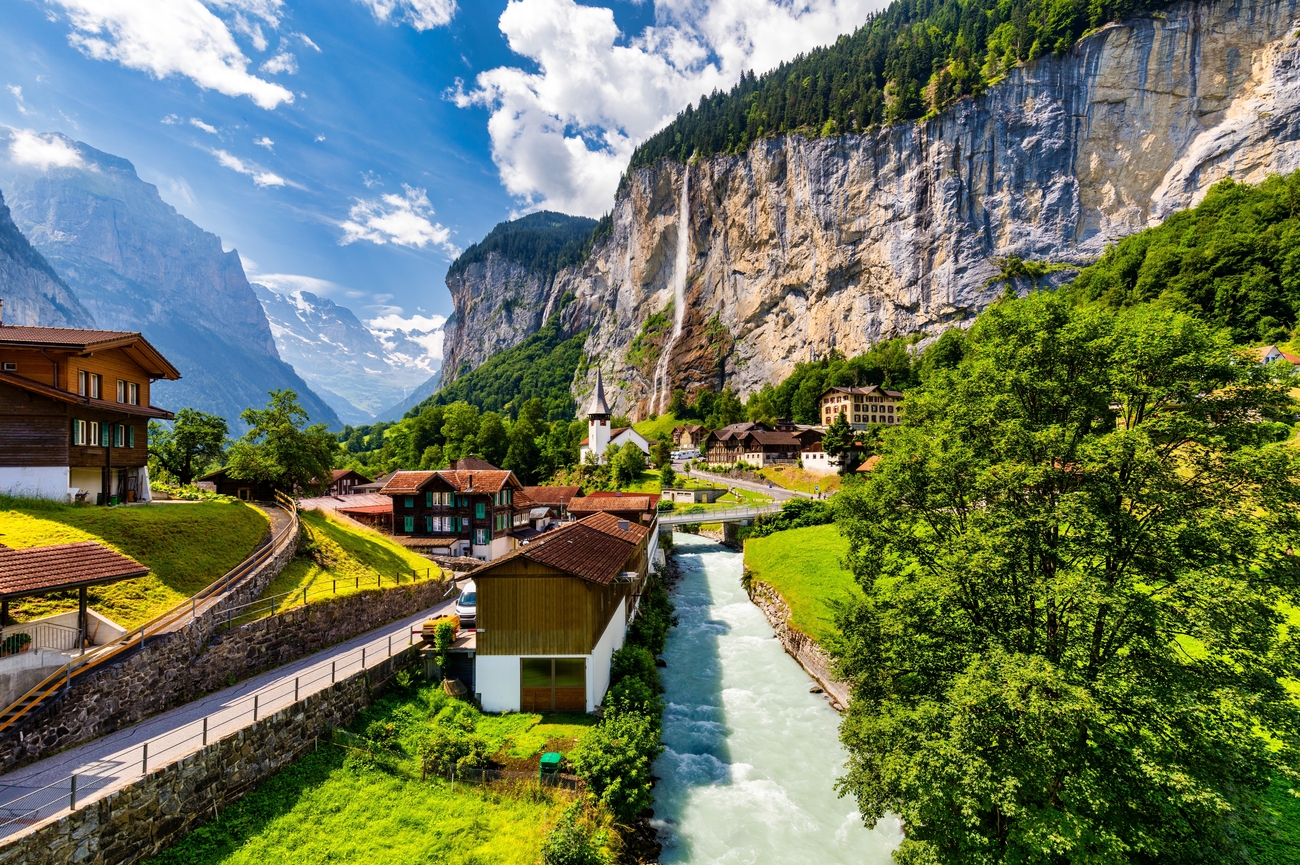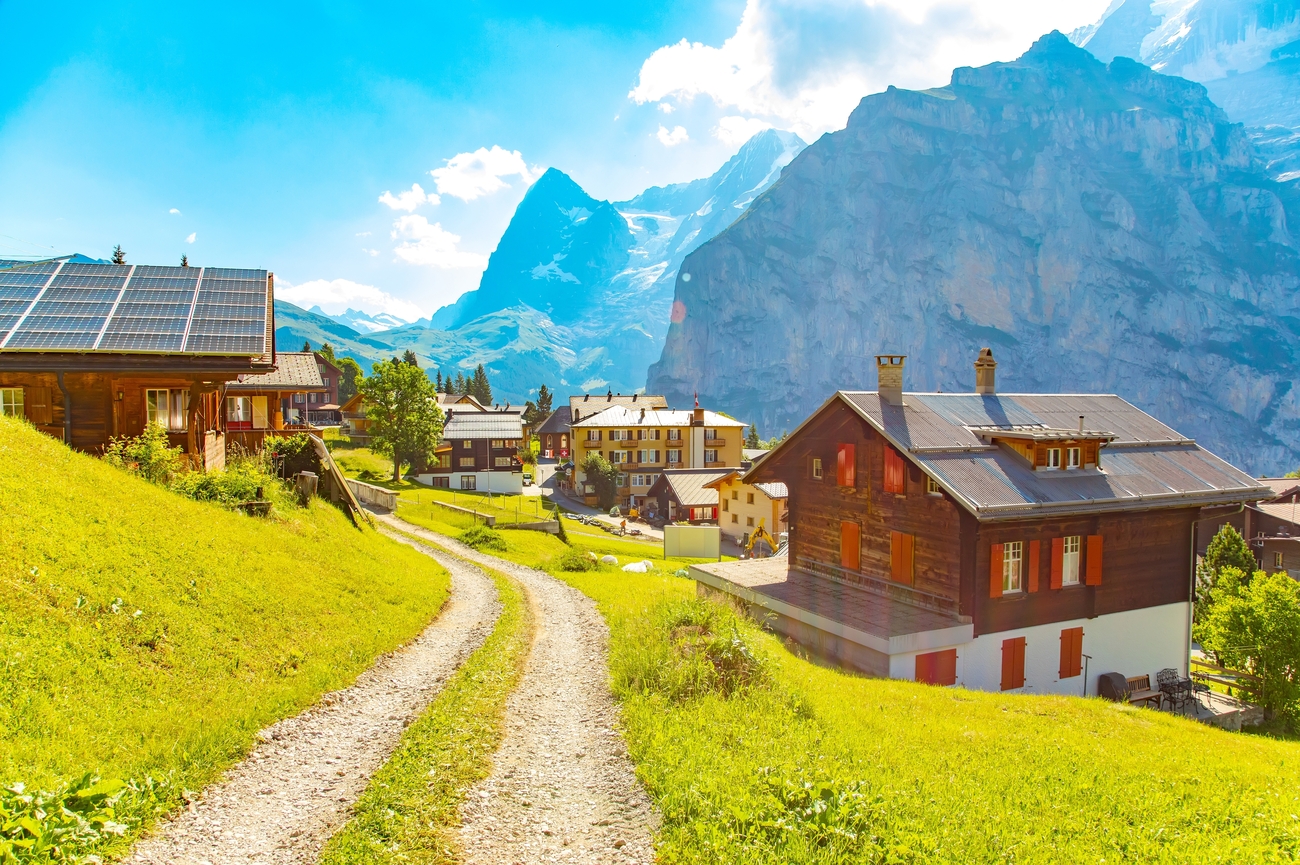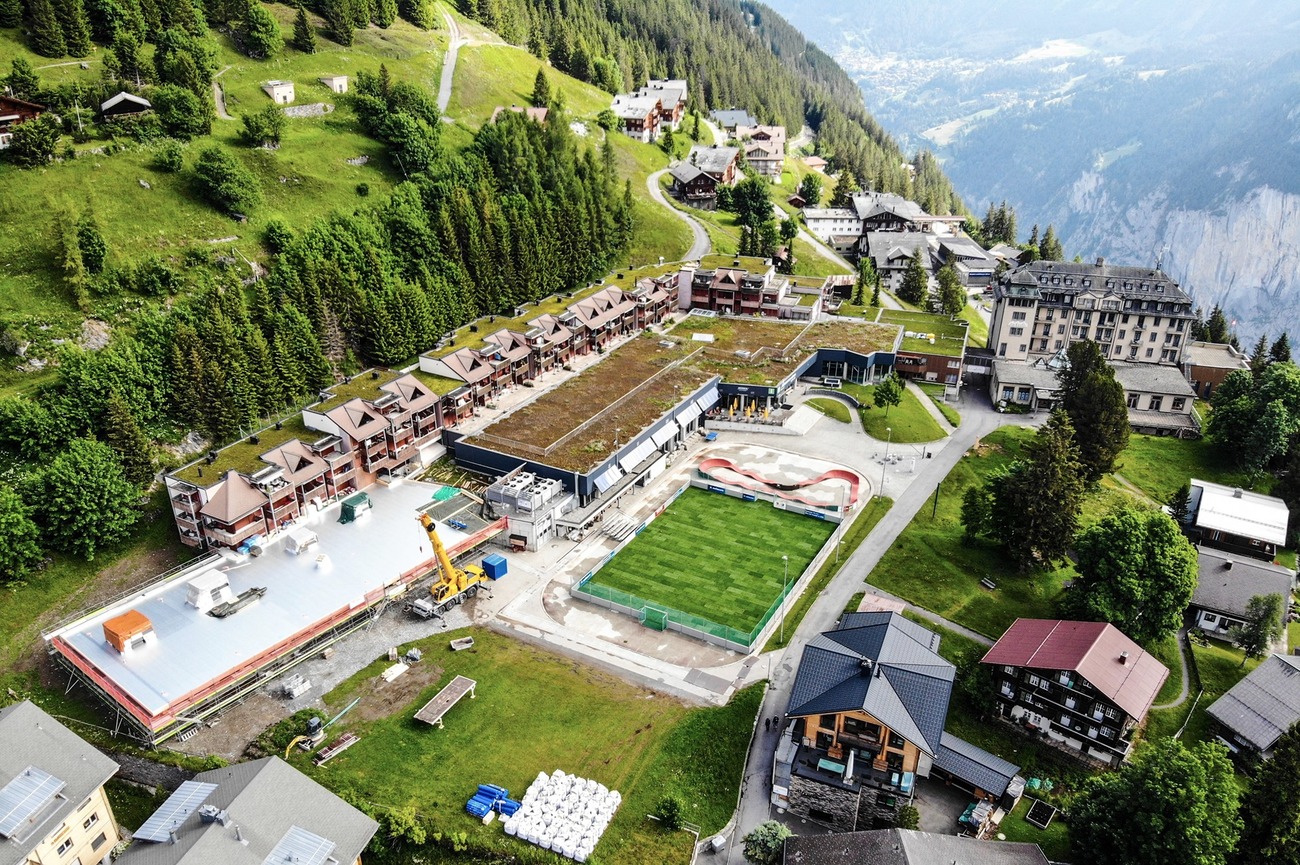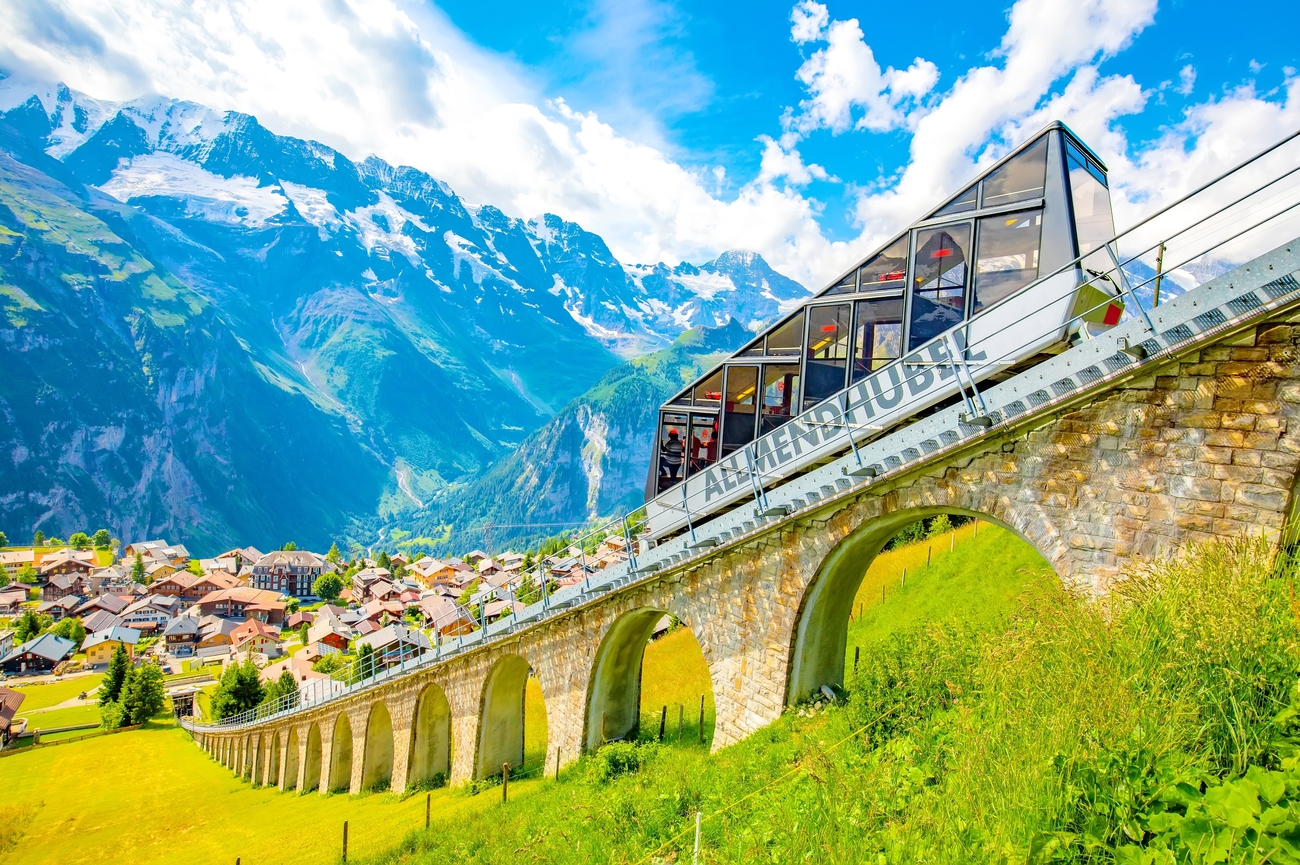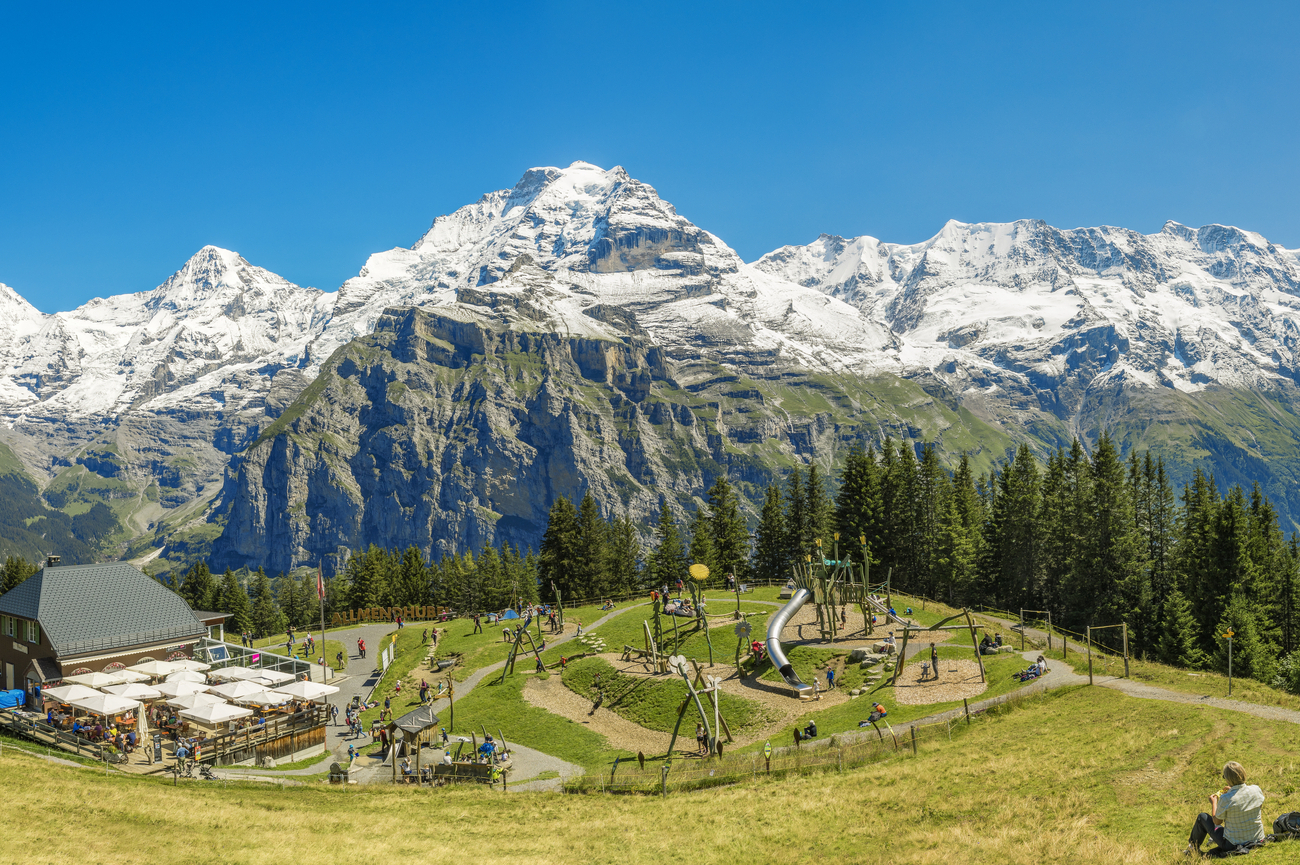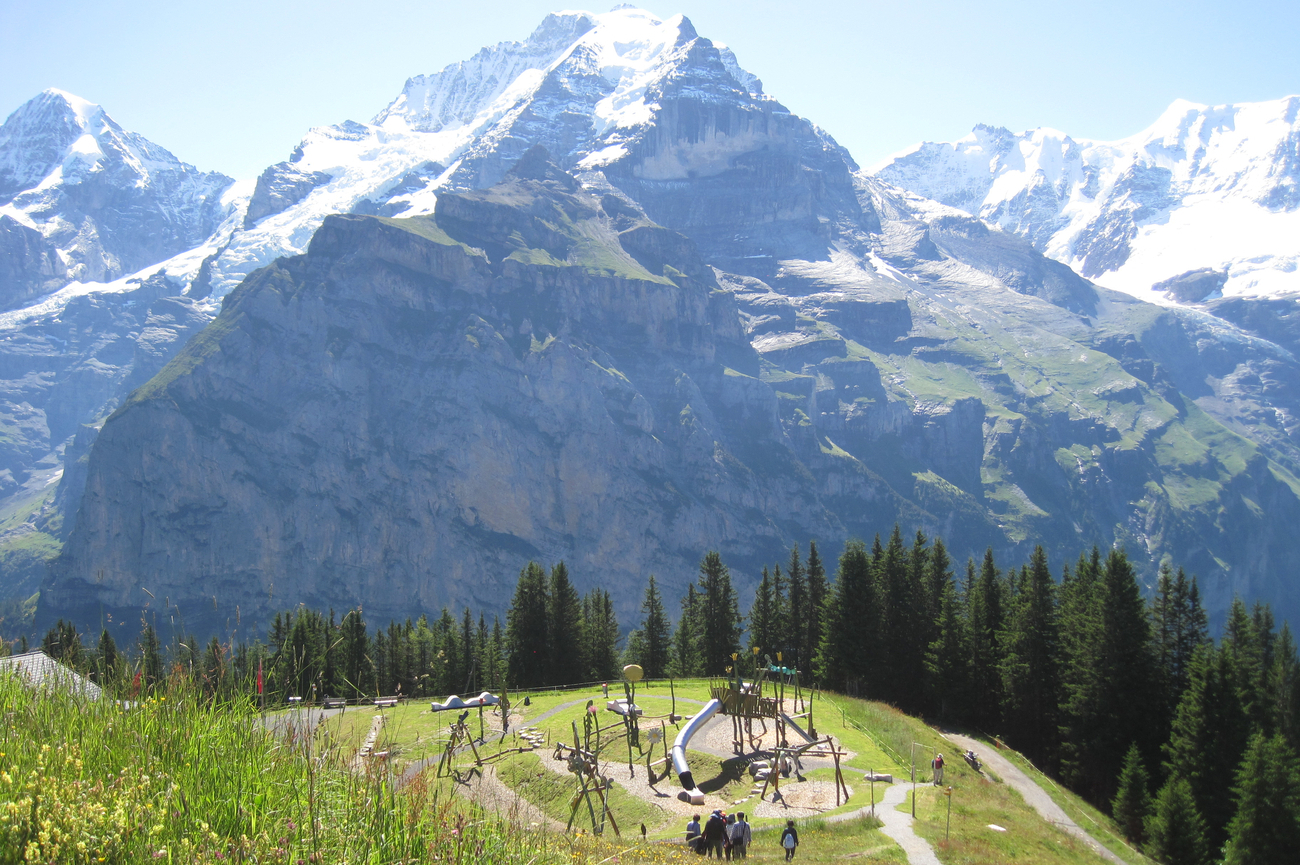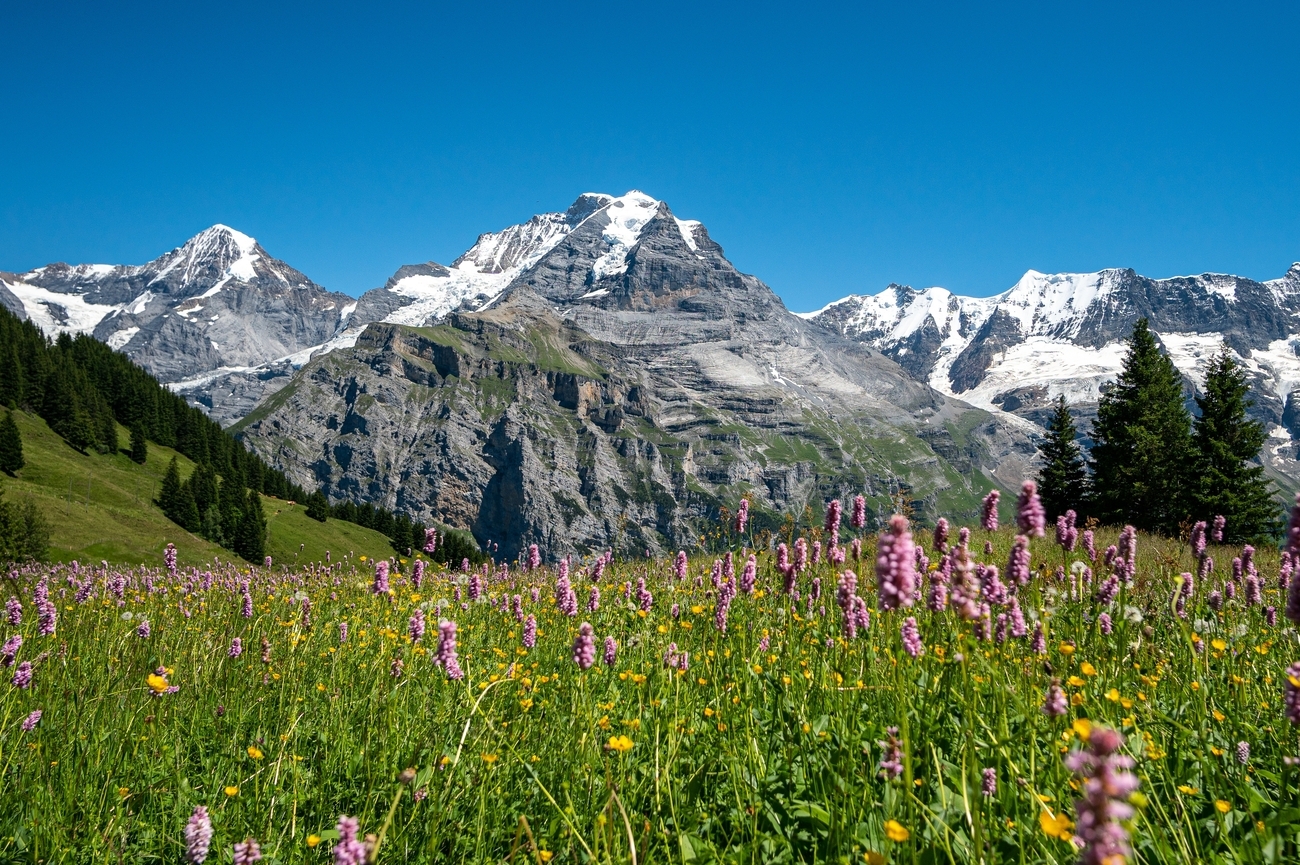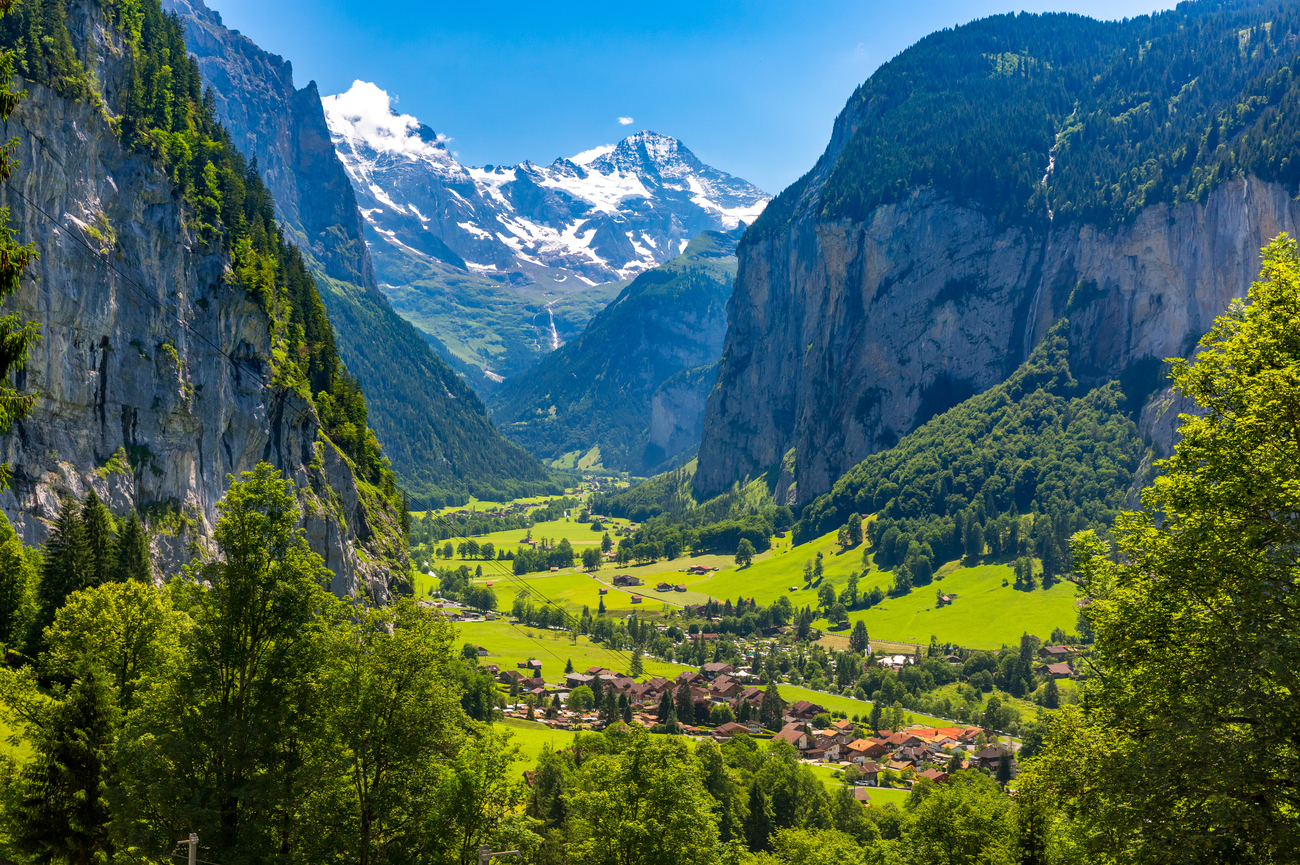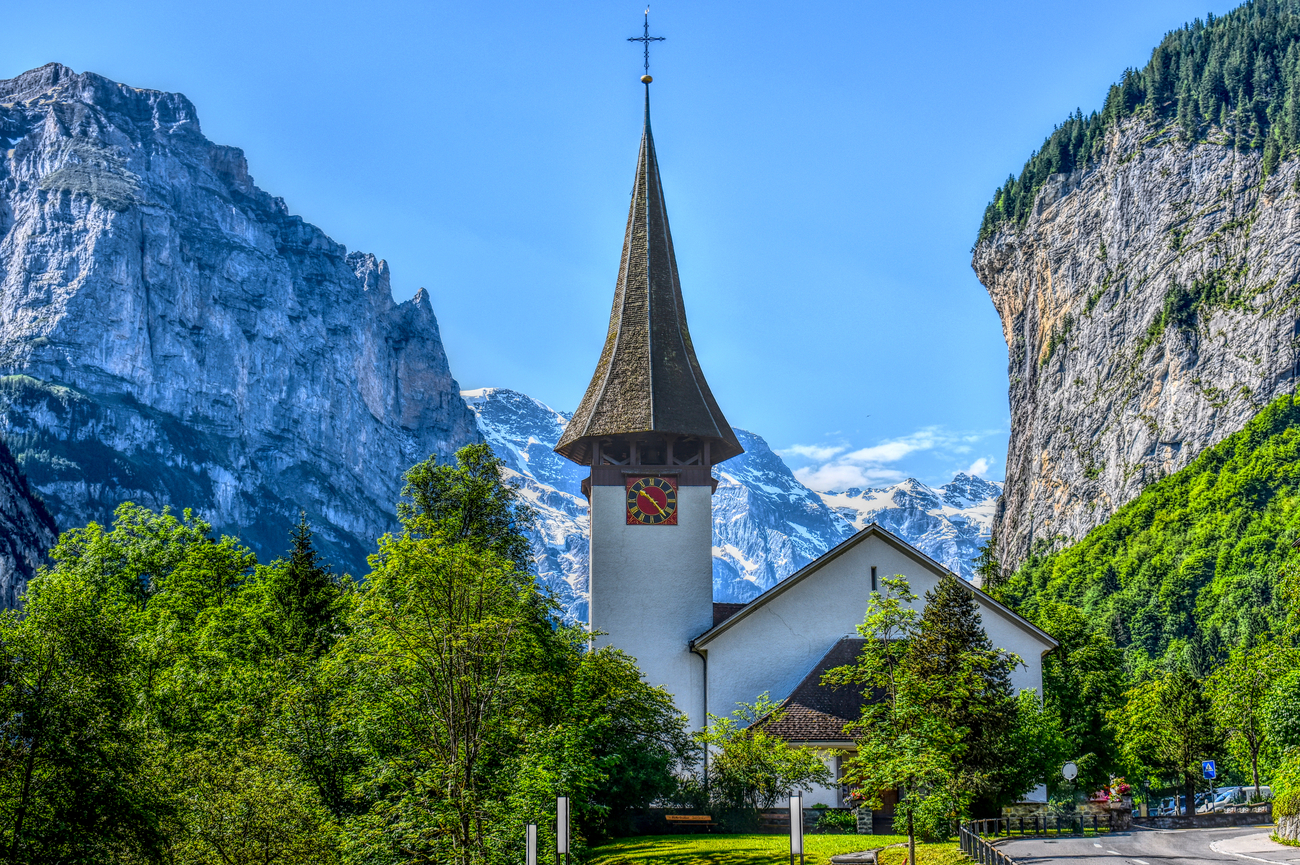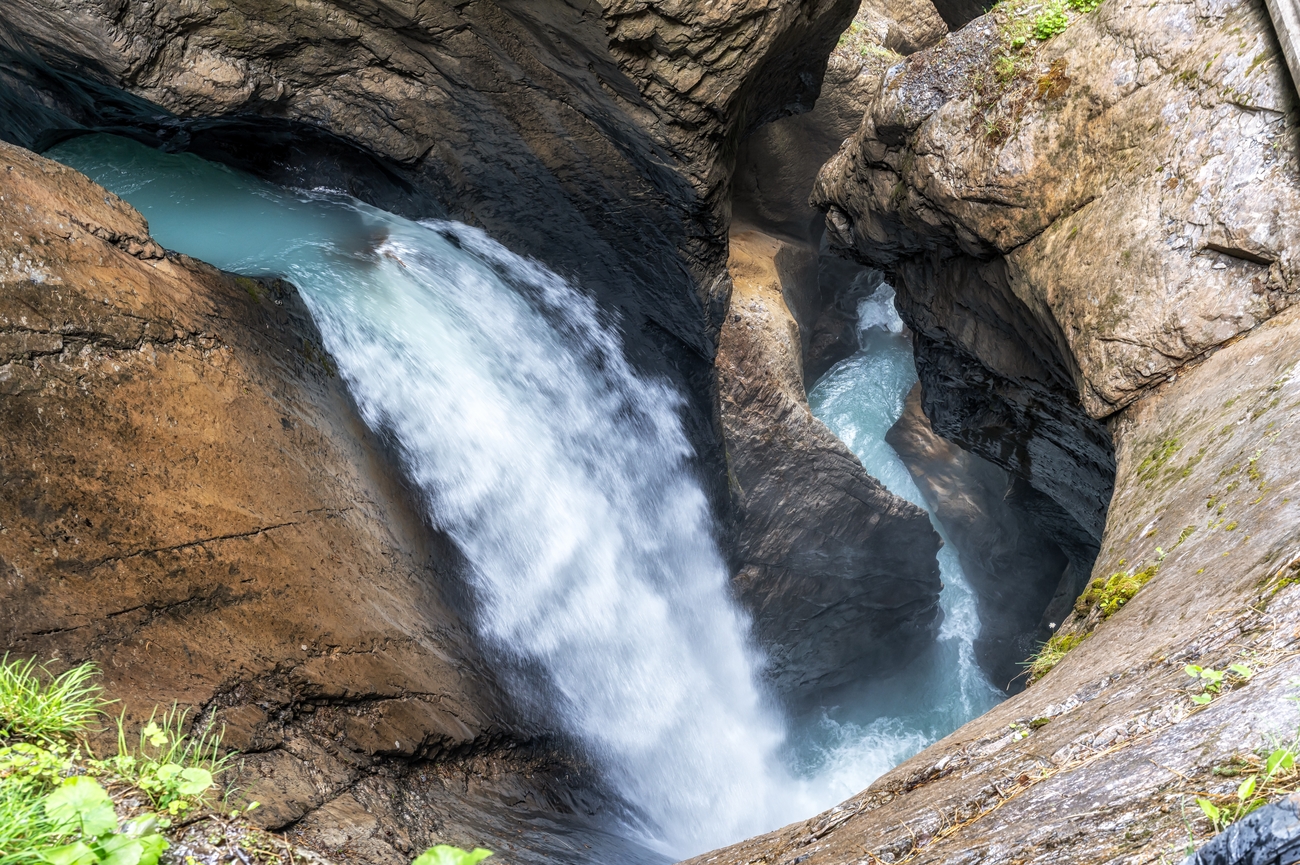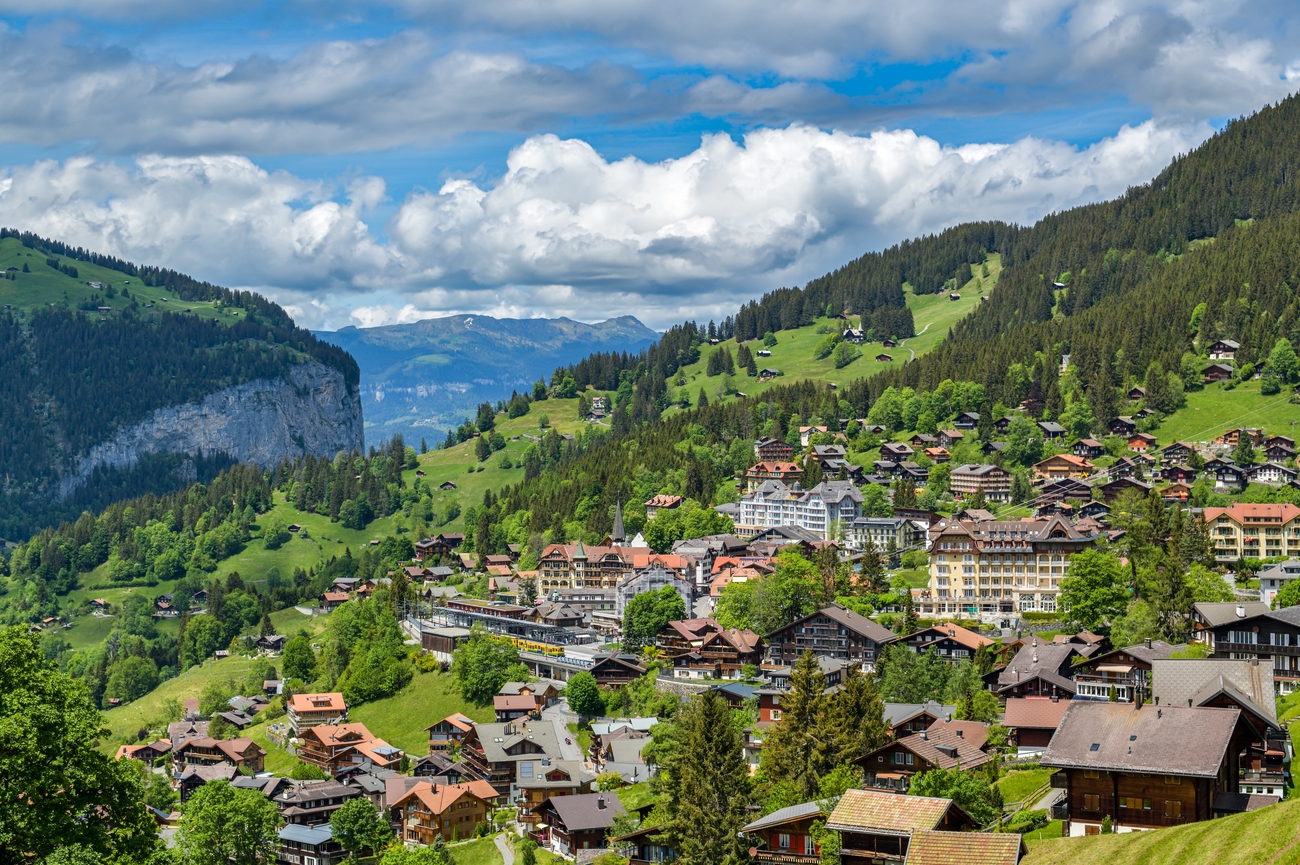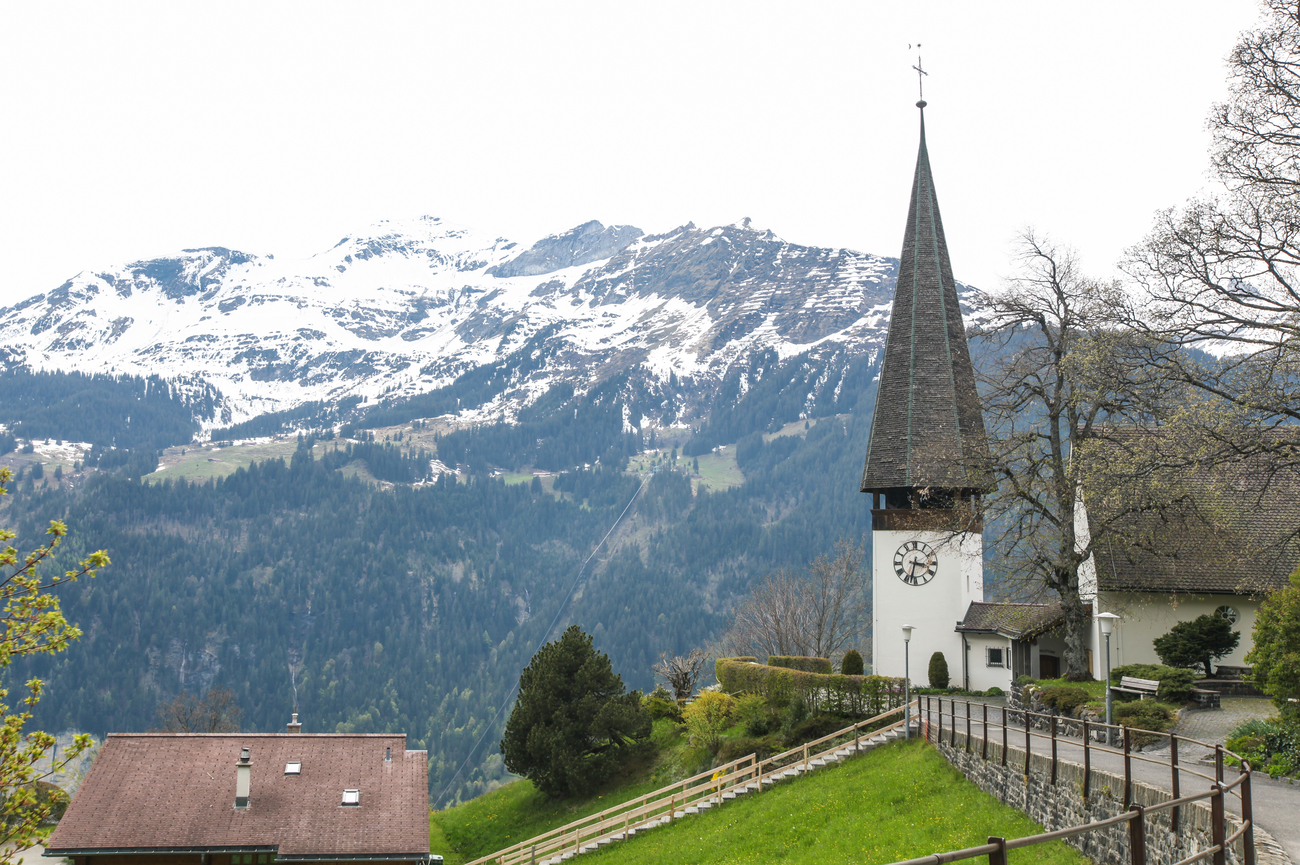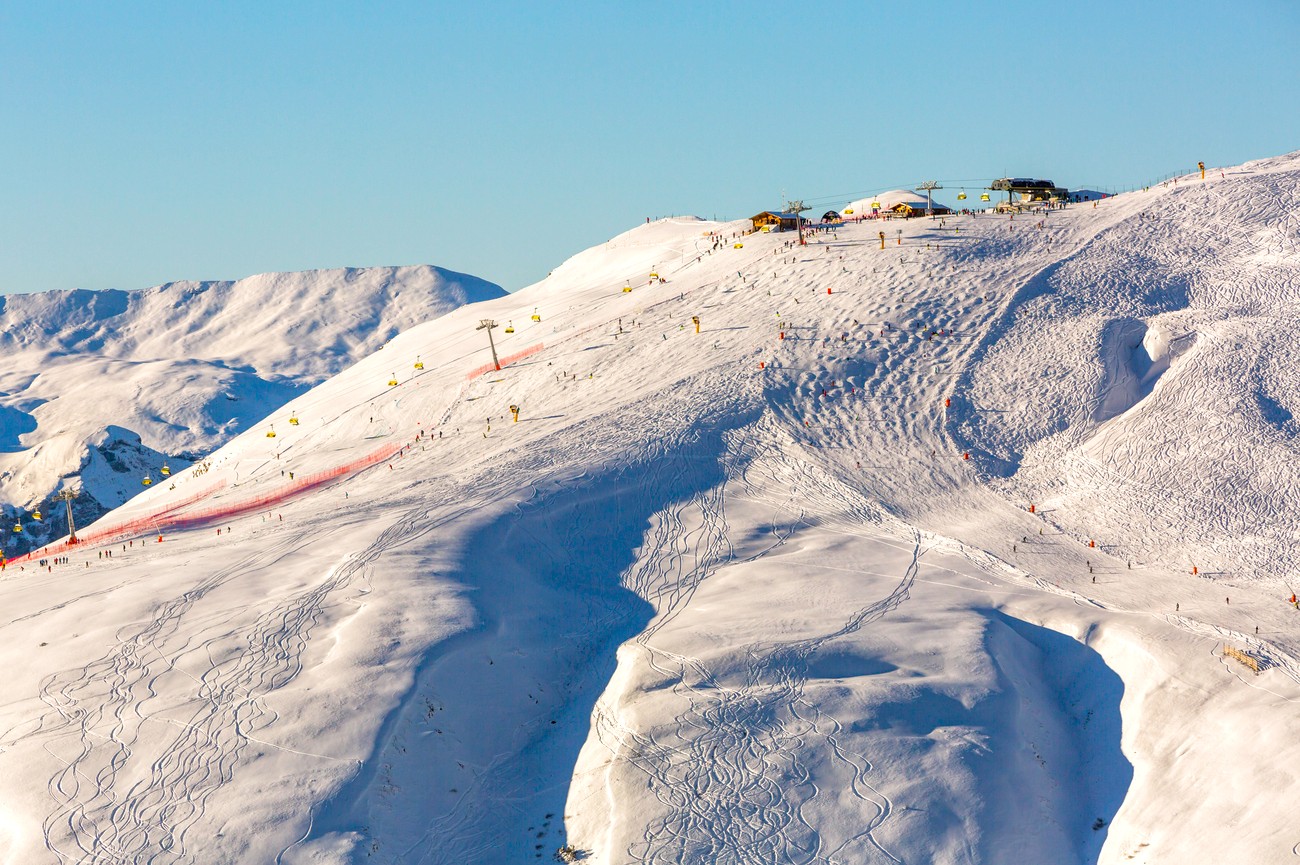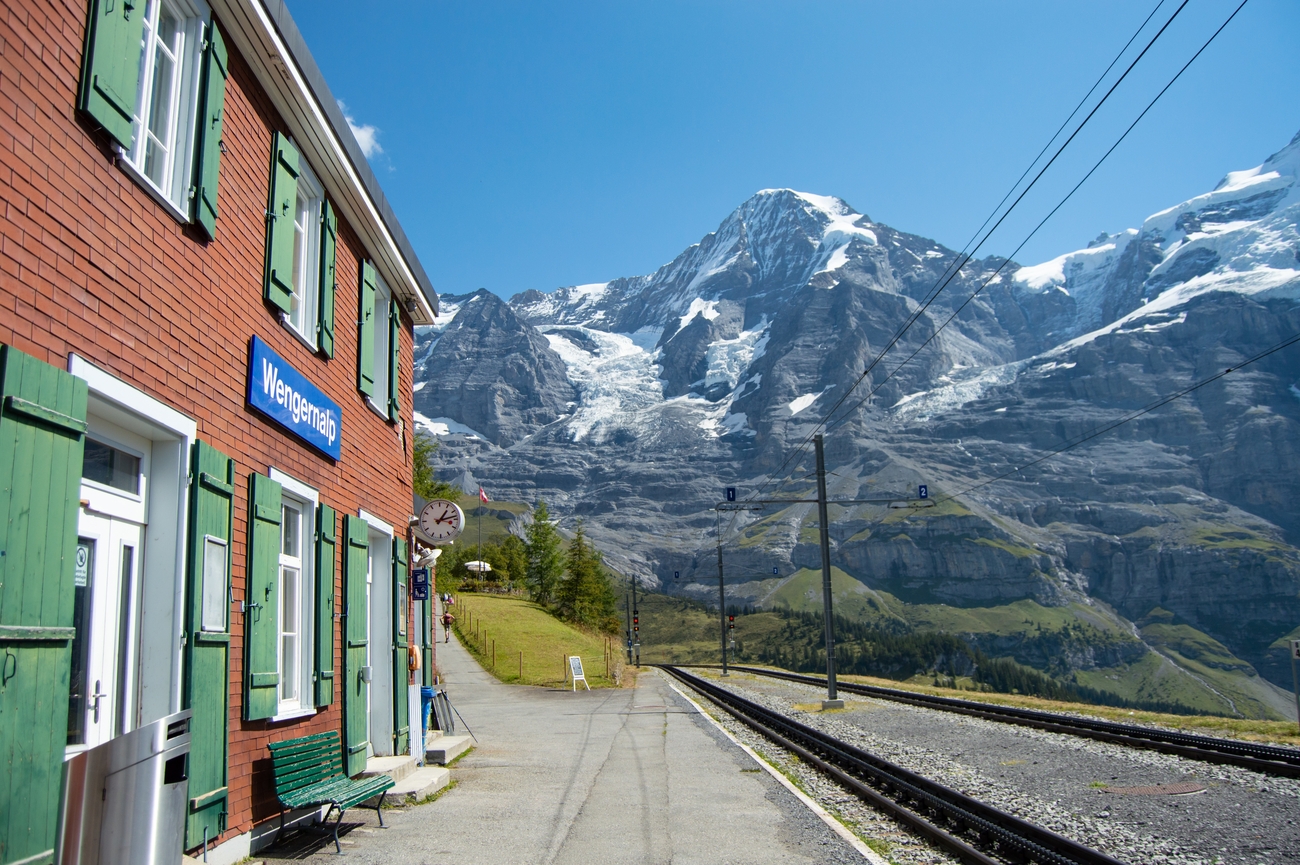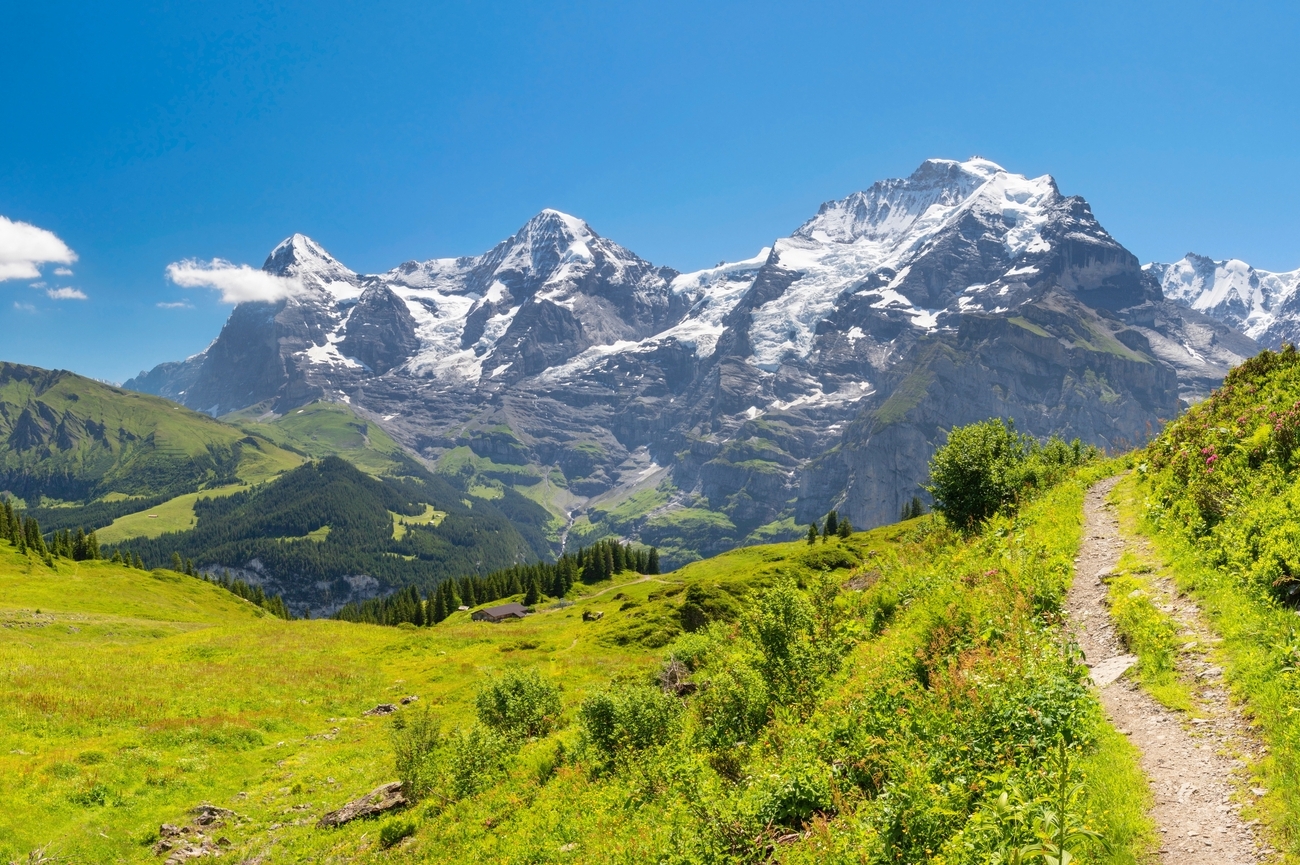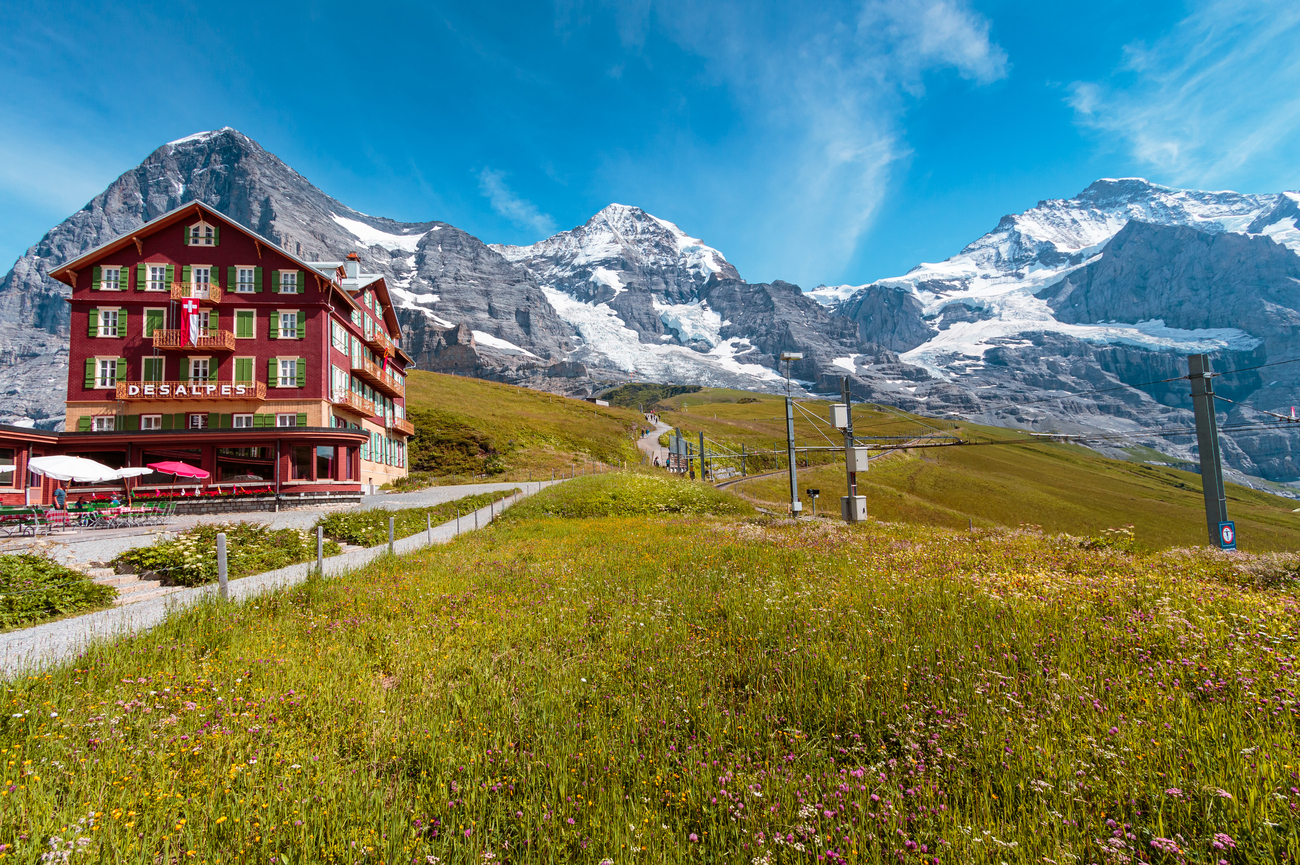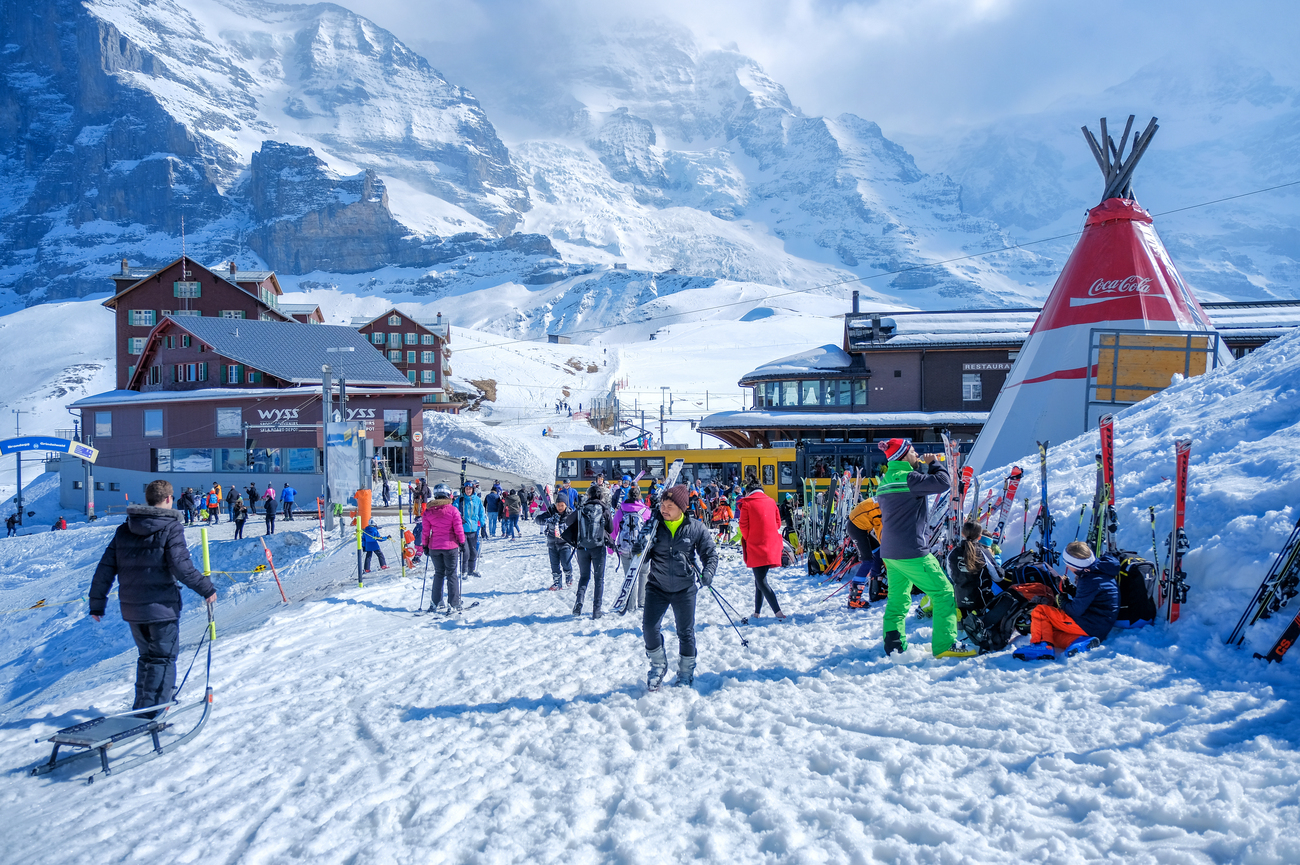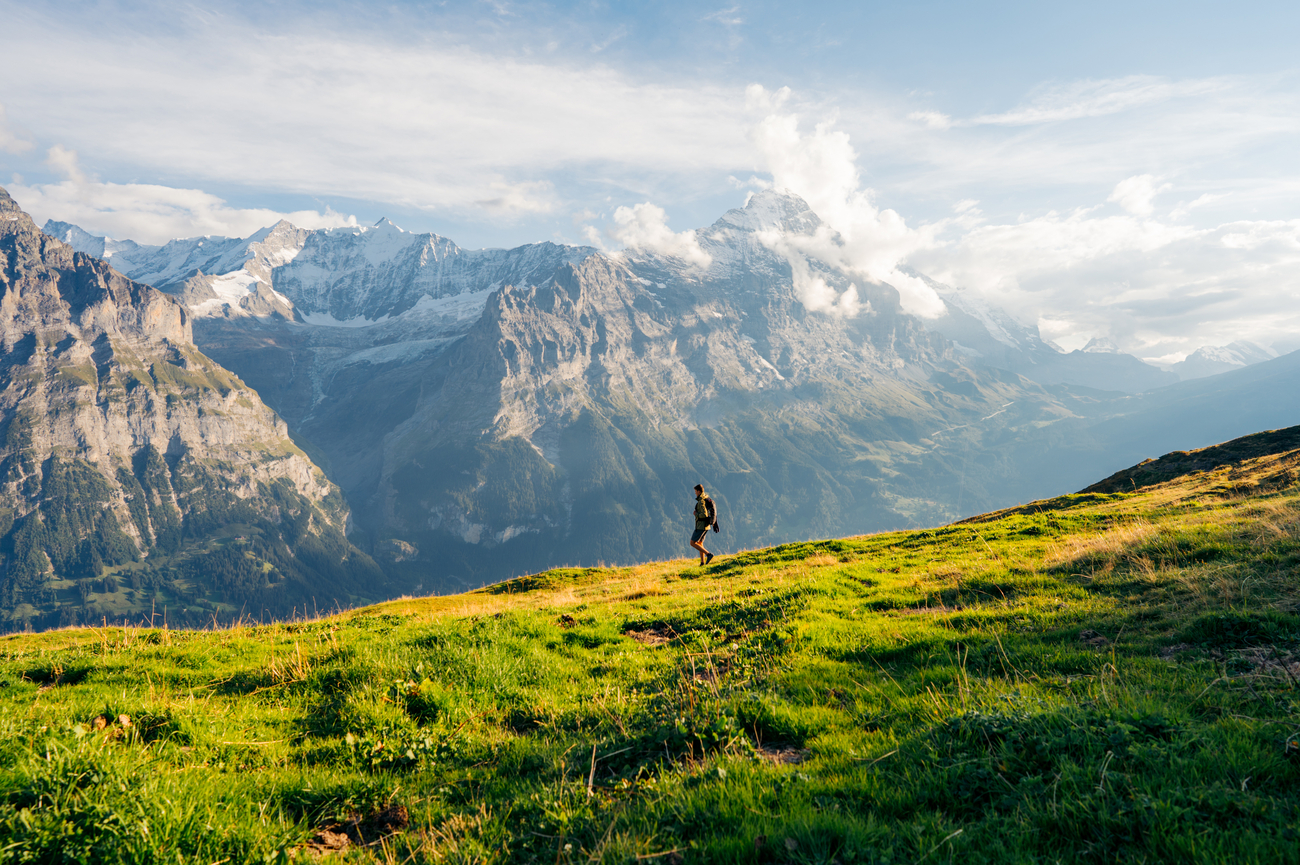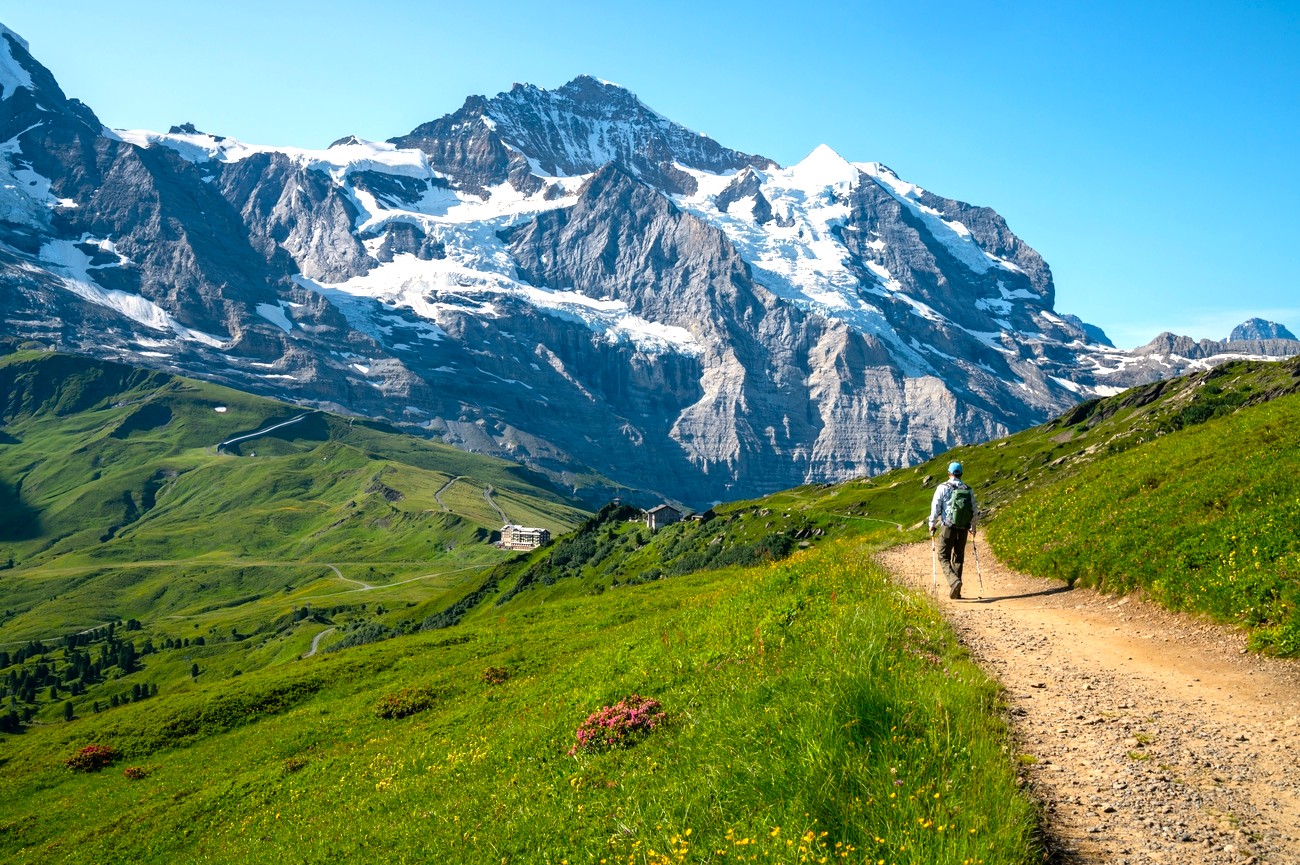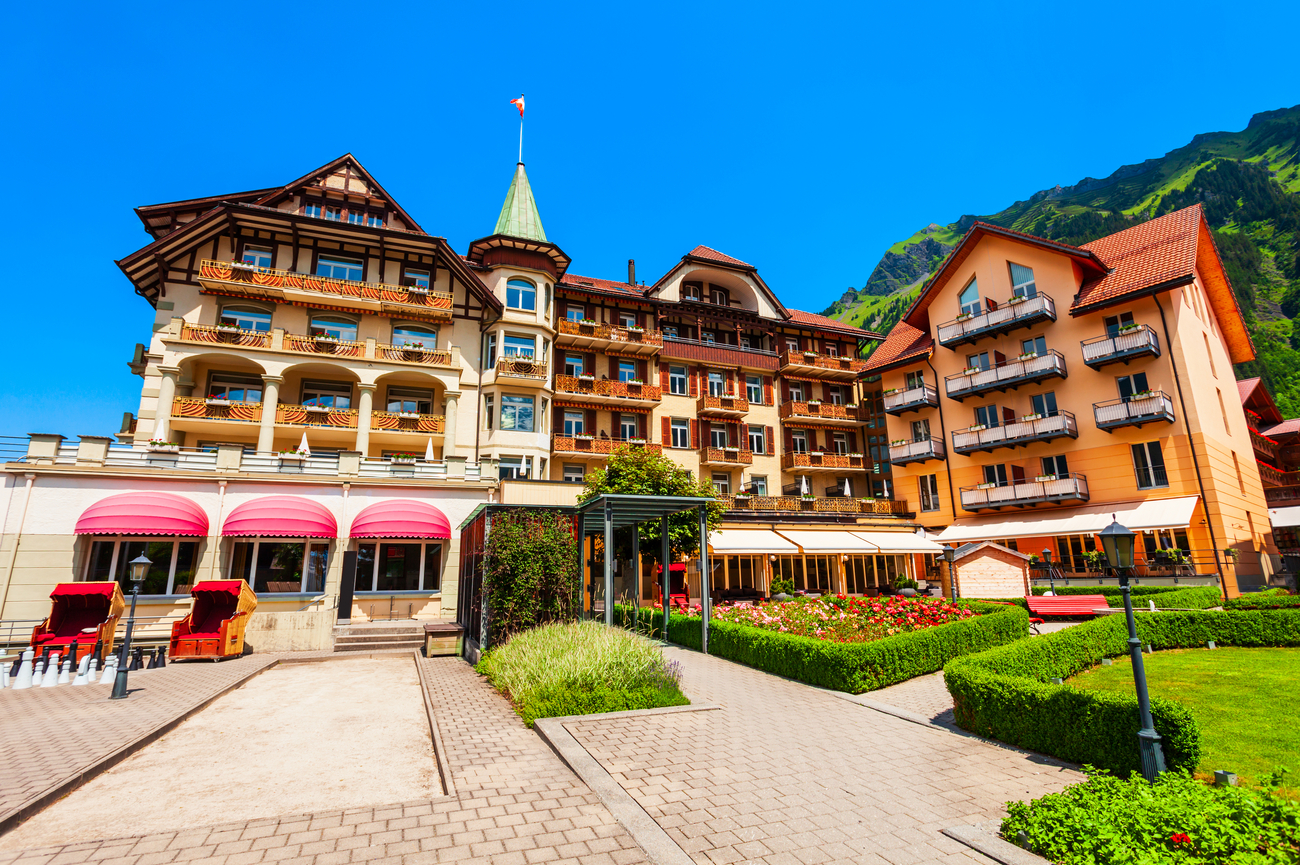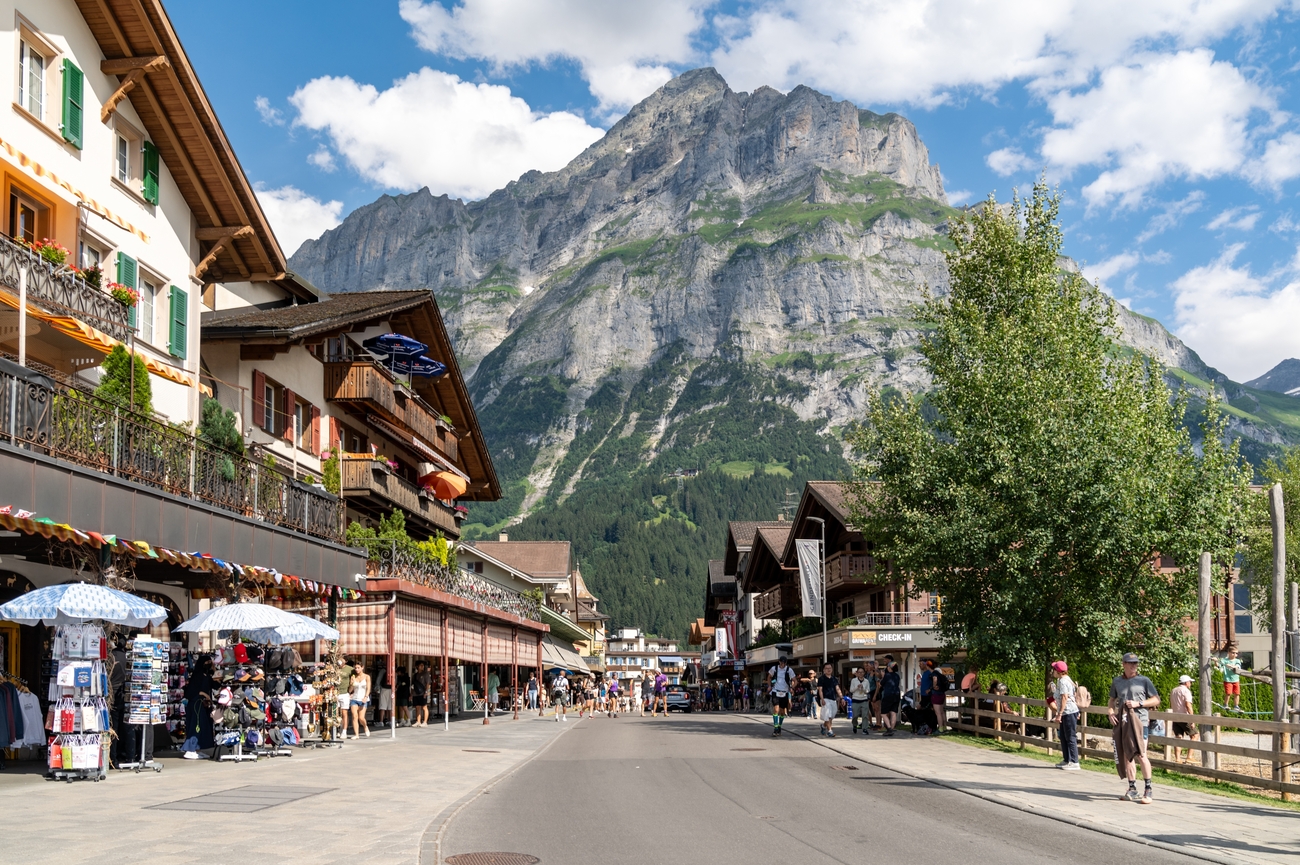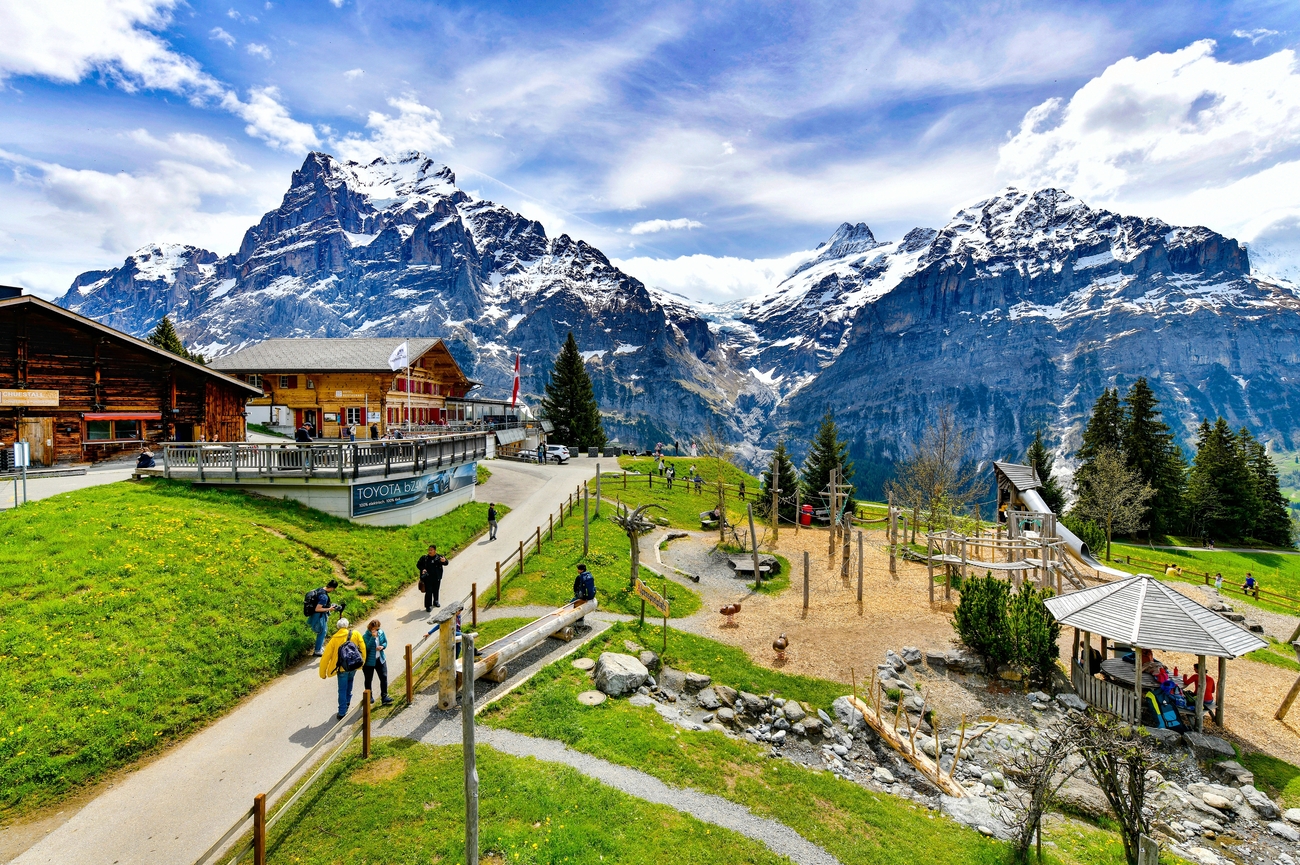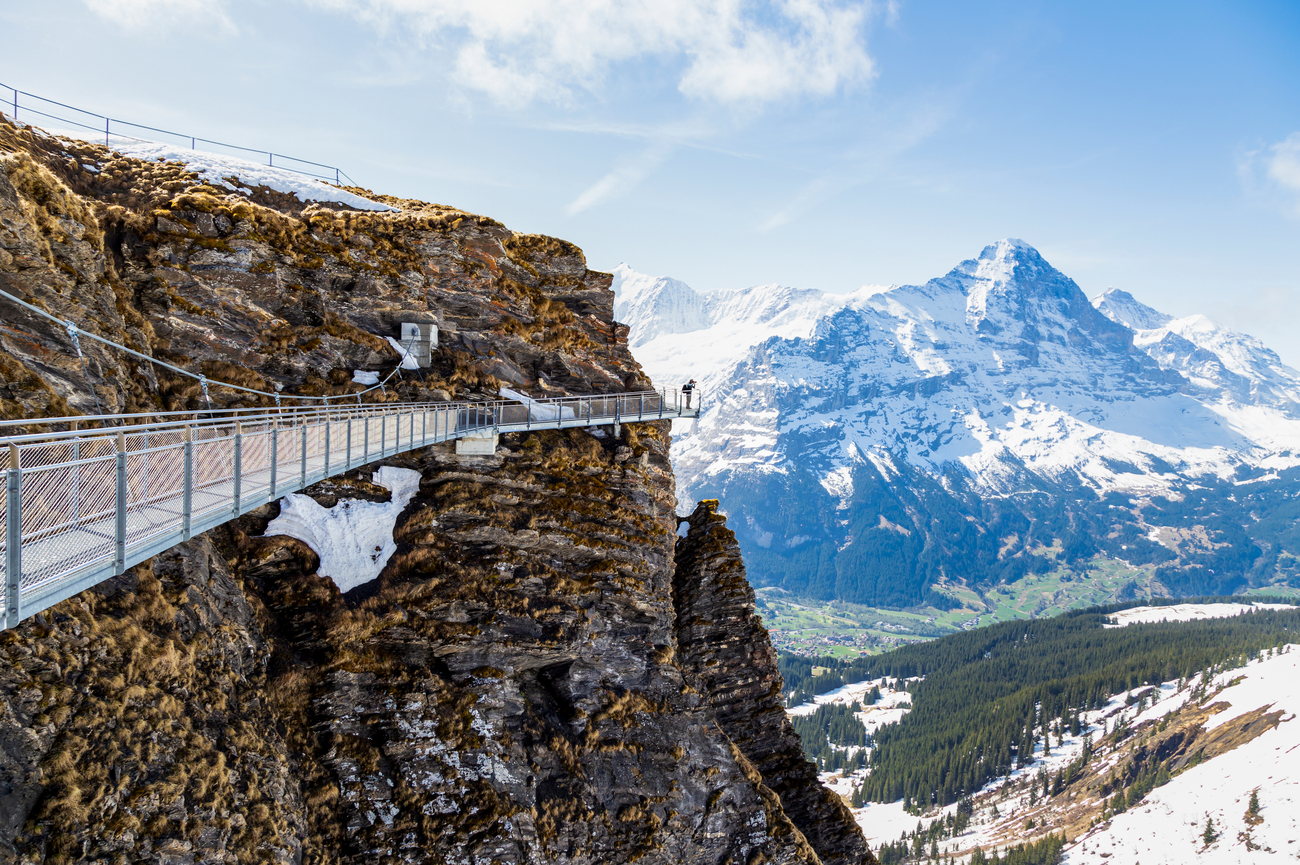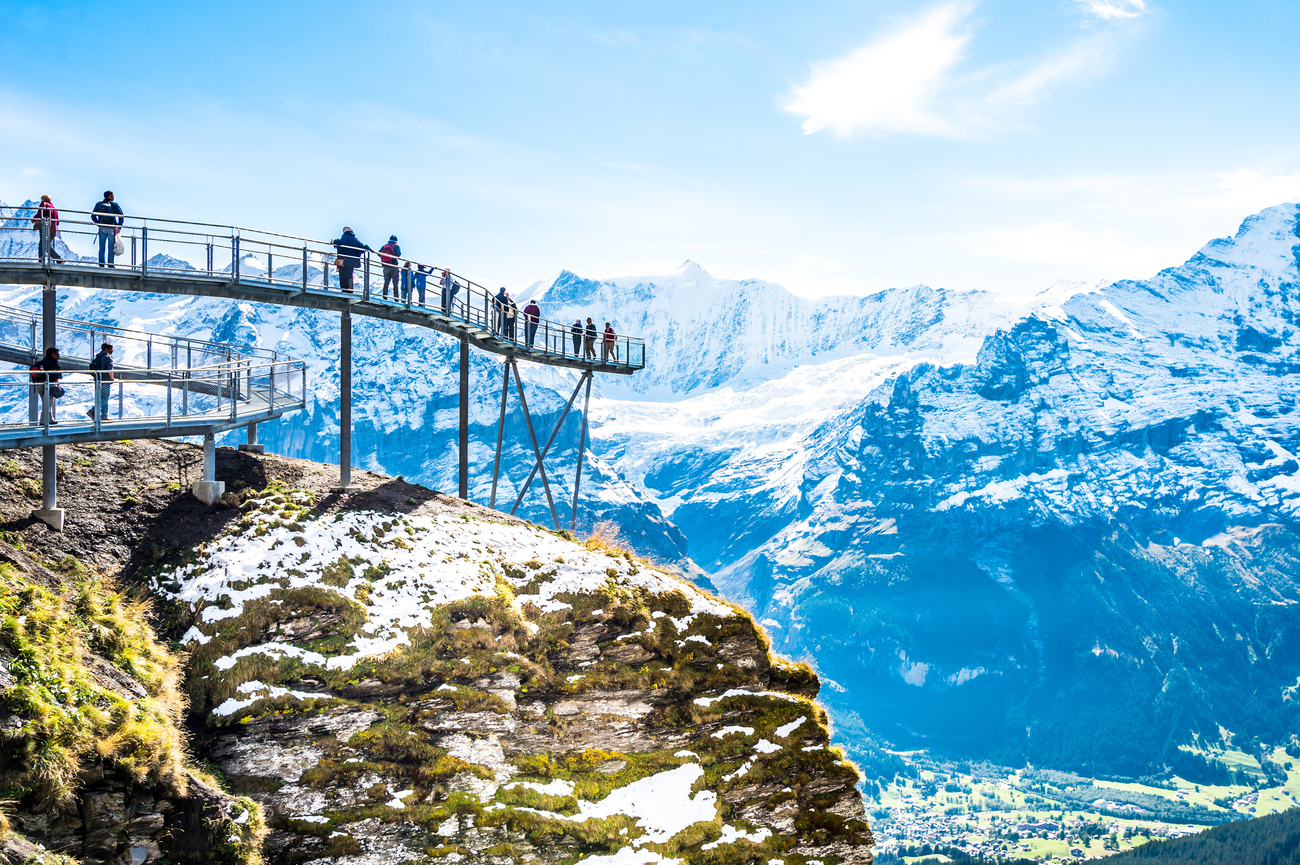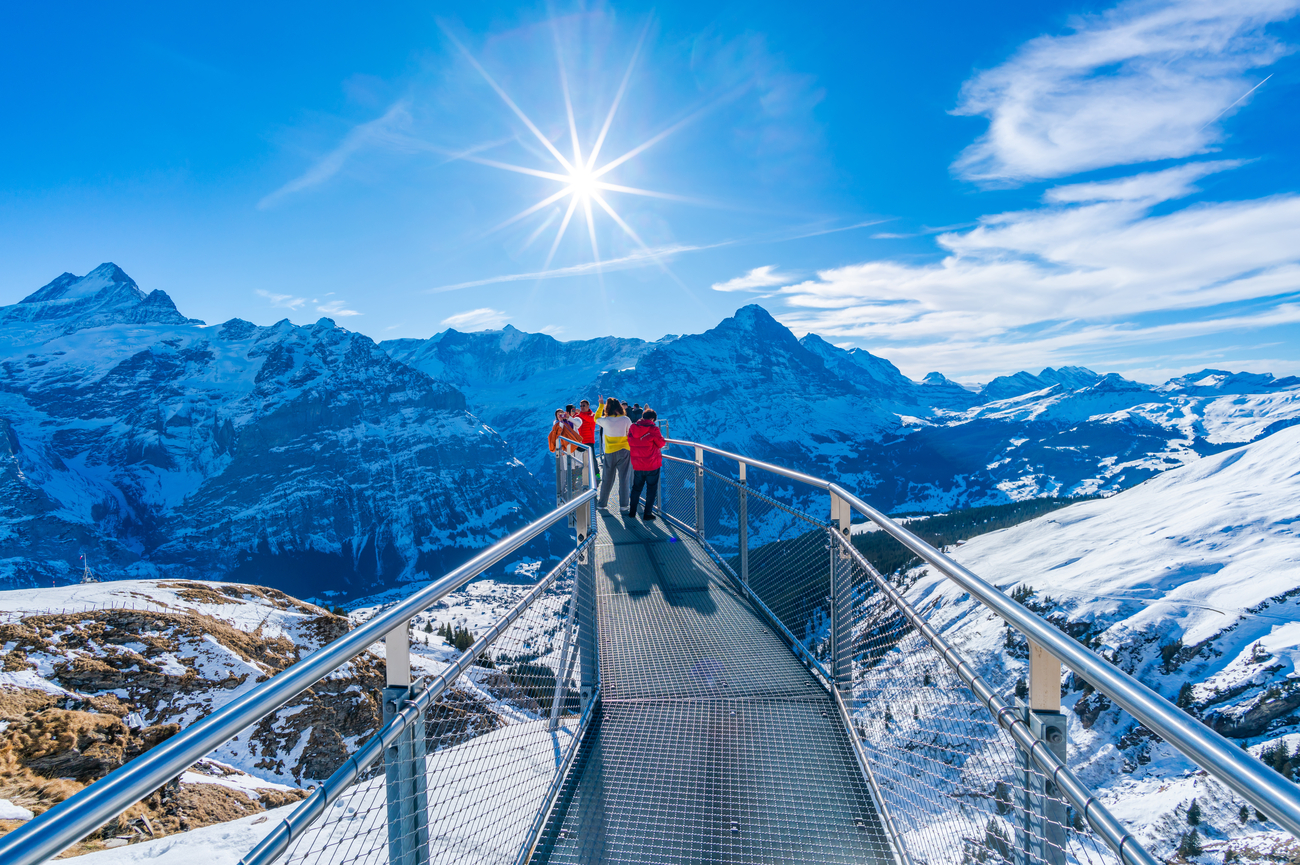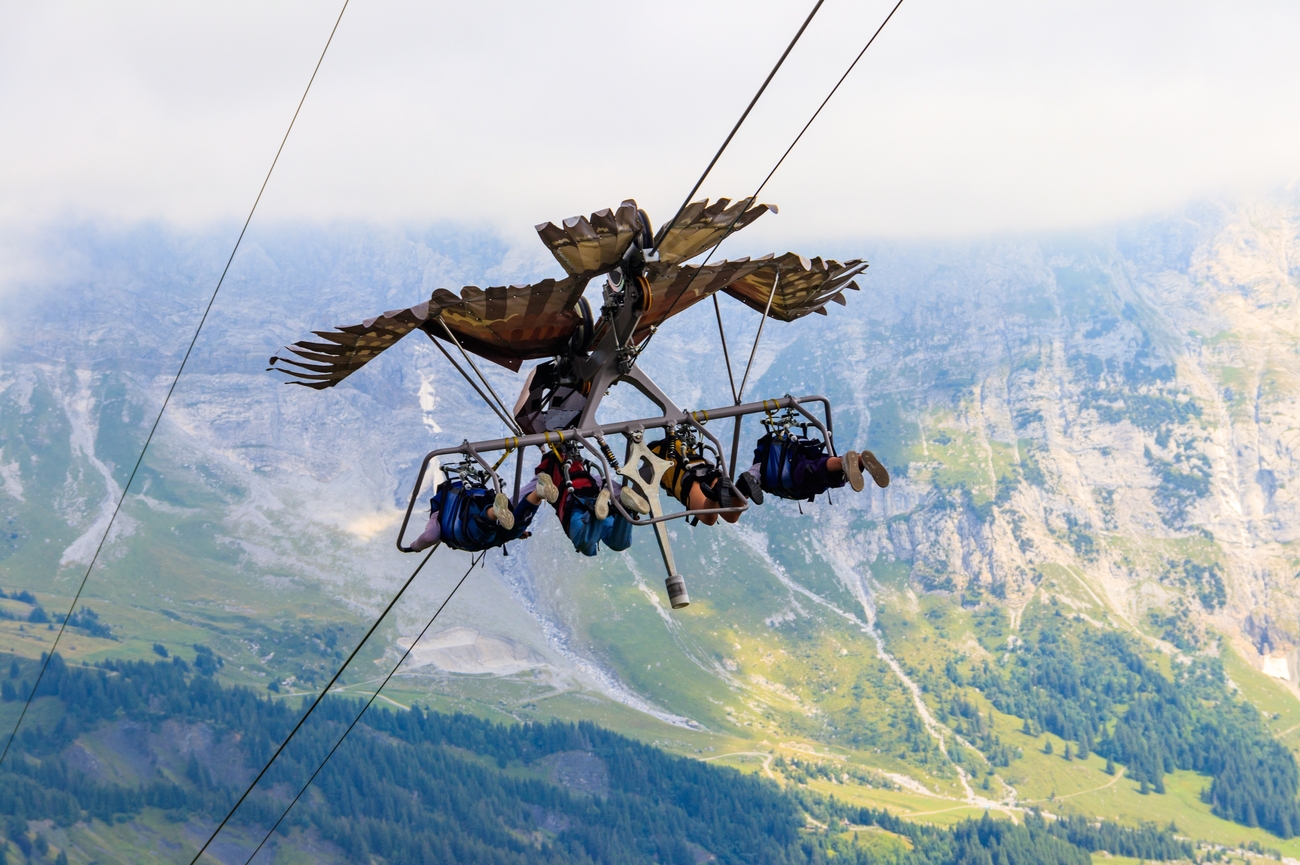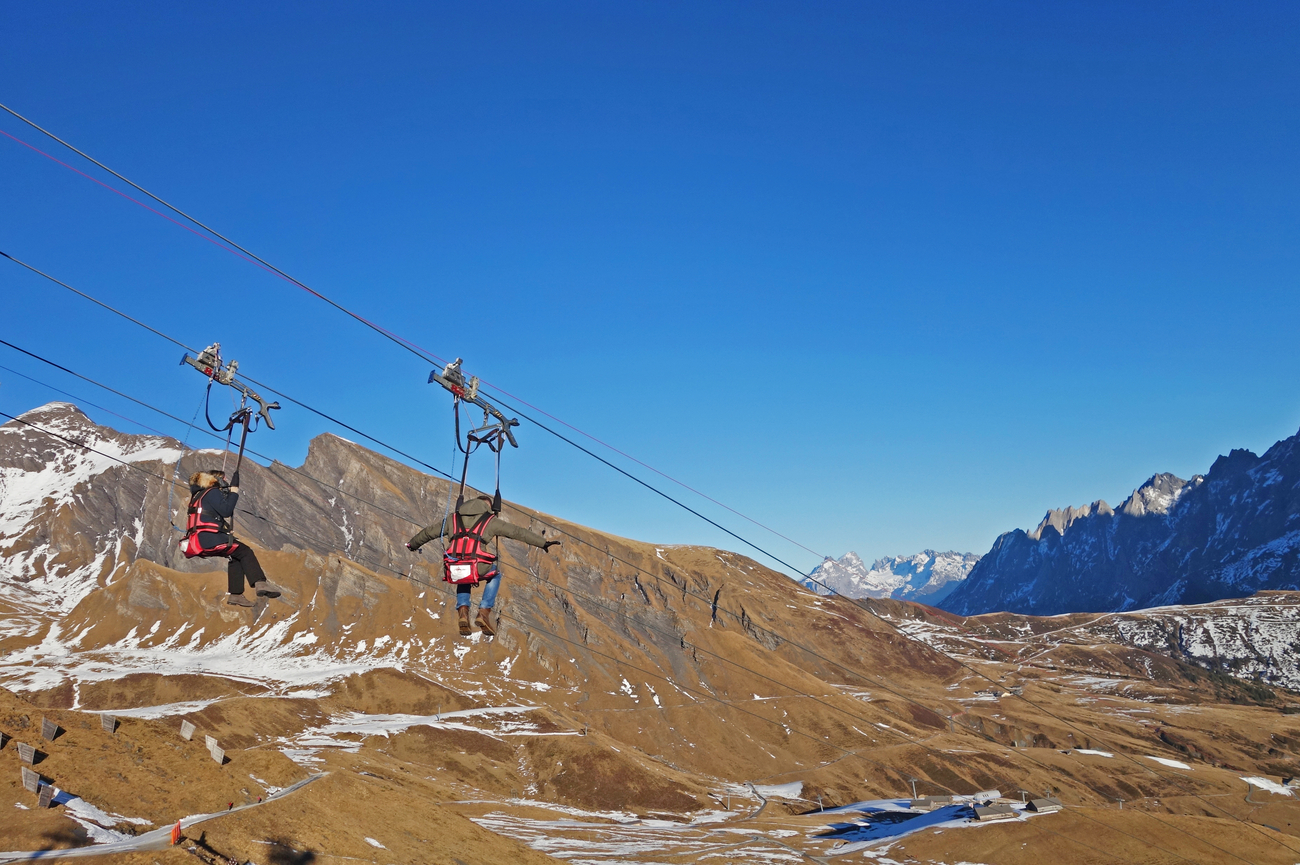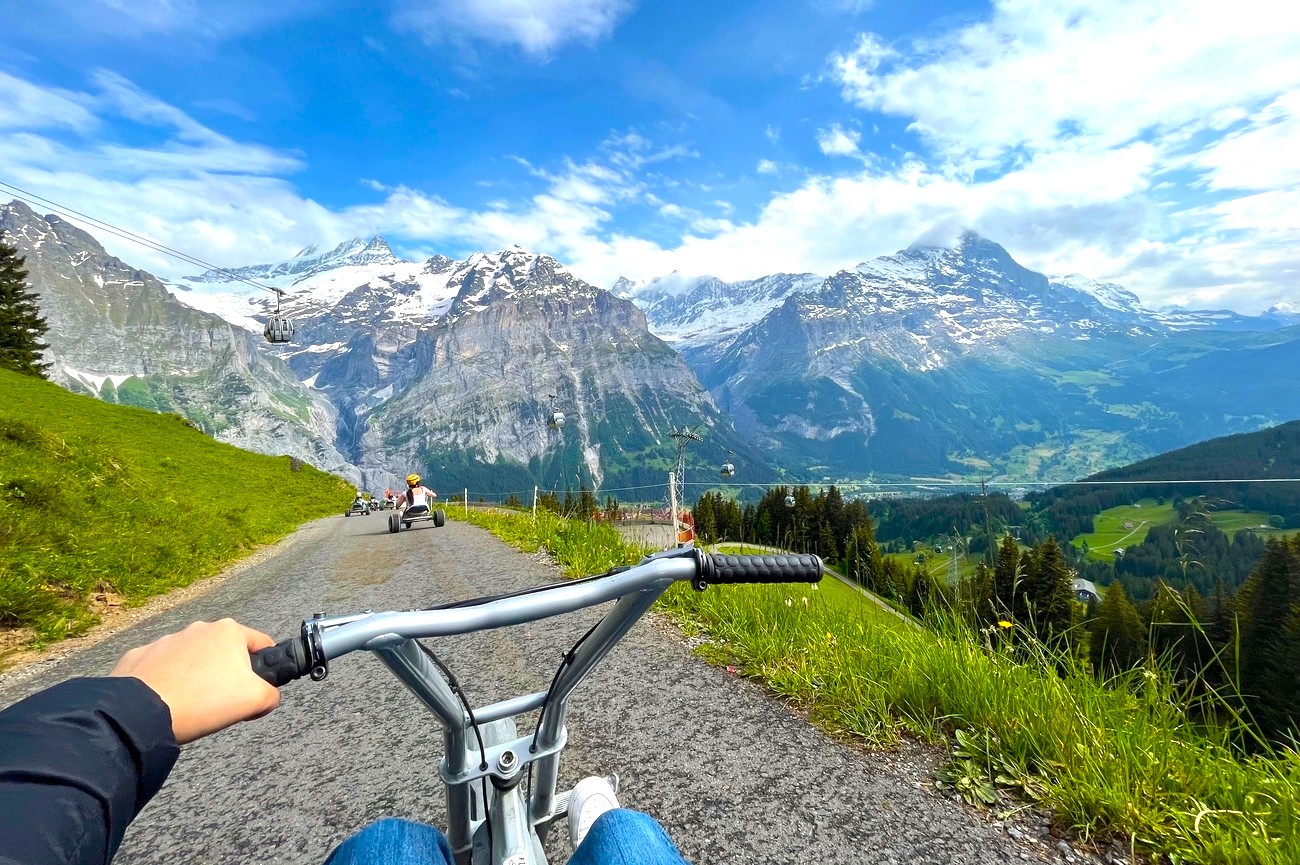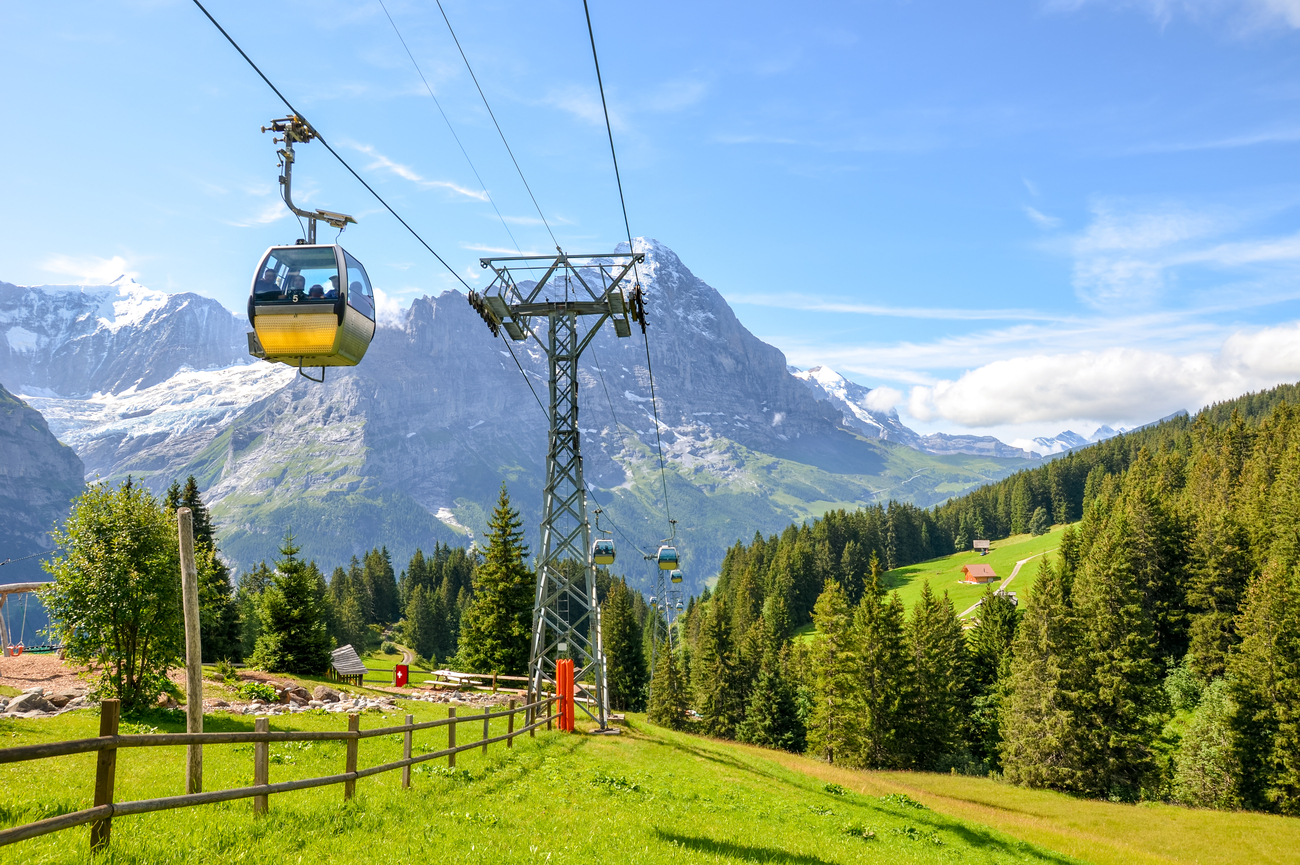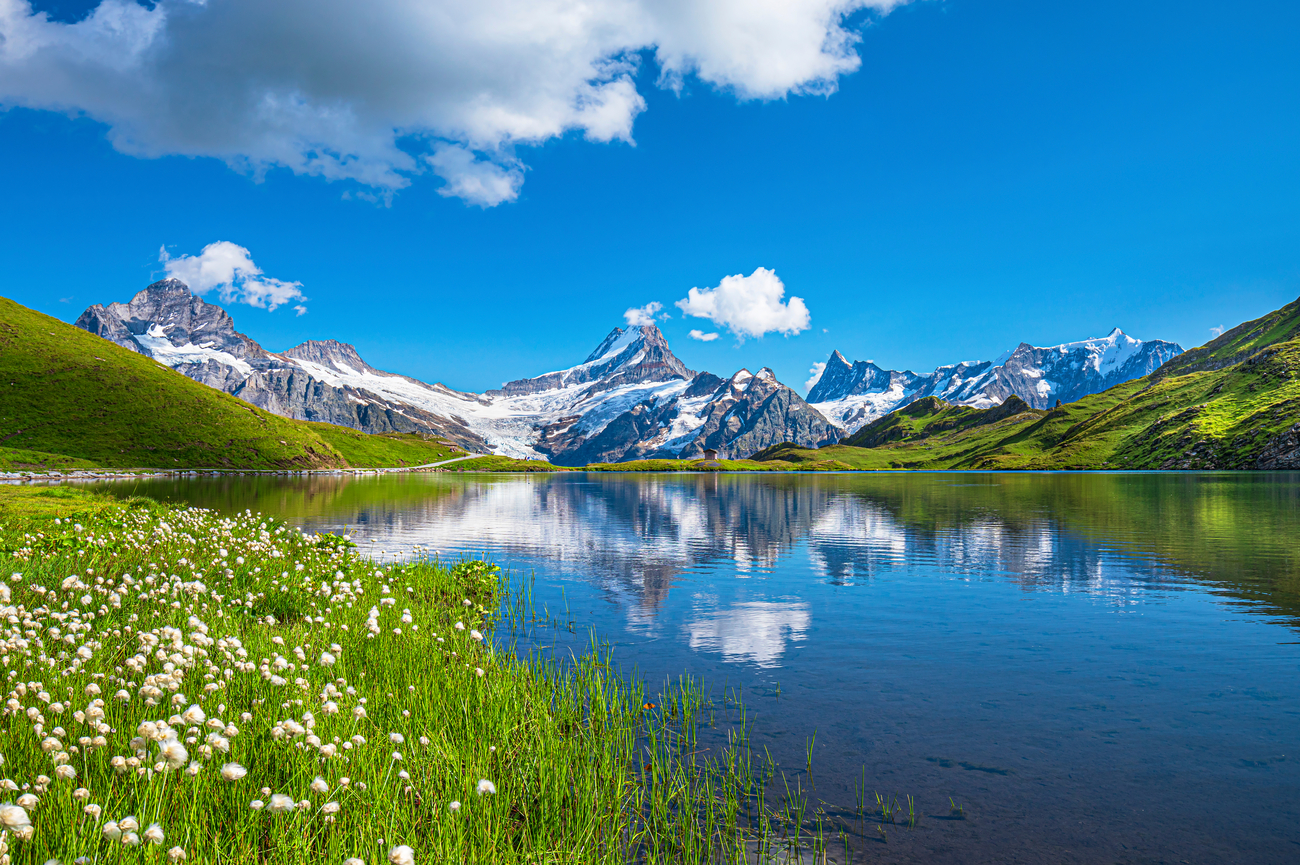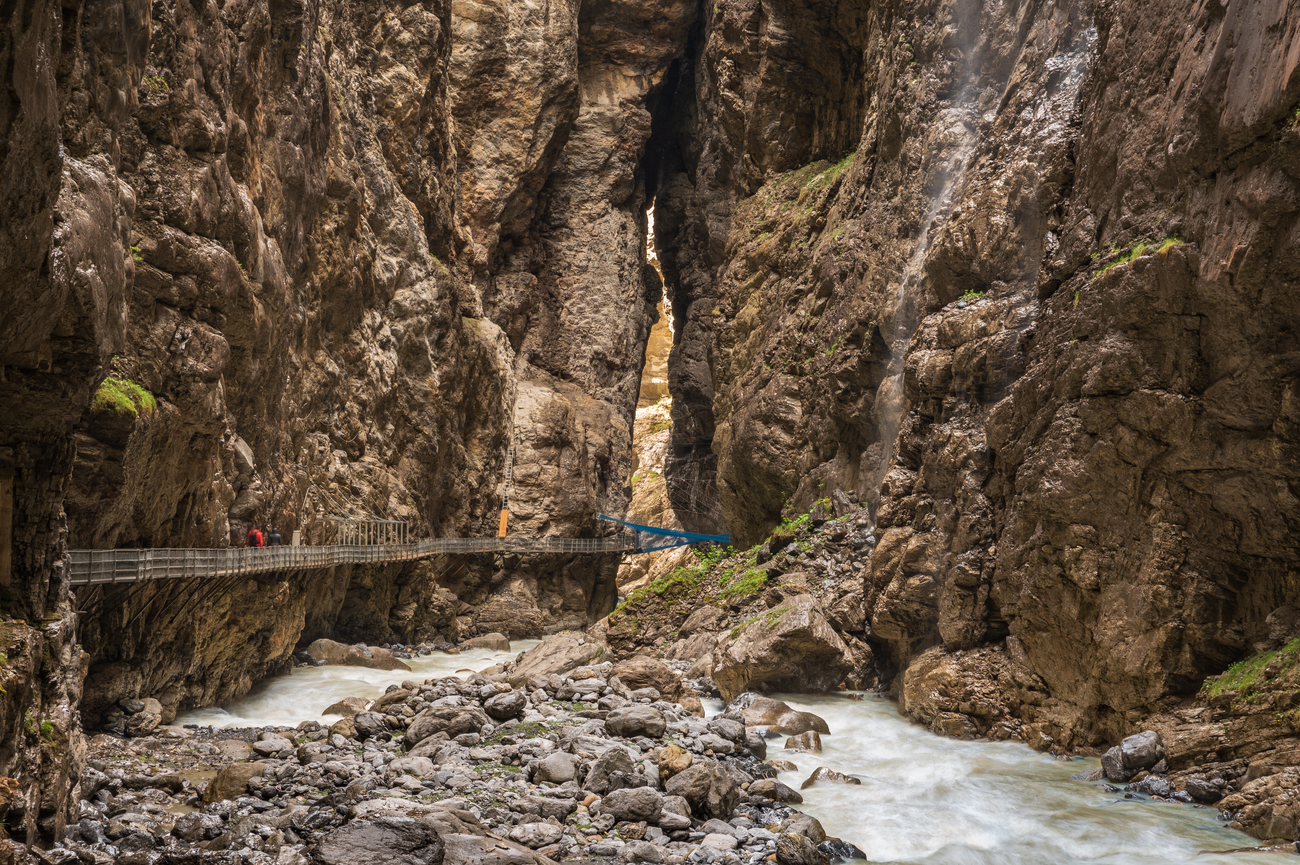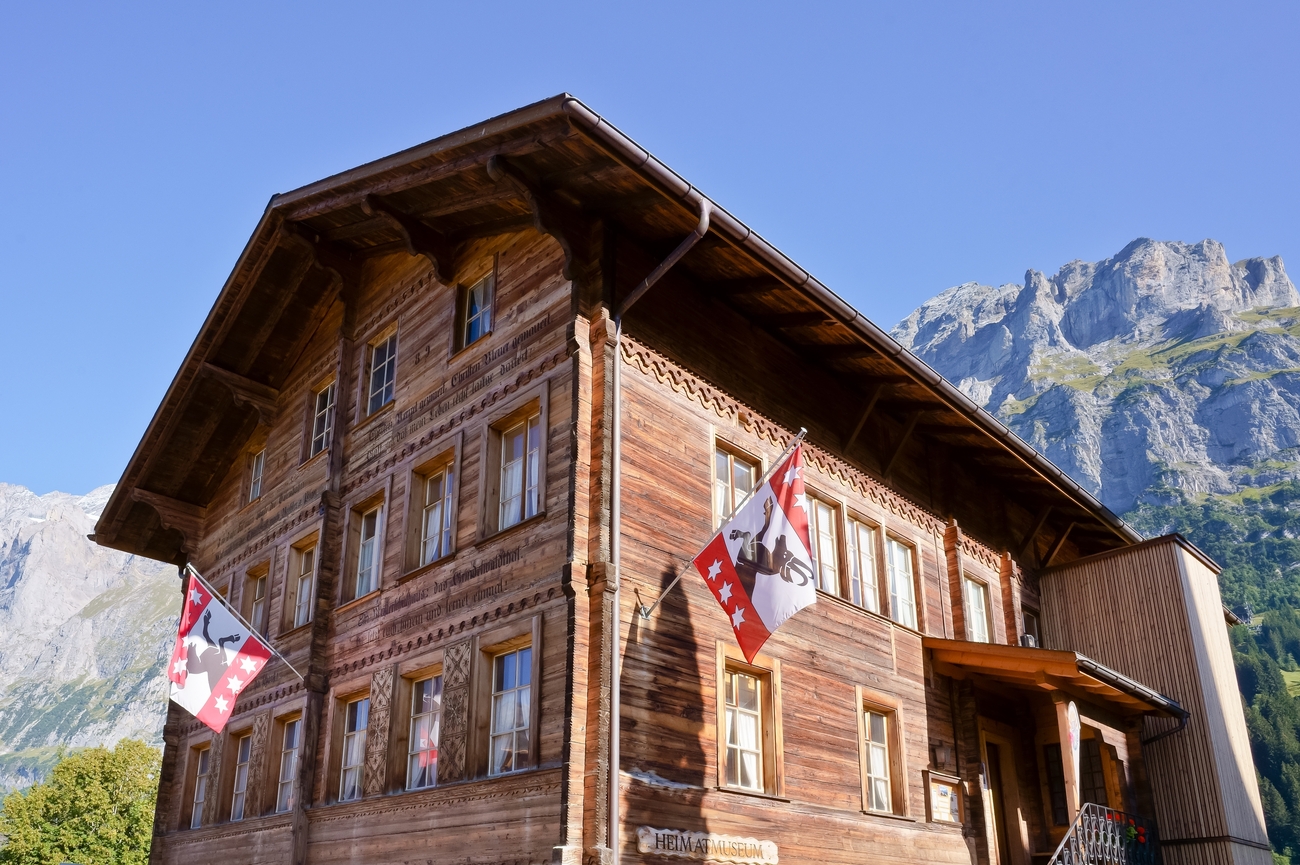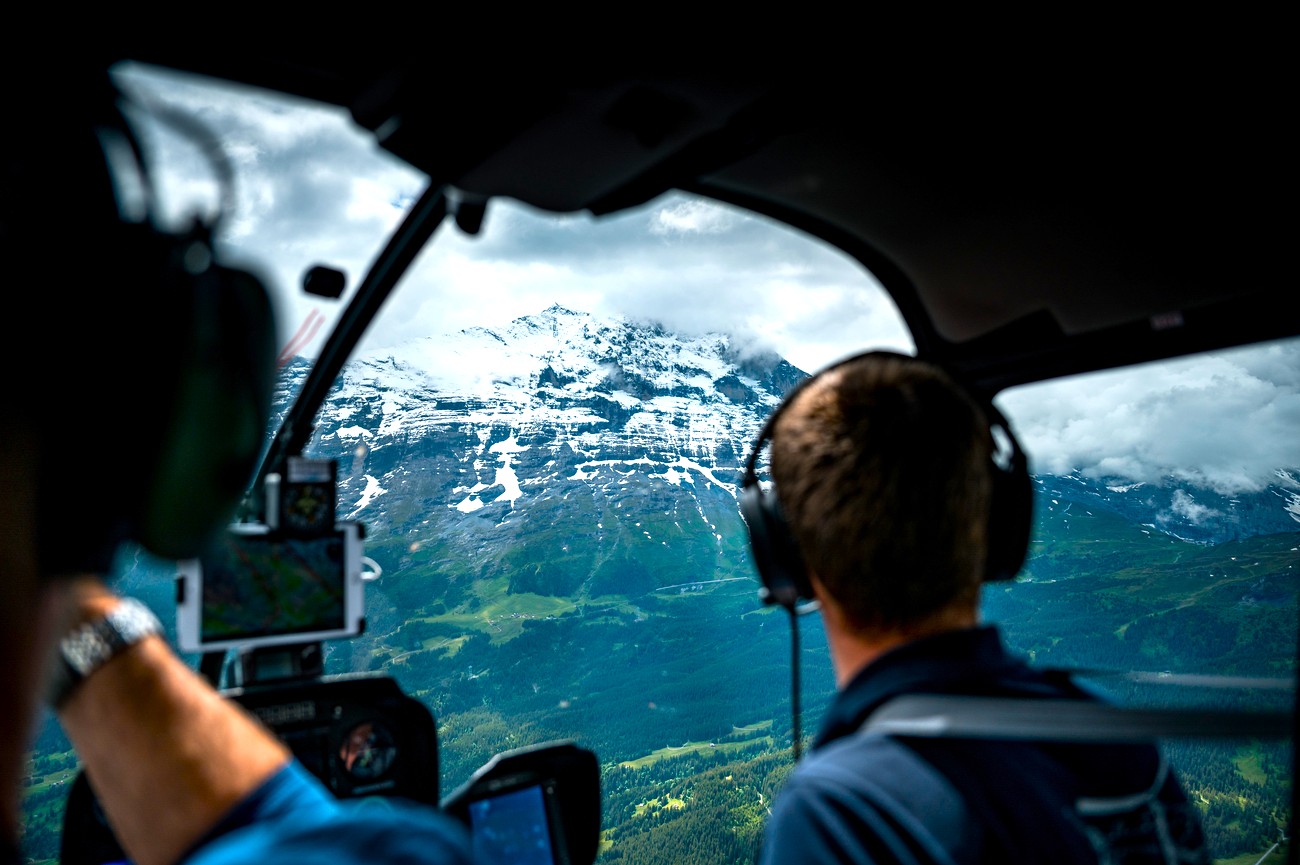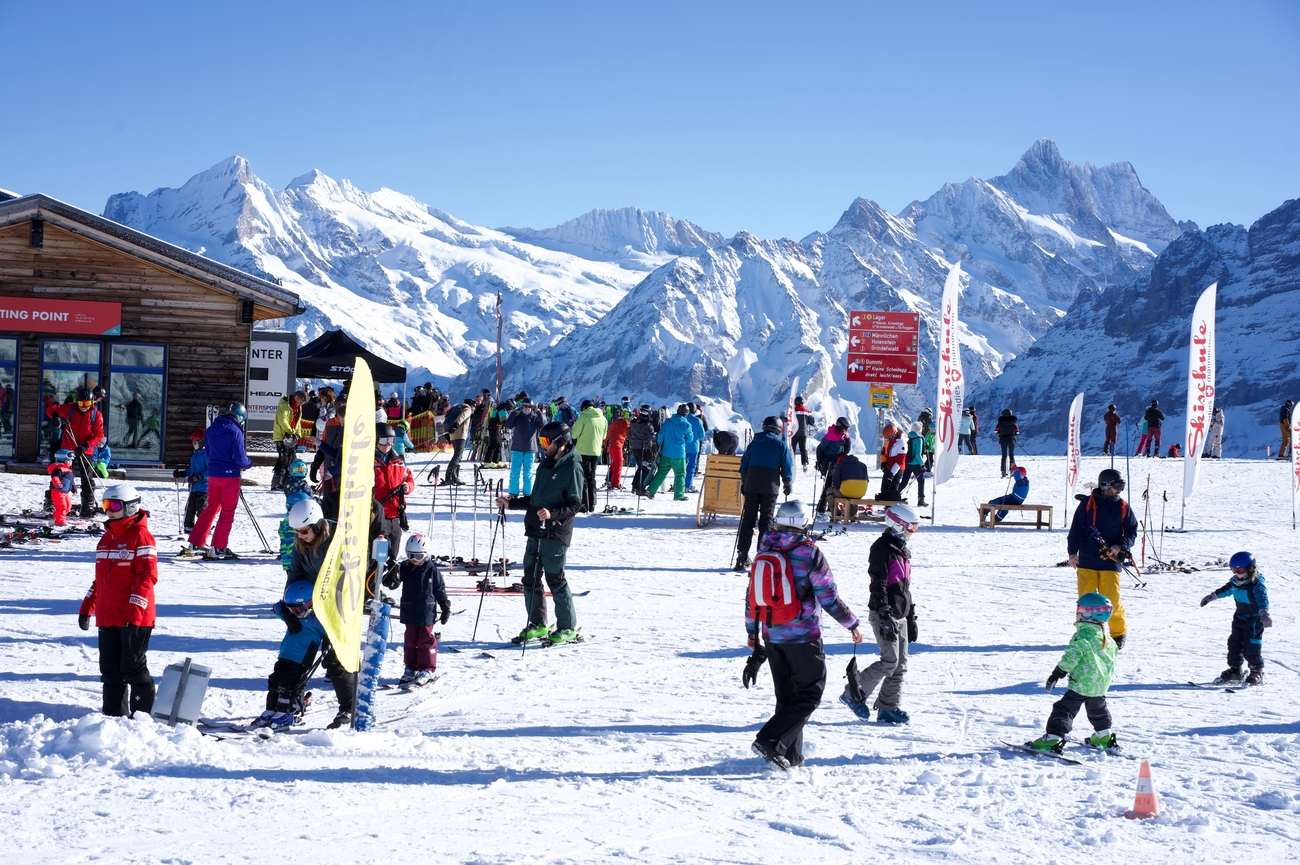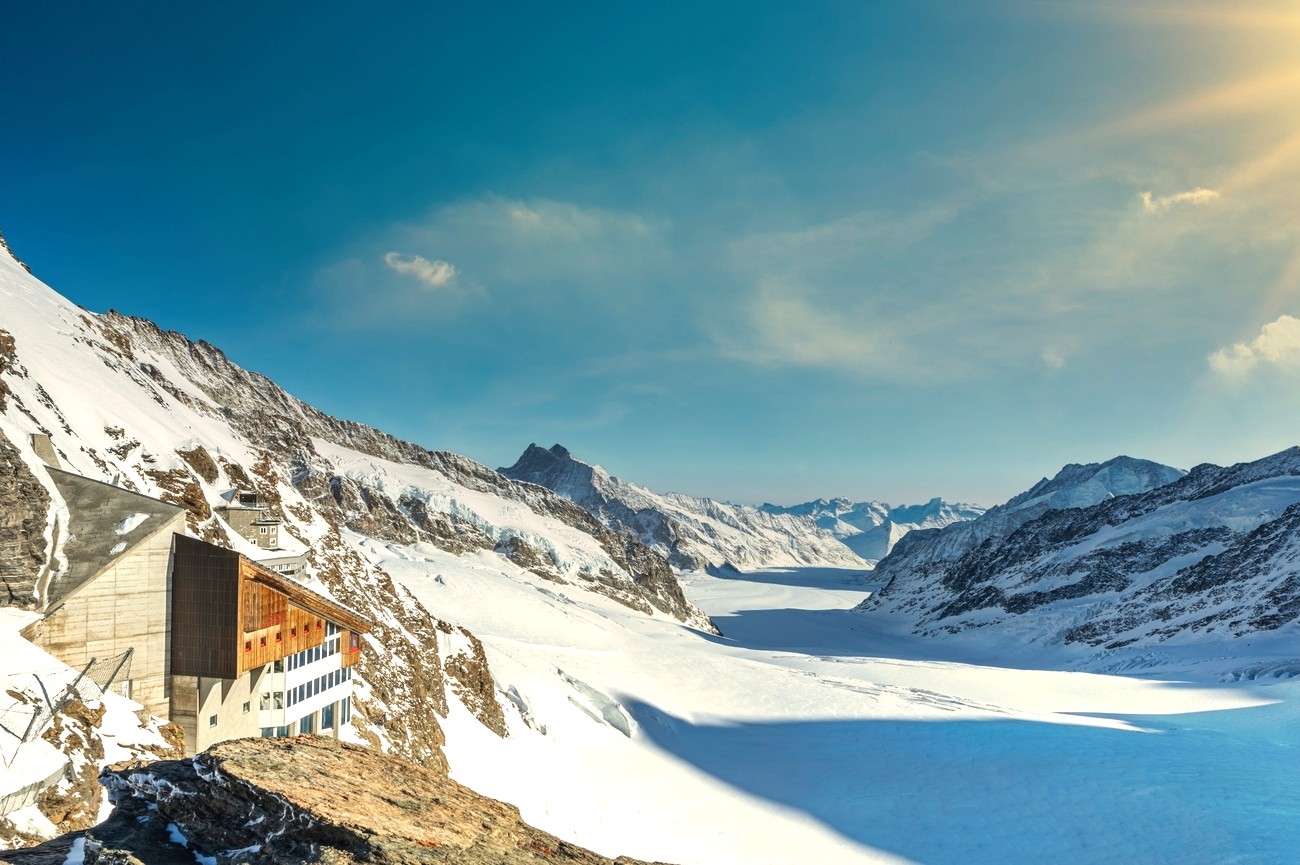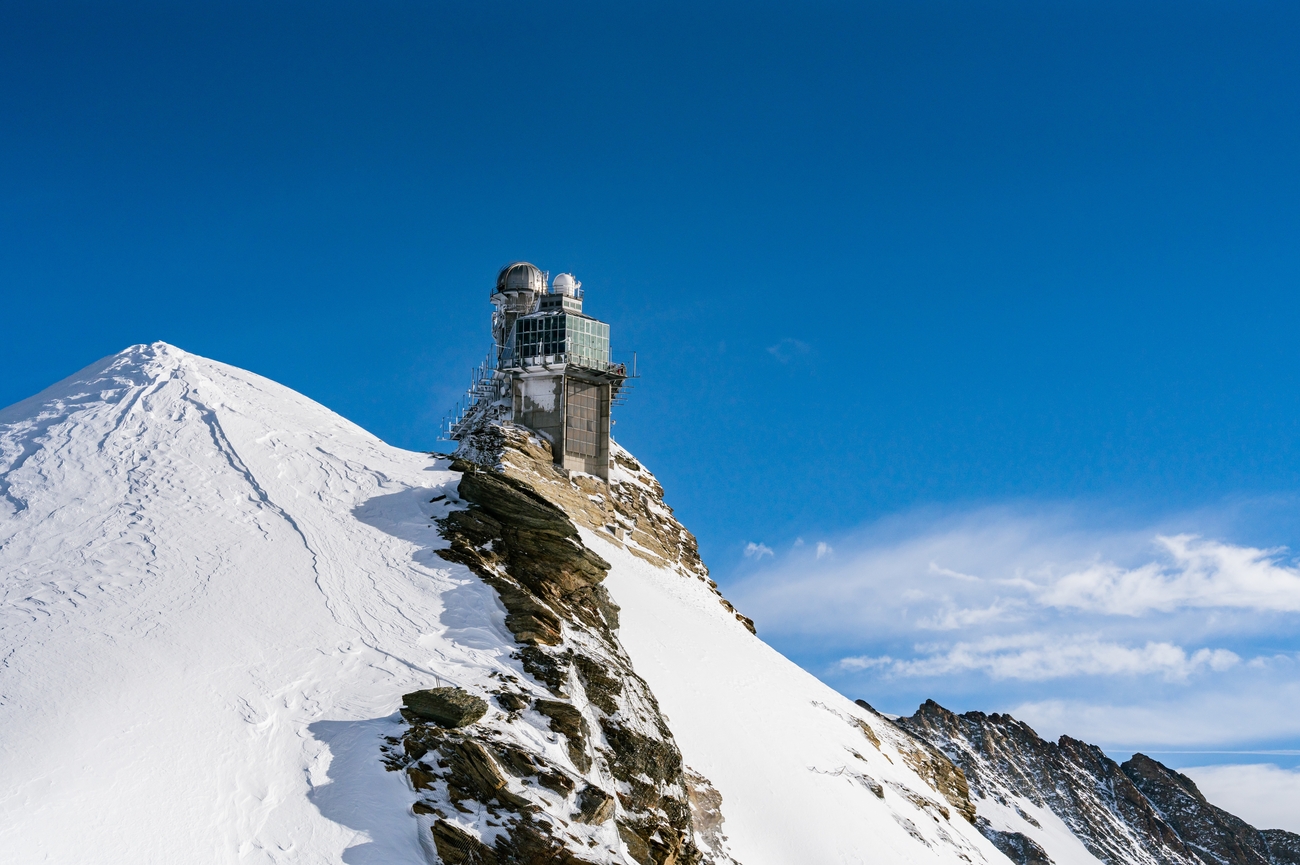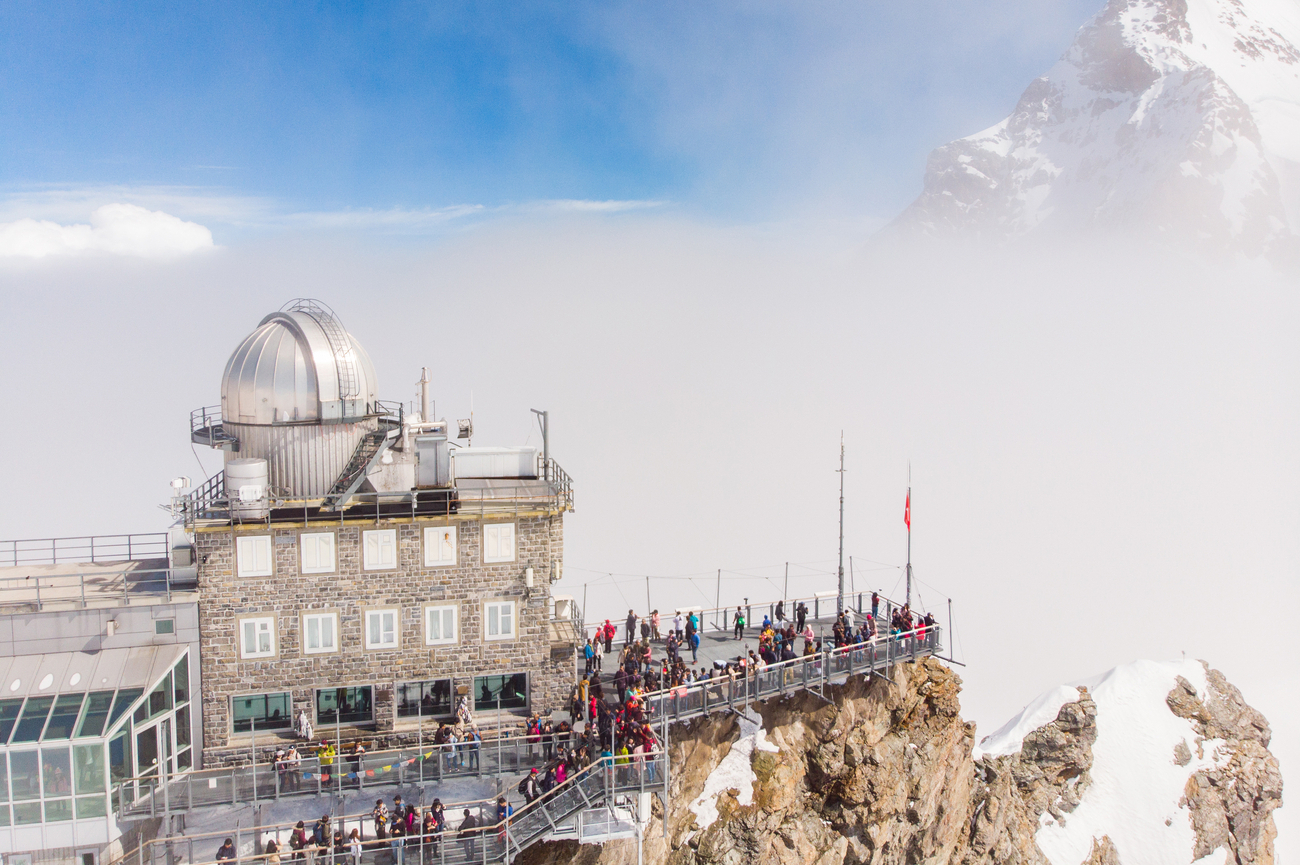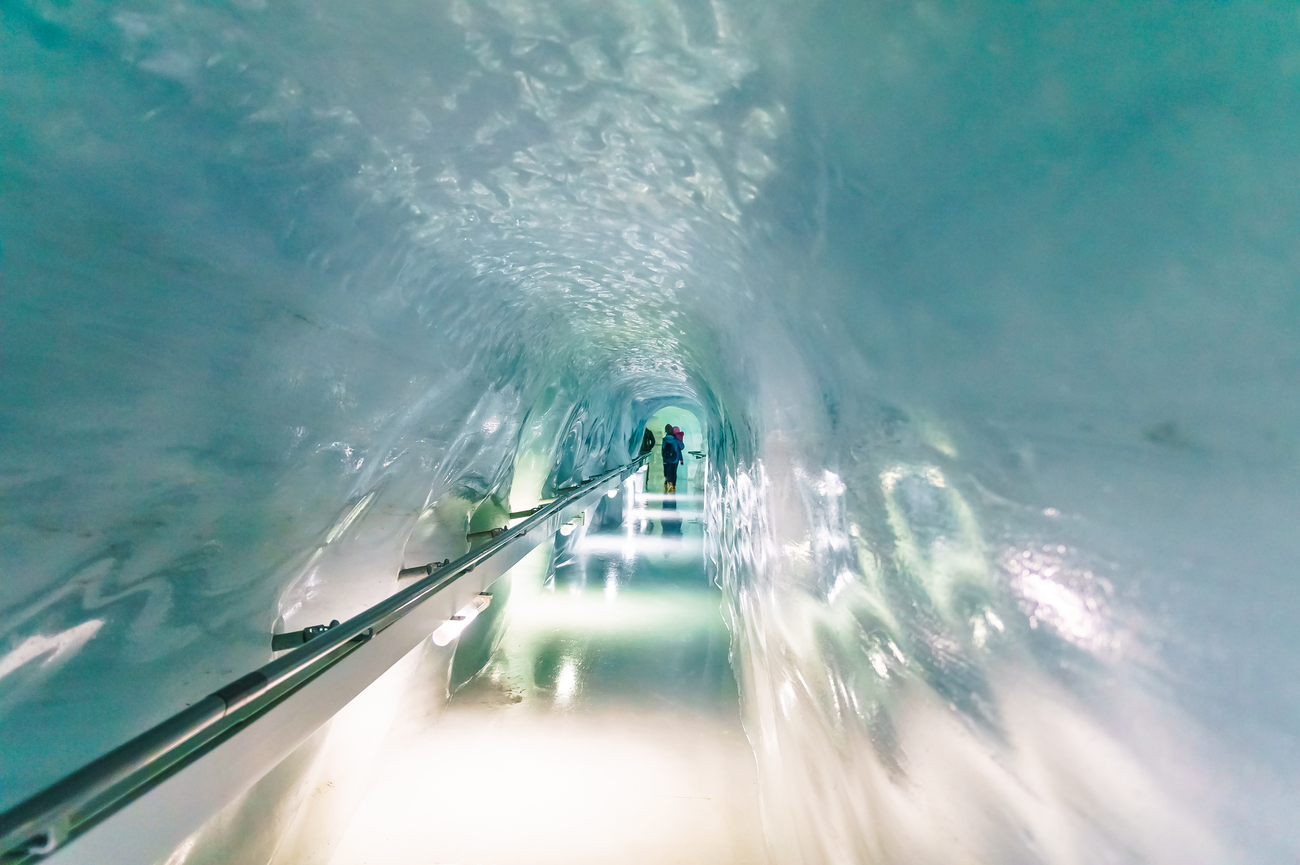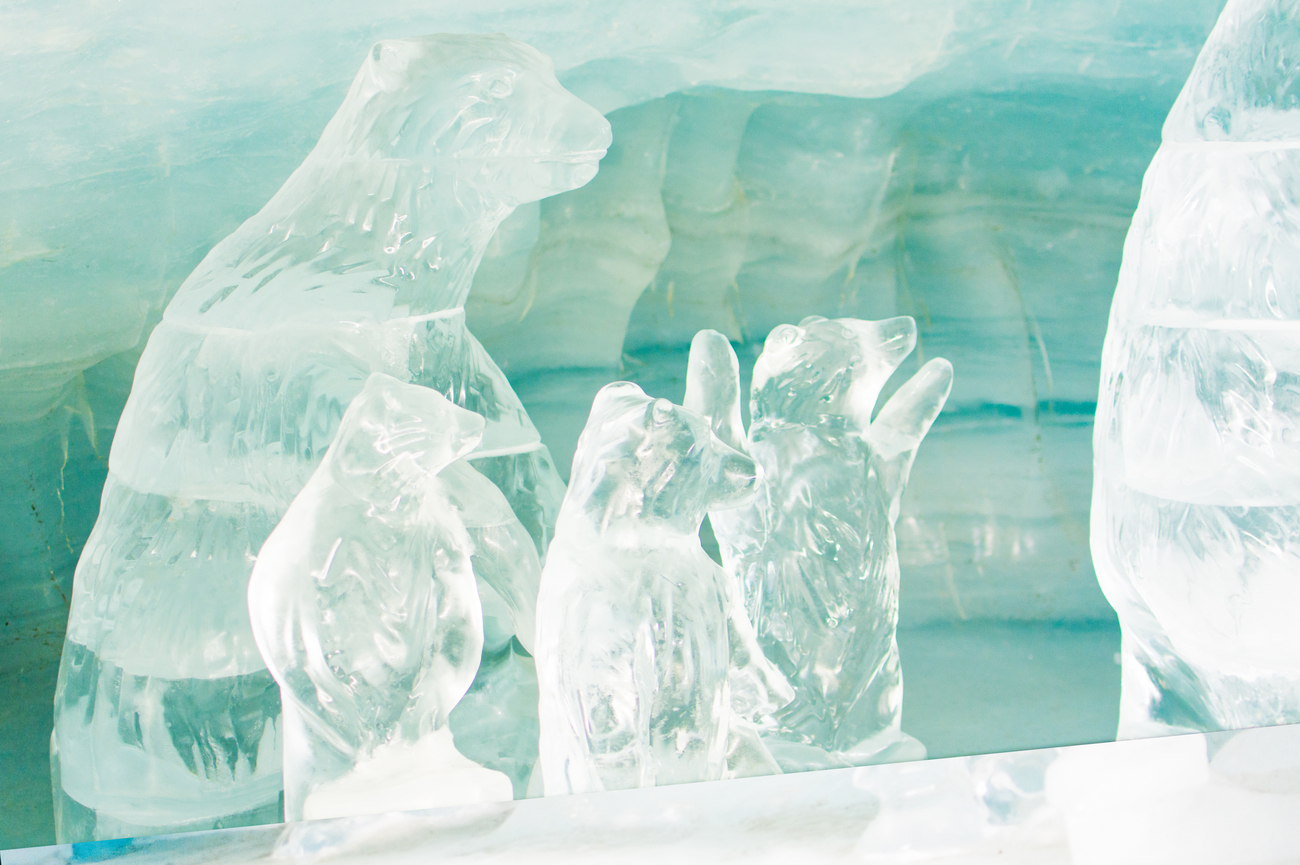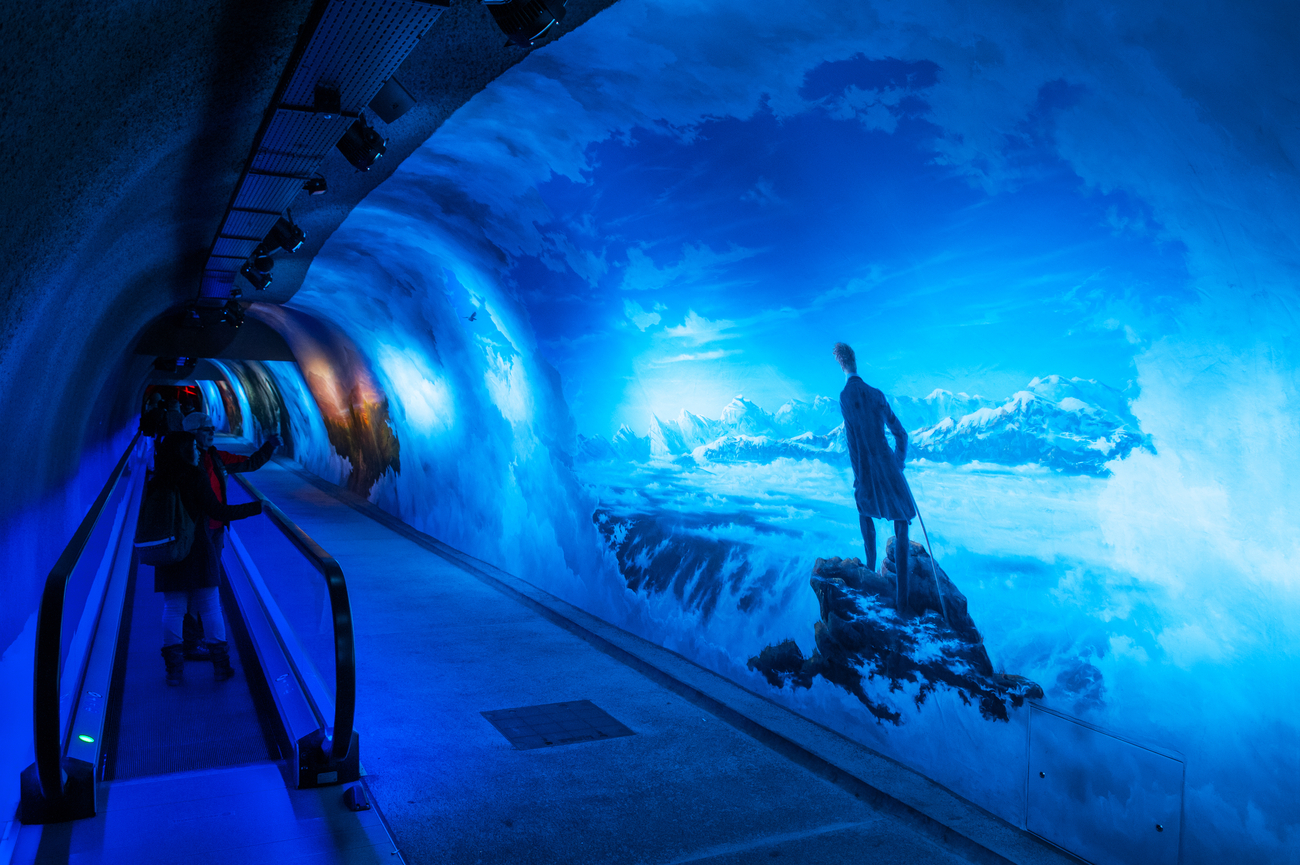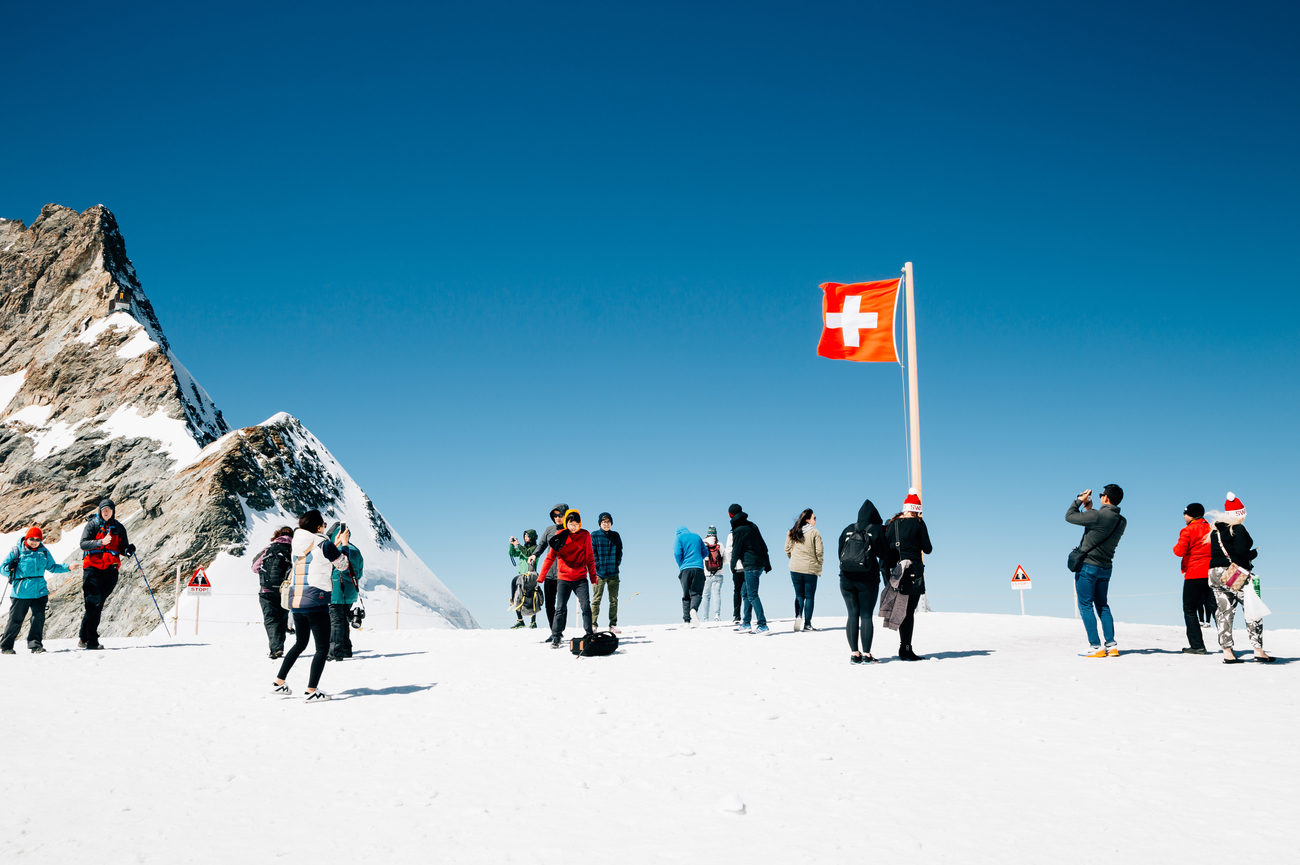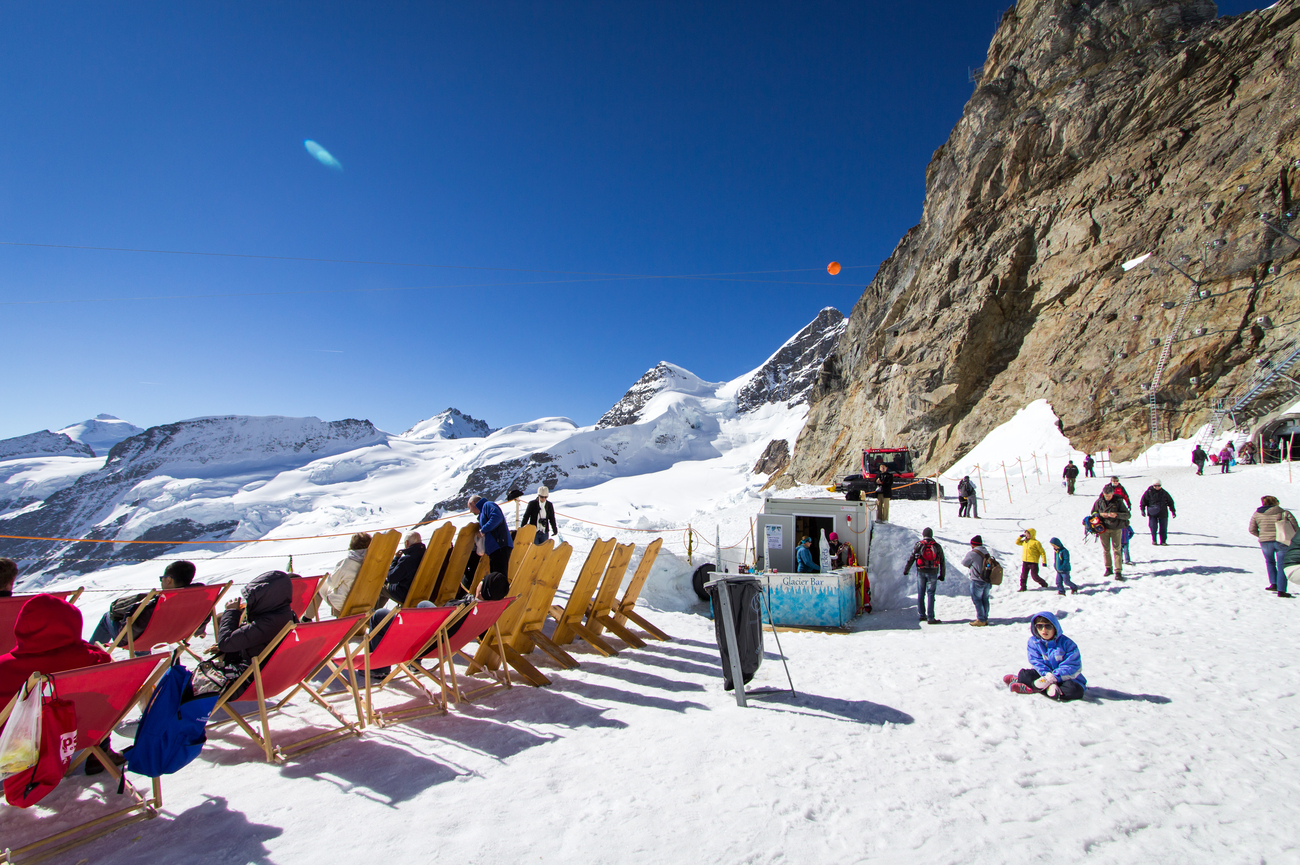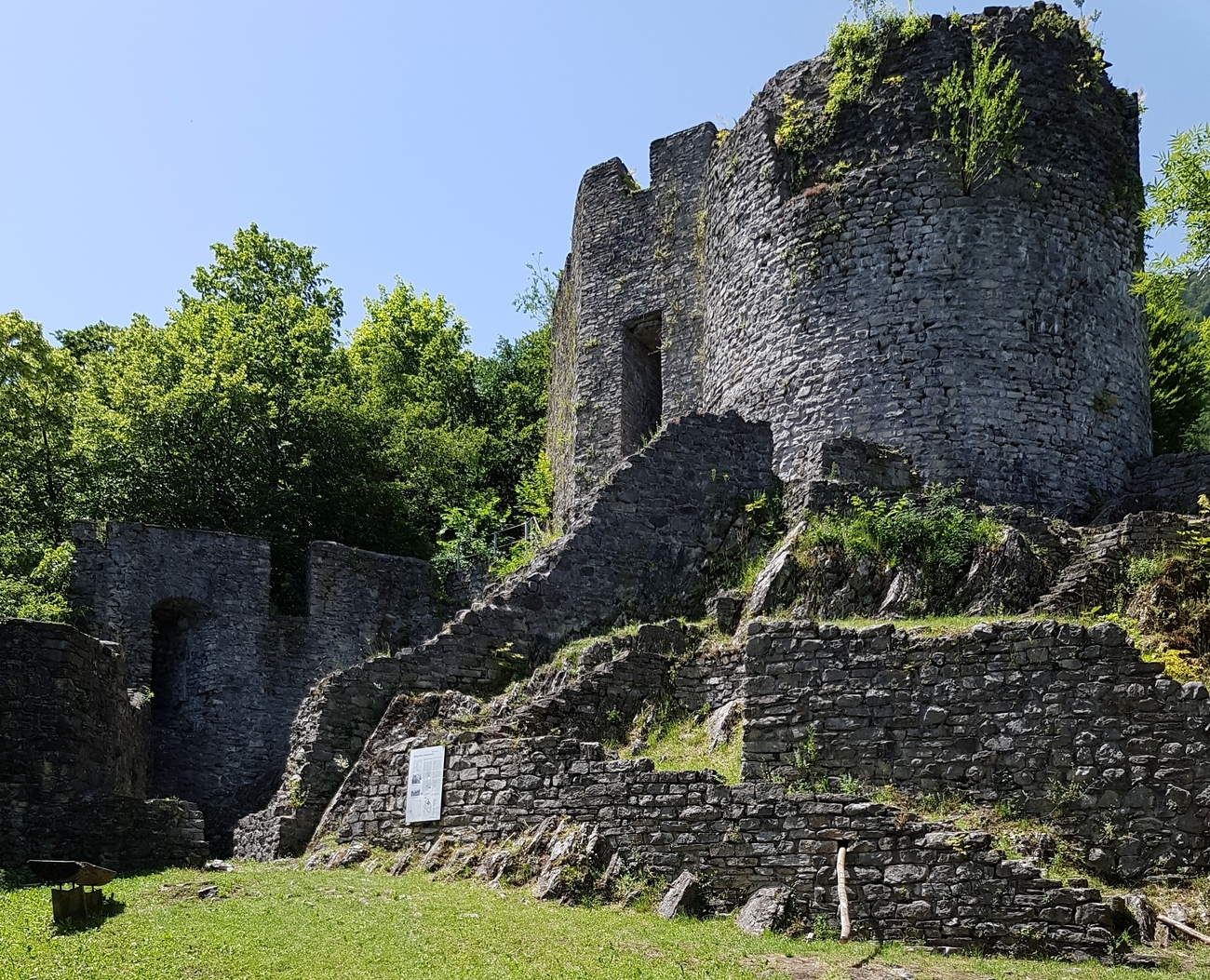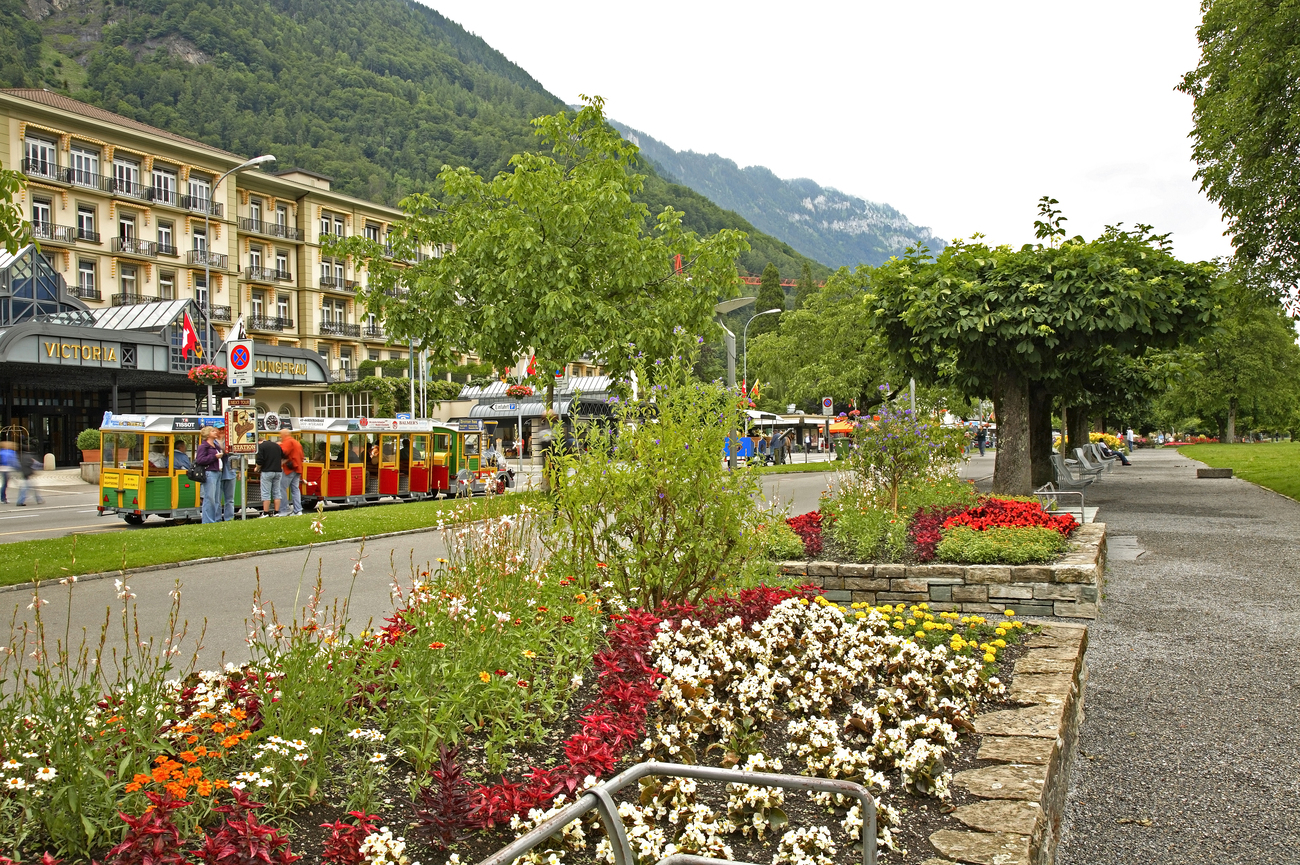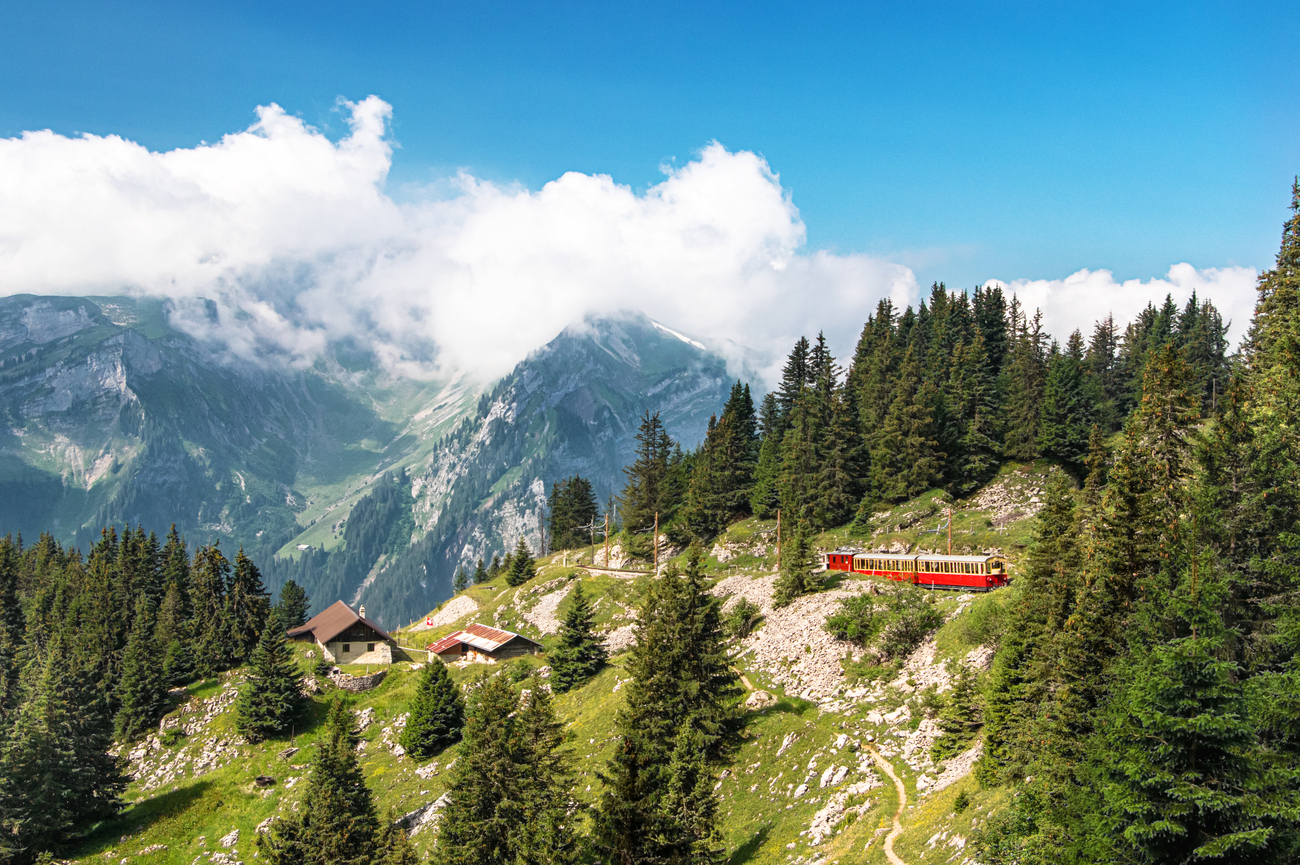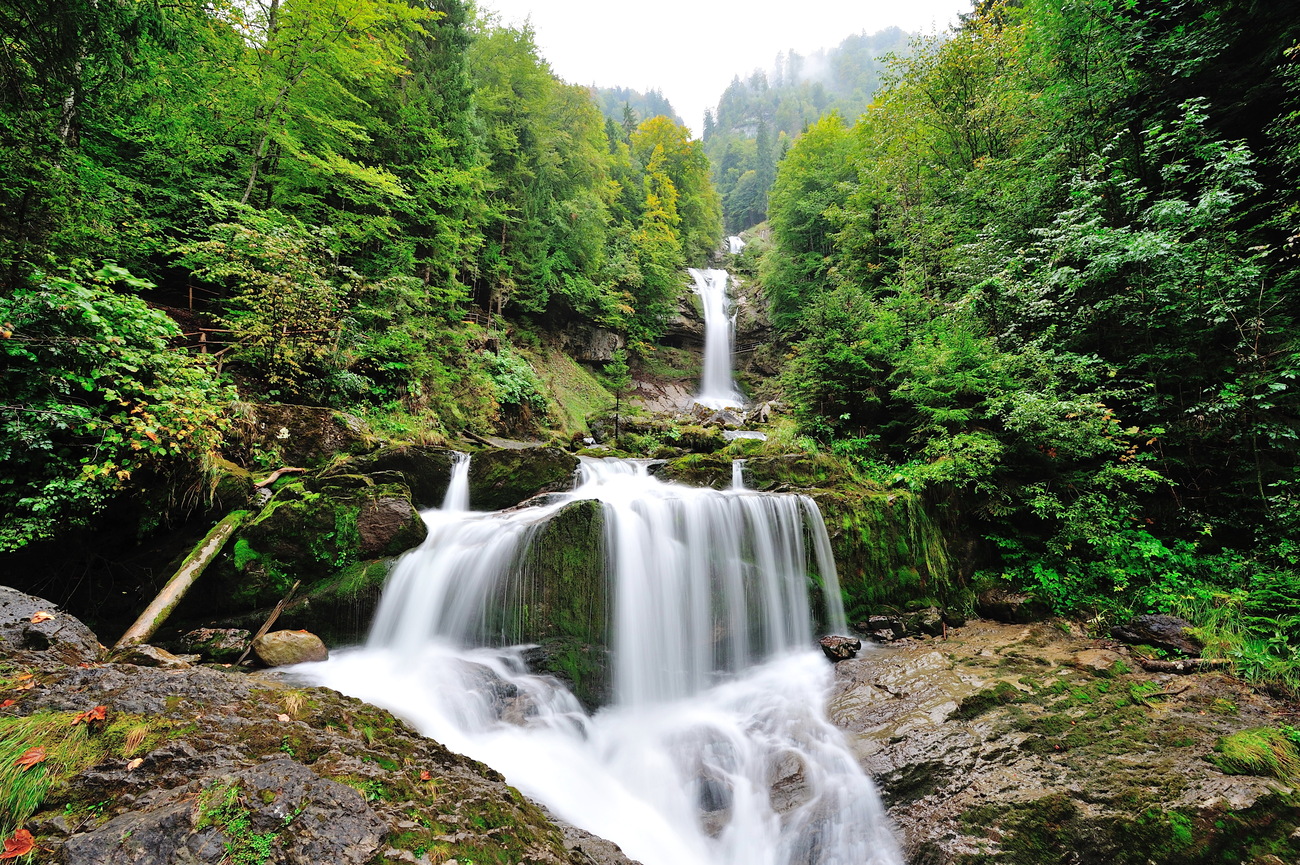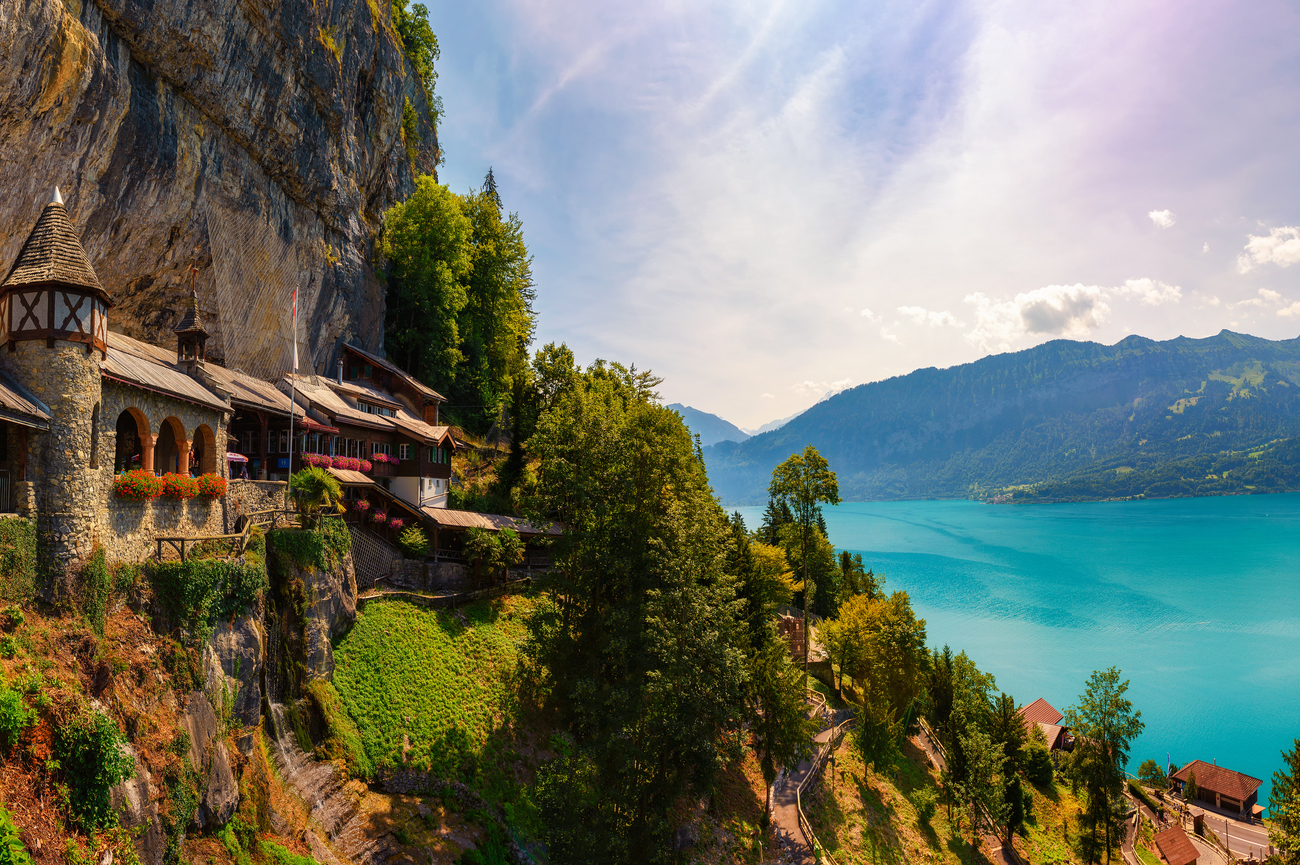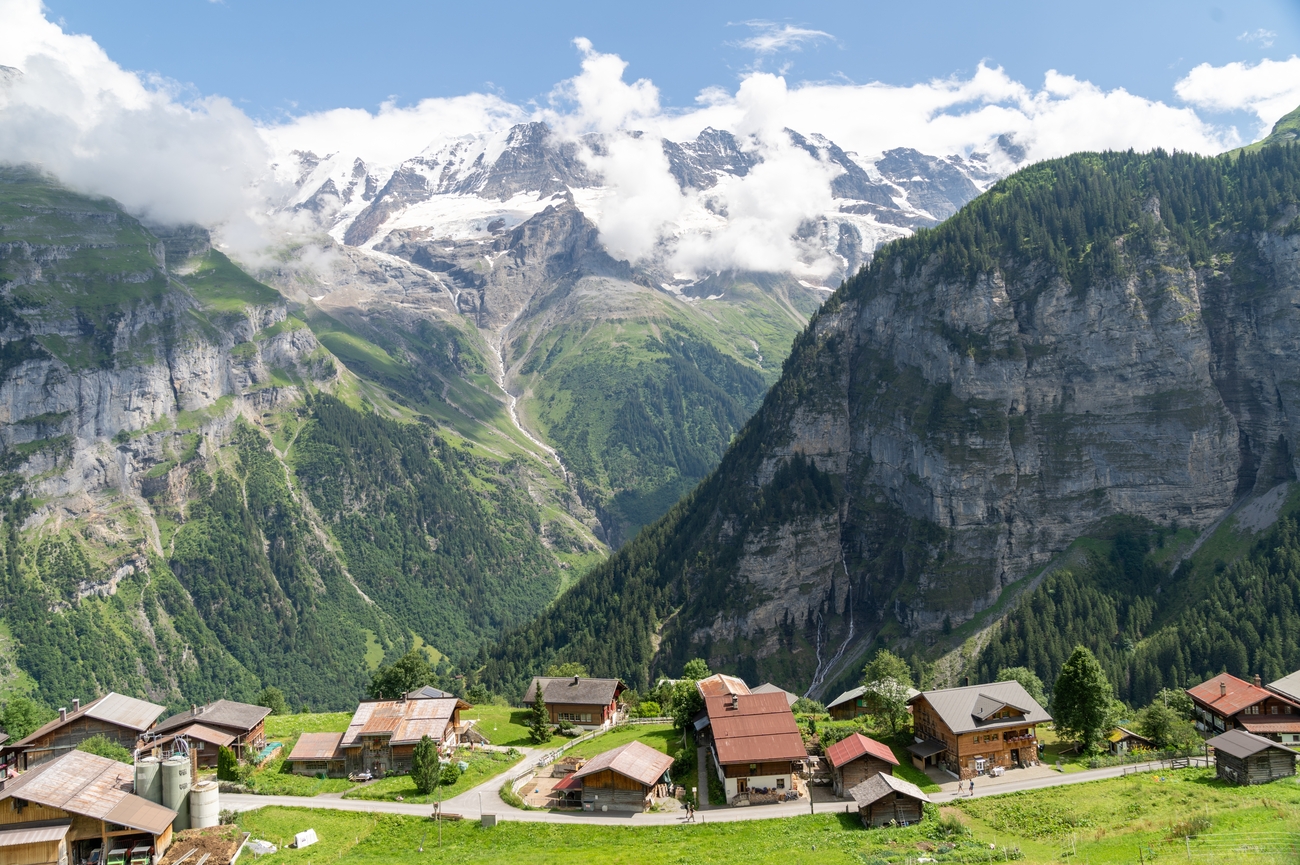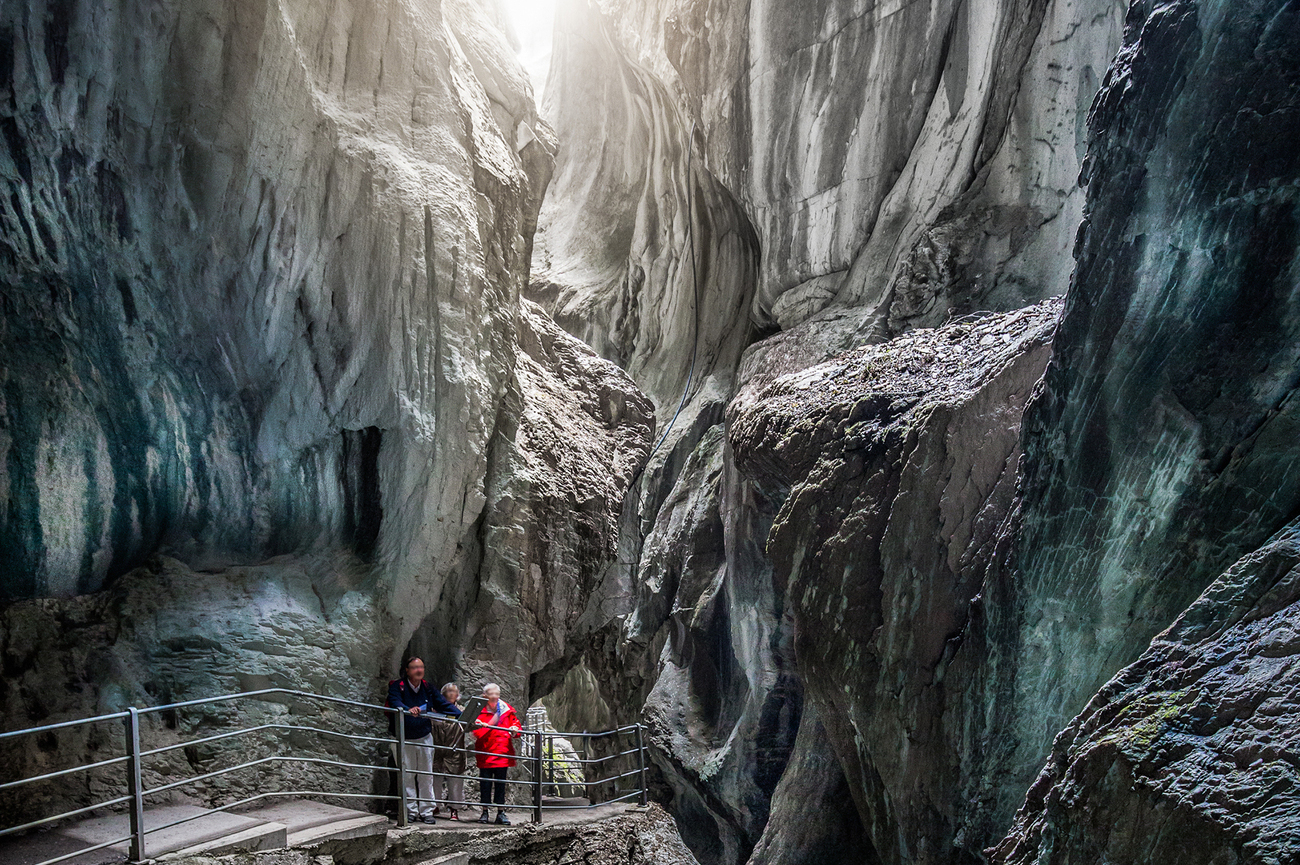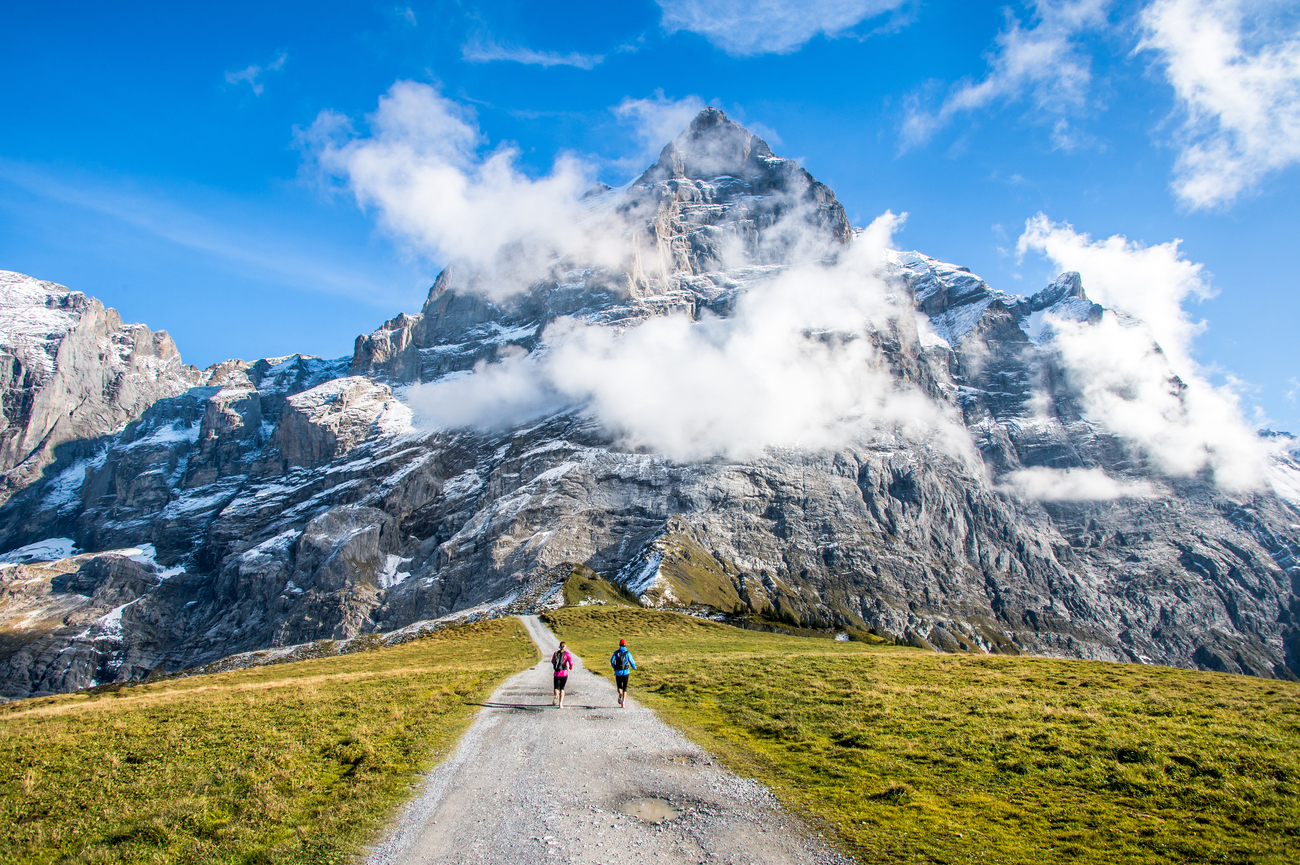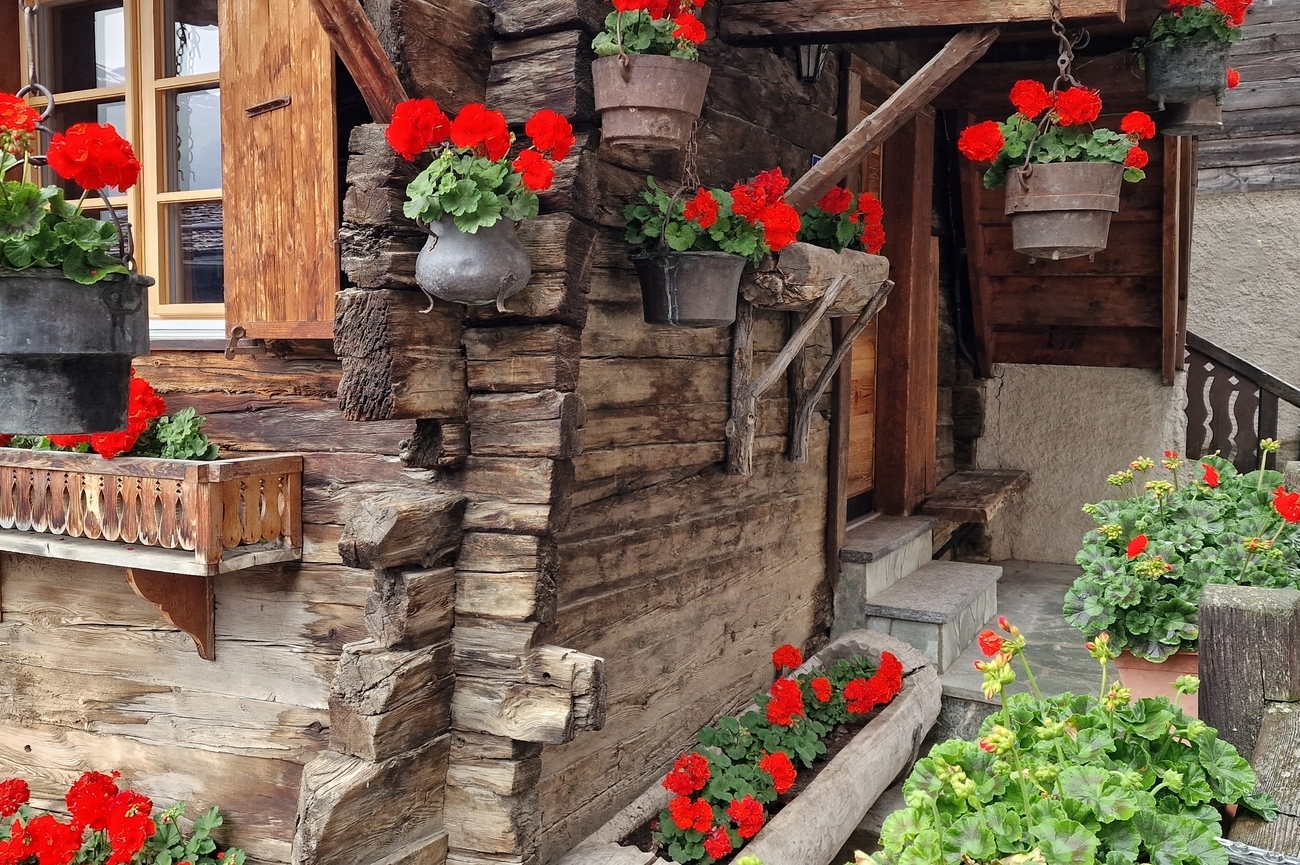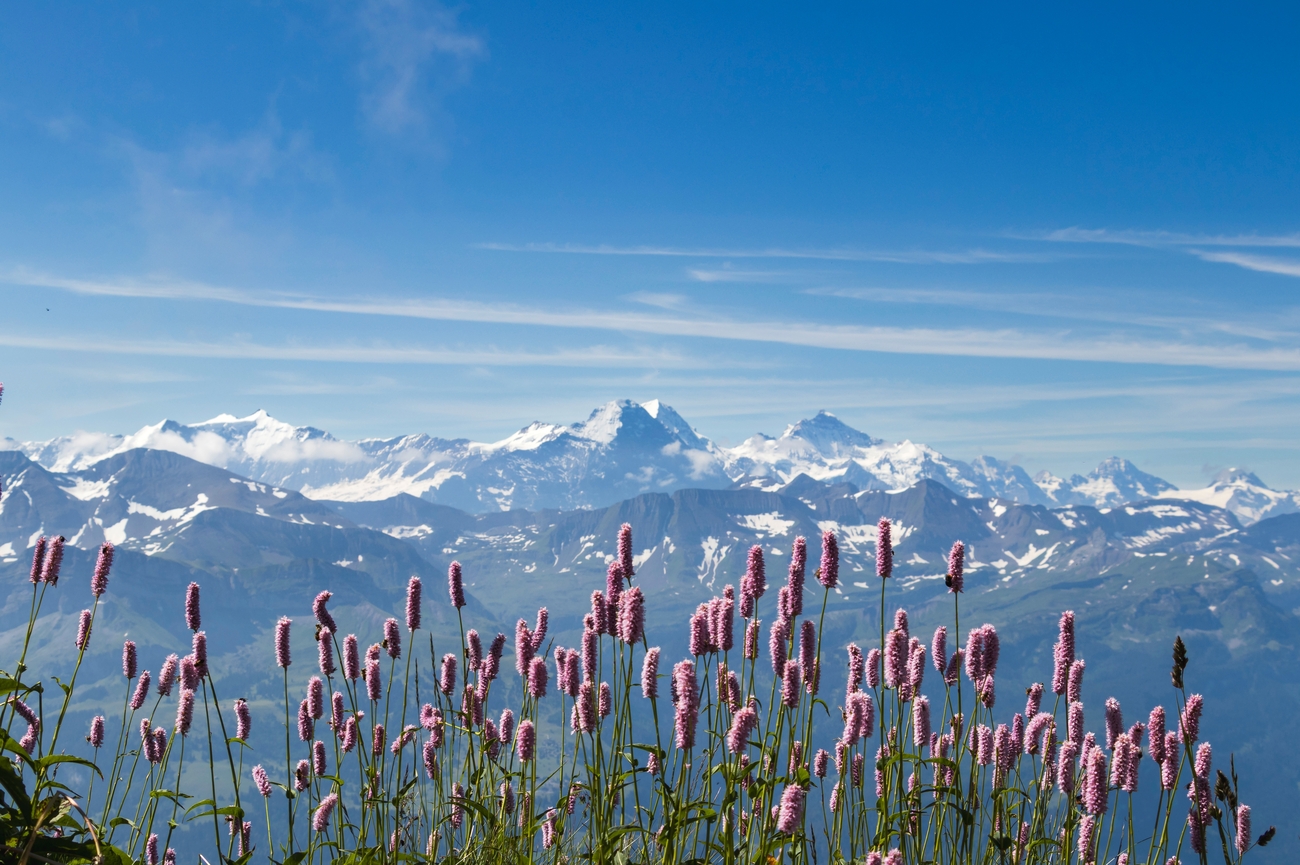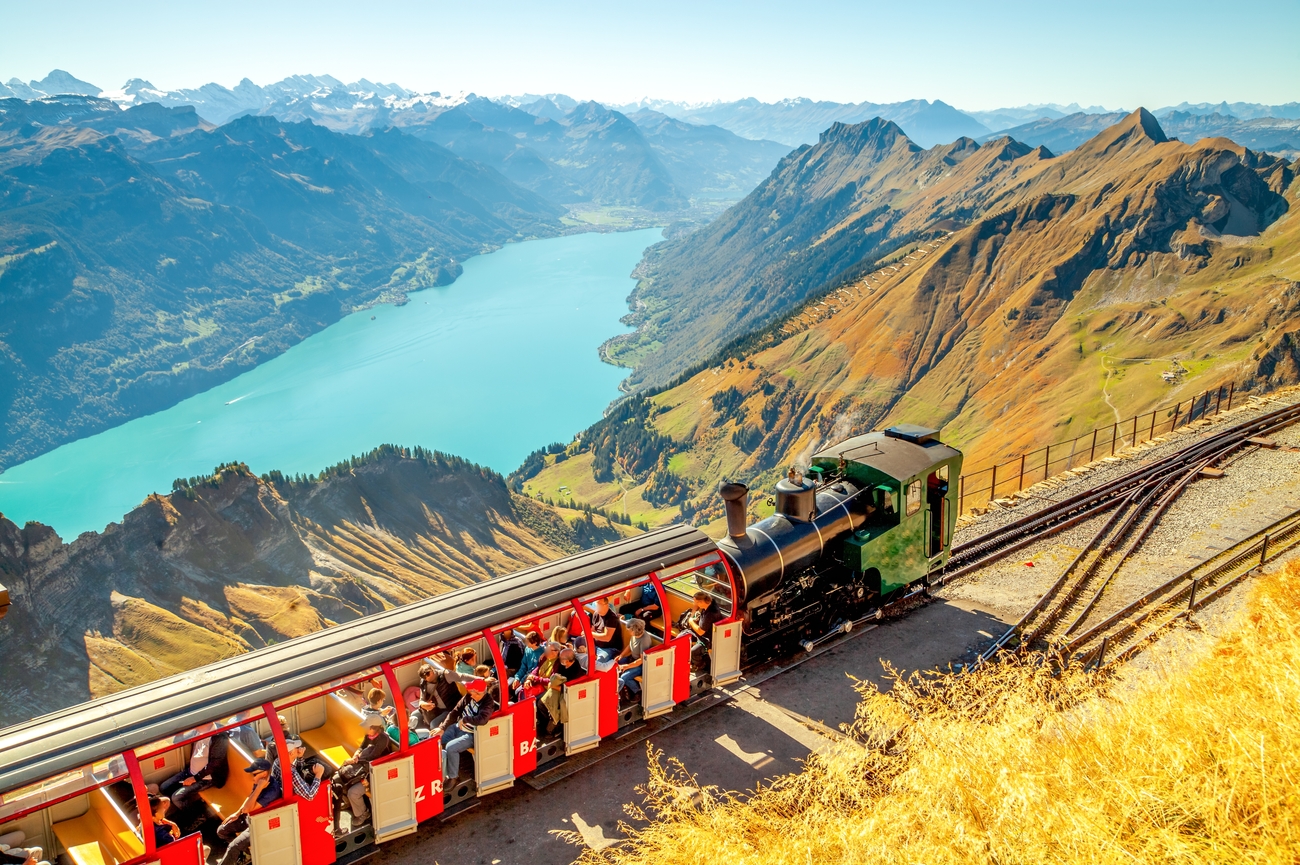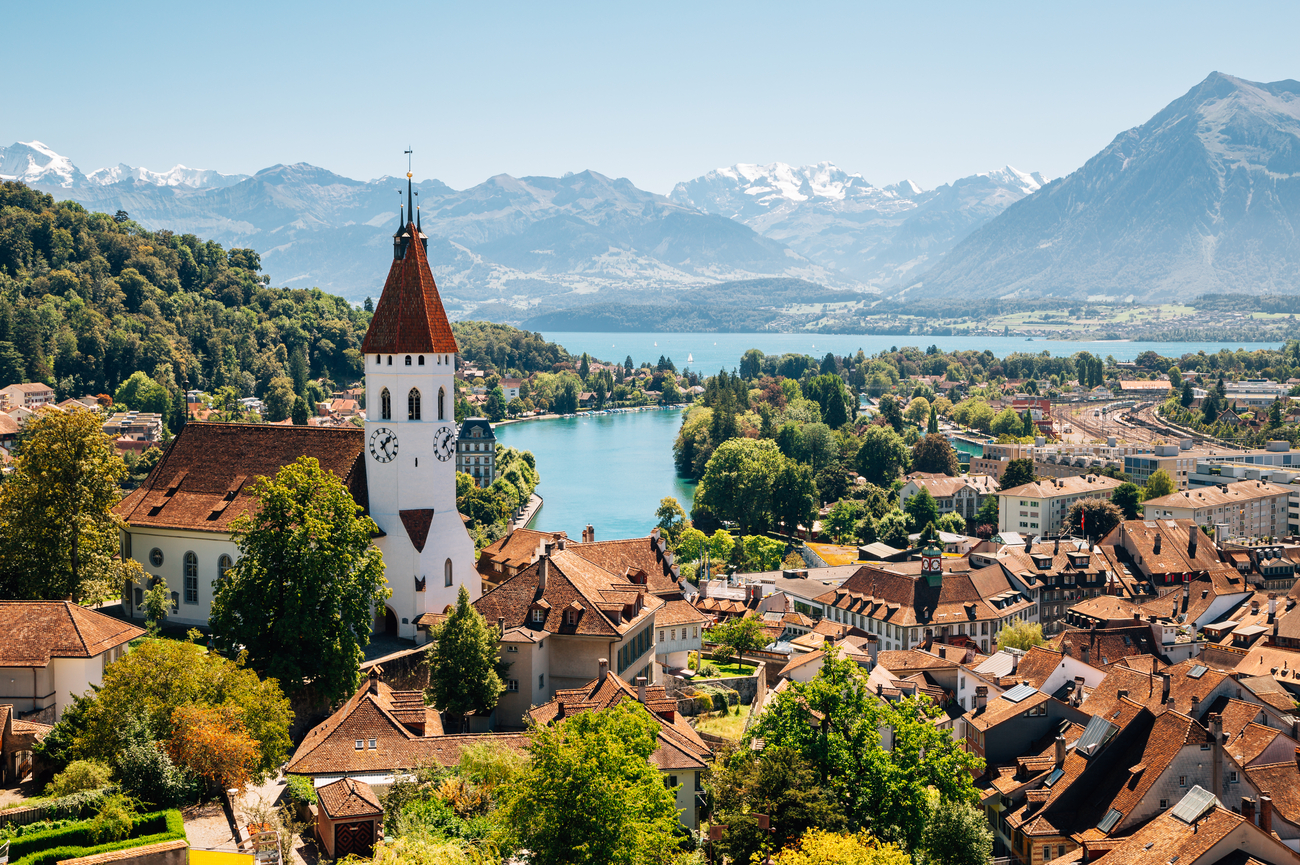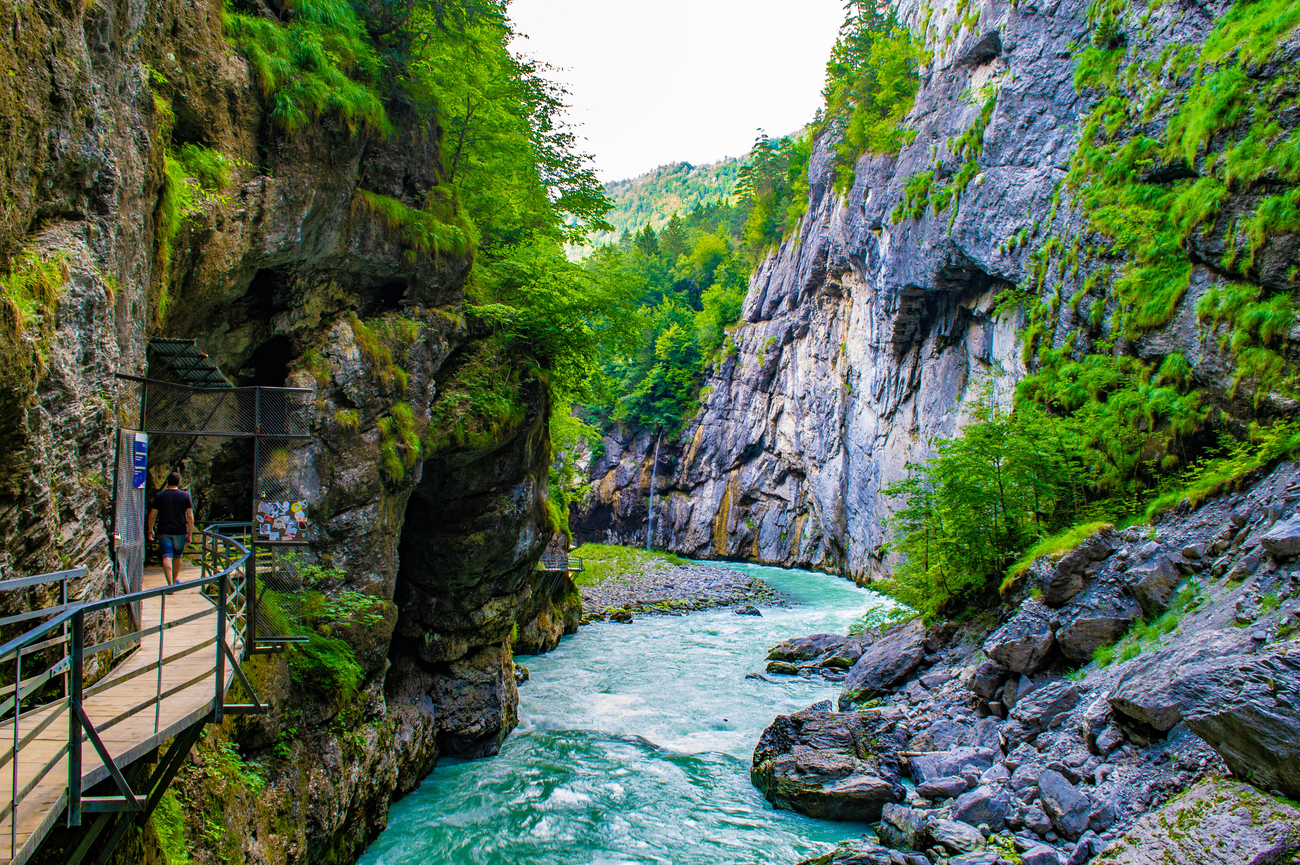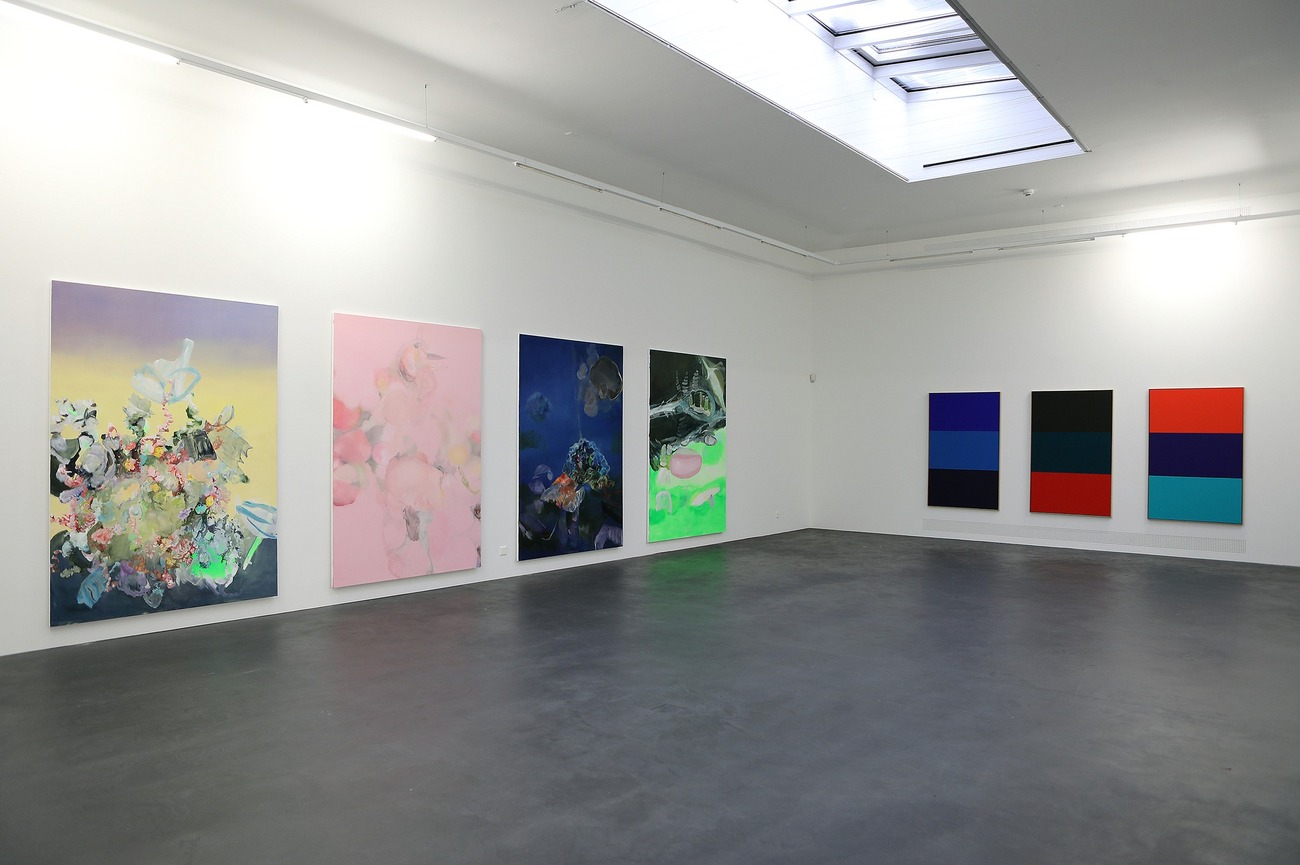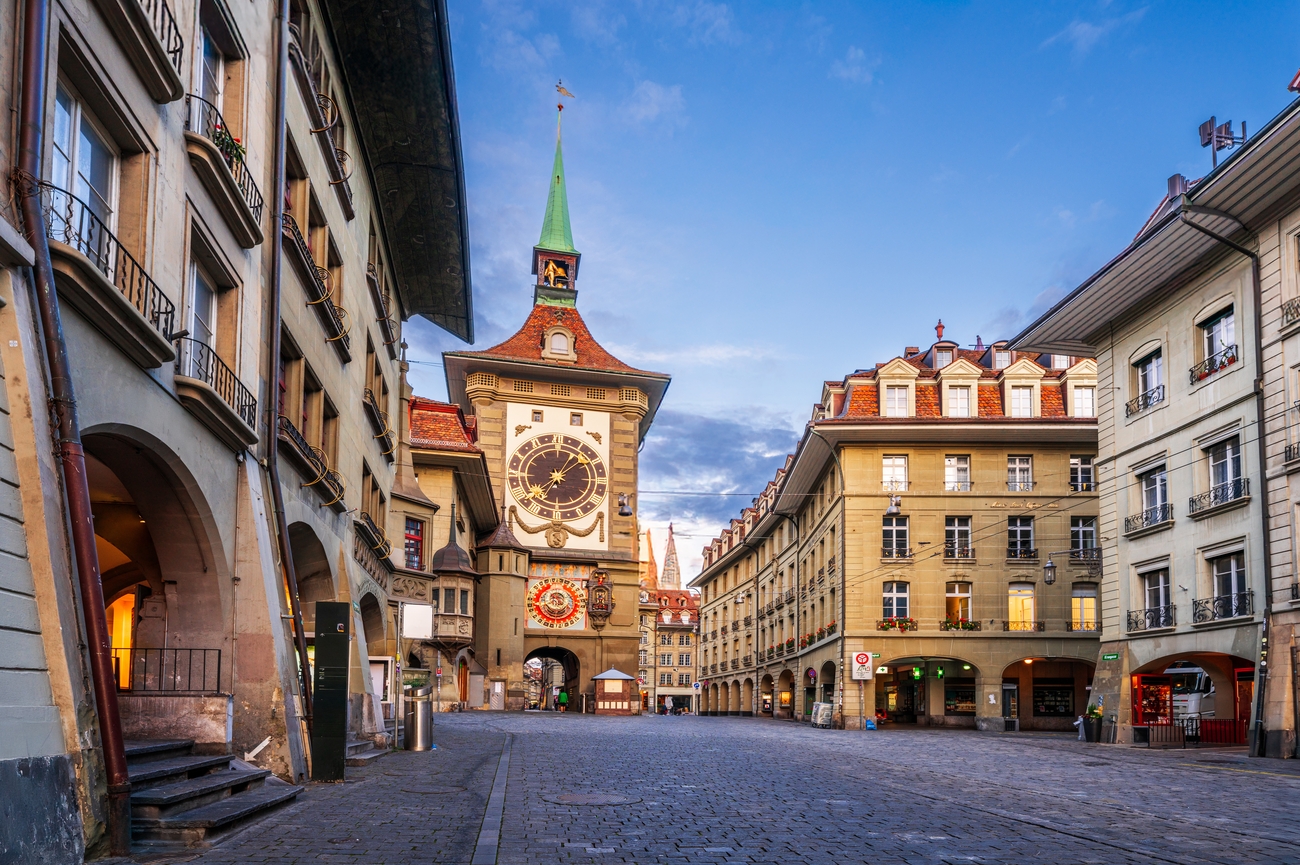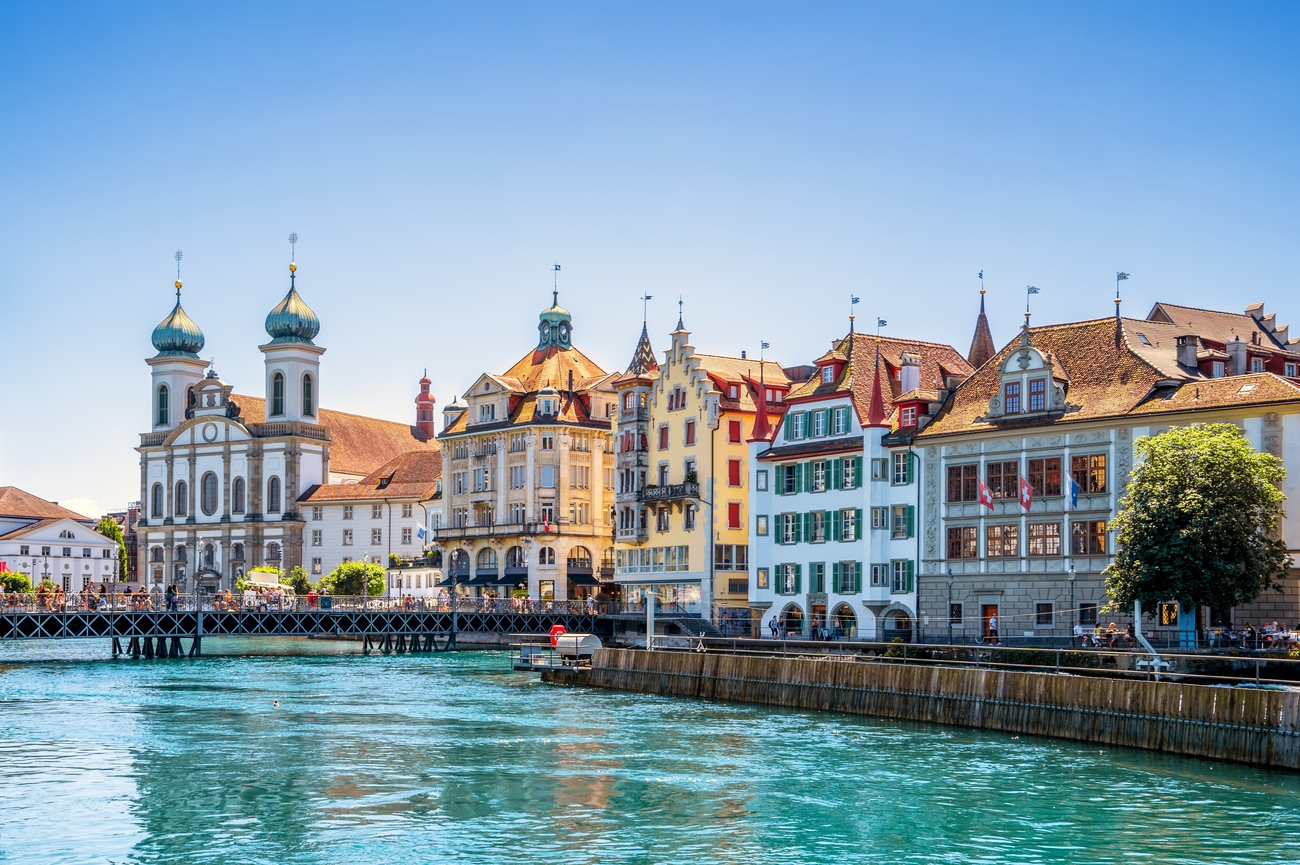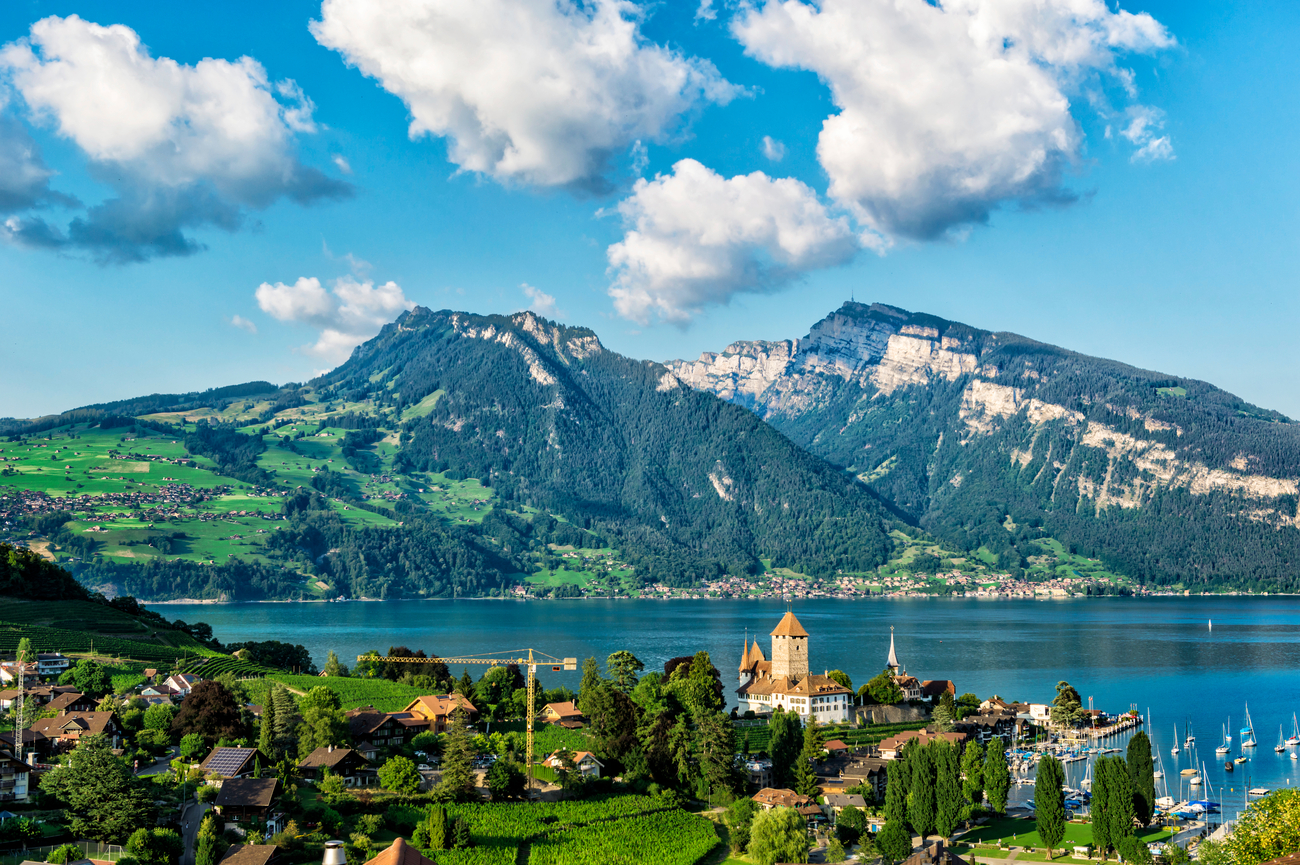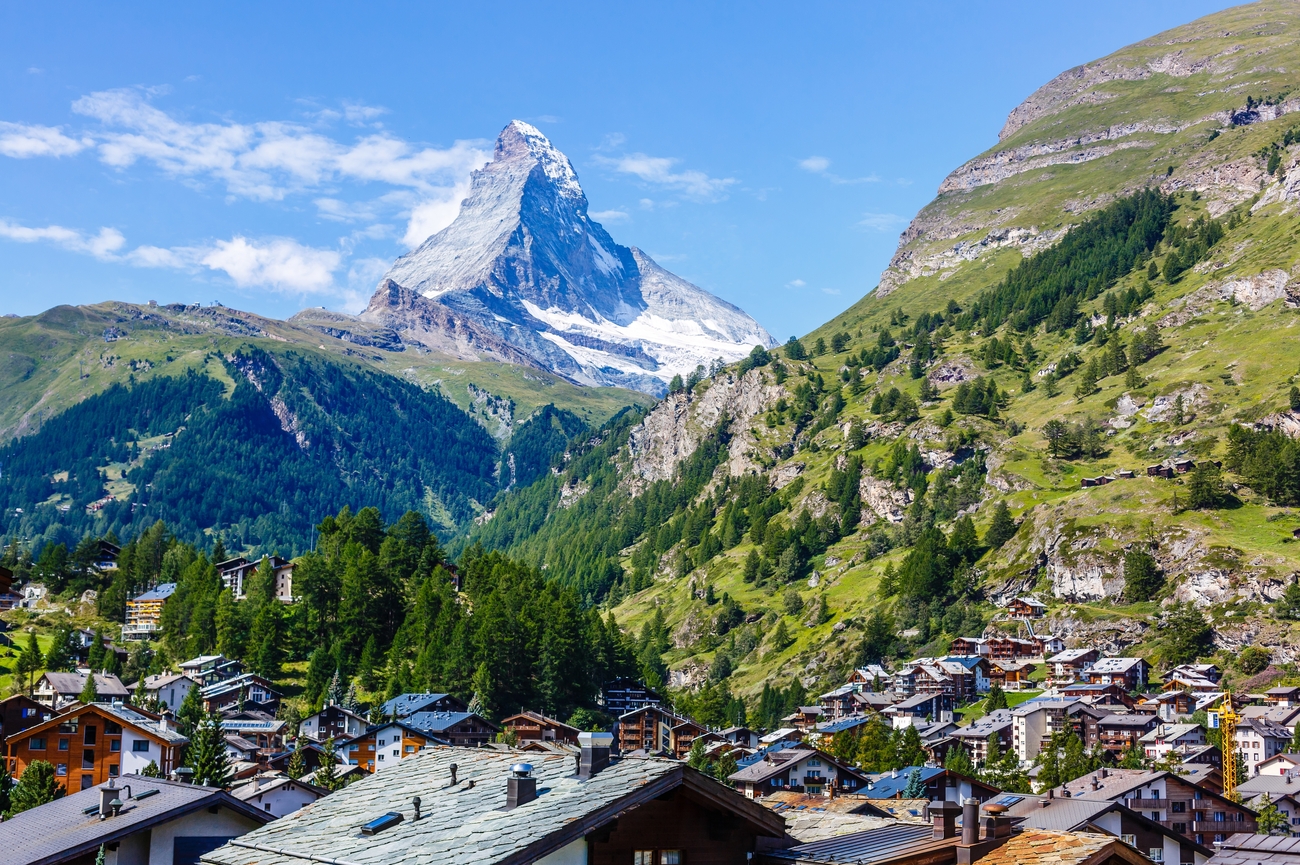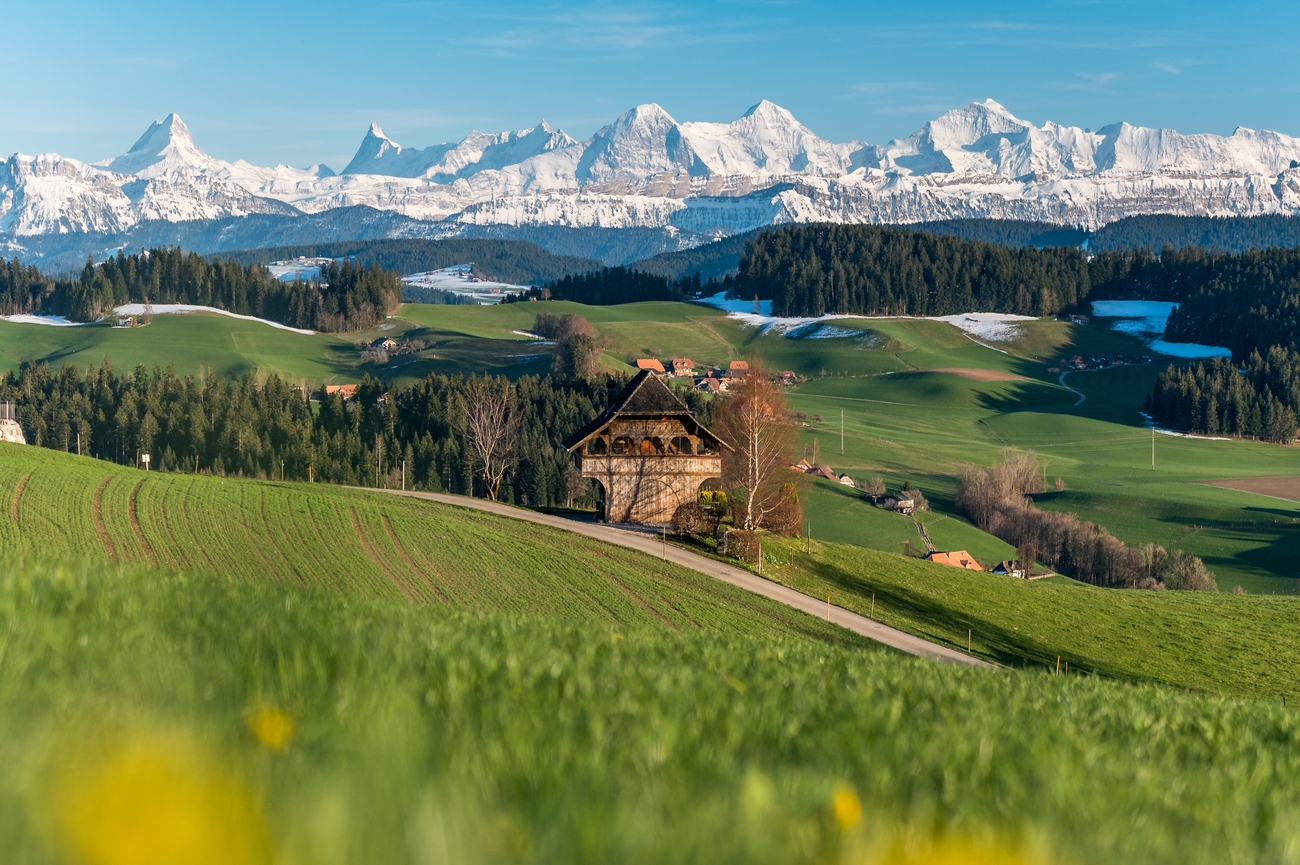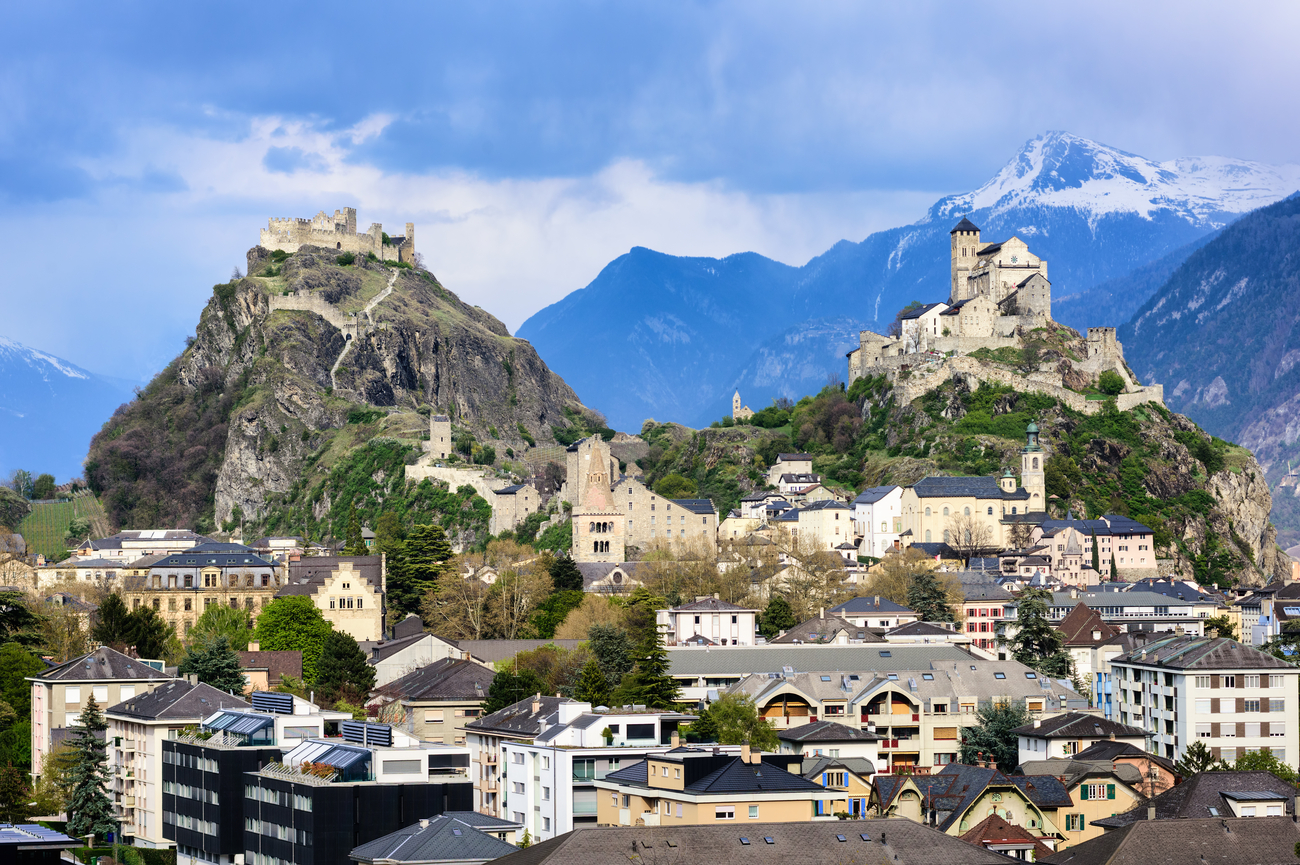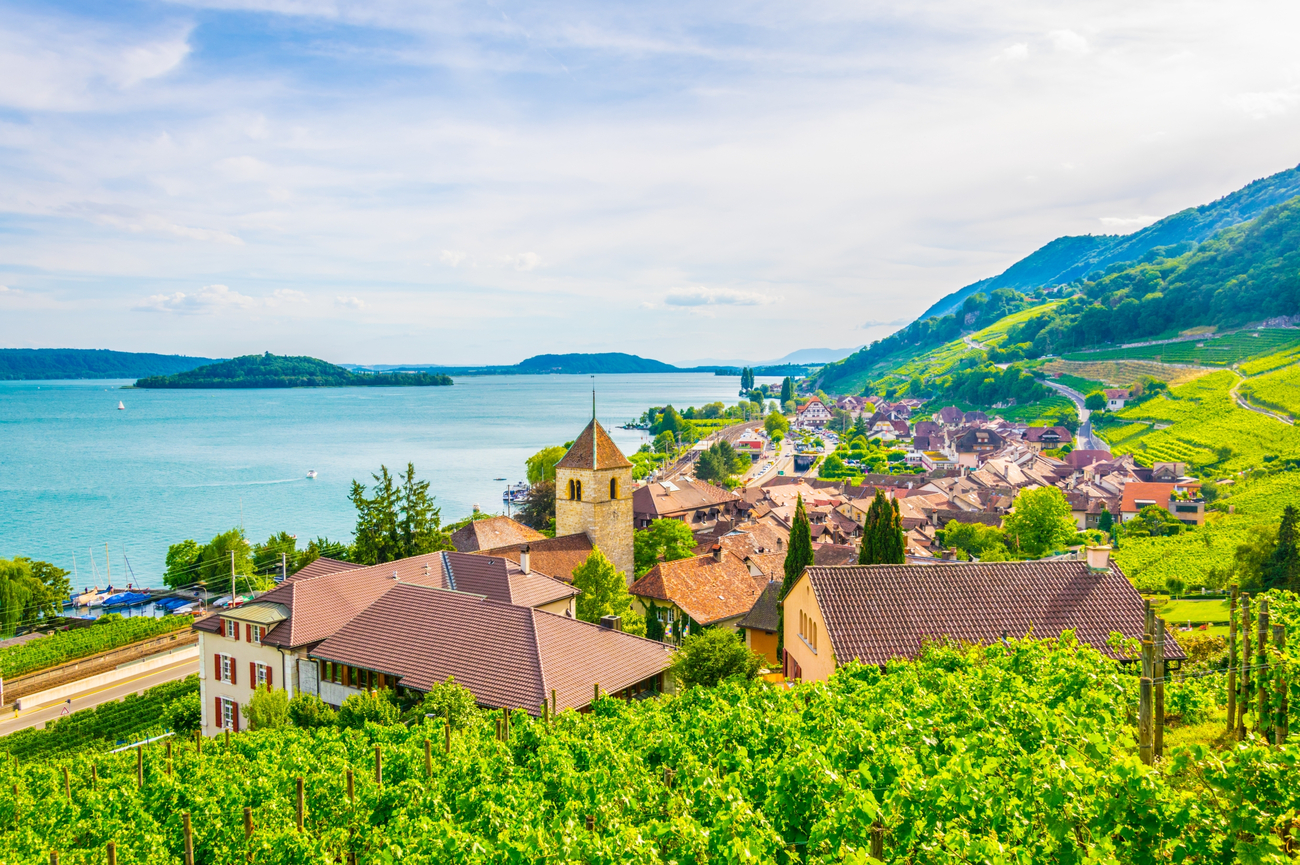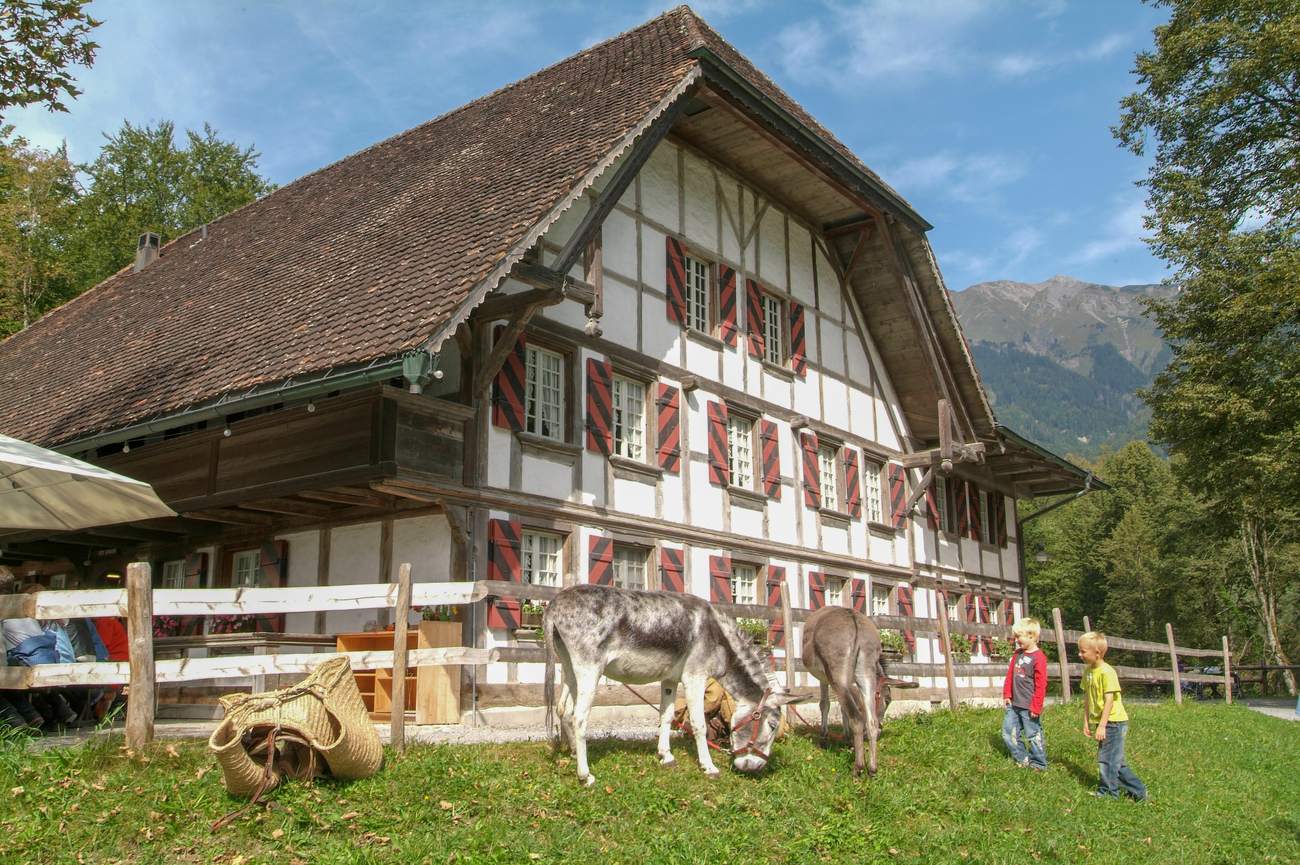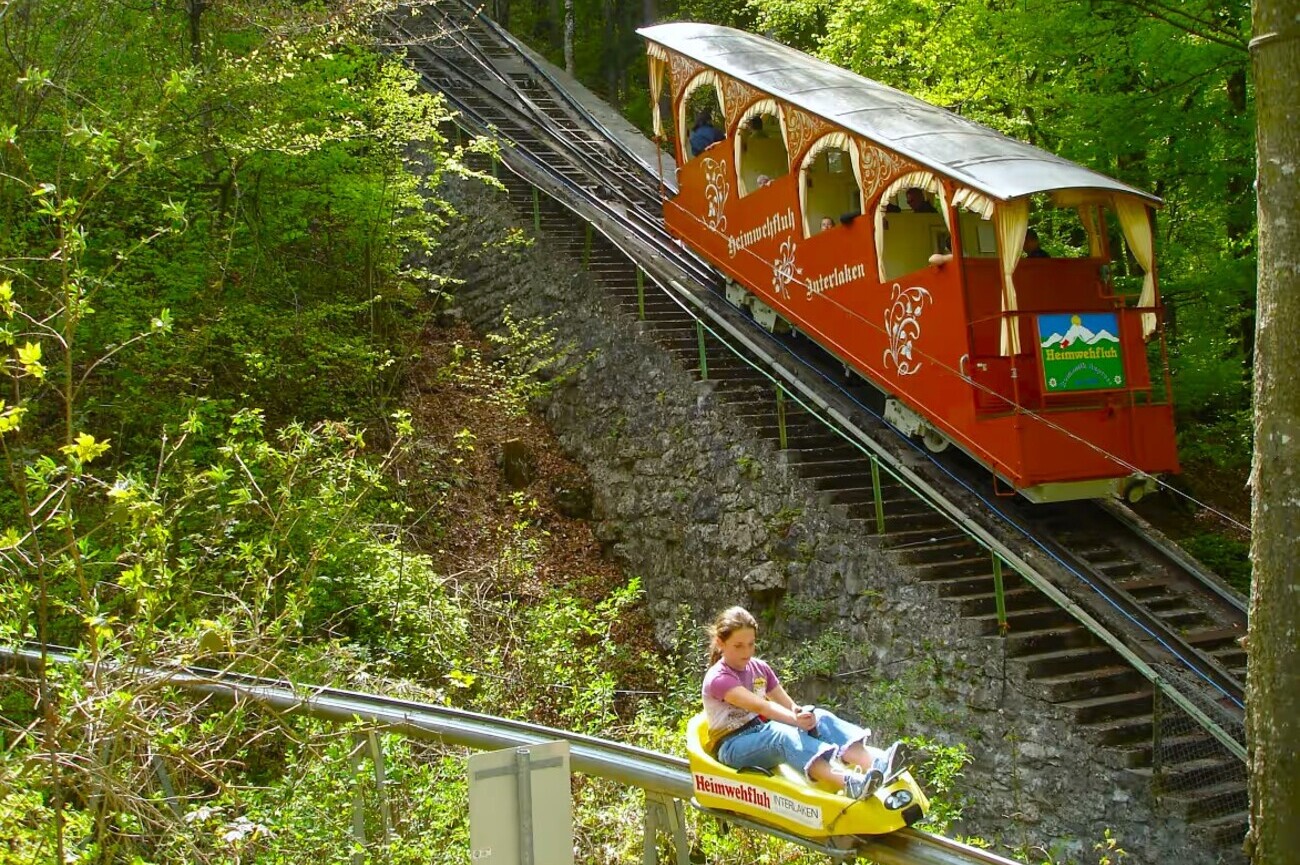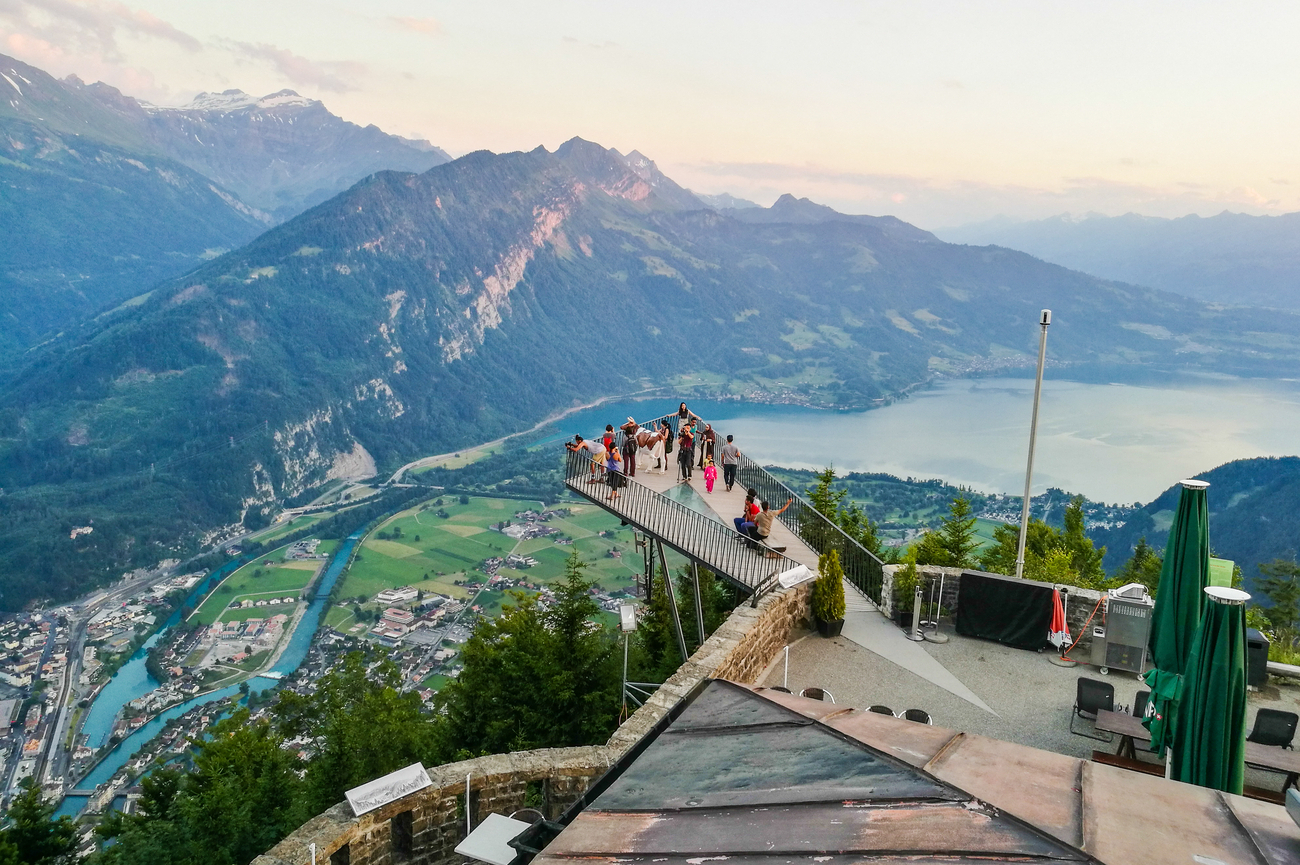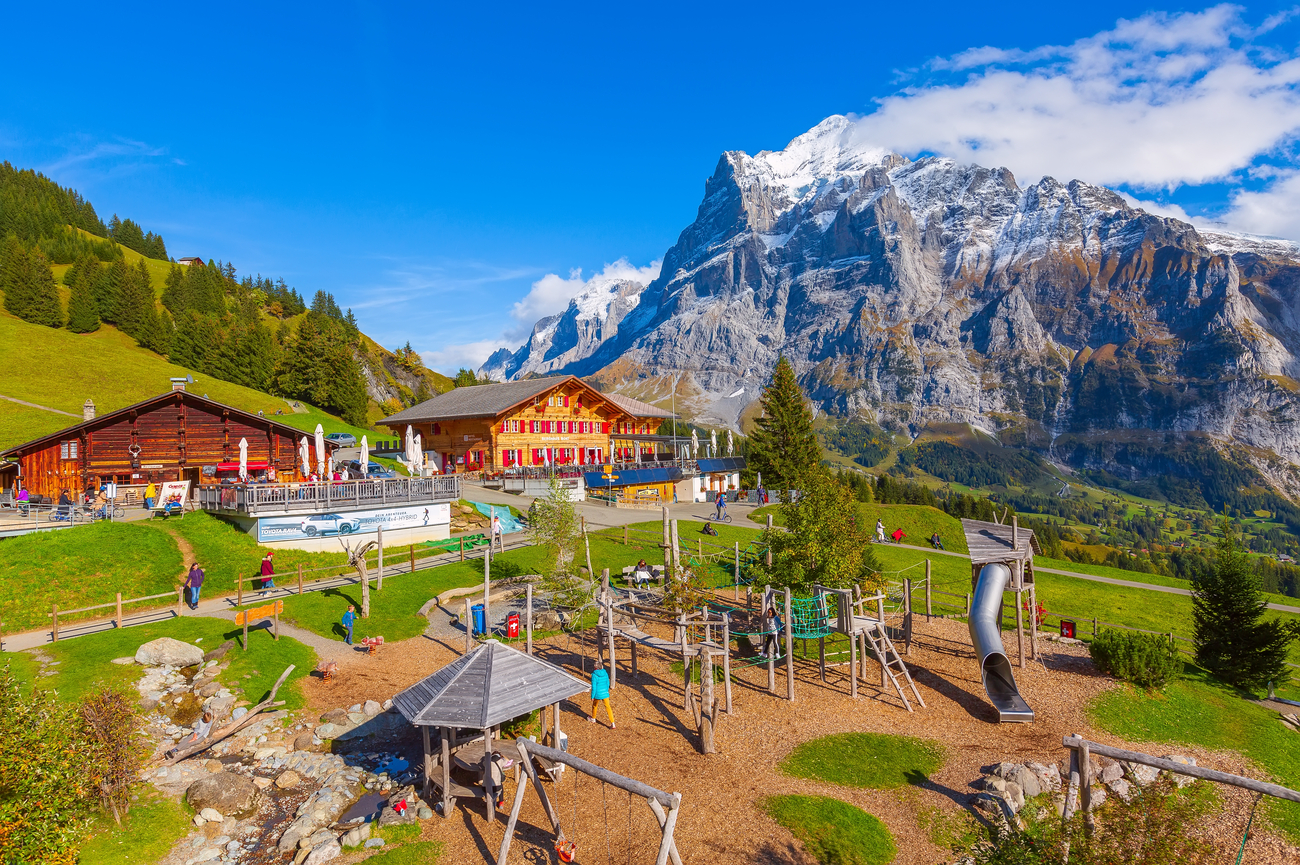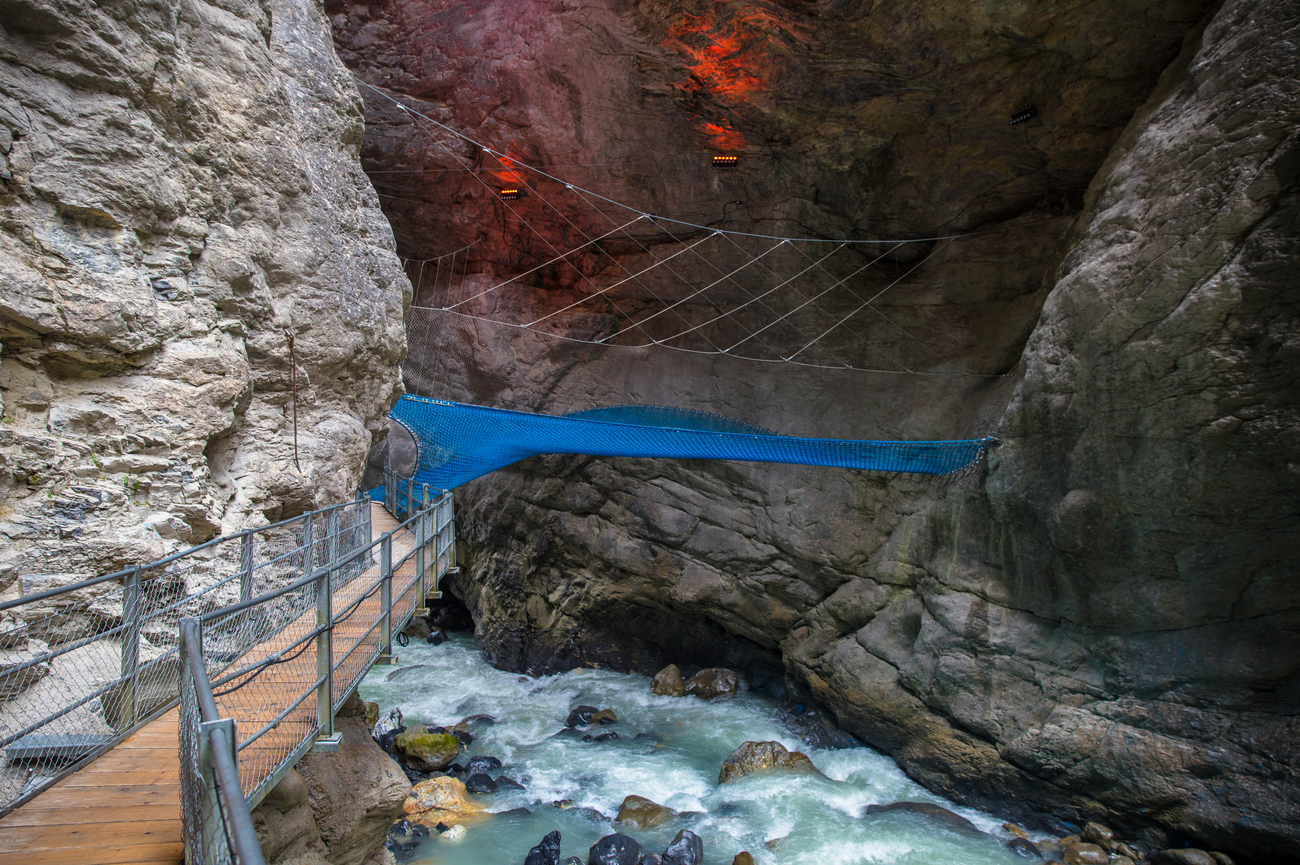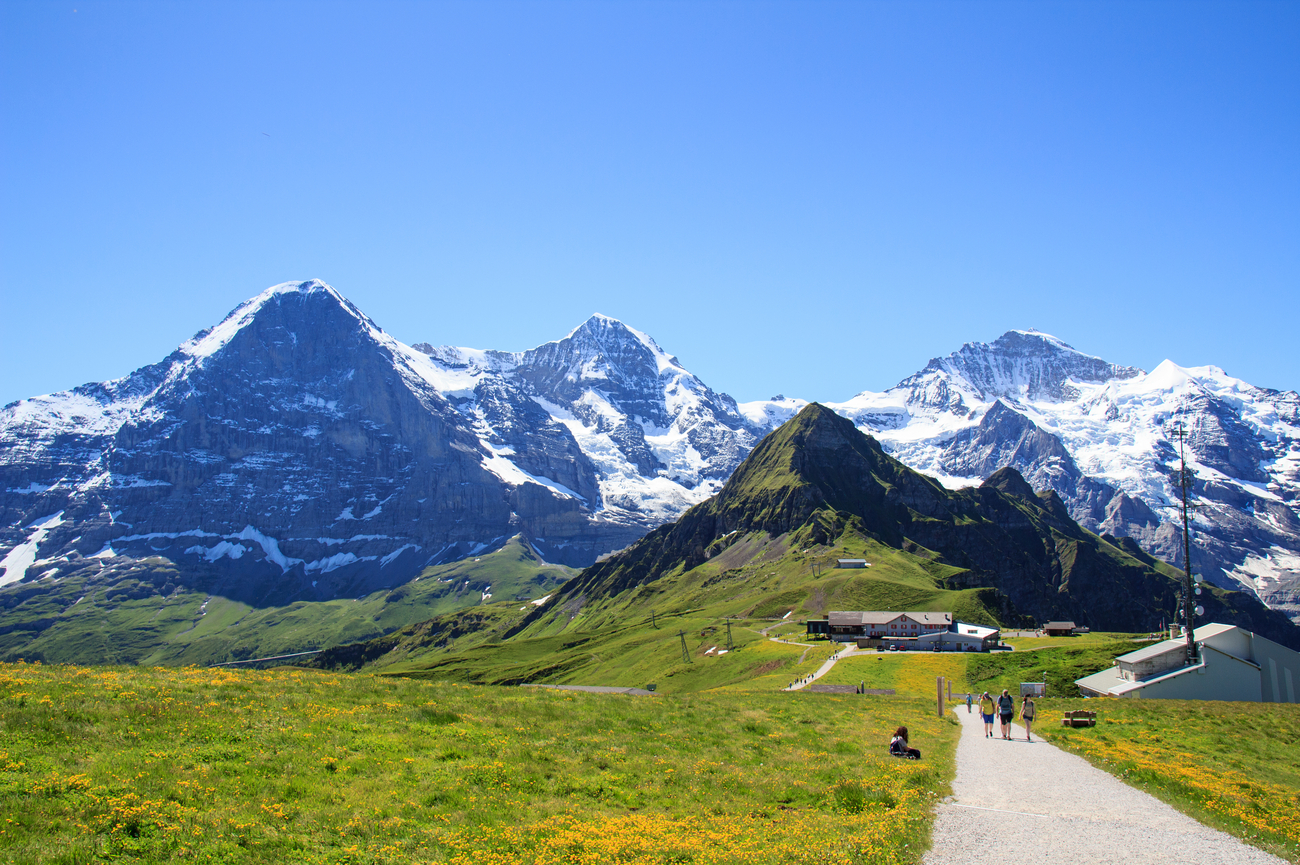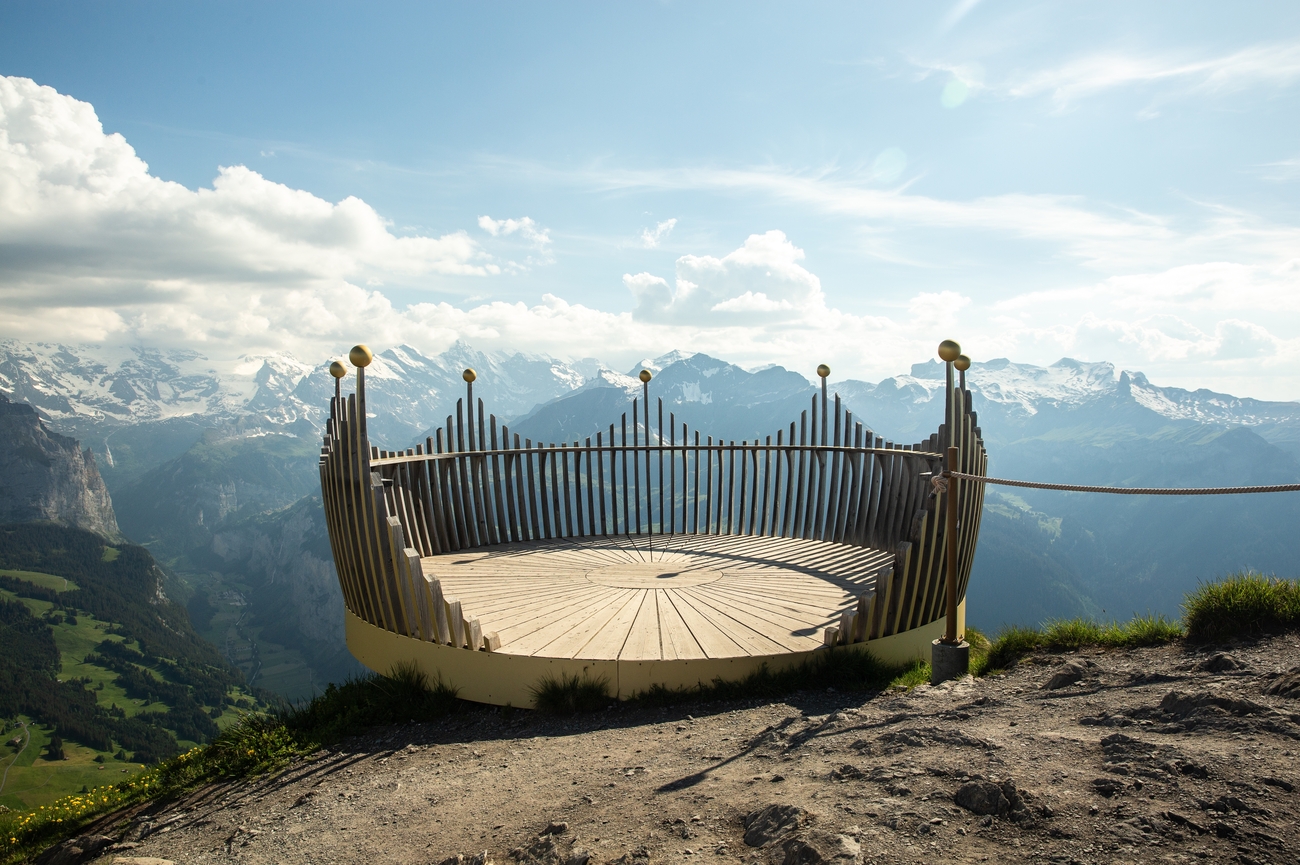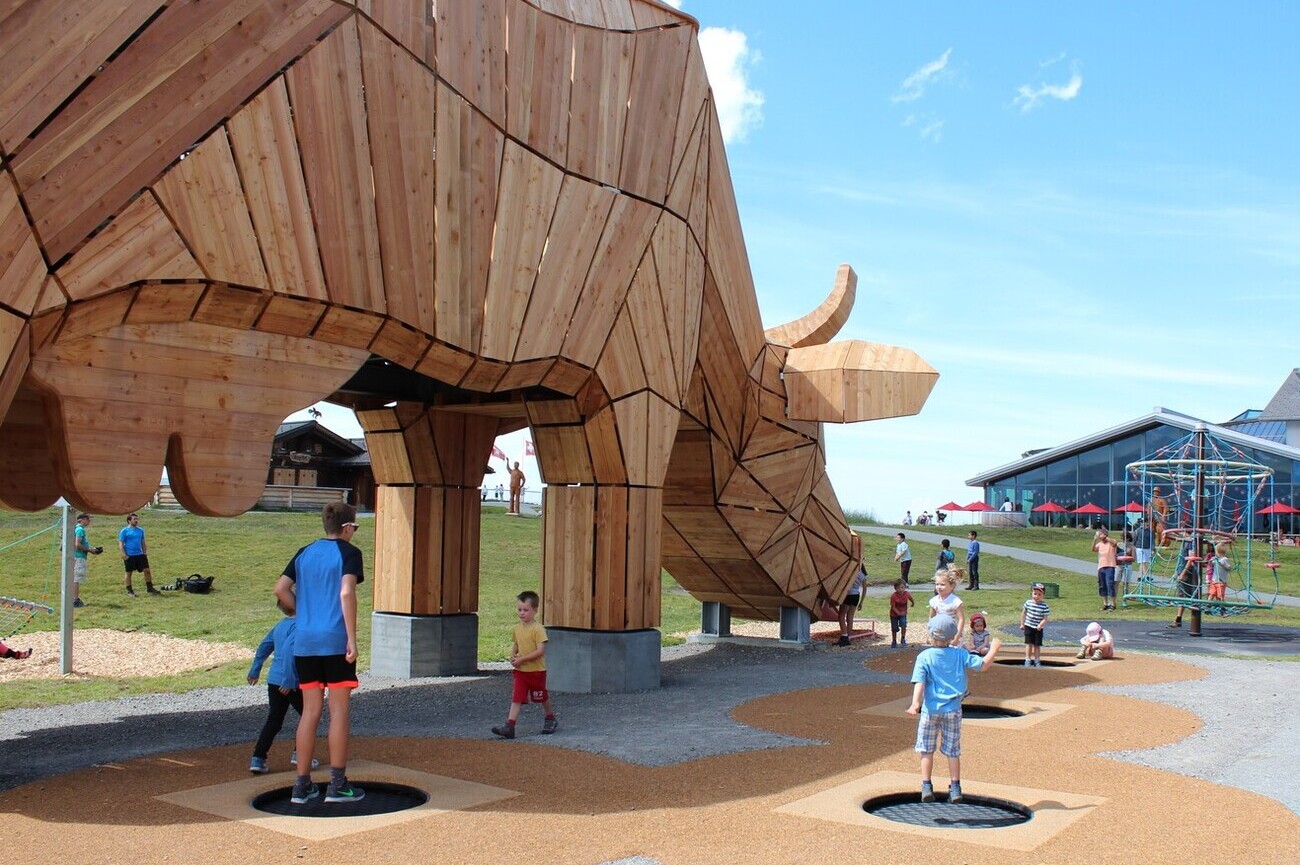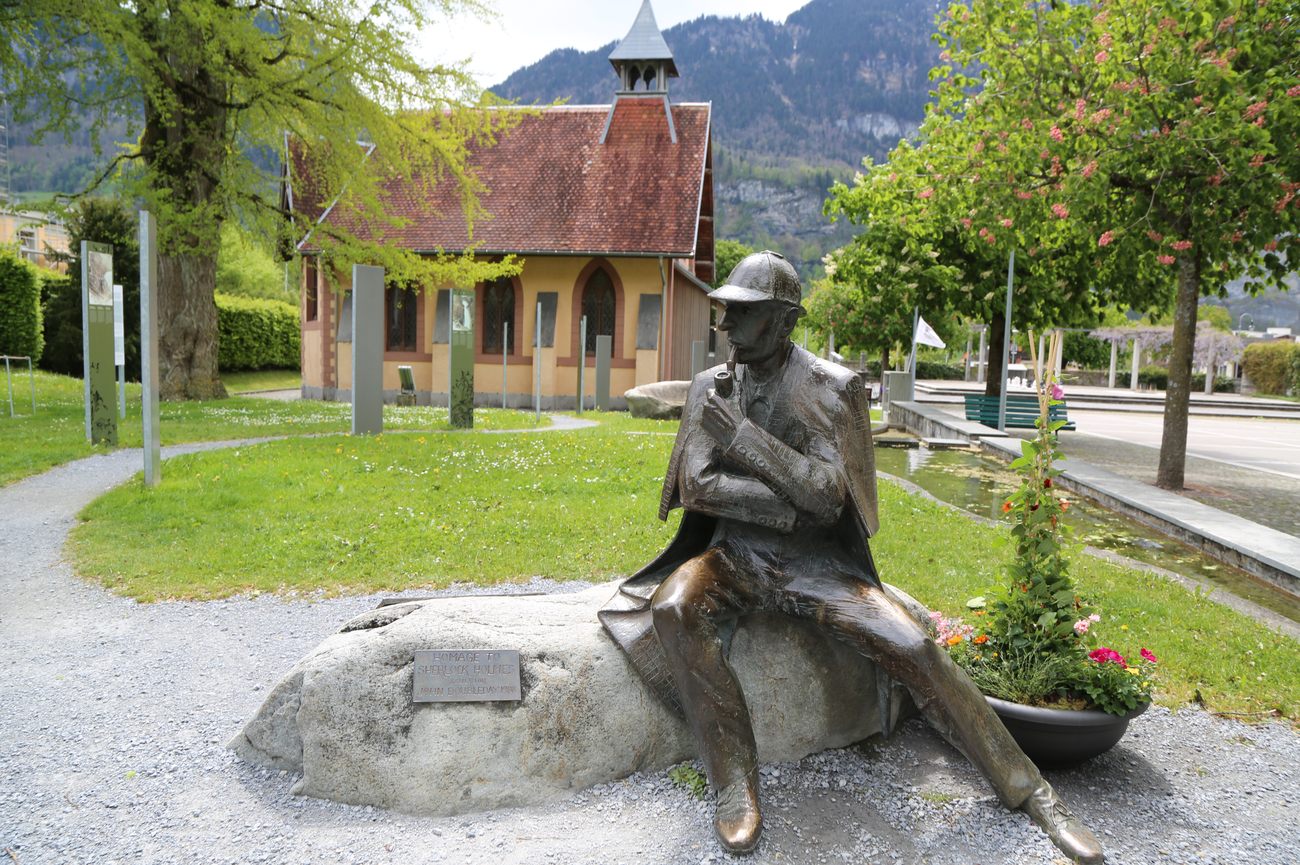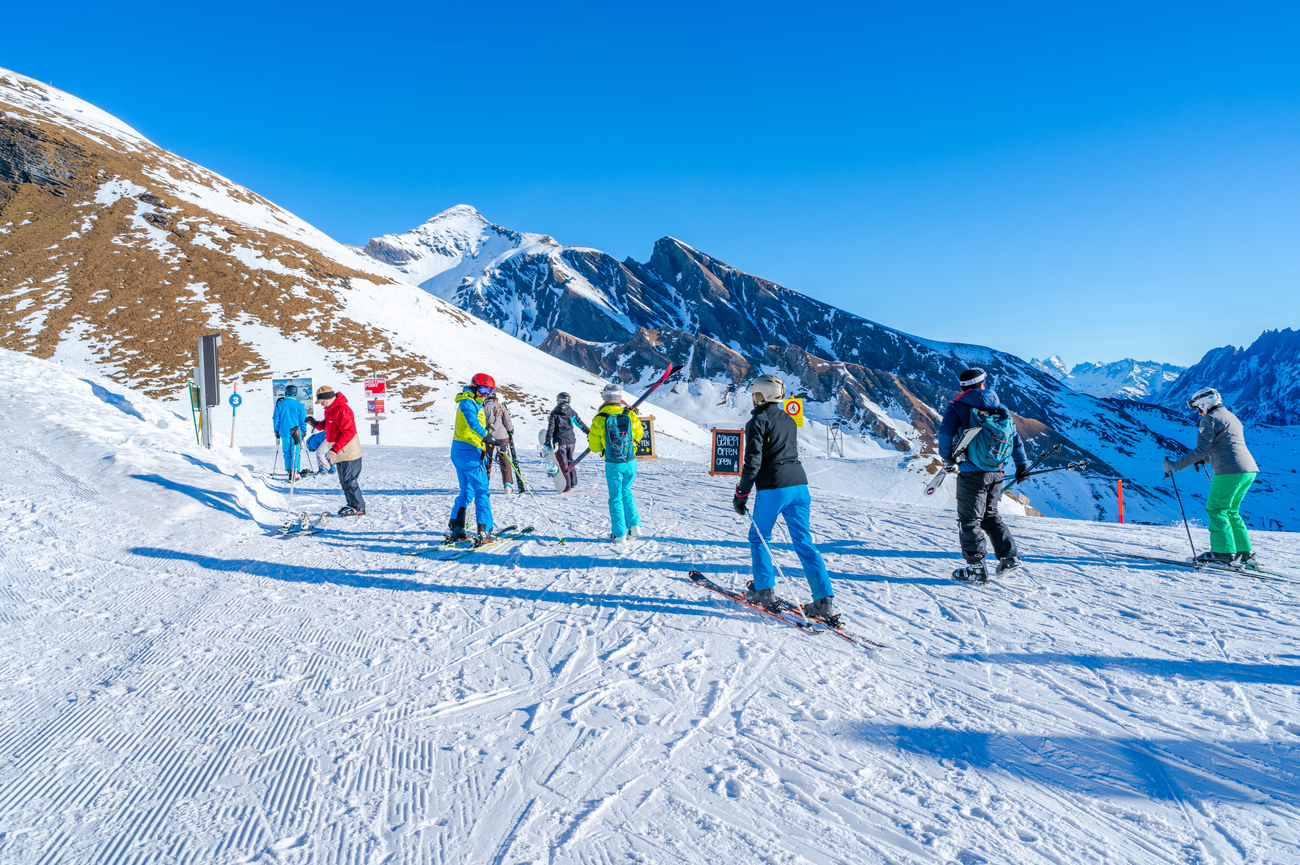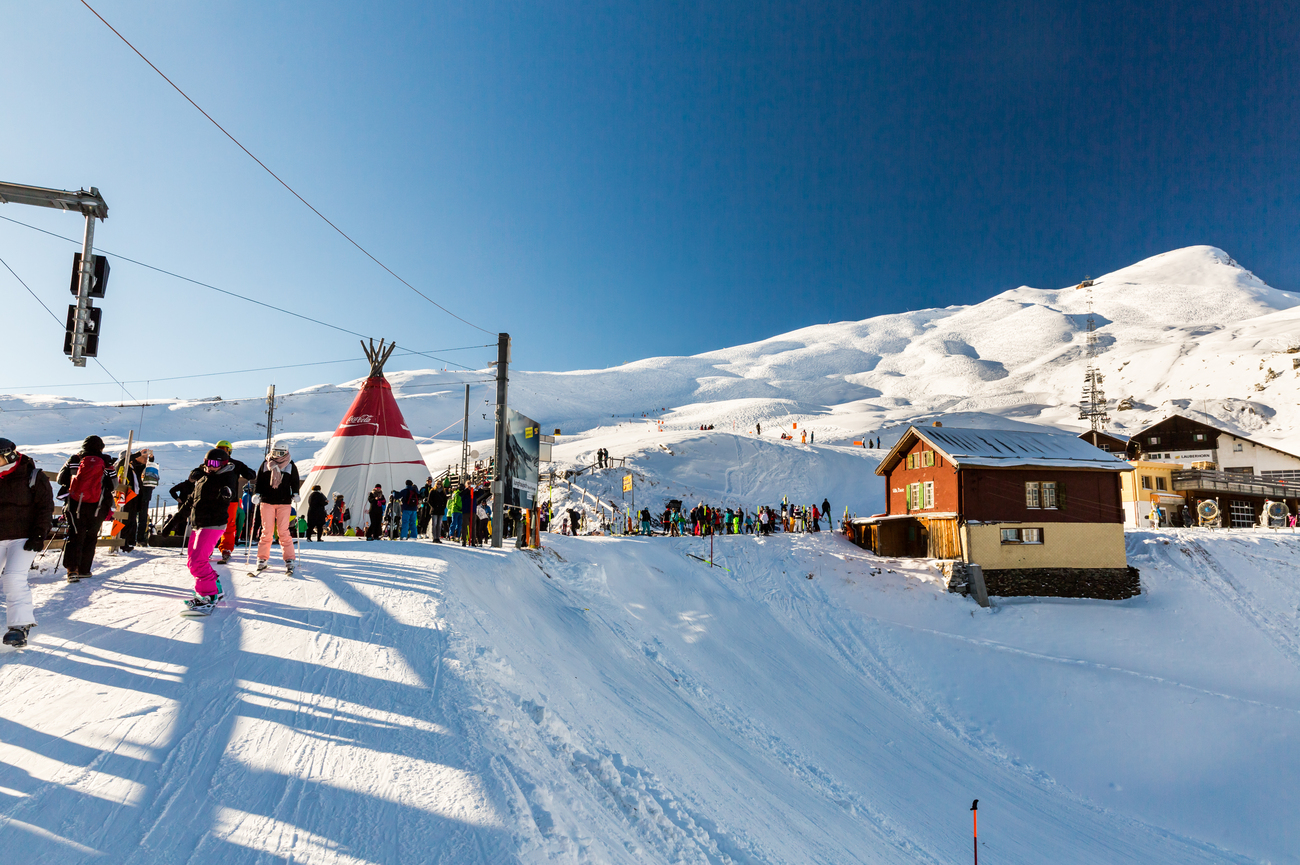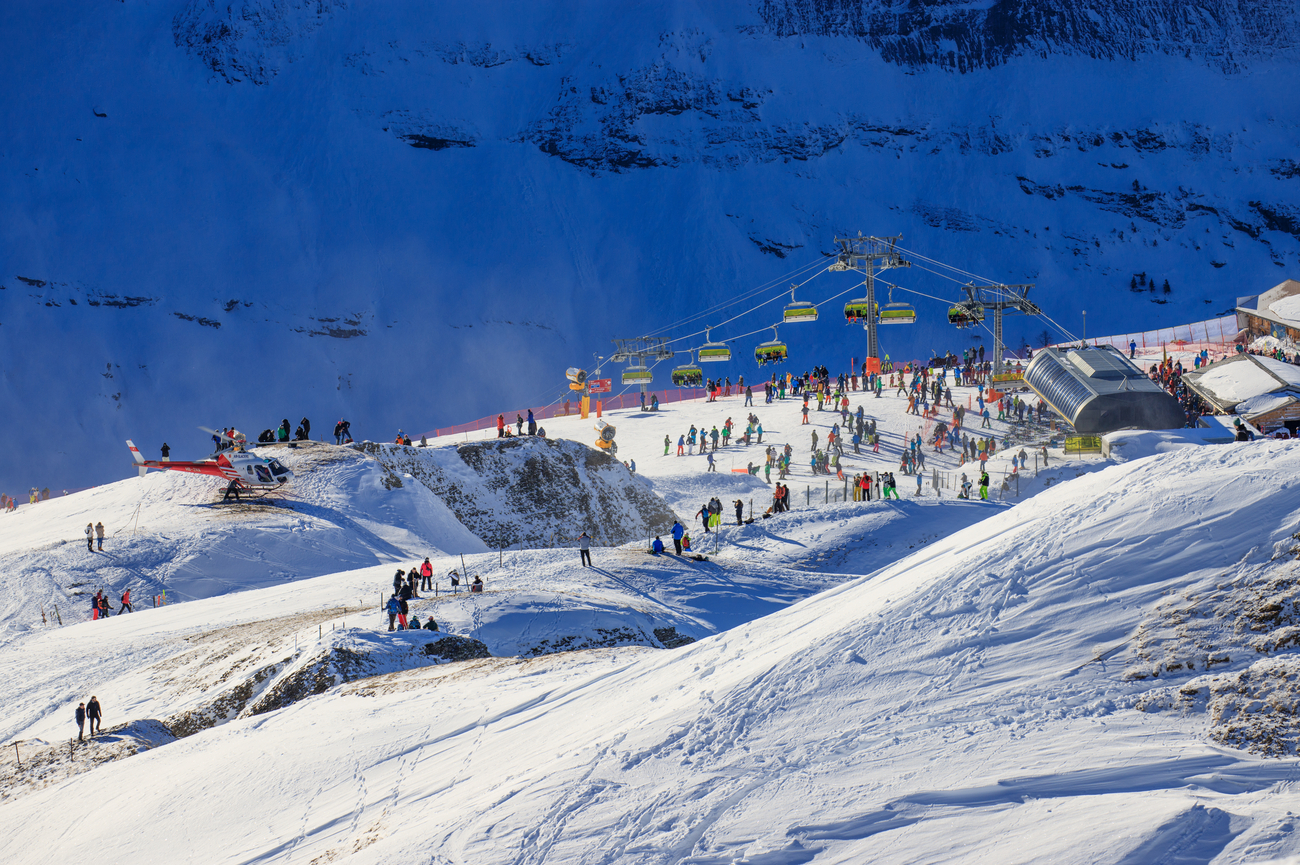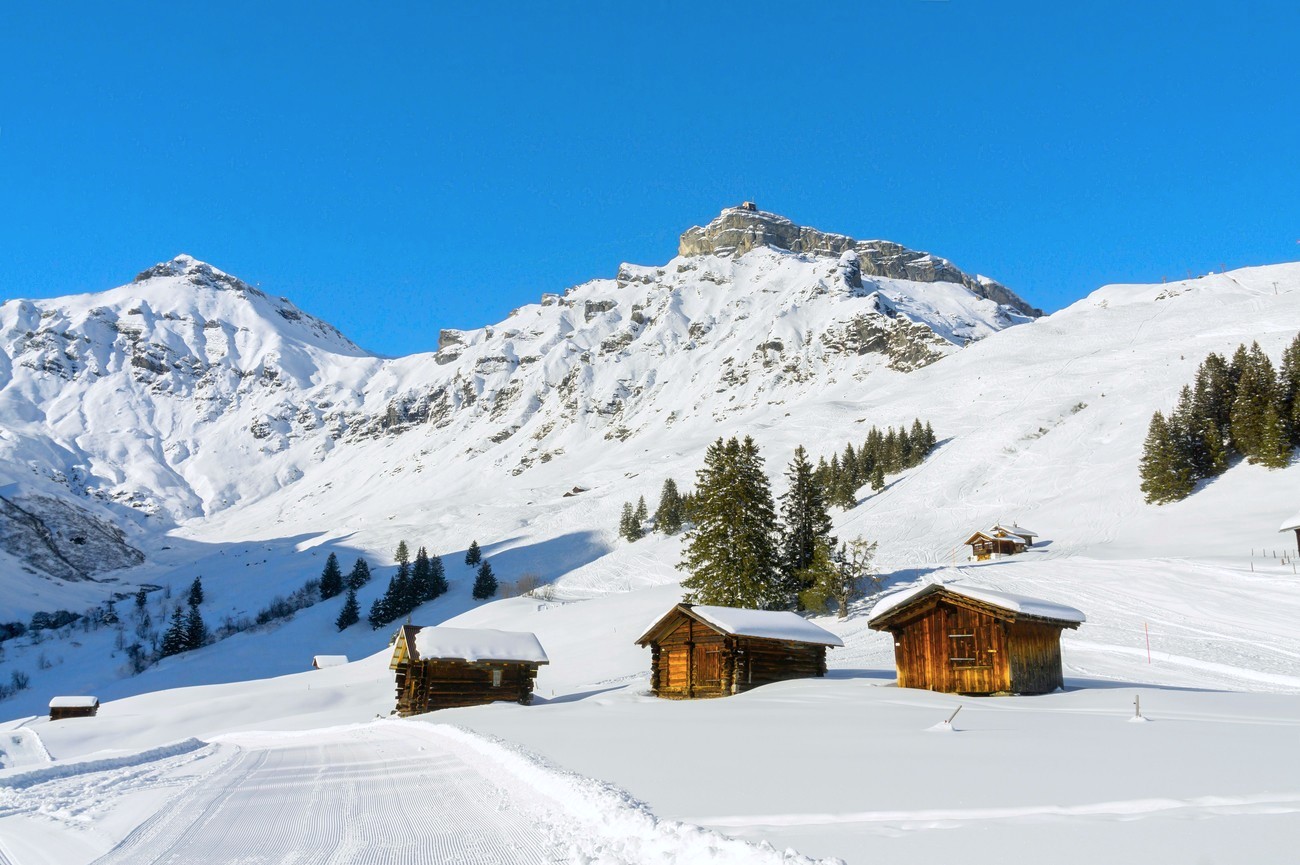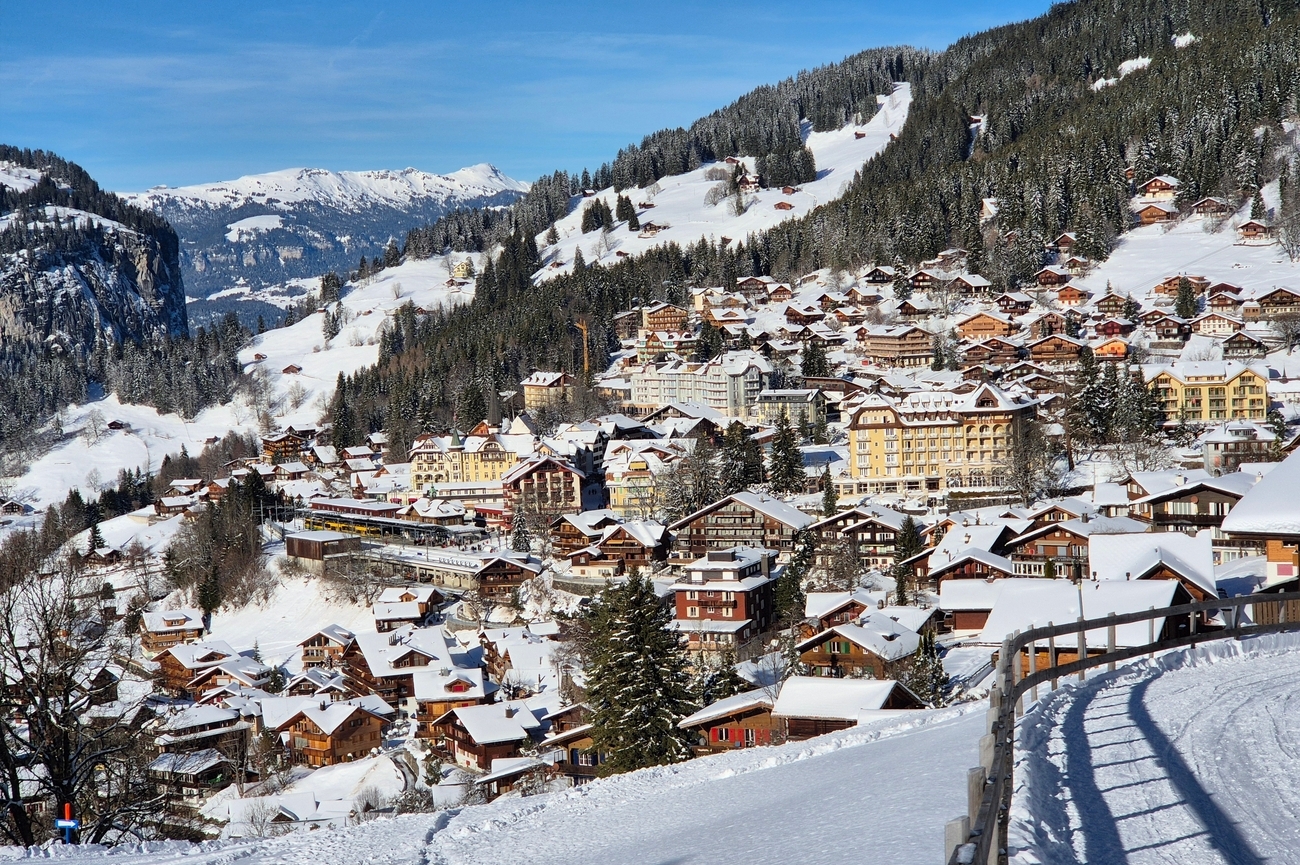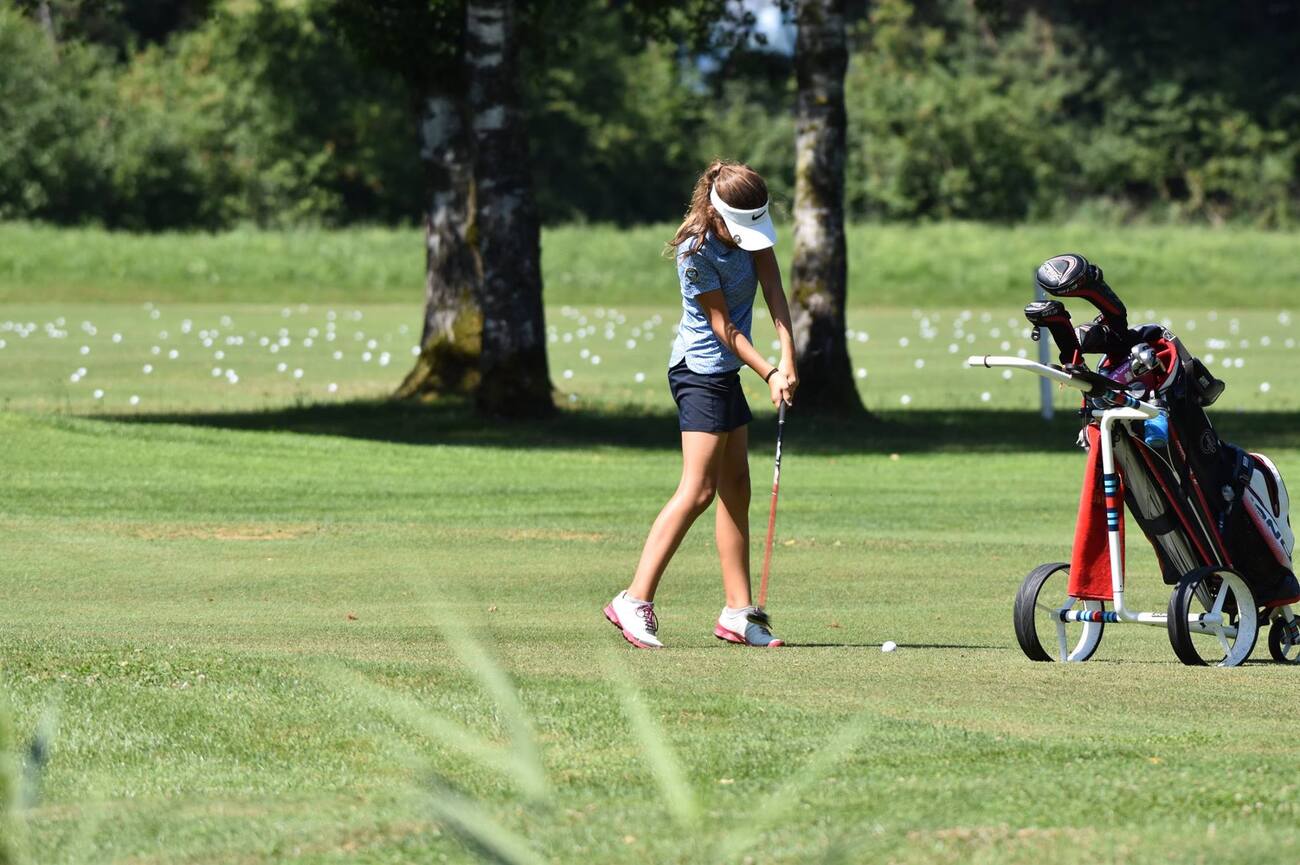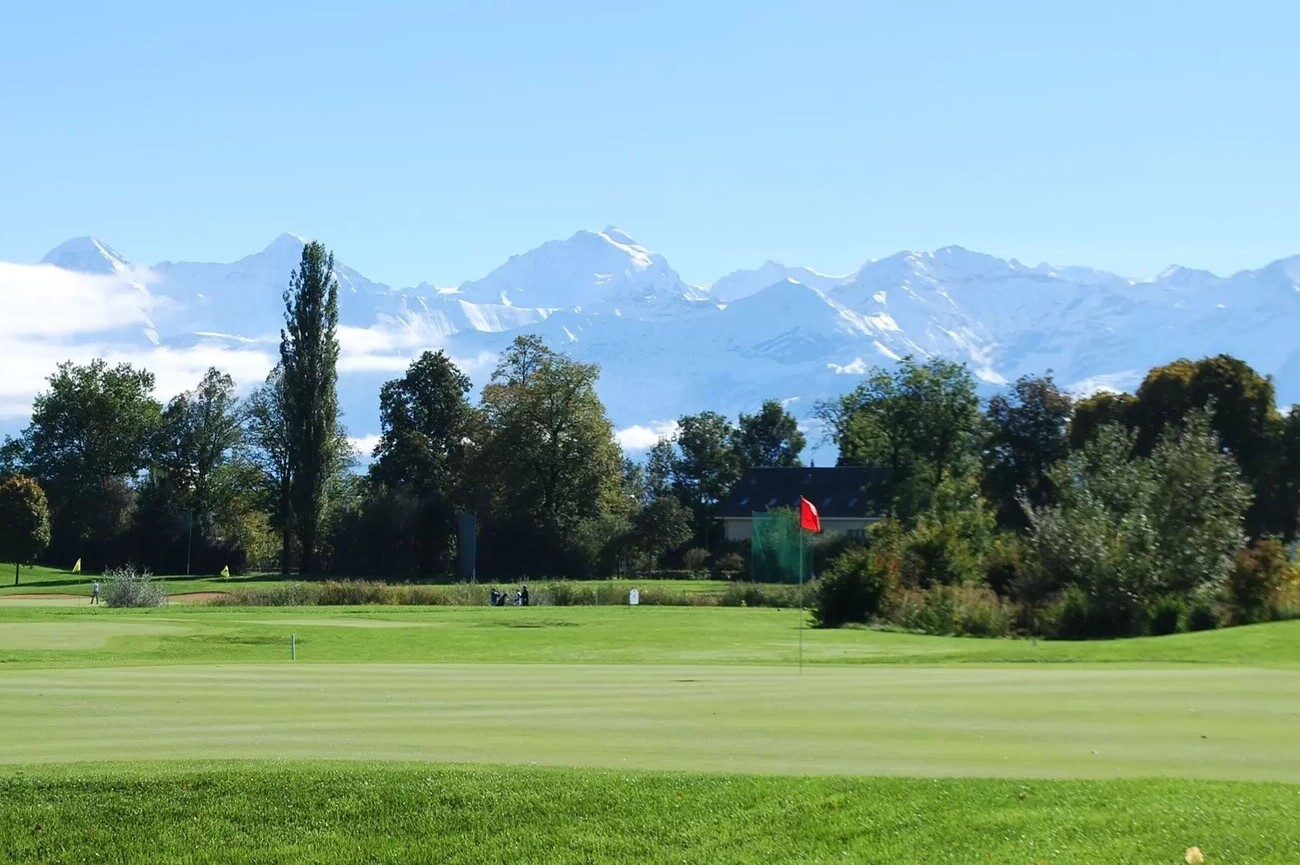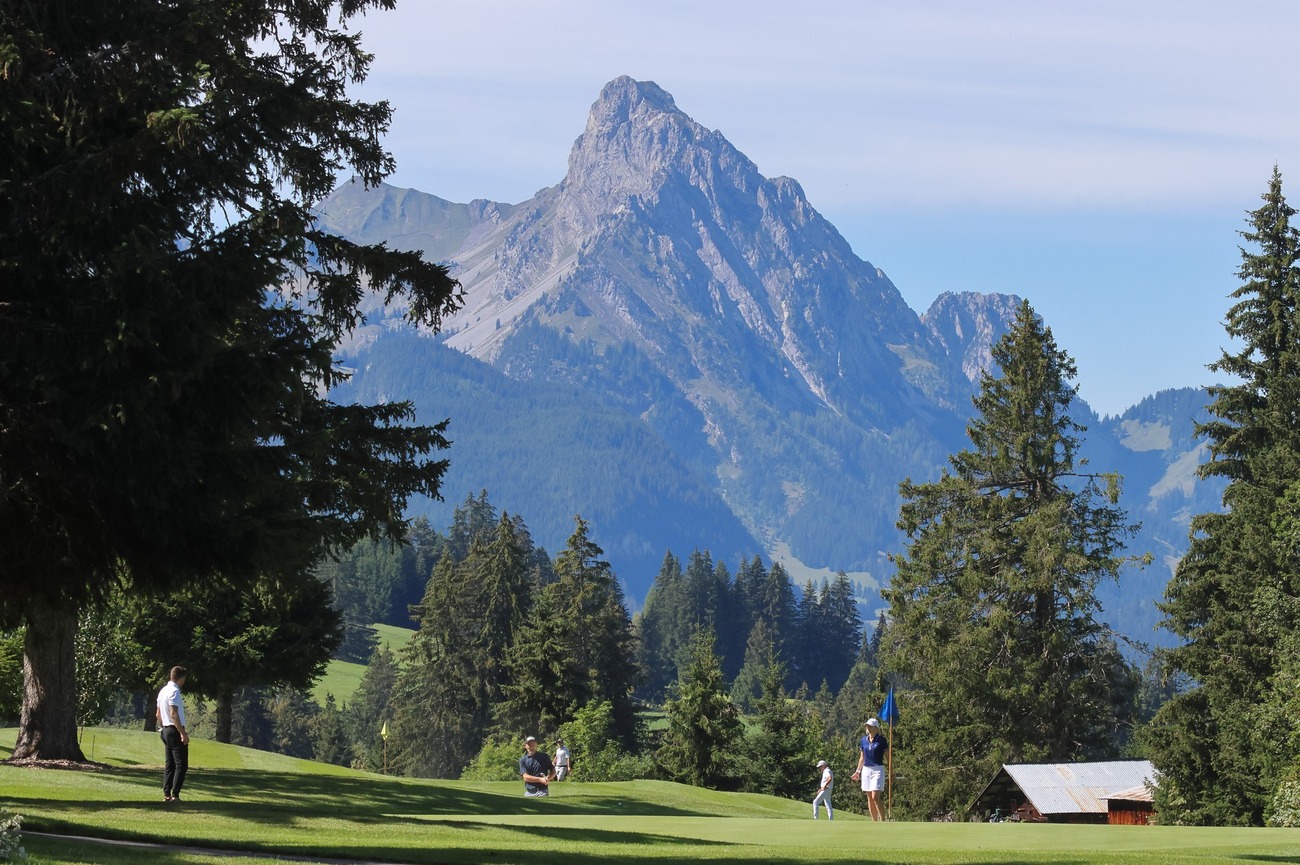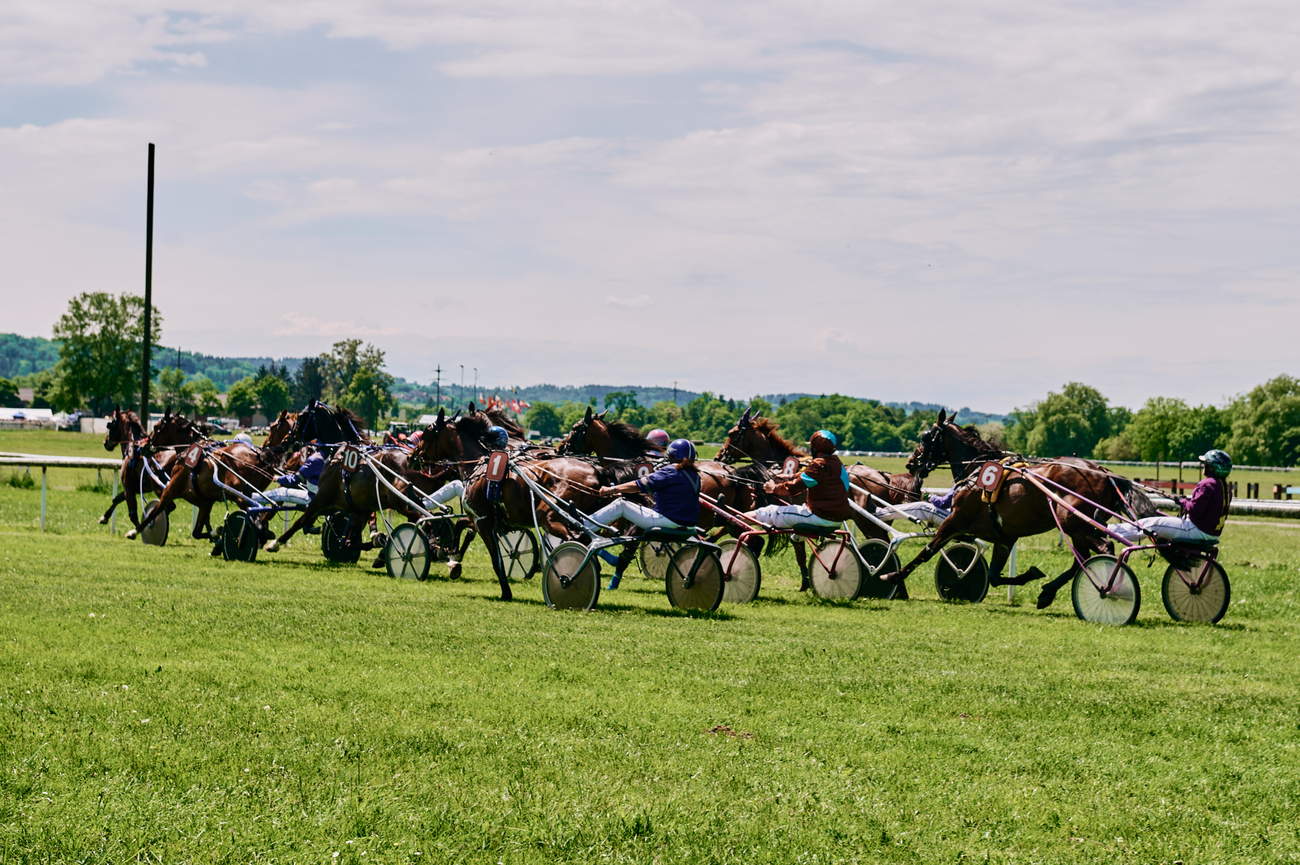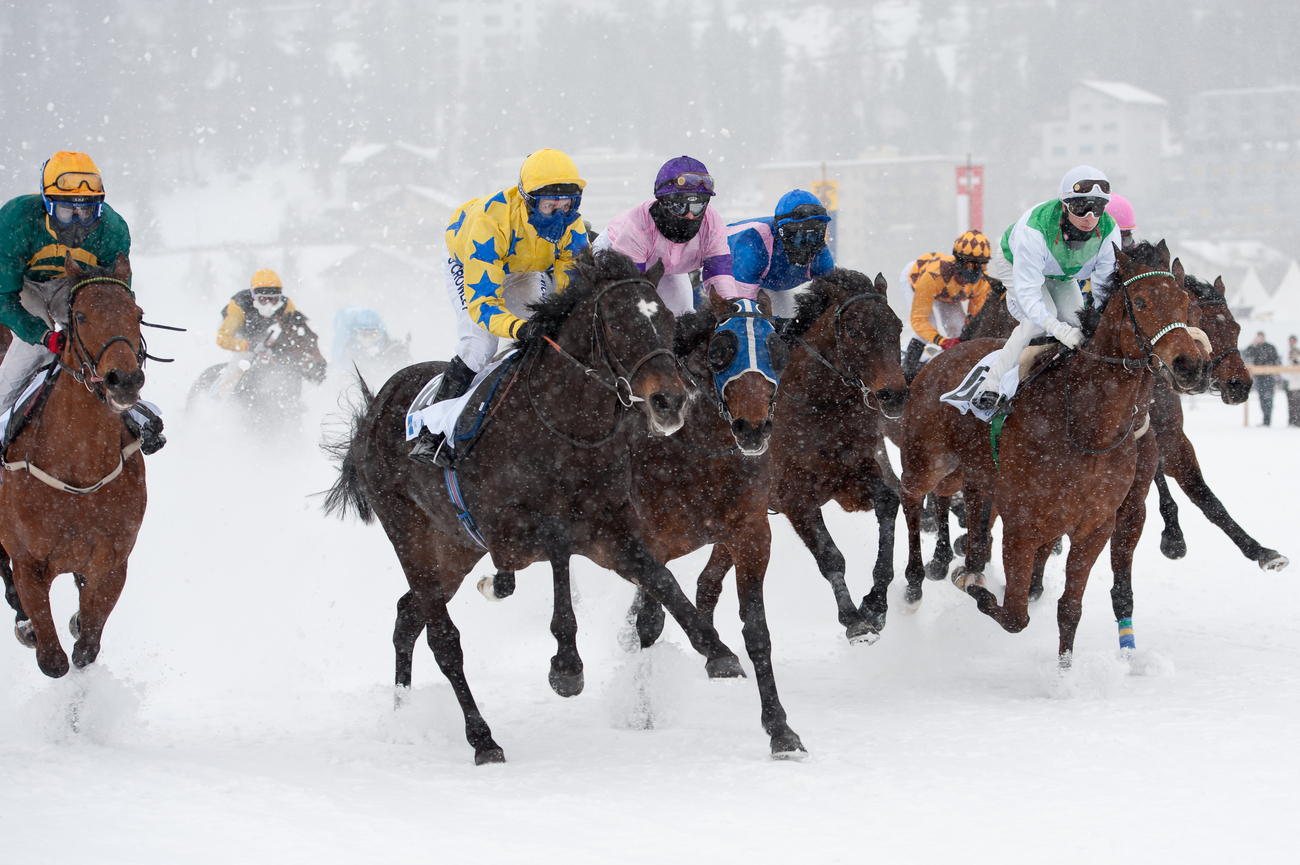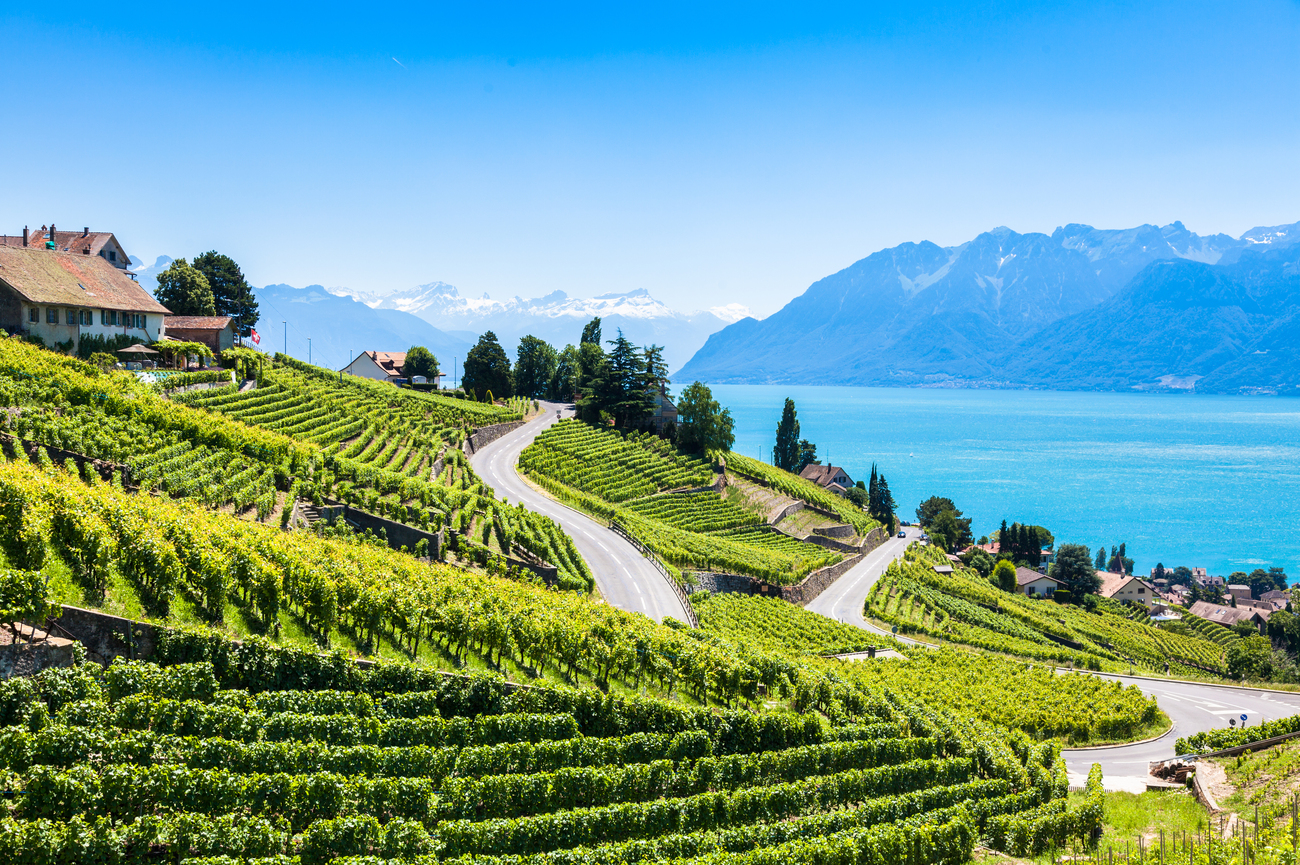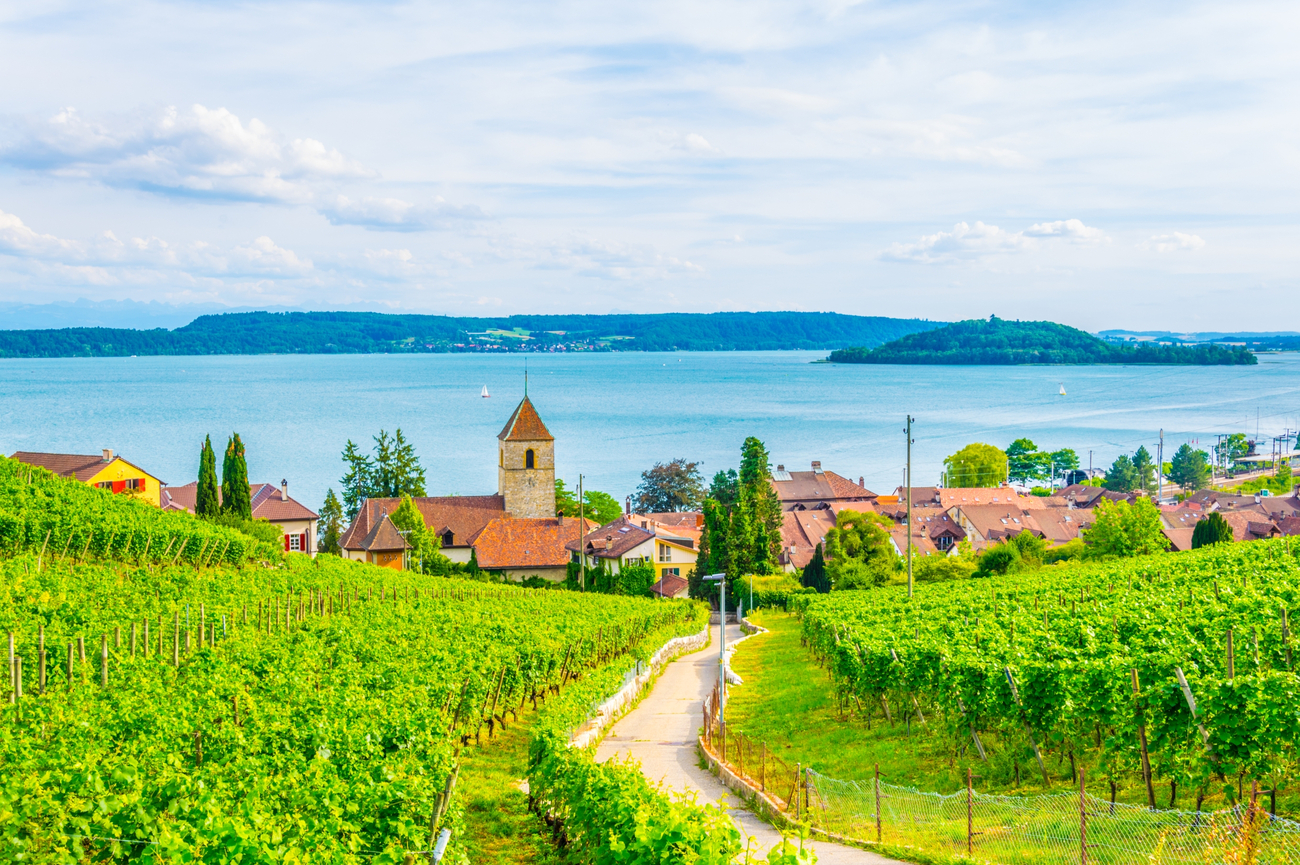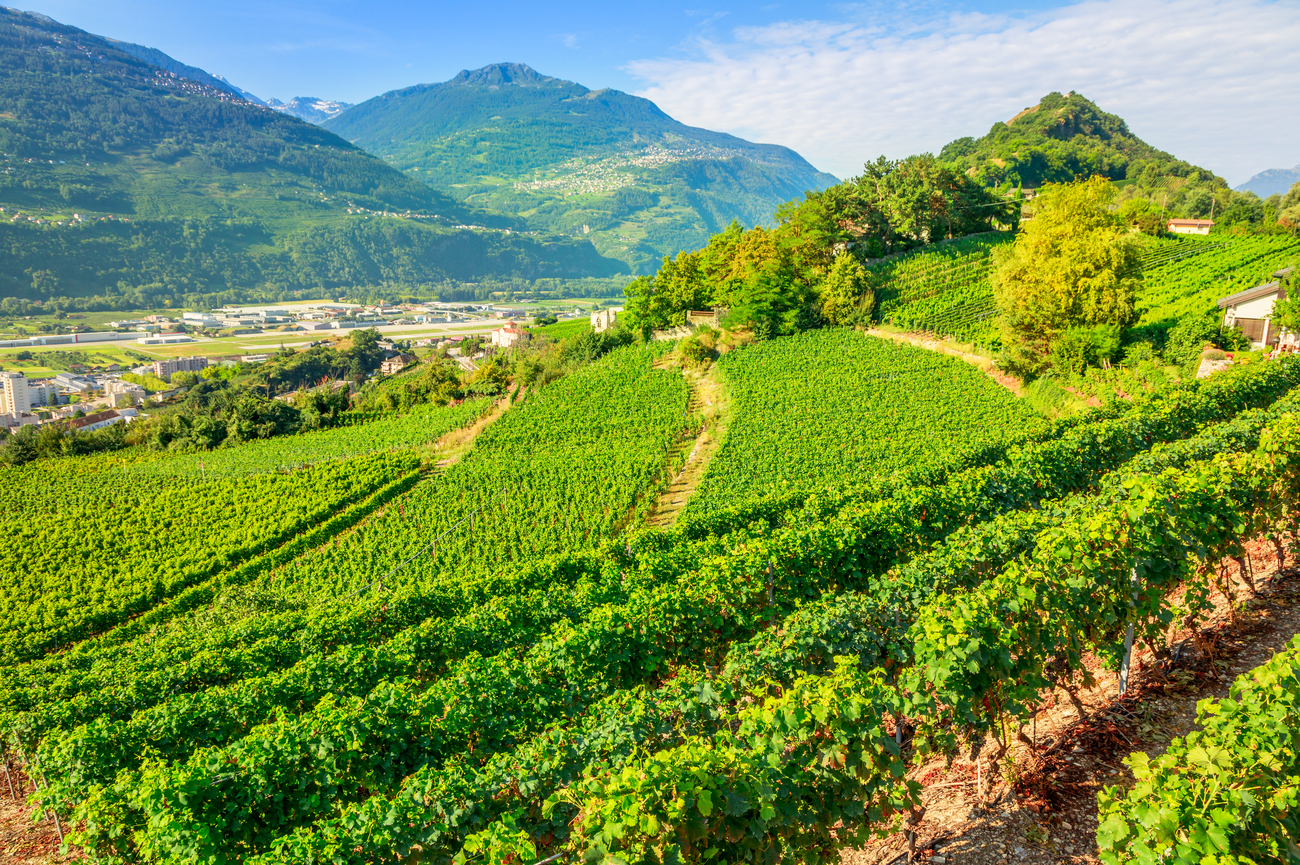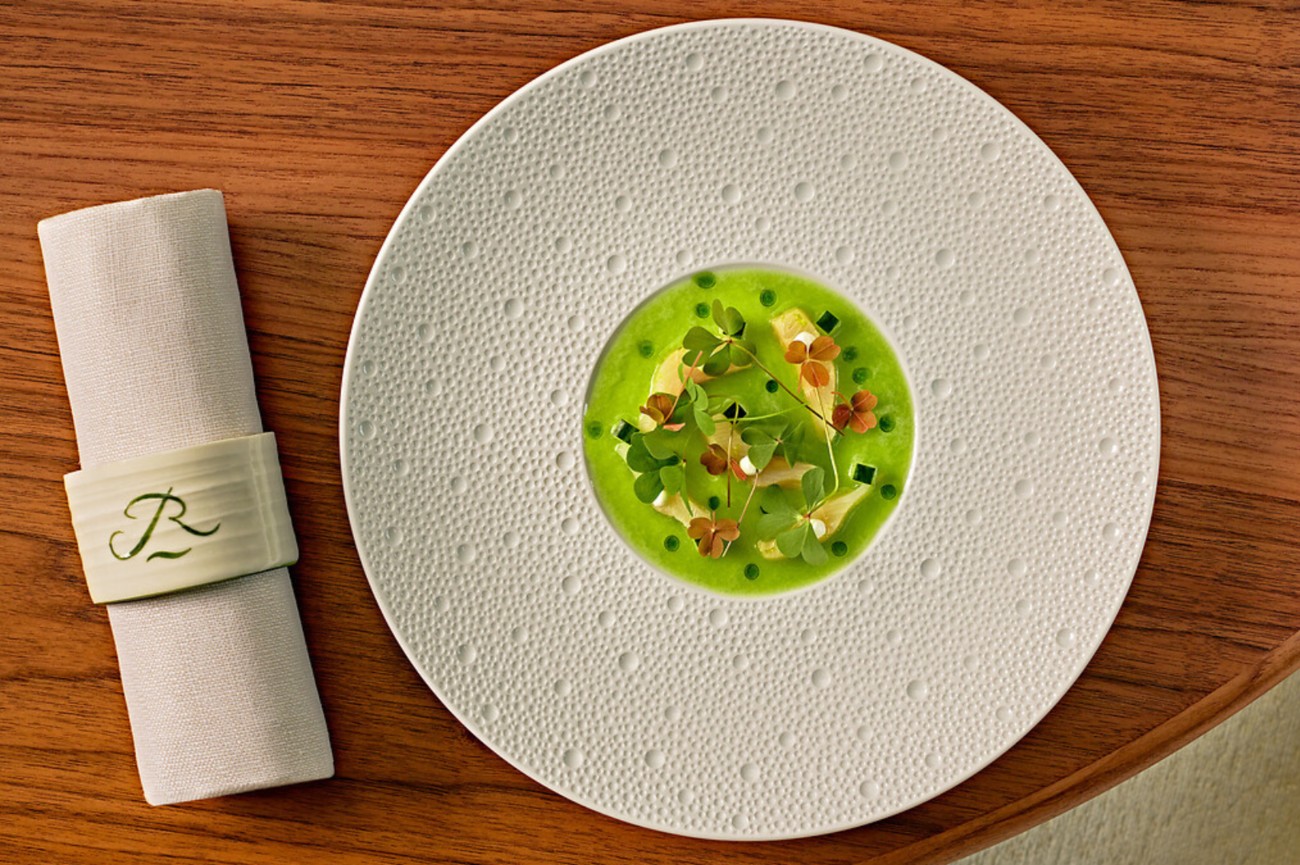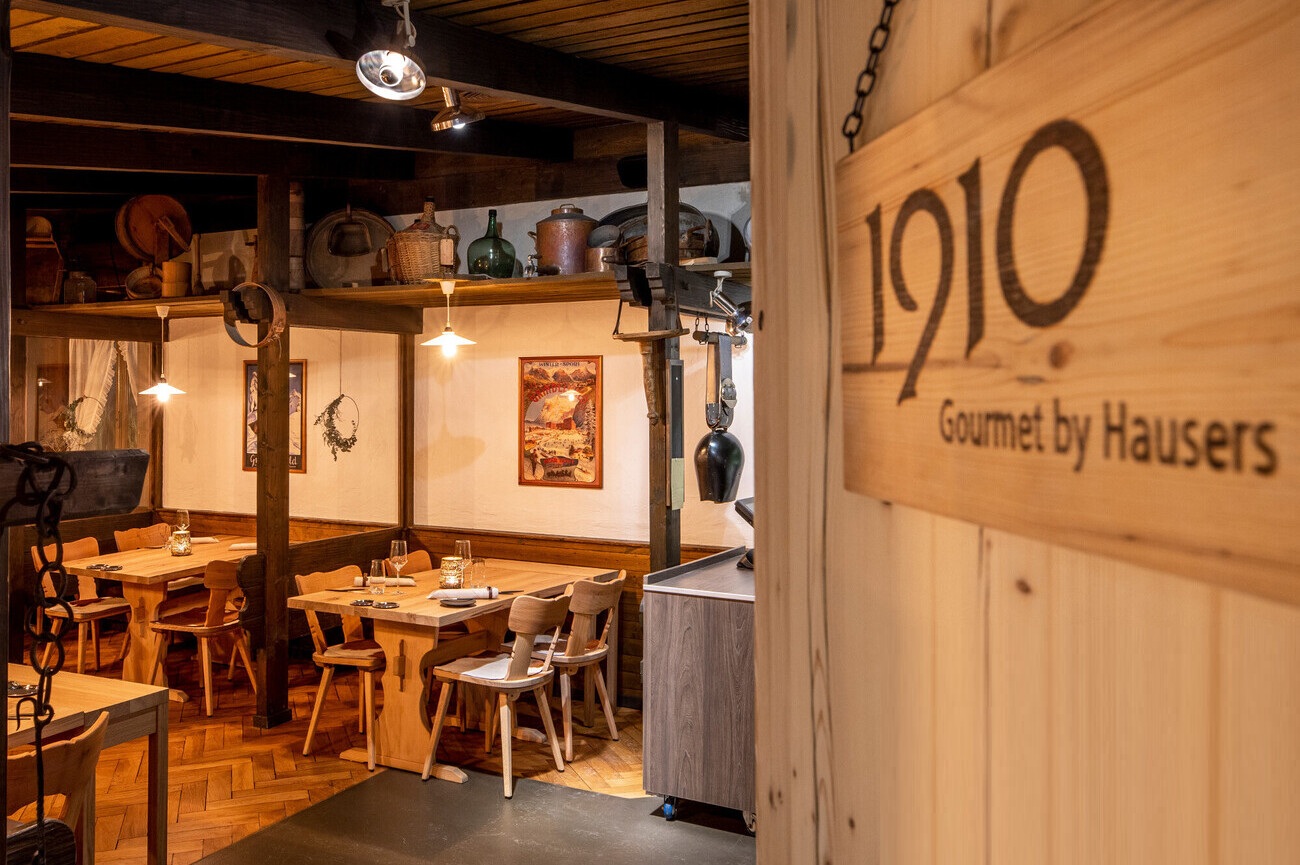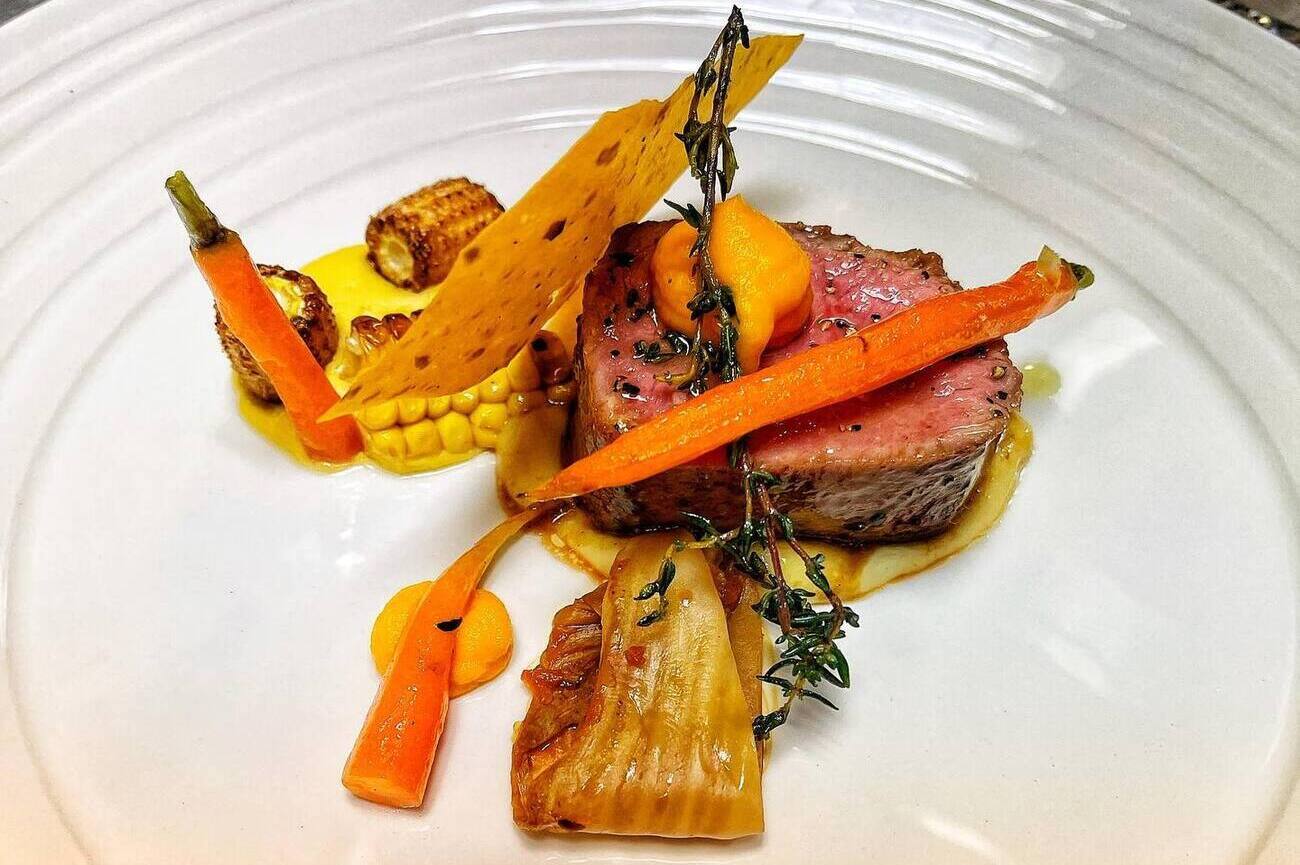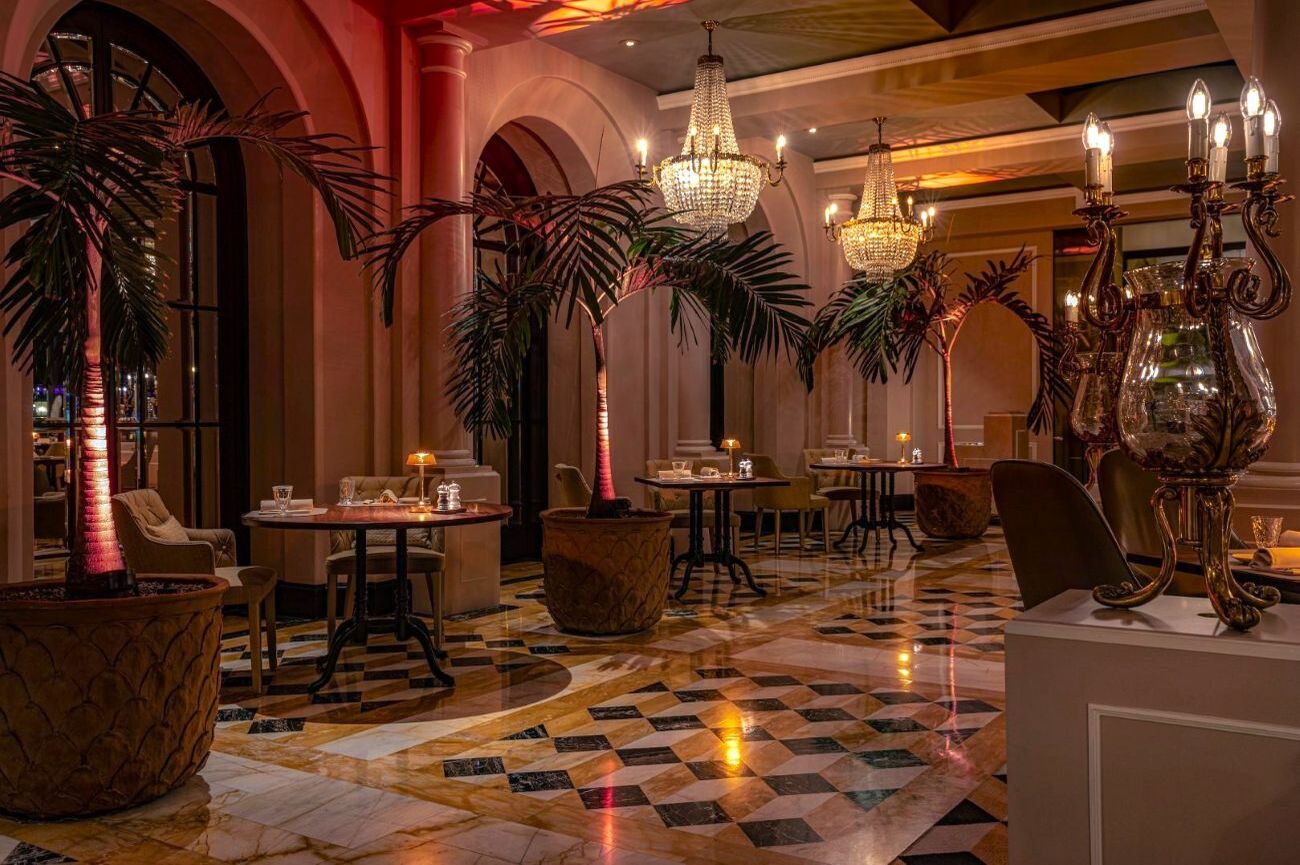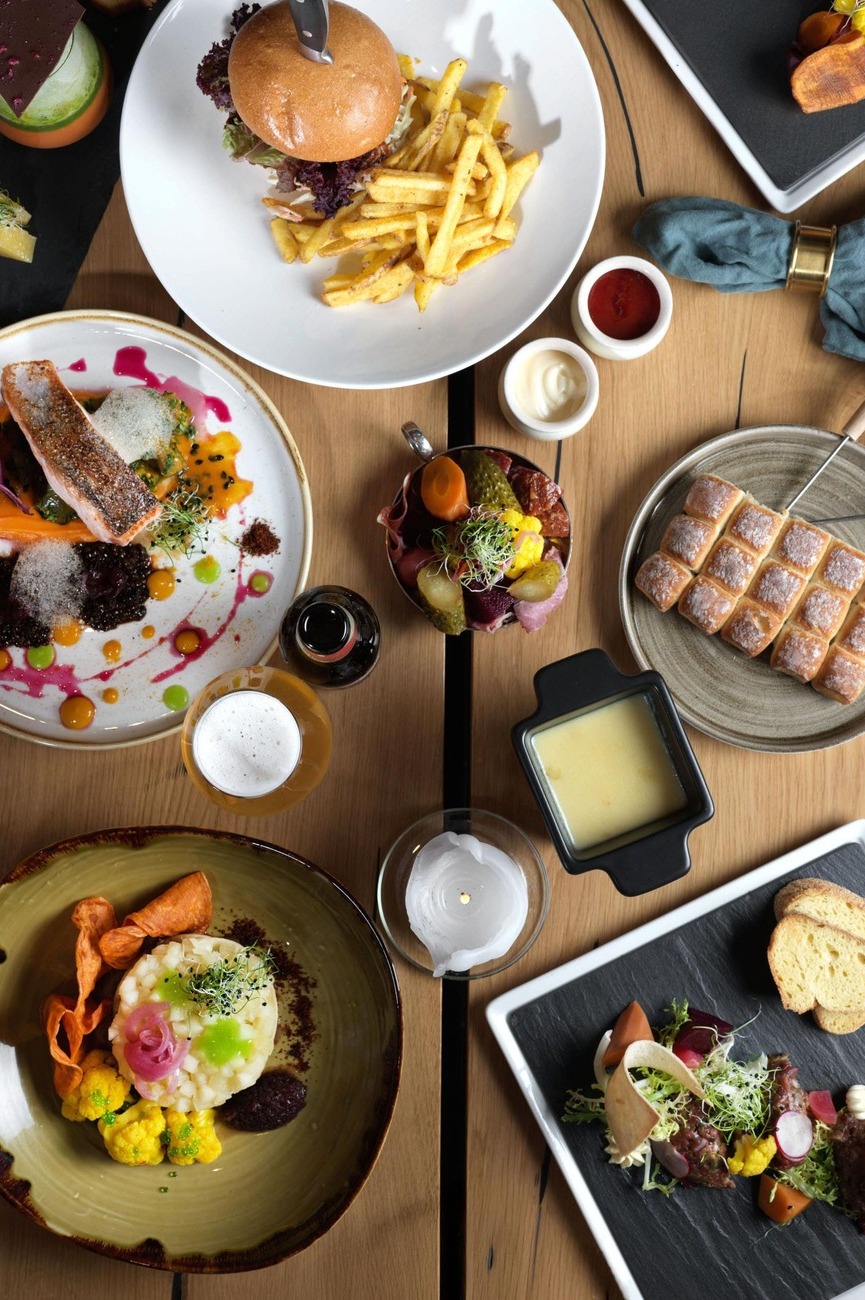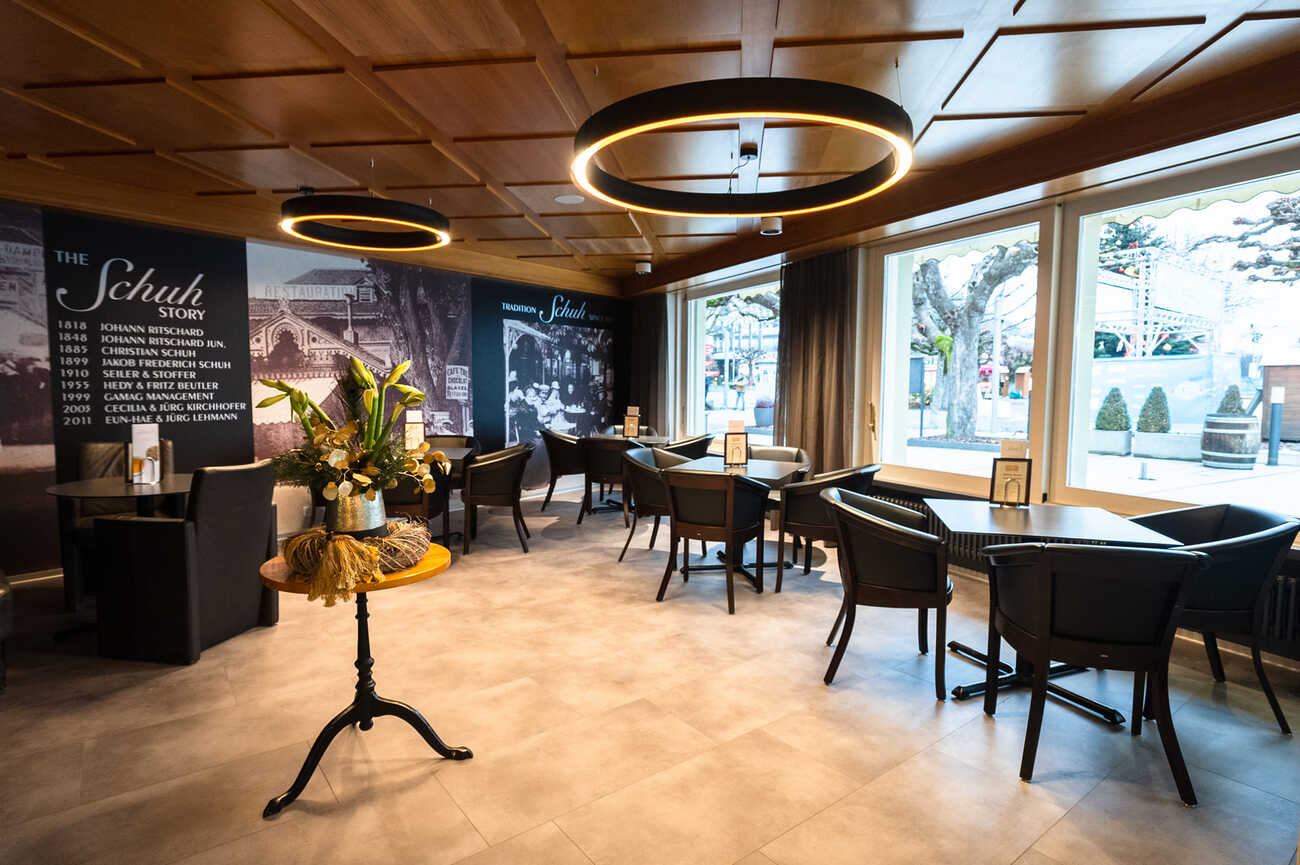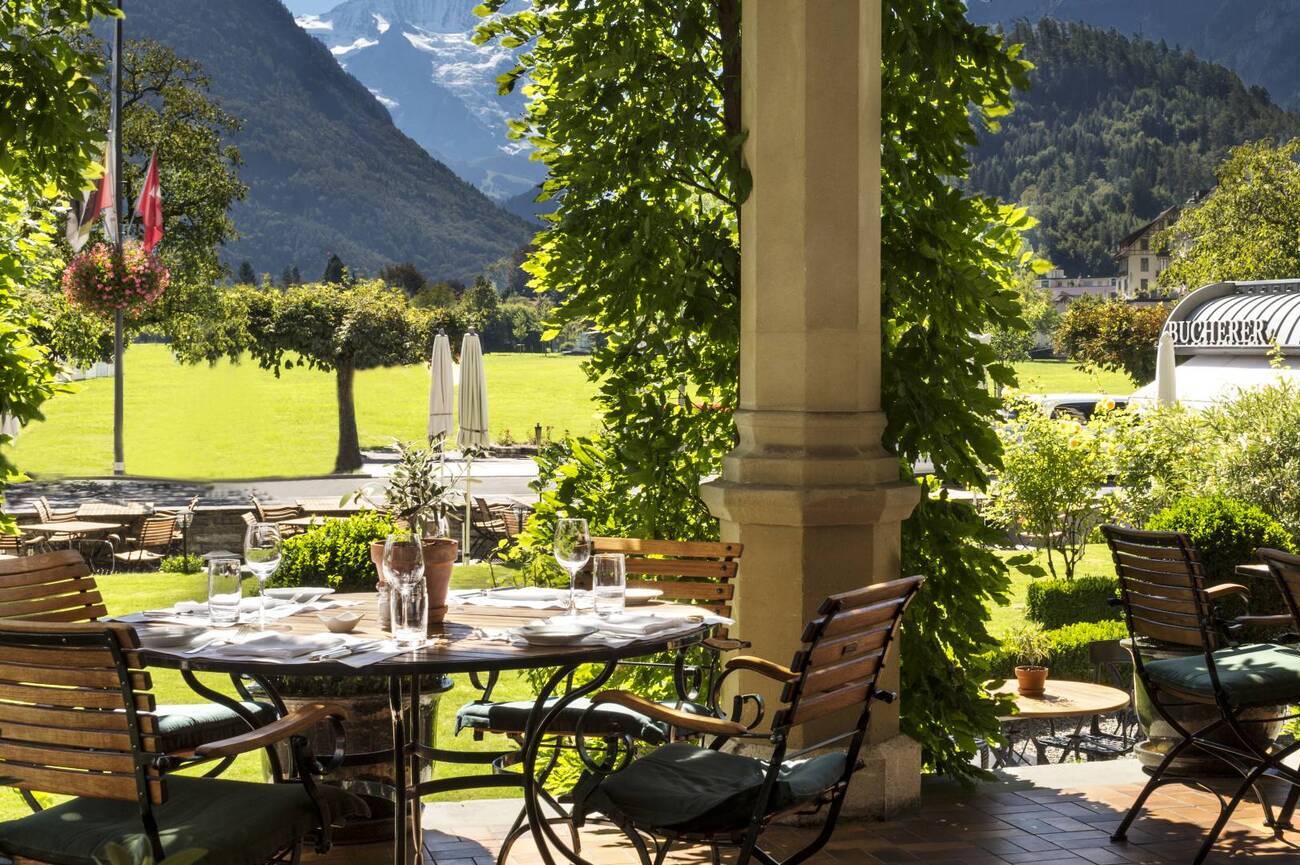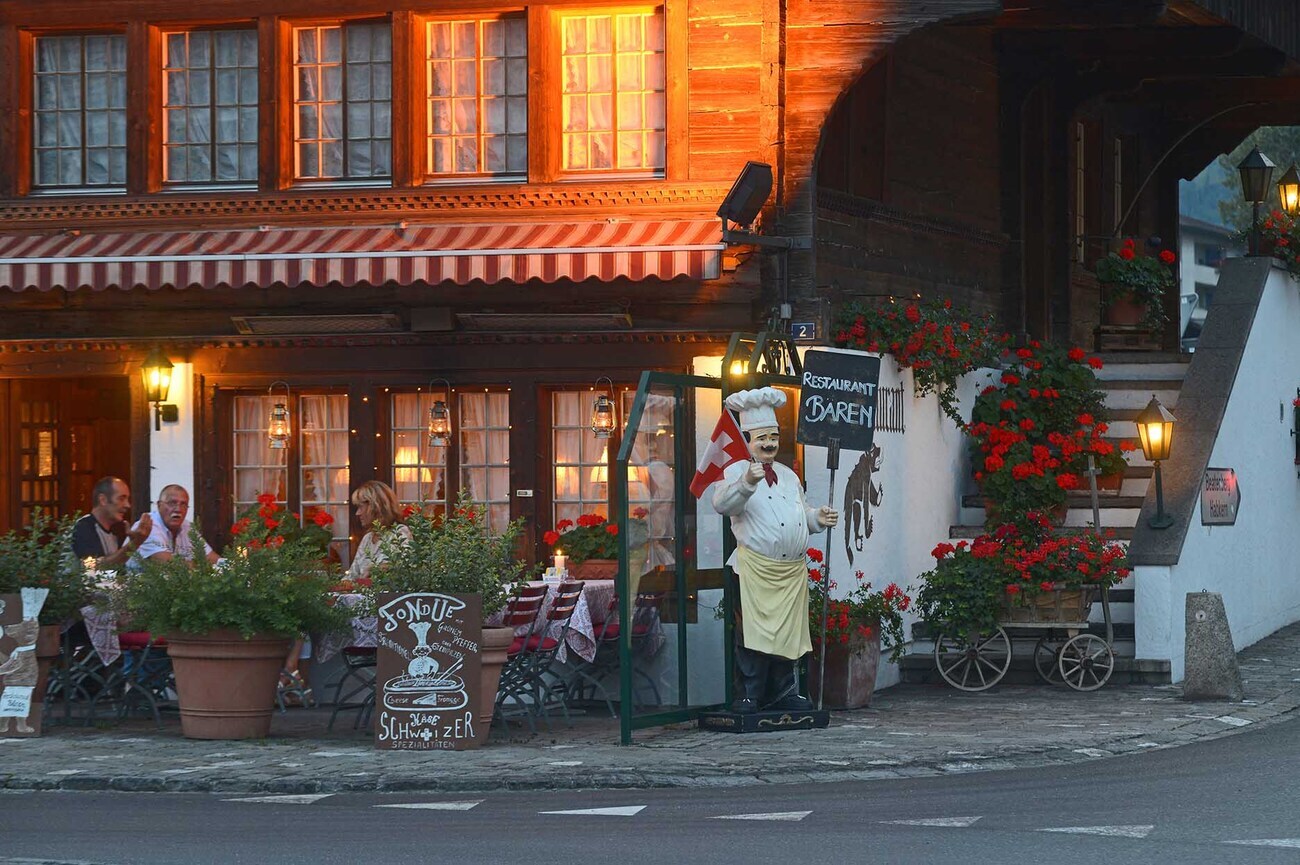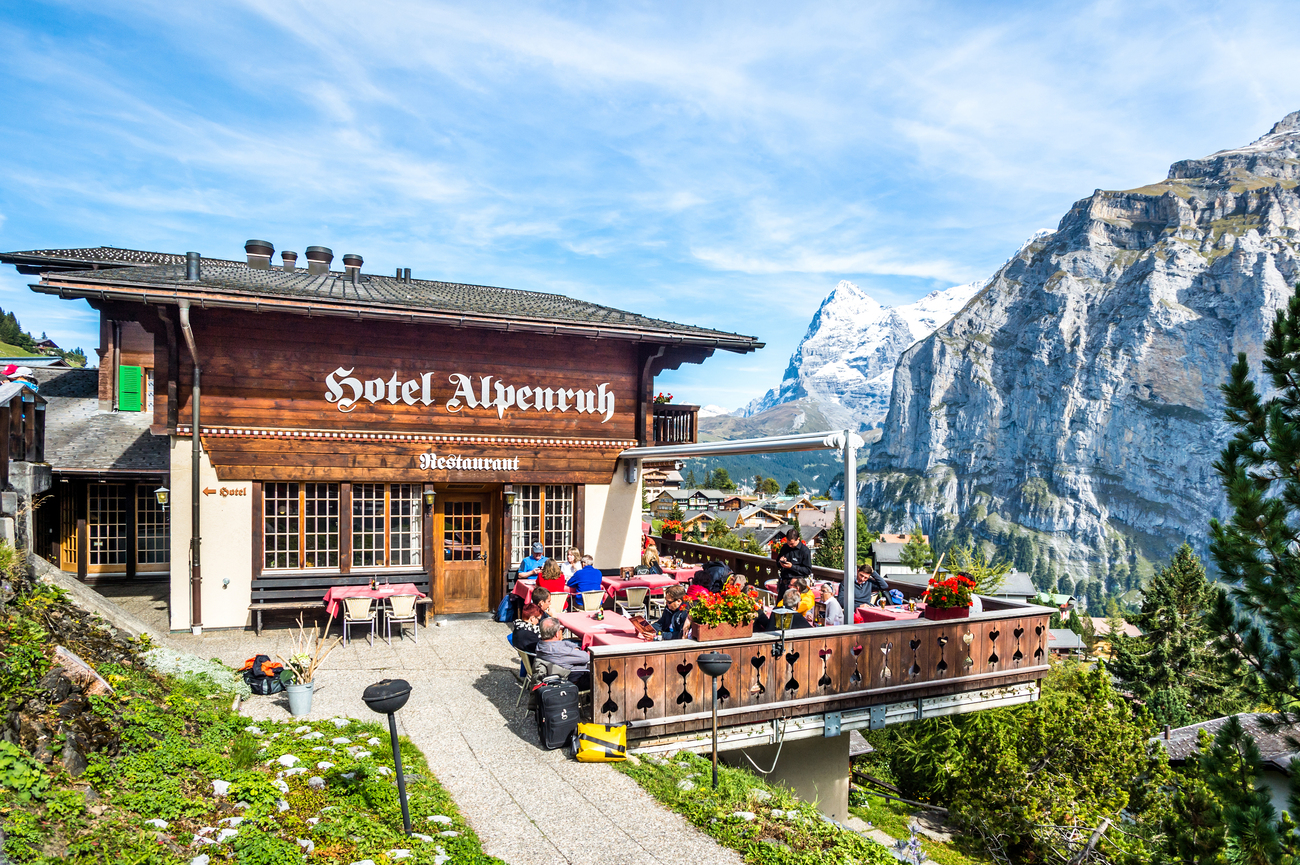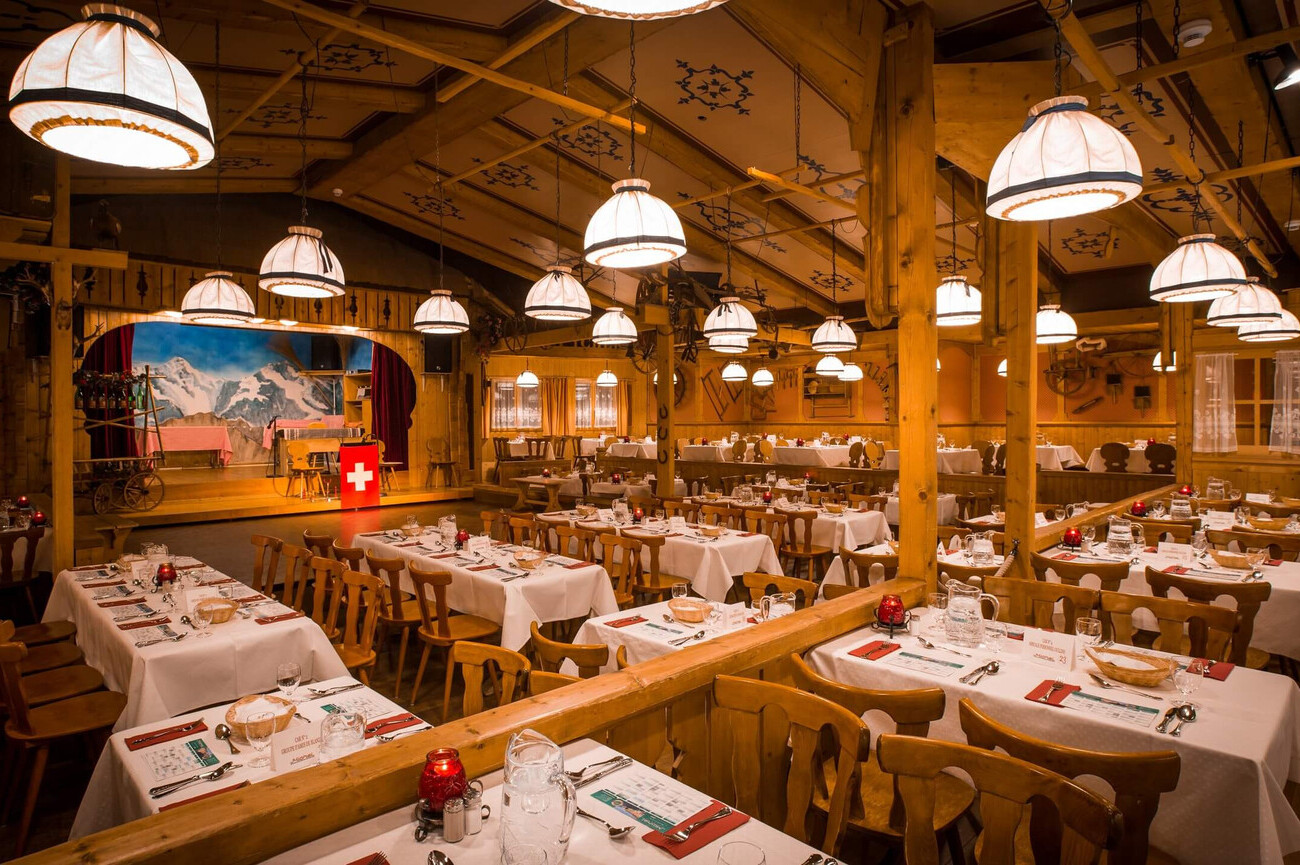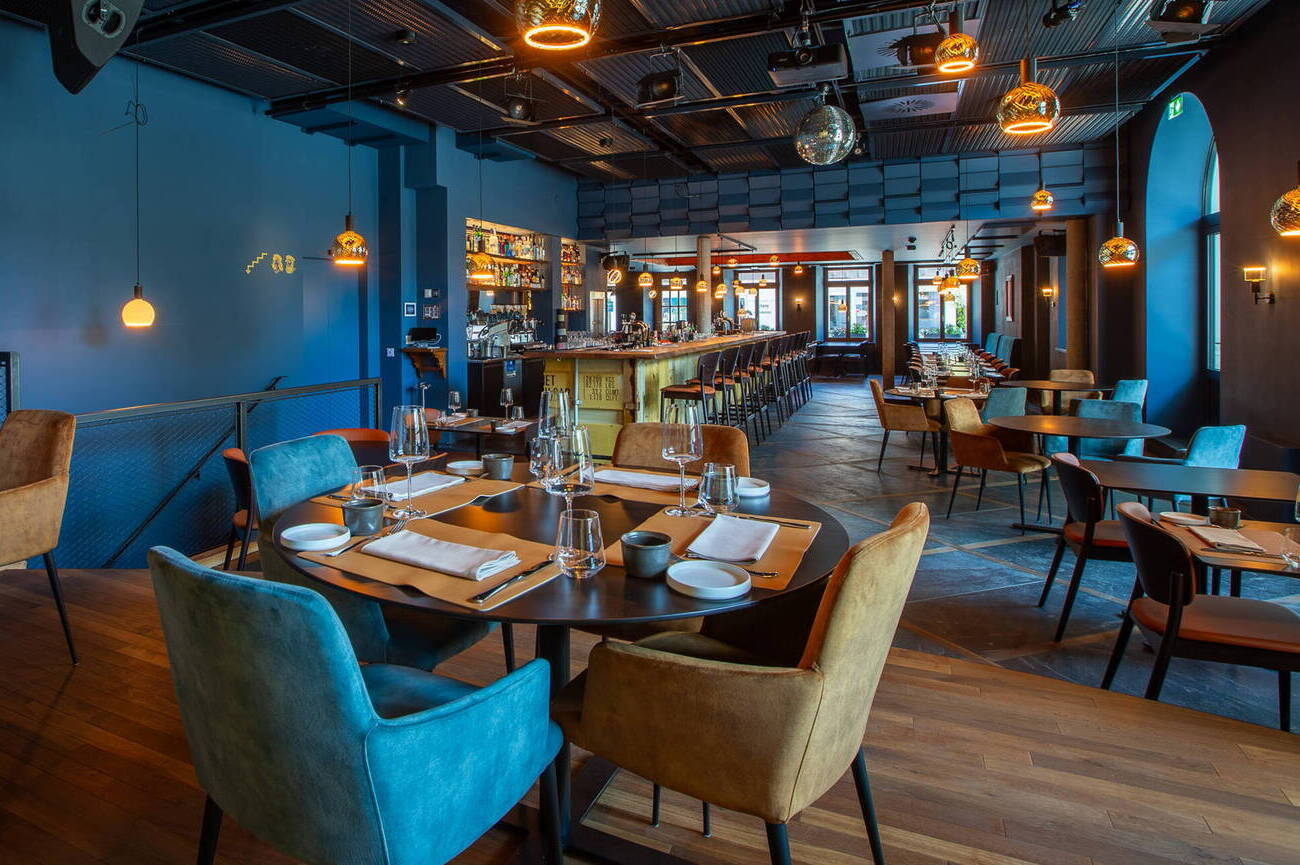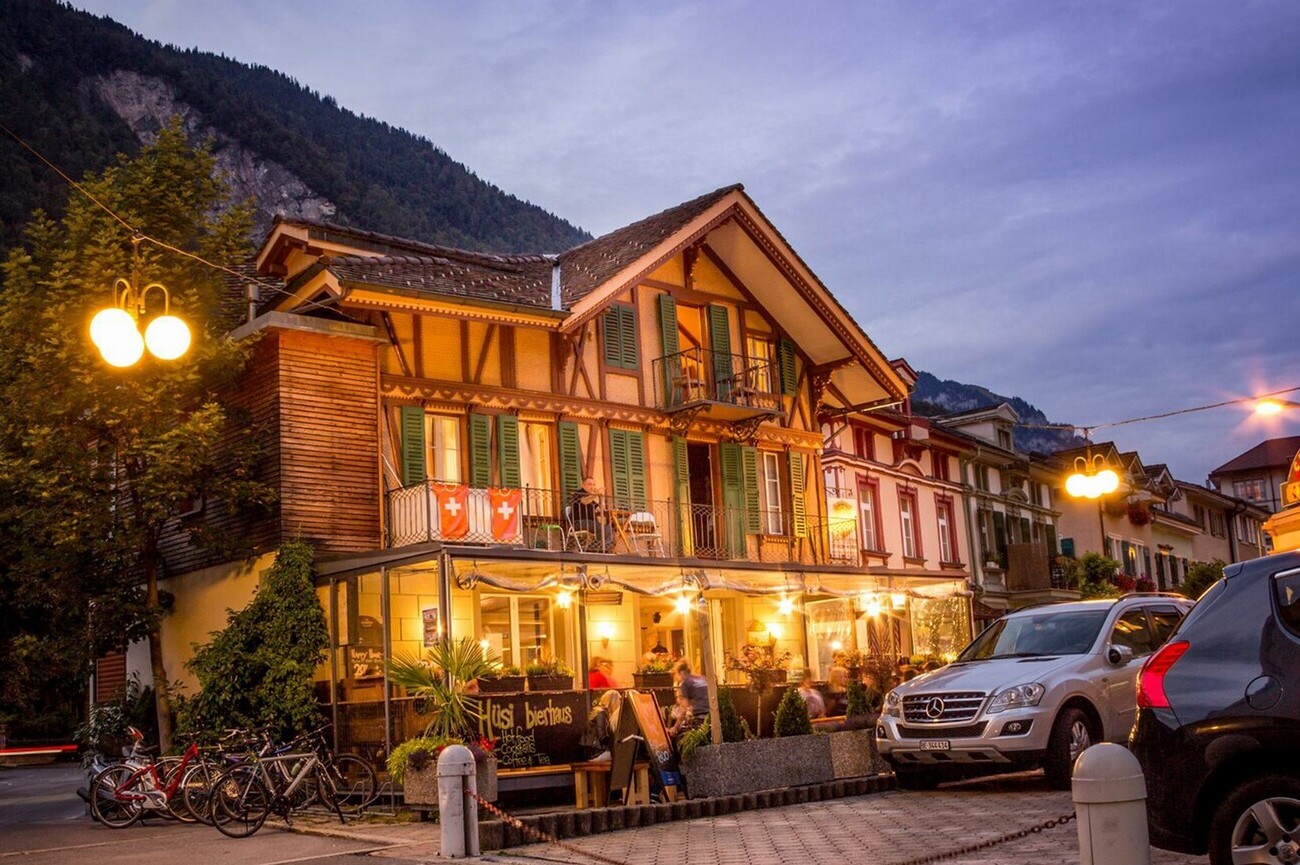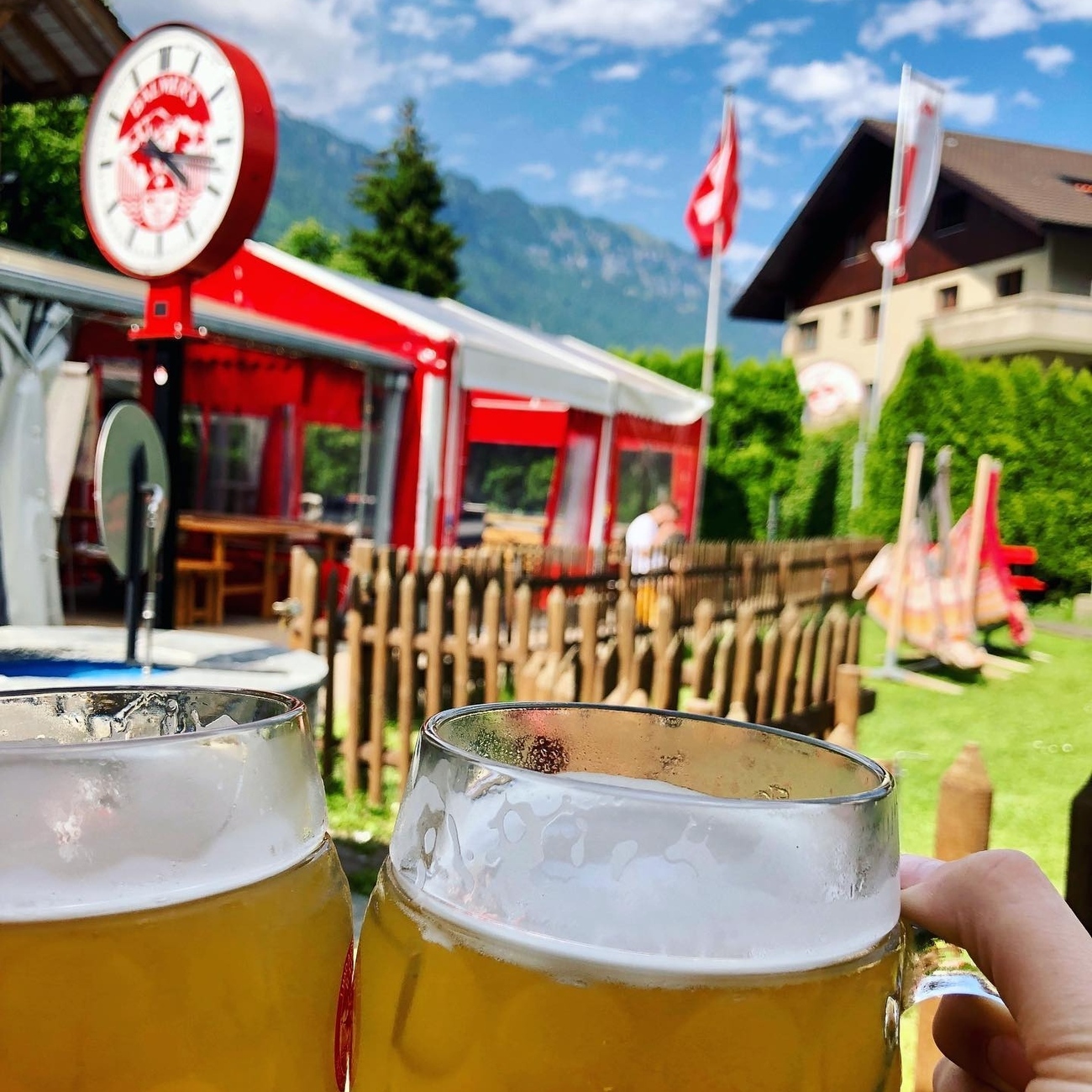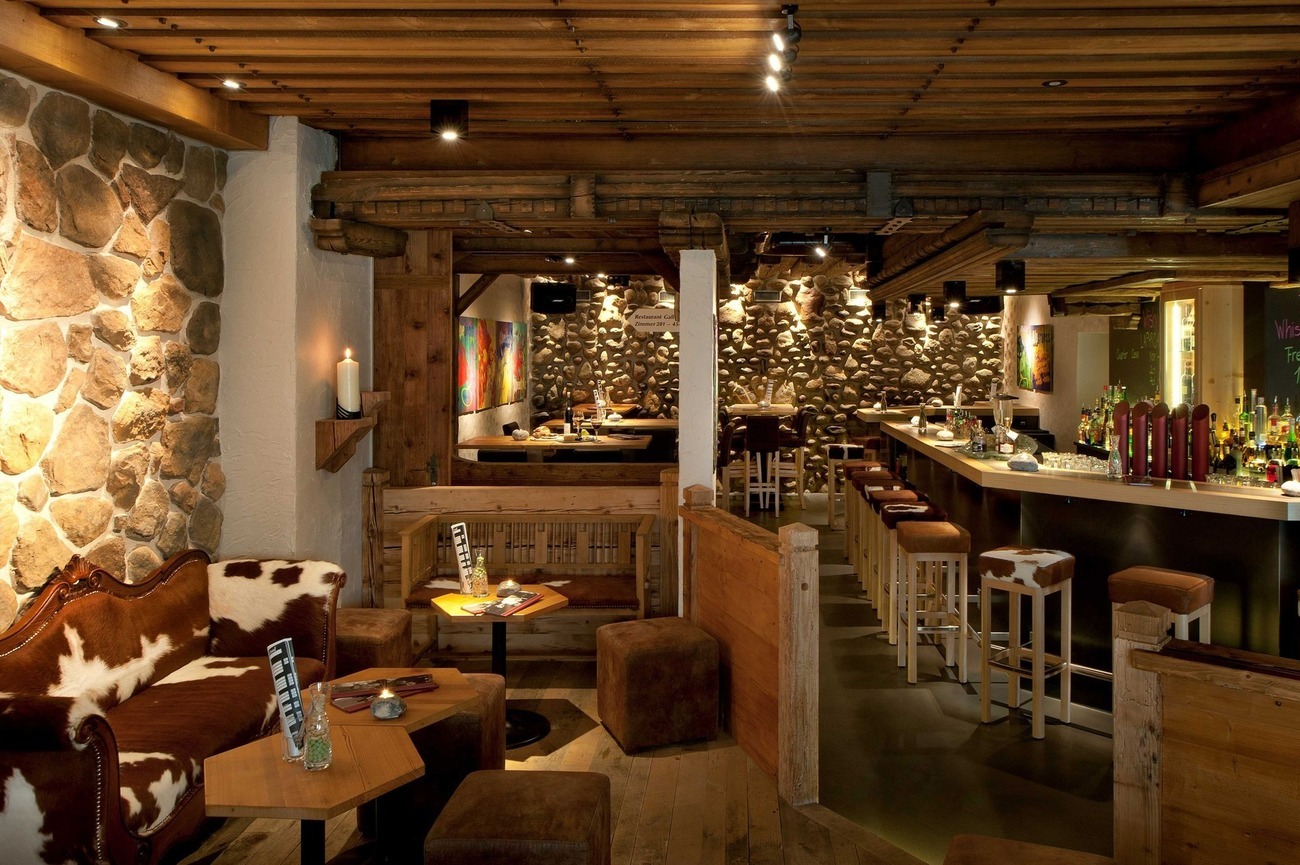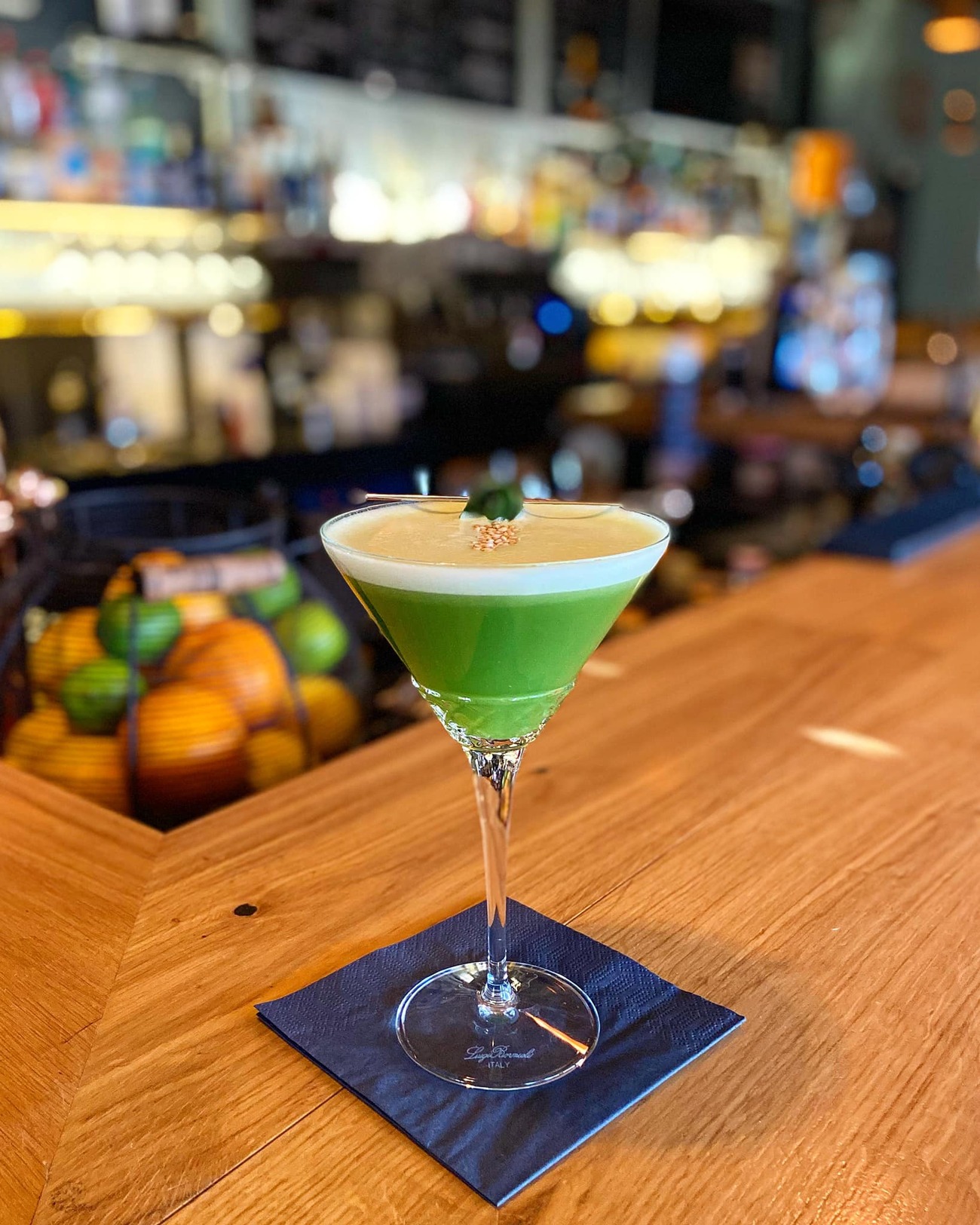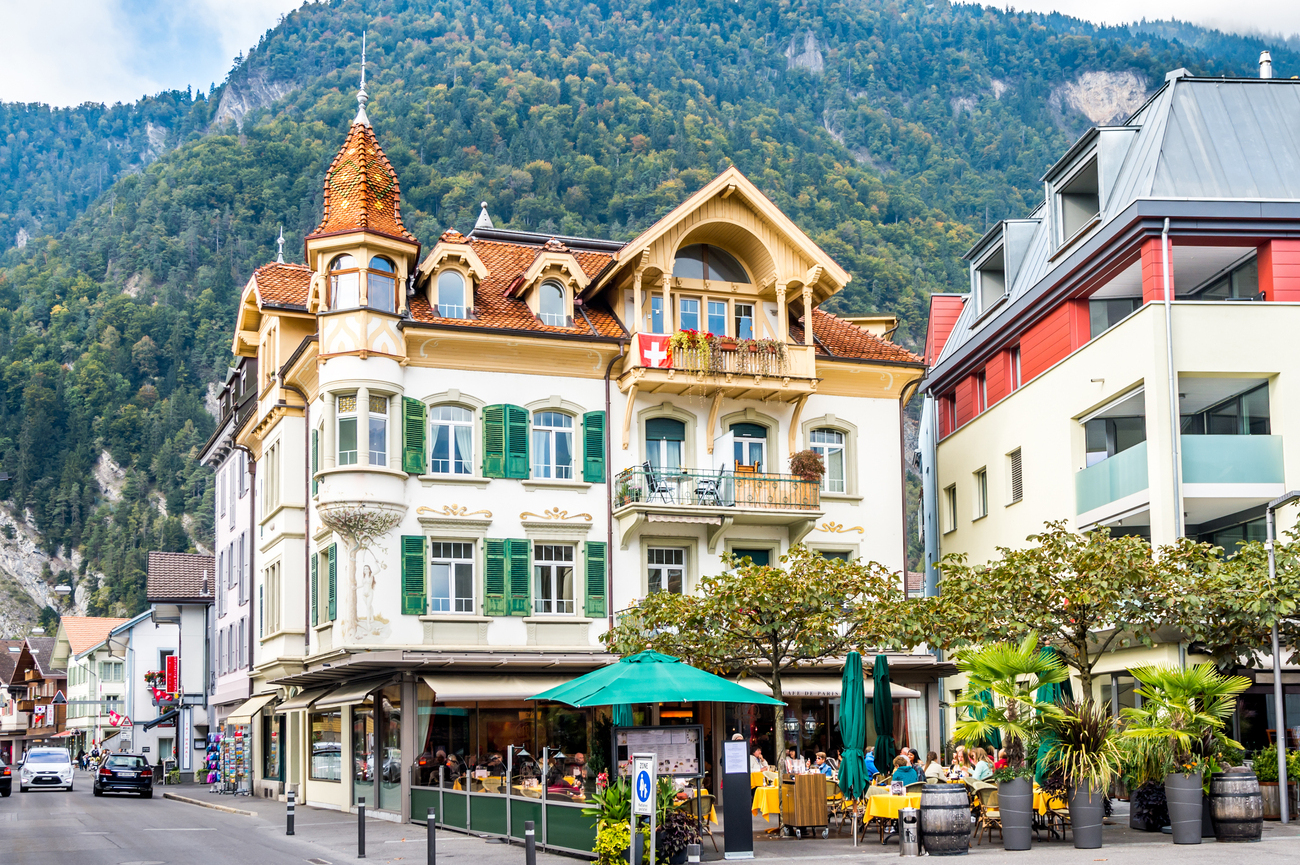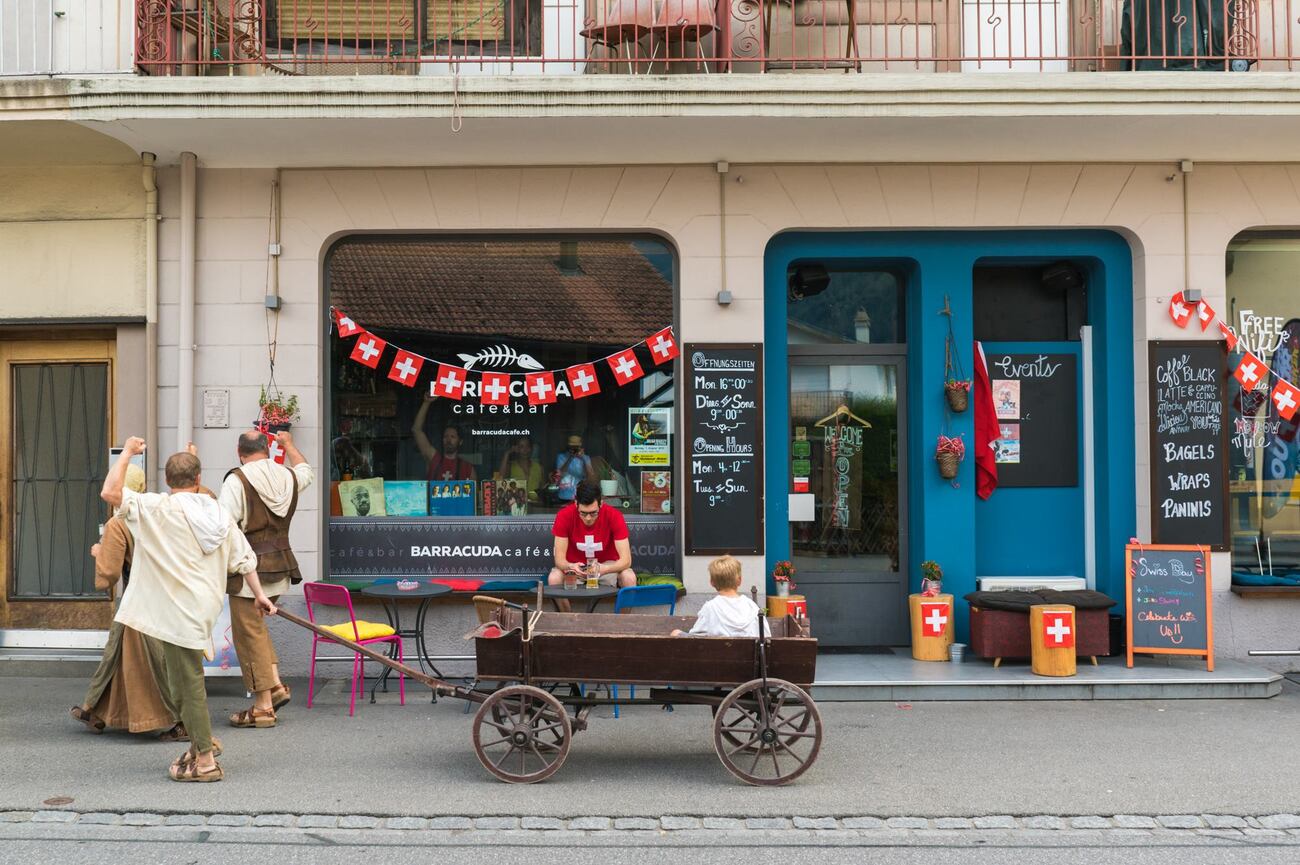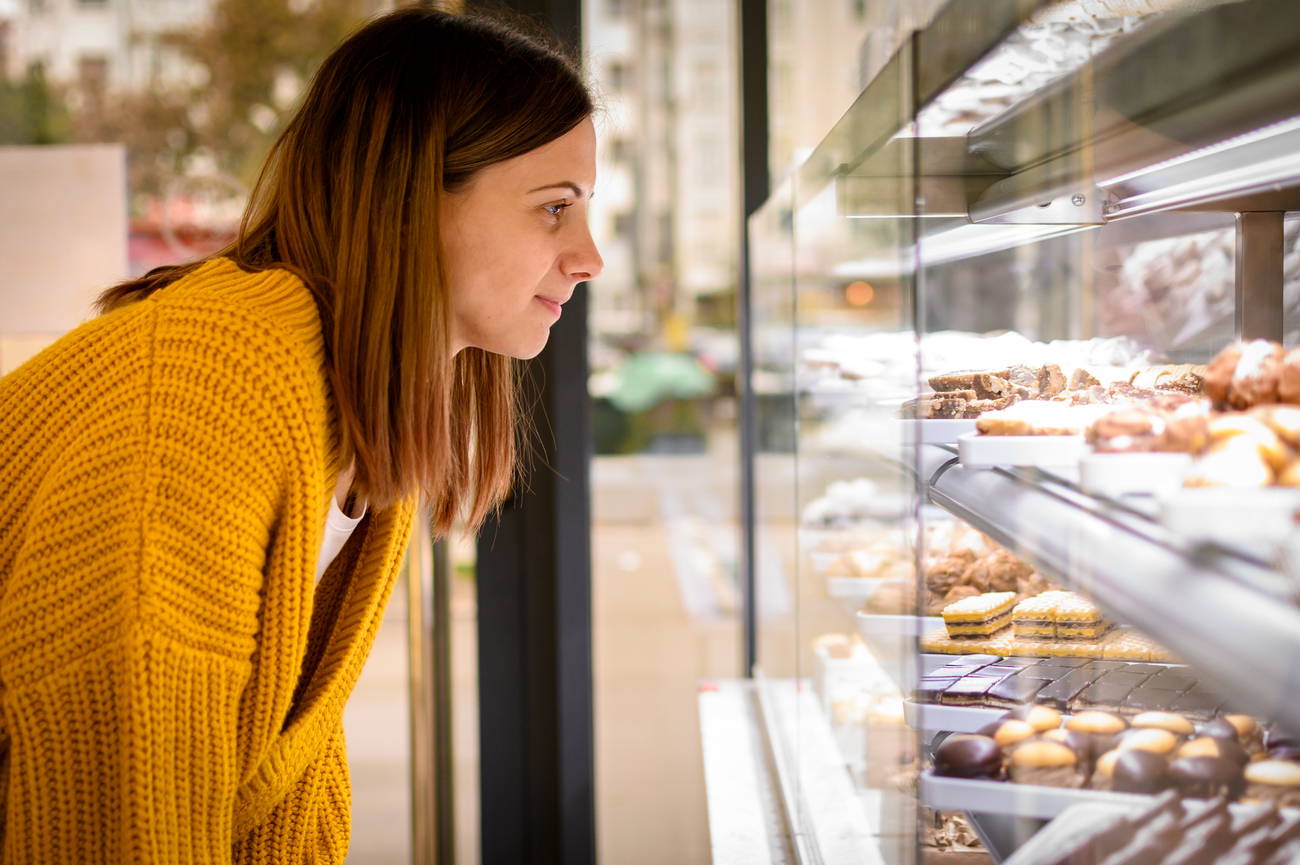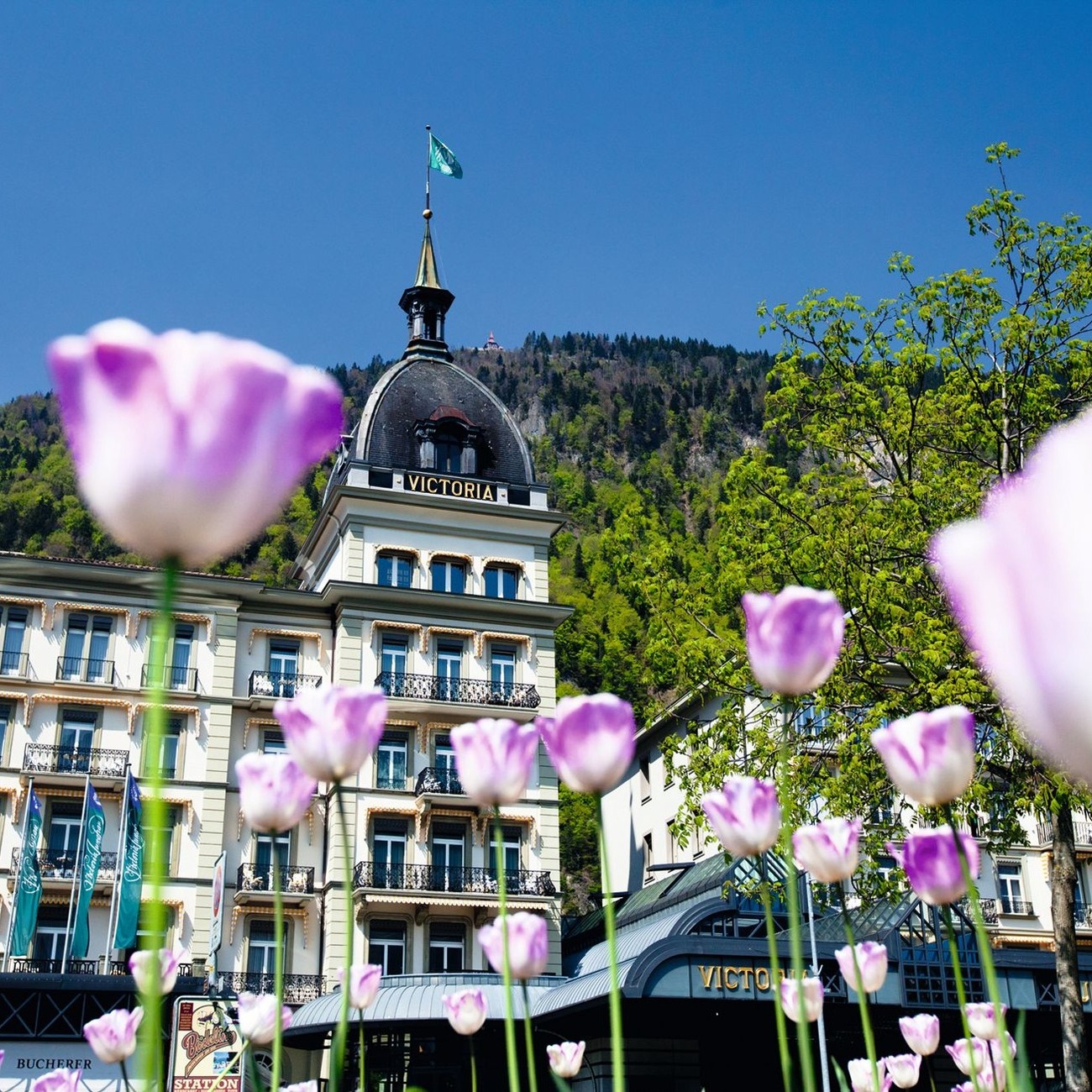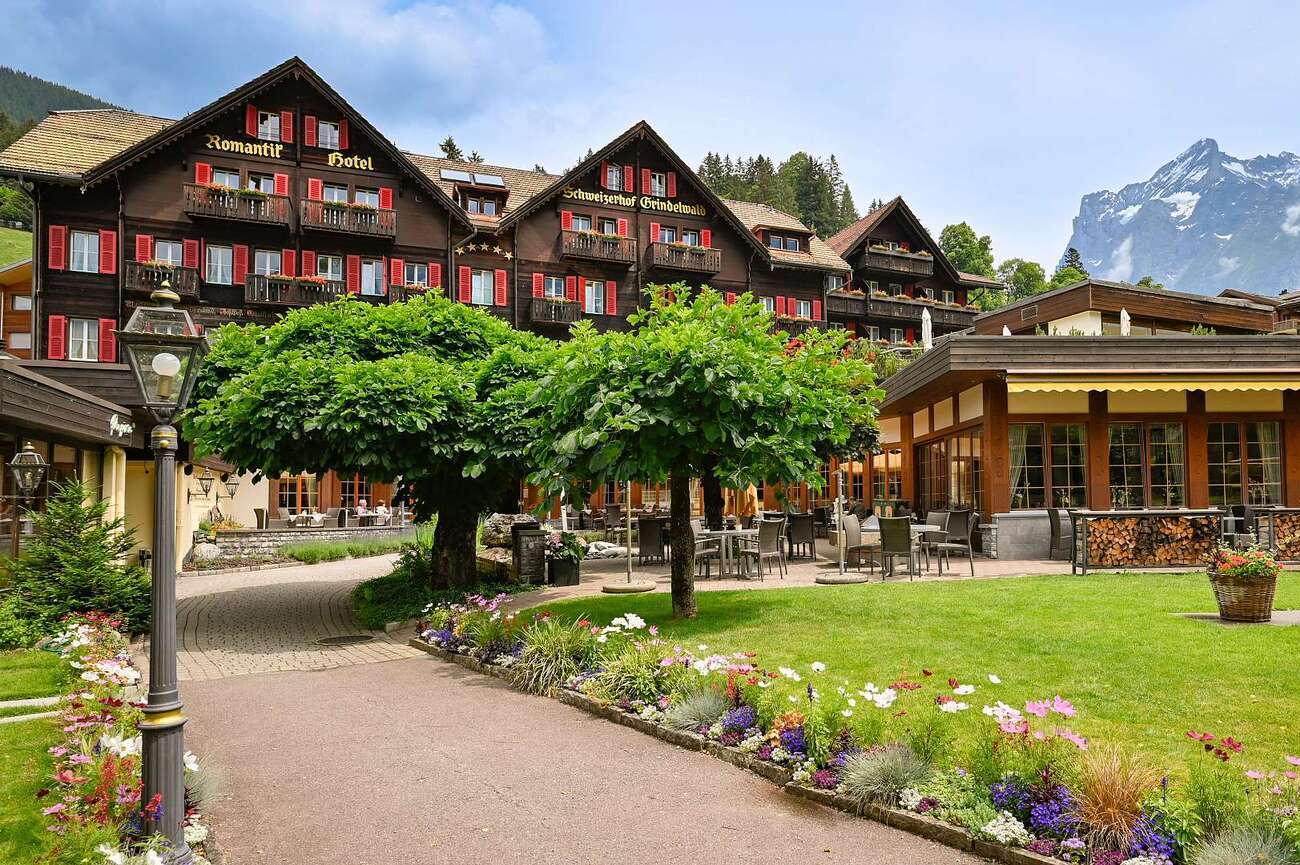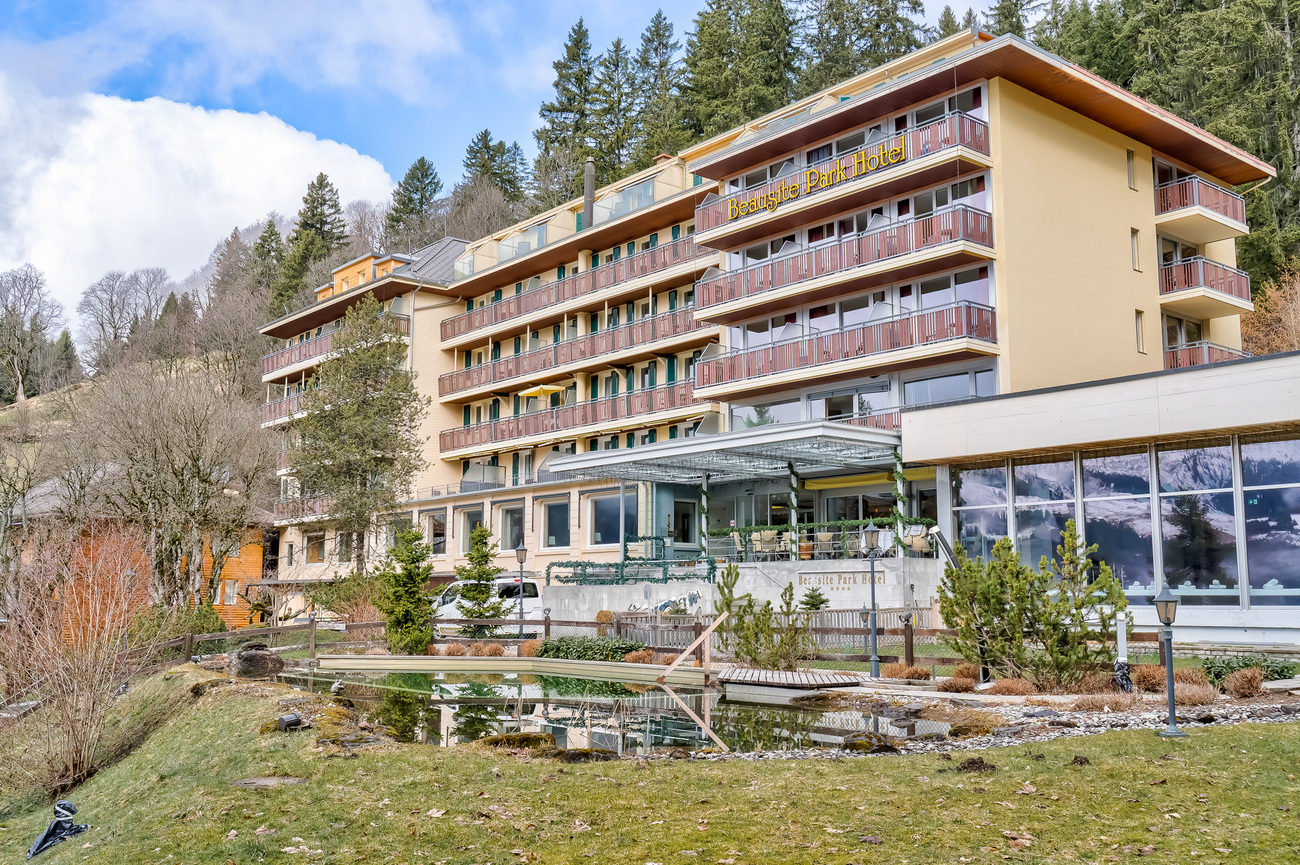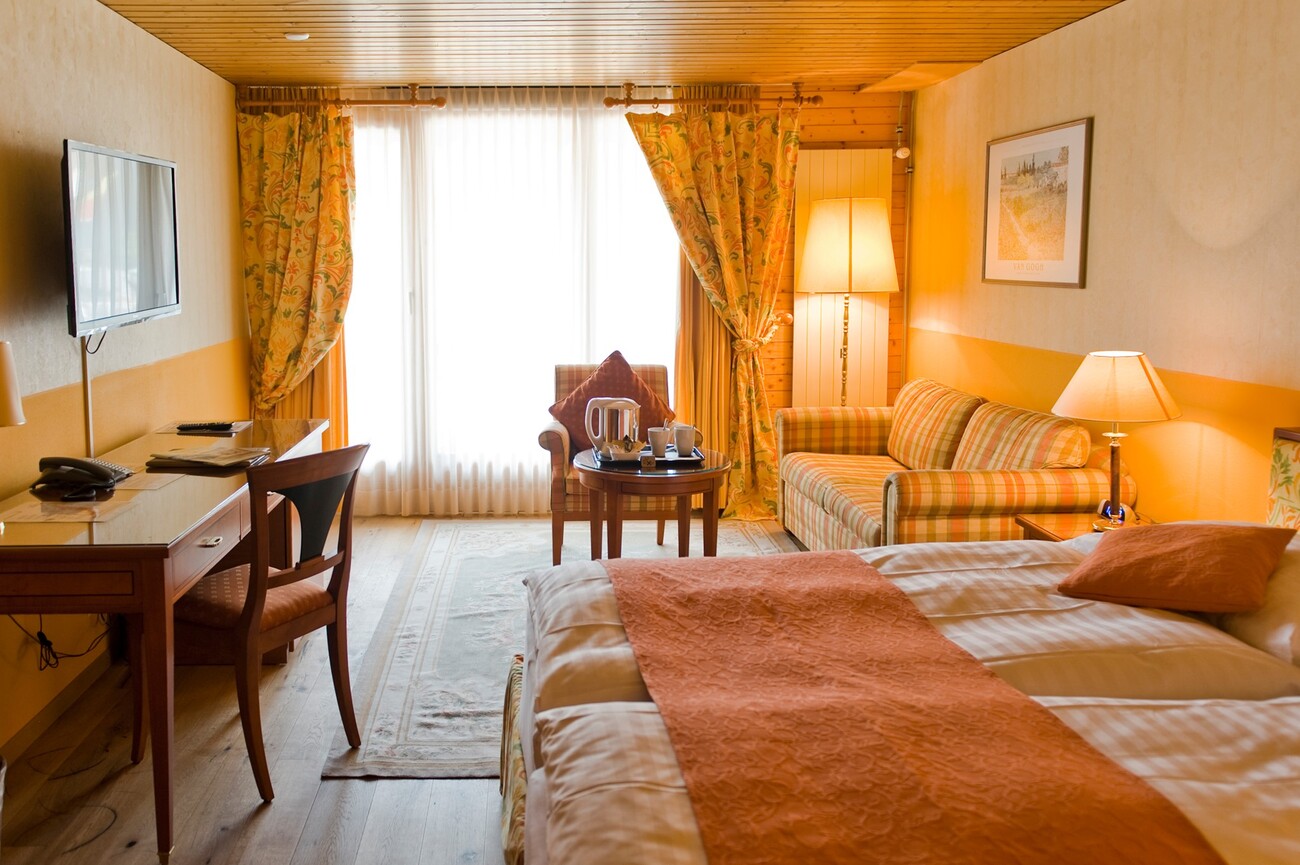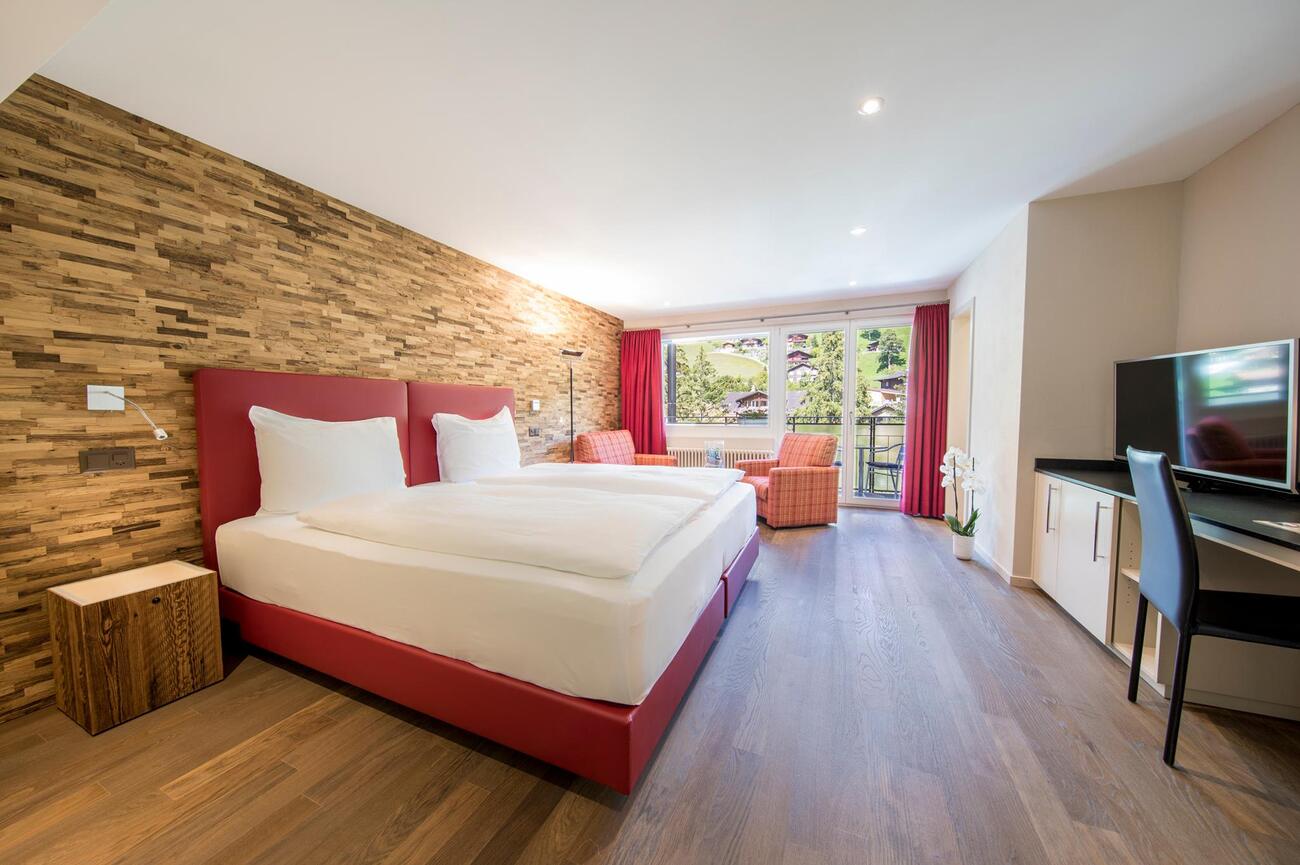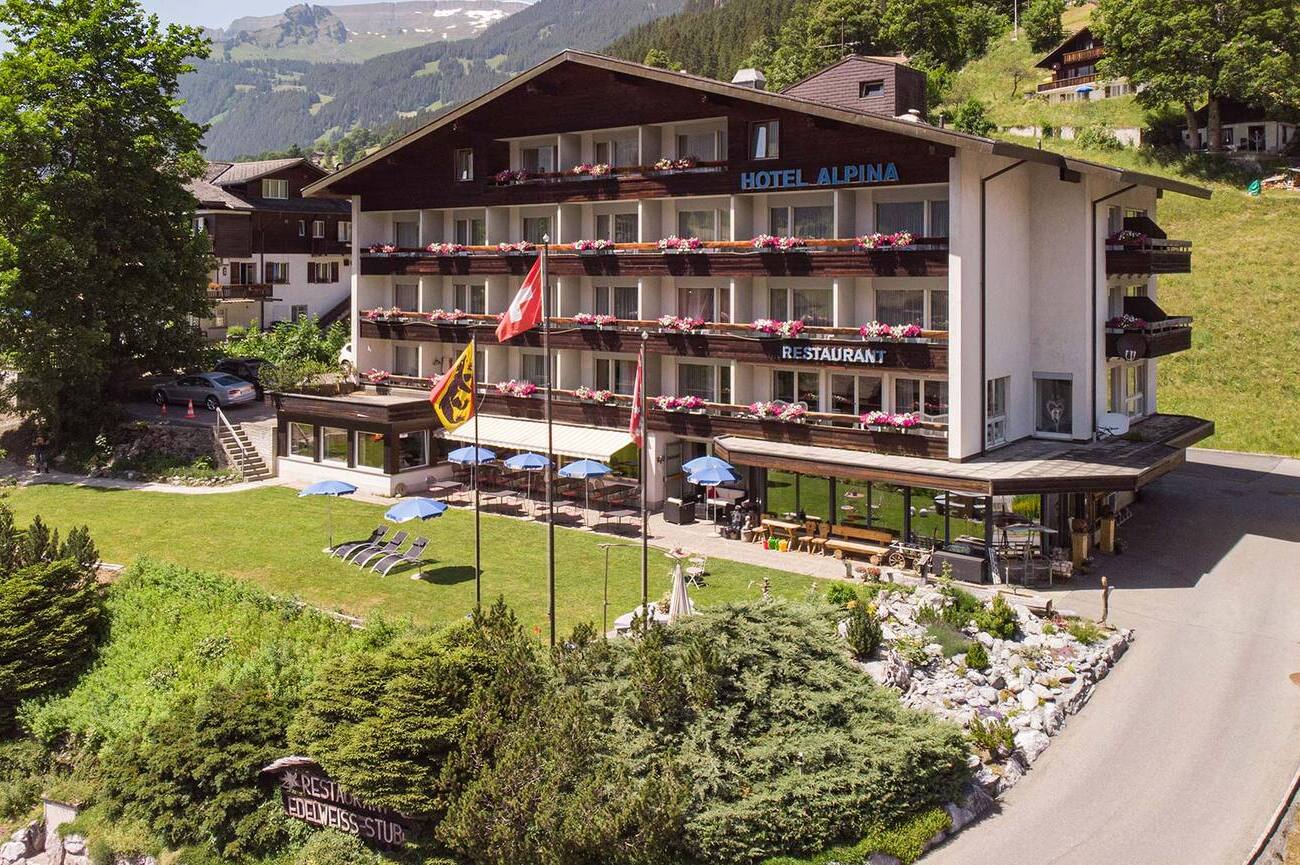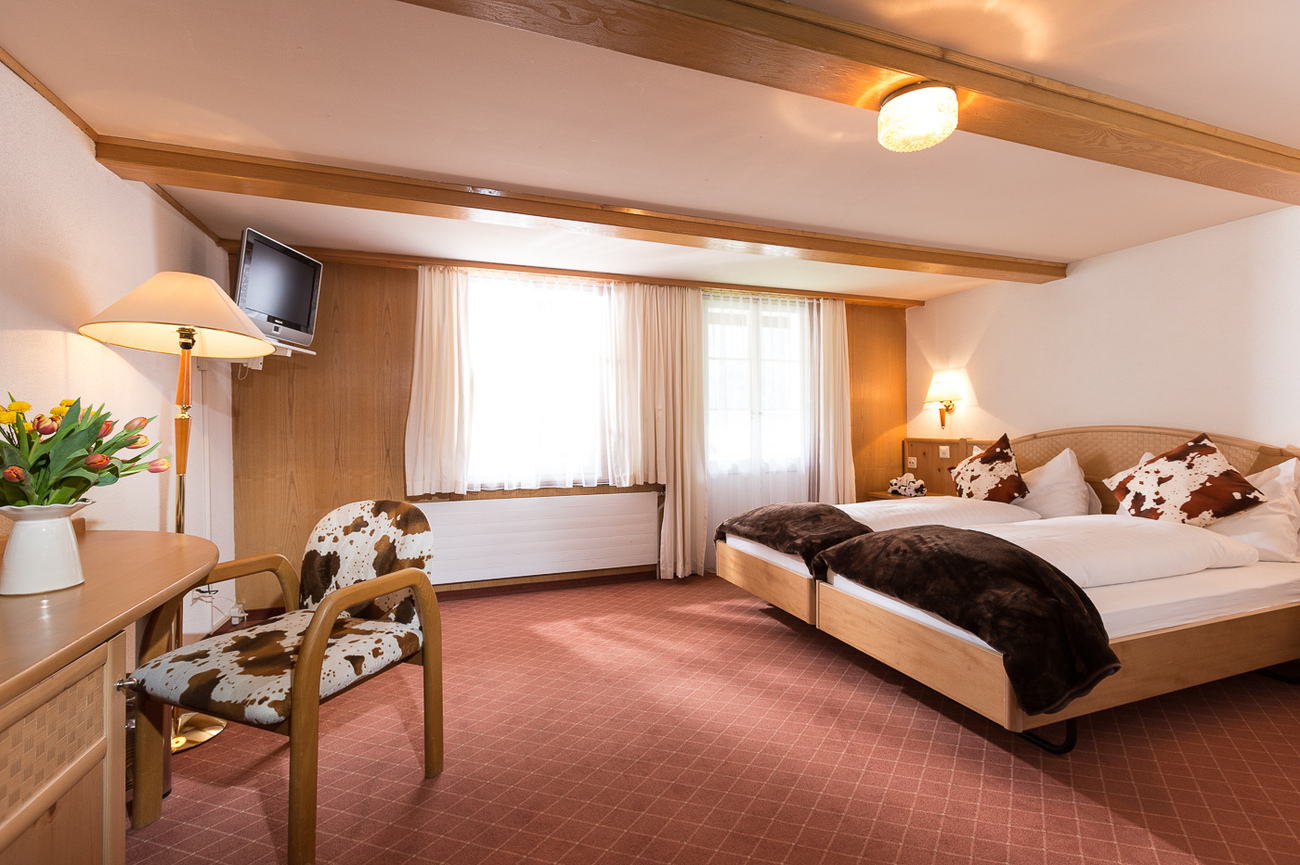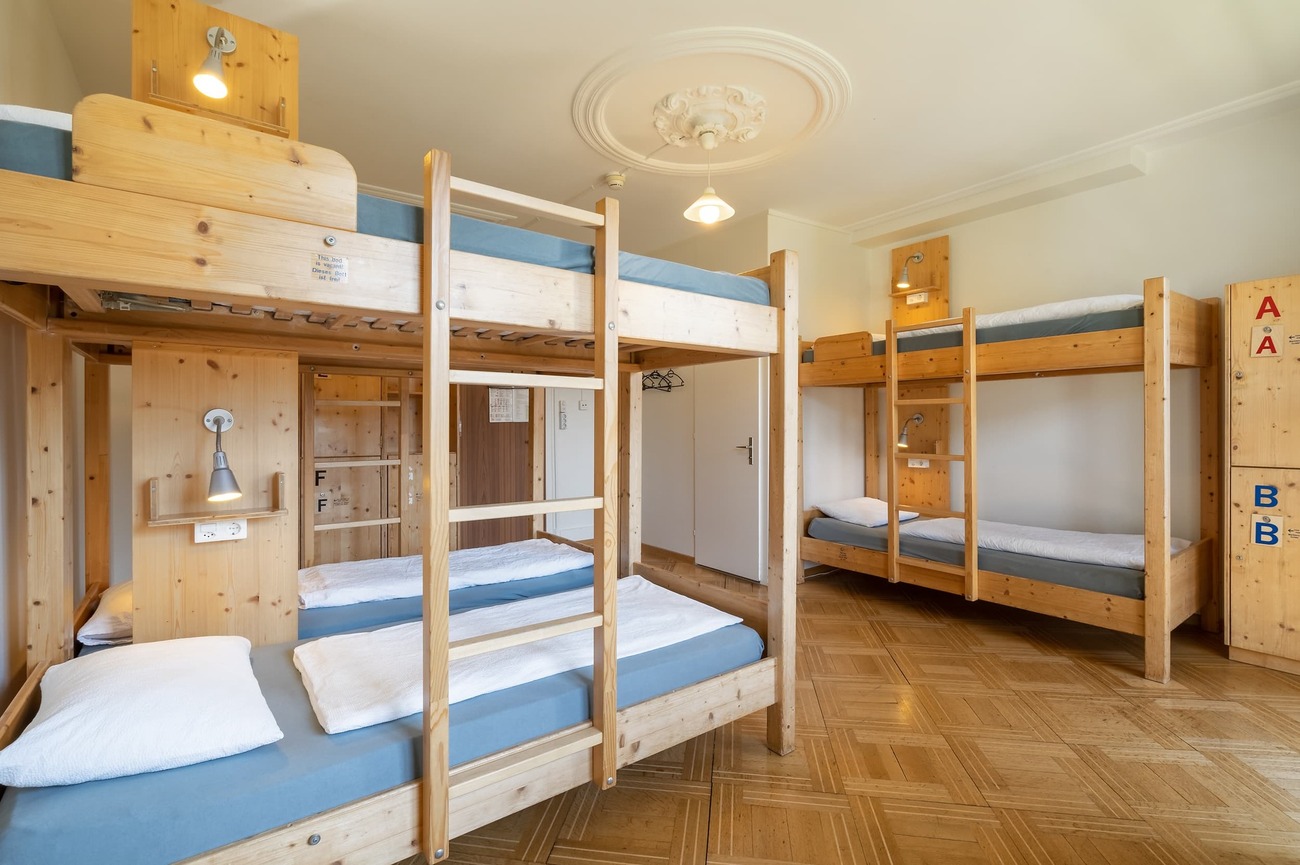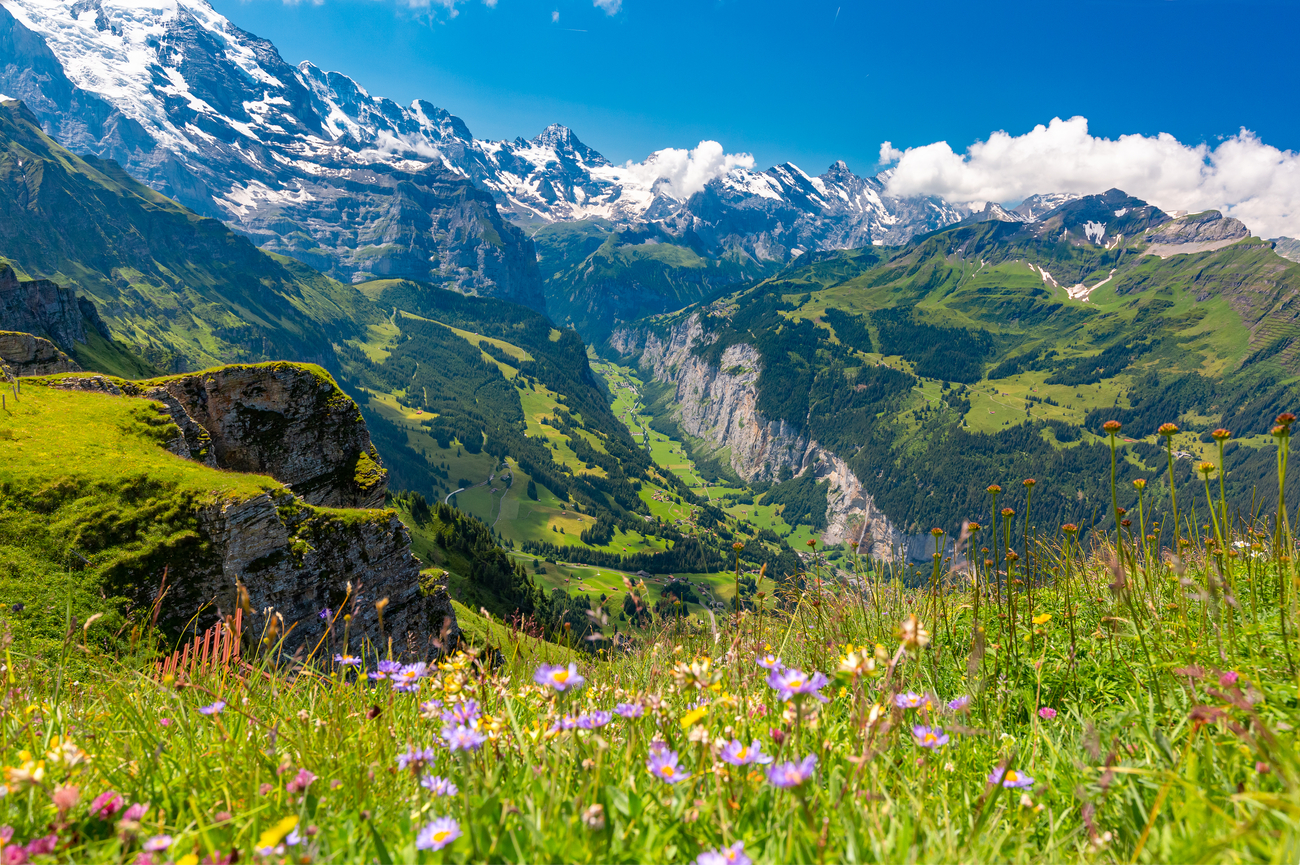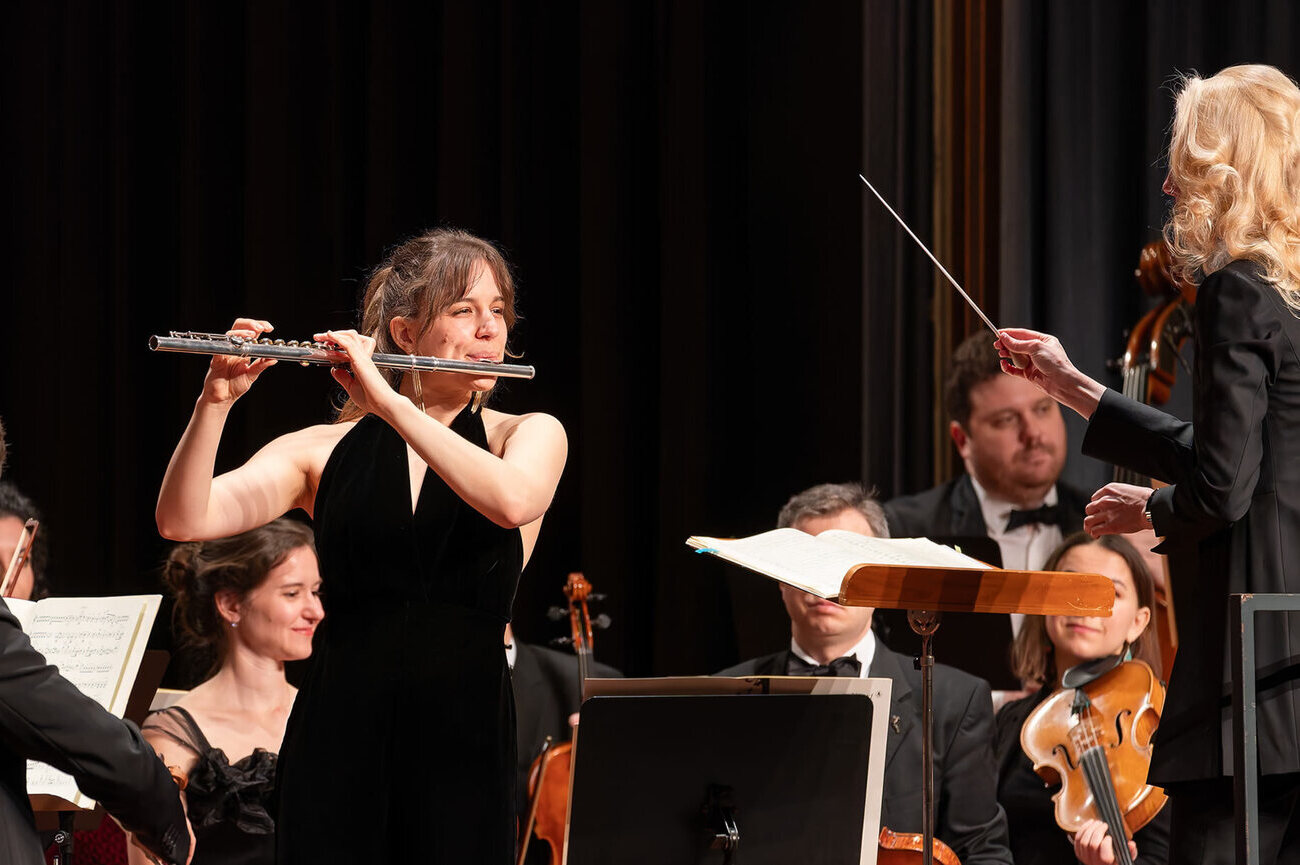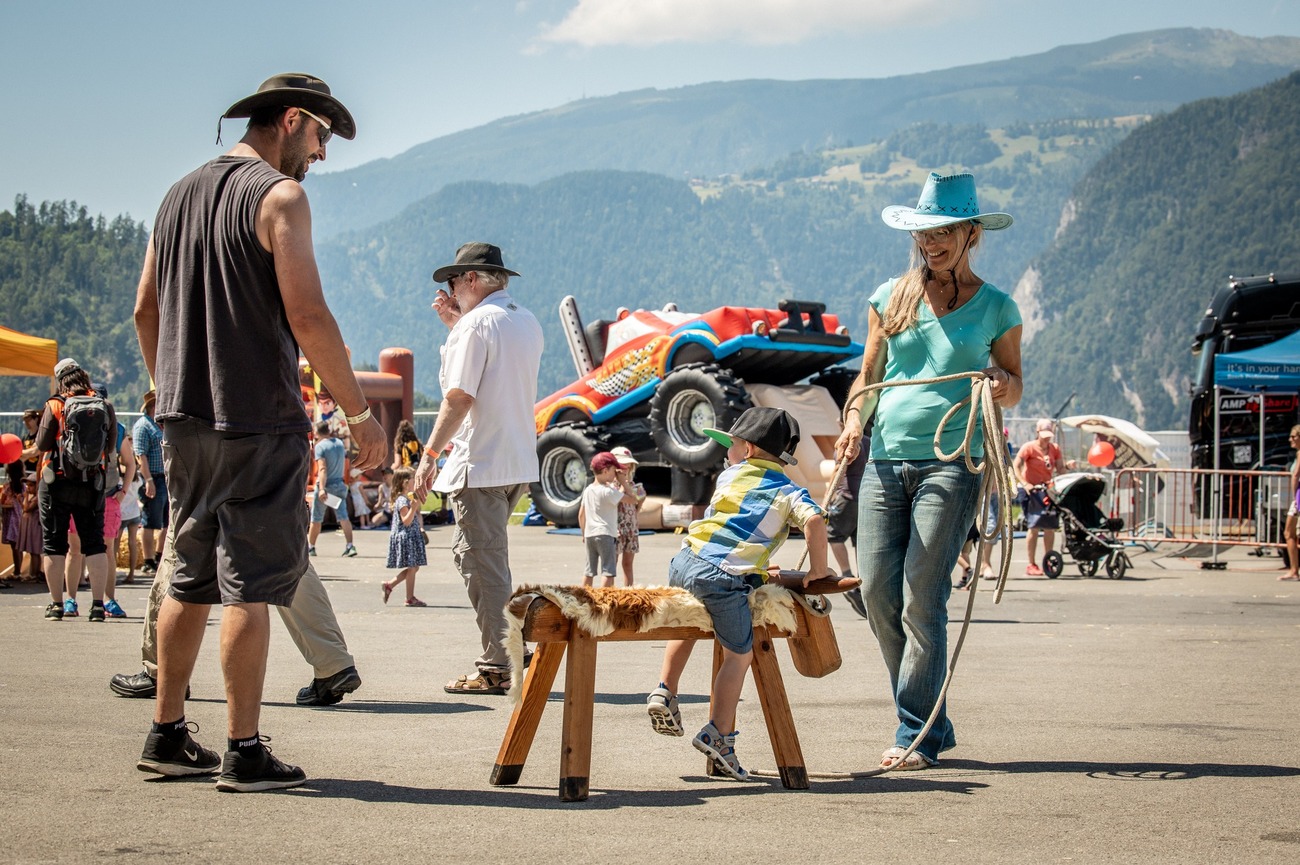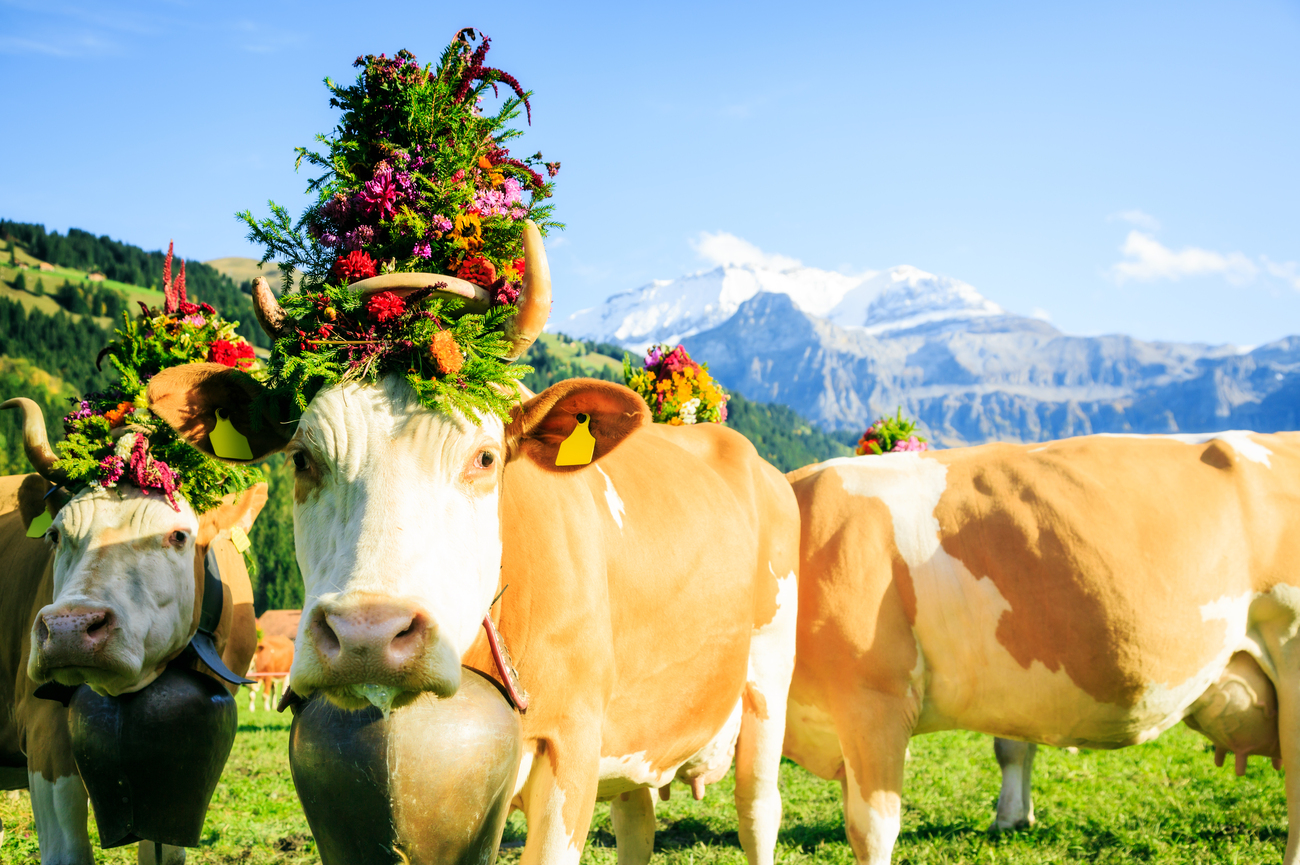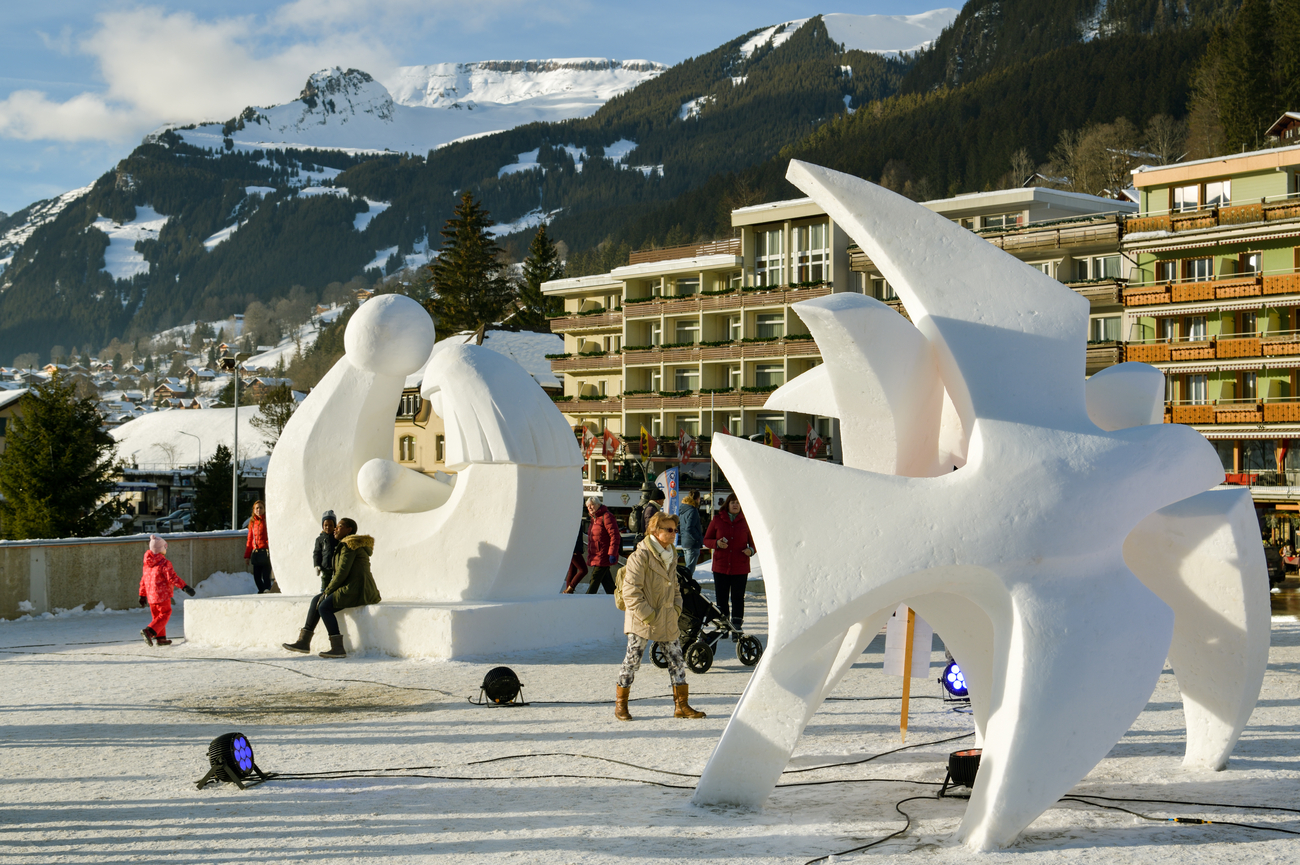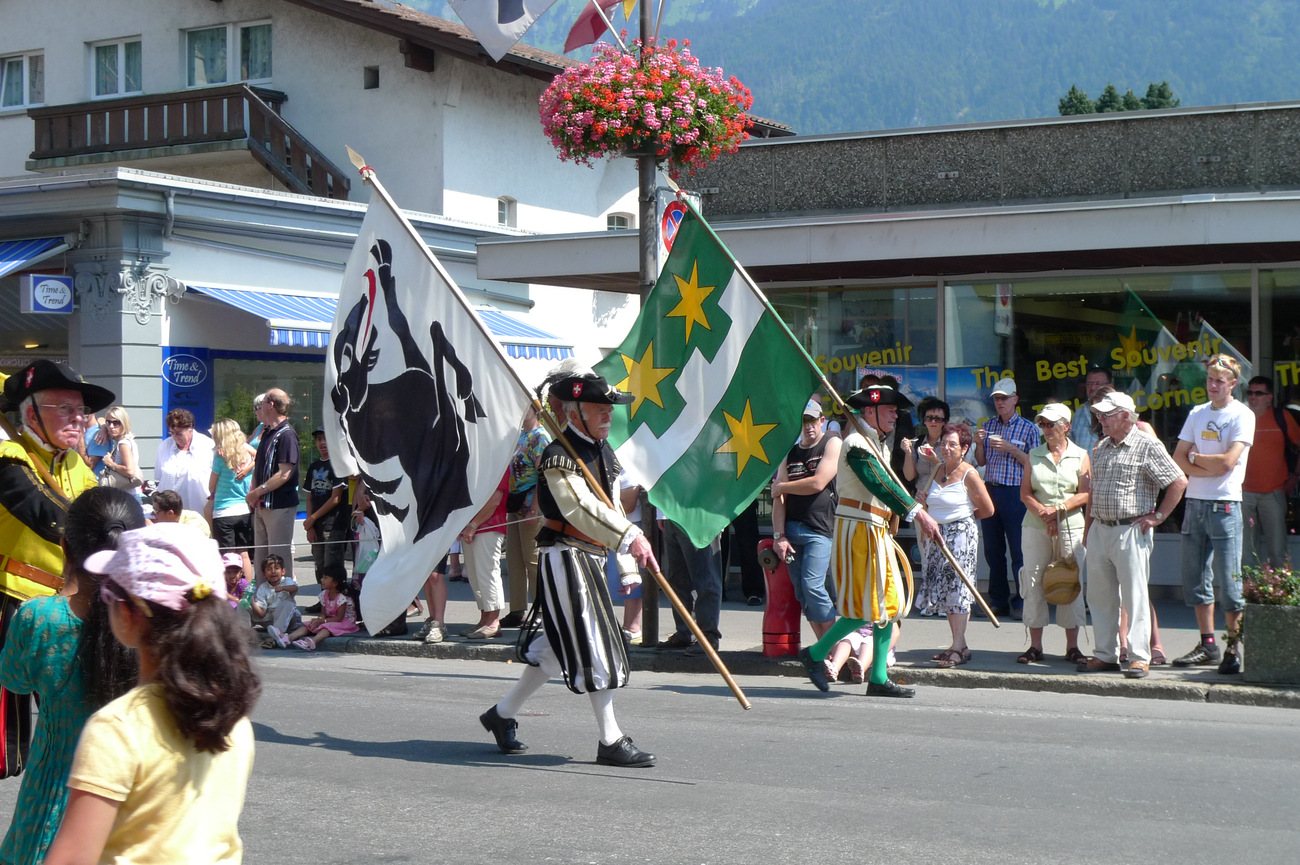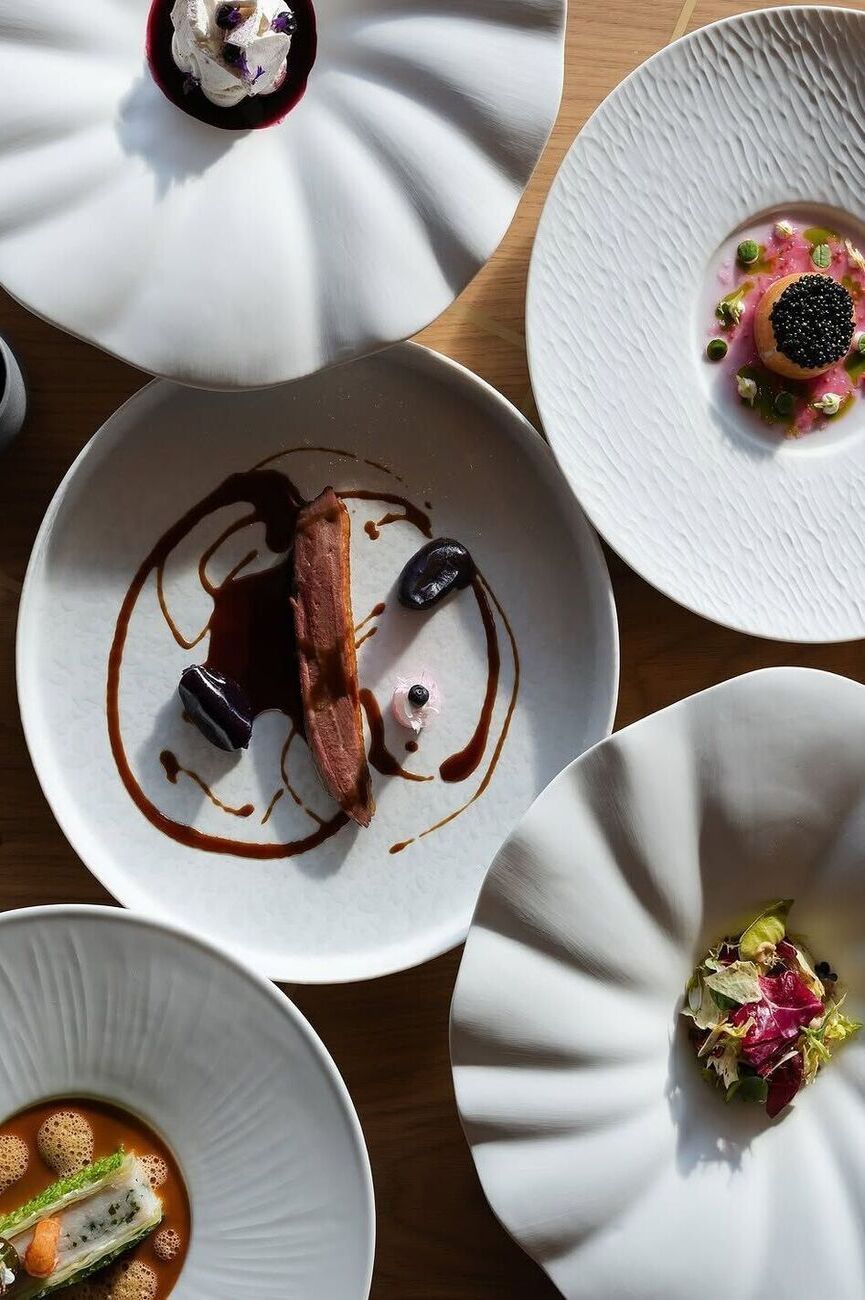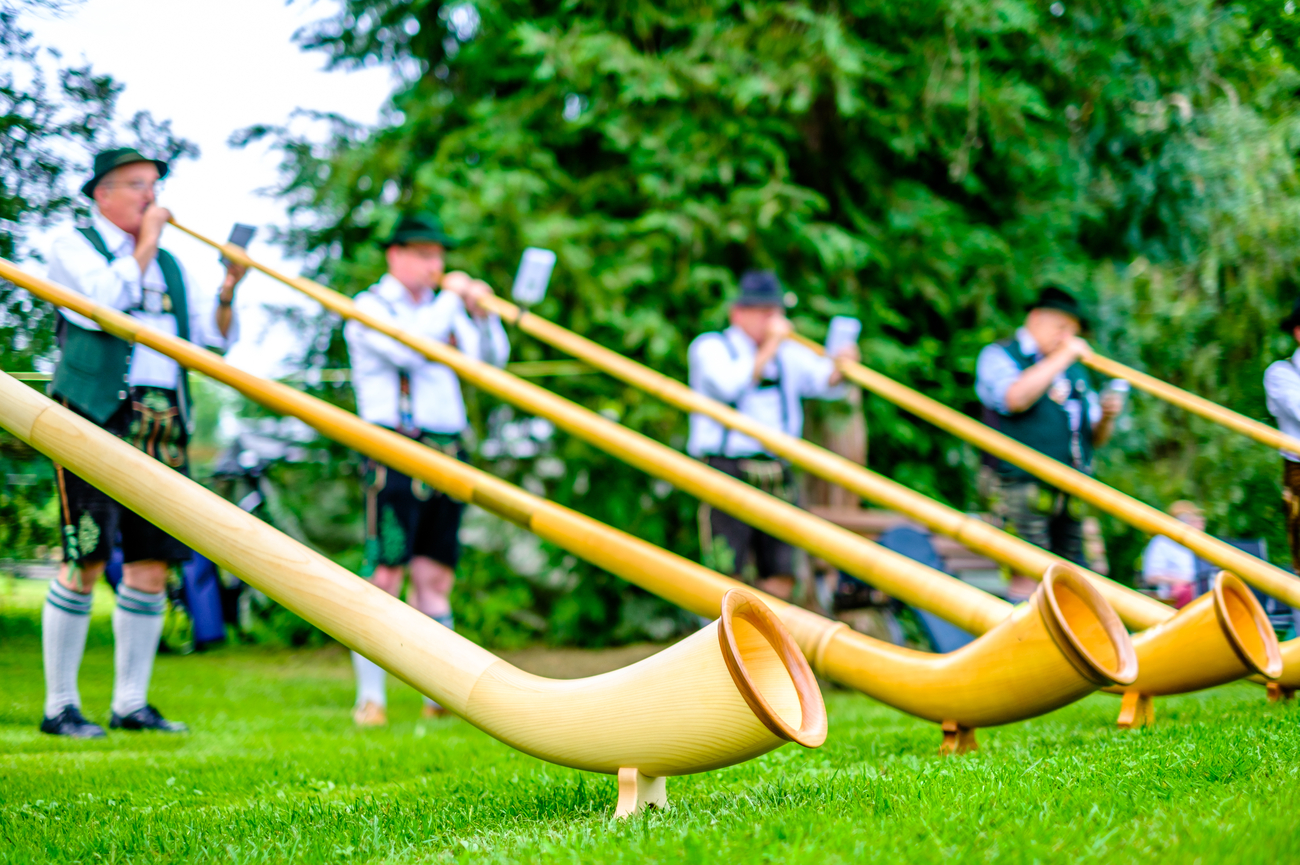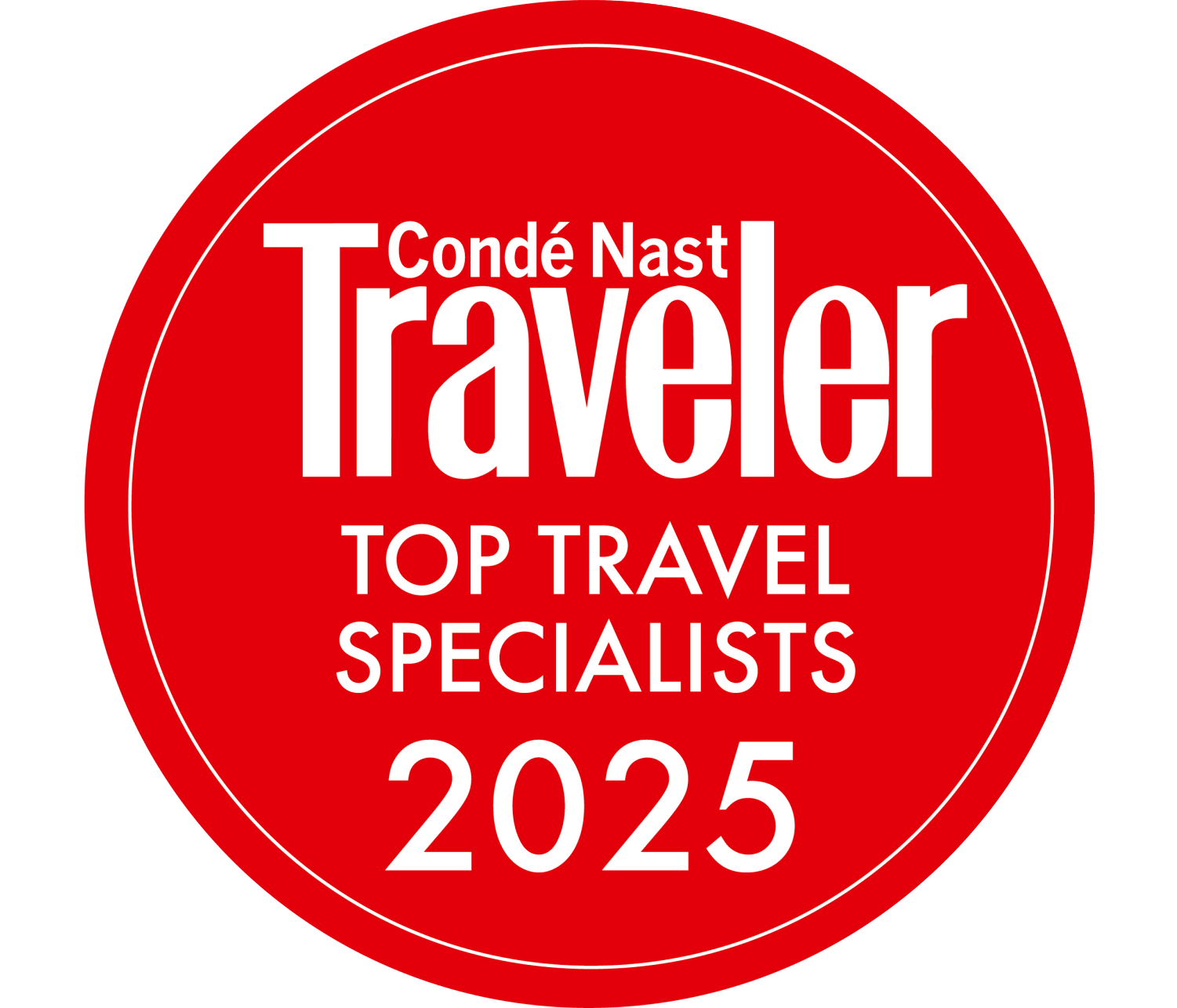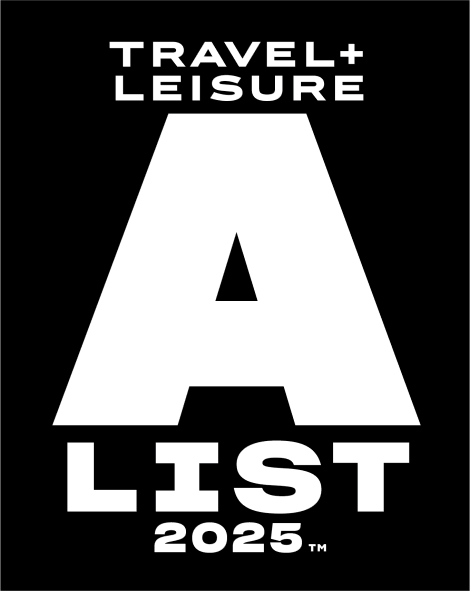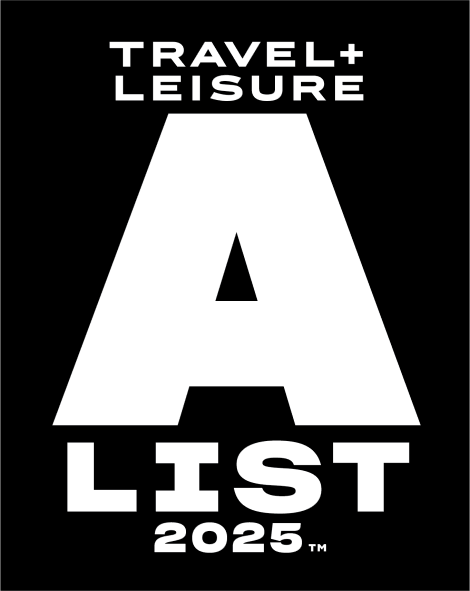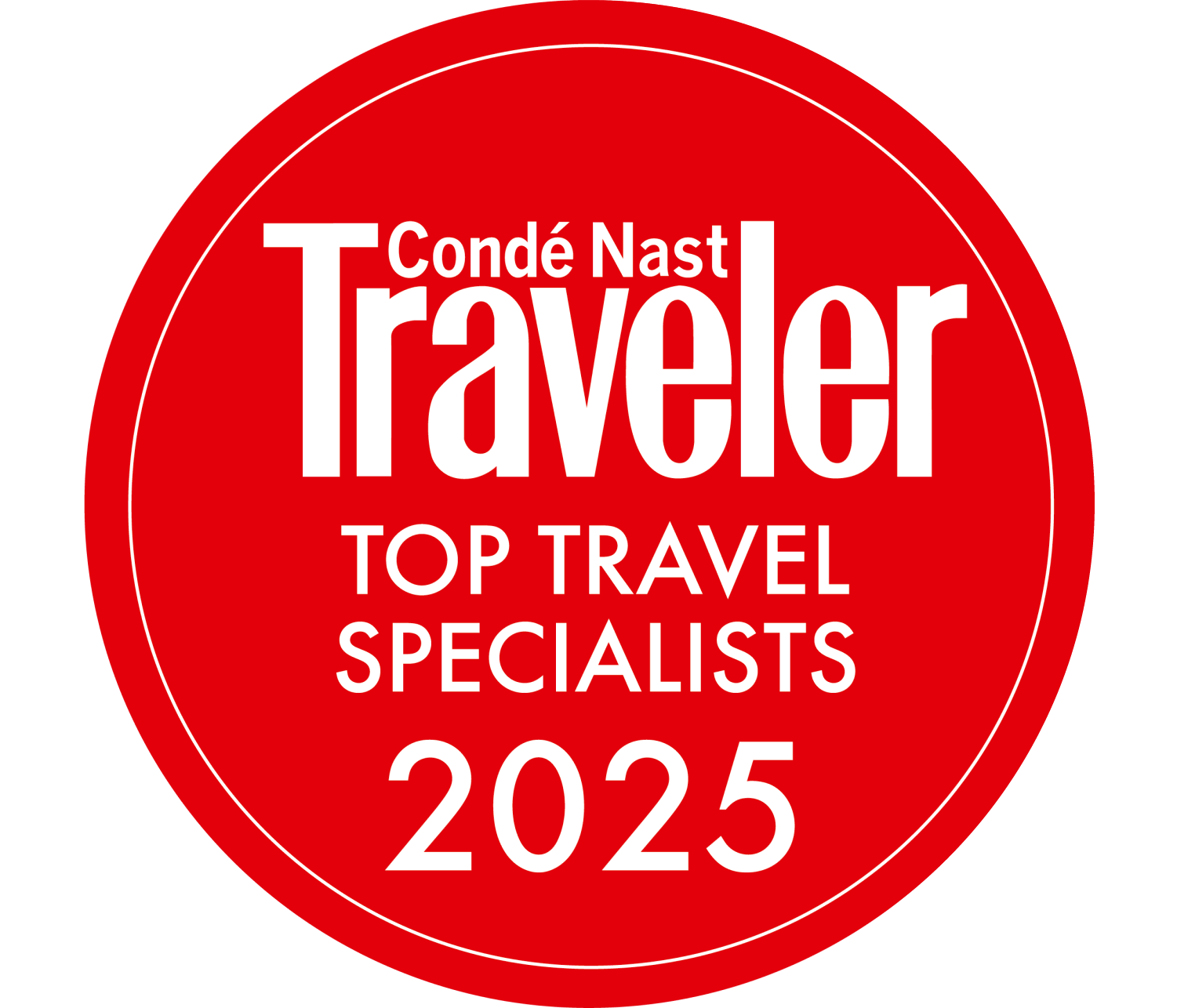Things to Do in Interlaken and Jungfrau: 5-Day Itinerary
Nothing screams living the Swiss dream more than visiting the alpine paradise of Interlaken and the Jungfrau Region. This isn’t your average mountain getaway. This is your “Is-this-real-life?” moment.
Imagine yourself waking up in a cozy chalet with the scent of fresh alpine air seeping through your window. You open the windows and see the sun stretching over the peaks. You then sip your morning coffee on a balcony that overlooks two impossibly blue lakes. But that’s just the beginning of your day.
This is the land of sky-high adventures and storybook towns. Whether you’re chasing thrills, craving peace, or just trying to feel like the main character in your own Swiss fairytale, Interlaken and the Jungfrau Region have your back.
Go grab your snow boots and hop on to this 5-day itinerary. It’s a perfect blend of luxury, excitement and pinch-me moments that makes this trip unforgettable.
Day 1

Morning: Hohematte Park
Start your trip at this photo spot. This 35-acre stretch of manicured lawns and flowerbeds is a front-row seat to the grandeur of the Swiss Alps. But you can also be one with the locals. Here, you spot locals reading newspapers under trees and artists sketching the Jungfrau from memory. You can also bring a mat or a linen spread and have a picnic here.
Hoheweg Promenade
From the center of Höhematte Park, take a few slow steps toward the east, and you’ll find yourself slipping into Hoheweg Promenade. On your left: perfectly trimmed hedges and flowerbeds that look like they’ve been painted into place. On your right: cafés with outdoor seating where the cappuccinos come with mountain views. And once you look up, you’ll see the snow-capped Jungfrau.
But if you’re craving something a little extra, this walk can turn into a memory. You can schedule a private cultural walk and you’ll have someone who will take you through the promenade’s hidden stories.
Japanese Garden
A 10-minute walk will take you to the serene haven of the Japanese Garden. Imagine reaching the other side of the world in the heart of Interlaken. As you walk, the air gets quieter, the buildings become more spaced out, and the buzz of the town gradually fades away.
The Japanese Garden was a gift from Interlaken’s sister city, Otsu, Japan, given in 1995 to commemorate the long-standing cultural ties between the two cities. This spot is designed to reflect traditional Japanese landscape principles with a hint of Alpine marine. As you enter the garden, the meticulously designed pathways guide you through an environment built on balance and harmony. The koi pond, the stone lanterns, and the arched bridge all evoke the peaceful, meditative qualities of traditional Japanese gardens.
Lake Brienz
A short ride will take you to the turquoise gem at the foot of the Alps. Lake Brienz is a visual masterpiece. Its color alone—an almost surreal shade of blue-green—stops people mid-sentence. This lake is fed by glacial waters and framed by steep cliffs and forested slopes.
Walk along the lakeside promenade and you’ll find quiet docks where you can sit with your feet dangling just above the surface. Or take it up a notch by booking a private boat cruise across the lake. But this is not your average tour. You can join a culinary voyage where you can try out local wine and soft Swiss cheese. But if you’re feeling more adventurous, you can opt for a stand-up paddleboarding lesson or a kayak tour led by a local who knows every corner of the lake.
Aside from the cruise, you can also have your lunch here. In fact, you should. Lakeside restaurants offer not only panoramic views but also seasonal menus. You can have a bite in a casual lakeside café or an intimate terrace for two.
Afternoon:
Schloss Interlaken
After your lakeside lunch, it’s time to walk back toward town. In just 15 minutes, you’ll reach one of Interlaken’s most quietly fascinating landmarks: Schloss Interlaken or Interlaken Castle.
Now, don’t expect turrets and moats. This isn’t a Disney fairytale. Schloss Interlaken is older, subtler, and far more real. Originally a 12th-century Augustinian monastery, this structure has worn many hats over the centuries: religious sanctuary, administrative center, and now, a place of history. Imagine yourself standing in front of weathered stone walls, the peaceful courtyard where vines curl up ancient columns and a clock tower that rises above it all.
And if you want to dig deeper into its story, you can book a private guided tour. You’ll walk through the old cloisters, learn how this religious center eventually became a secular landmark and maybe even glimpse parts of the building that aren’t open to the general public.
Harder
Kulm
Now it's time to trade stone walls for sky. Just a 10-minute walk from the castle grounds brings you to the Harderbahn valley station which is the departure point for Harder Kulm. Once you step into the funicular, you will begin the 8-minute ride straight up the mountain.
At 1,322 meters above sea level, Harder Kulm is where the world opens up. Literally. Look left: the glittering waters of Lake Thun. Look right: the surreal turquoise of Lake Brienz. Straight ahead? The snow-draped peaks of the Eiger, Mönch, and Jungfrau.
But this is Switzerland—so of course, there’s luxury even at the summit. You can dine in the panoramic restaurant or even join a stargazing tour.
Funky
Chocolate Club
A few steps away from the station and you’ll find your next stop: the Funky Chocolate Club.
Let’s be clear, this isn’t your average chocolate shop. This place is pure joy in cocoa form. It’s part boutique, part workshop, part Willy Wonka daydream, all wrapped up in the scent of warm, melted Swiss chocolate. This place was founded by passionate chocolate lovers who believed Swiss chocolate should be both fun and interactive. If you want to craft your own bar from scratch, you can sign up for a chocolate-making workshop. You’ll learn about the history of Swiss chocolate and what makes it some of the finest in the world, all while licking spoons like a giddy child. And yes, you get to take home your creations.
Evening:
Lake Thun
Evening begins in Lake Thun. This is where Interlaken ends and the Alps begin. Lake Thun is deeper, darker, and moodier than its twin, Lake Brienz.
If you're in the mood for romance or reflection, this is the time to take a sunset cruise. Imagine yourself gliding silently across the water with a glass of Prosecco in hand. And here’s a little-known luxury: you can book a private lakeside dinner at one of the hidden pavilions along the shore. It is complete with candlelight and a curated Swiss menu. Just you, your guests, and the hush of water lapping.
Kursaal
Interlaken
Close your day the way it deserves to end. Kursaal Interlaken will wow you with Belle Époque architecture, manicured gardens, and a dramatic mountain backdrop. Originally built in the mid-19th century as a spa and entertainment hall, it served as a gathering place for Europe’s thinkers, travelers, and artists. You can almost feel the echoes of conversations held over champagne and string quartets. Today, the historic venue is home to Casino Interlaken, where you can try your luck at the tables or enjoy the vibrant atmosphere. It continues to host concerts, performances, and cultural events. For a tranquil finale, take a stroll through the illuminated Kursaal Gardens to end the night.
Day 1 - Interlaken Tour Map
Day 2

Morning: Staubbach Falls
Rise early because the day will begin with something breathtaking, Staubbach Falls. As you step into the valley, the air changes. It’s cooler. Quieter. You look up… and there it is: water, free-falling from the cliffs.
Staubbach Falls is one of the highest free-falling waterfalls in Europe, at nearly 300 meters tall. It’s no wonder that poets were drawn here; in fact, Johann Wolfgang von Goethe wrote a poem inspired by this very waterfall in 1779.
But don’t just admire it from below, hike up the short but steep path that leads to a hidden viewpoint behind the falls. Yes, behind. You’ll pass through a tunnel and step into a cave where the water seems to fall in slow motion right in front of you.
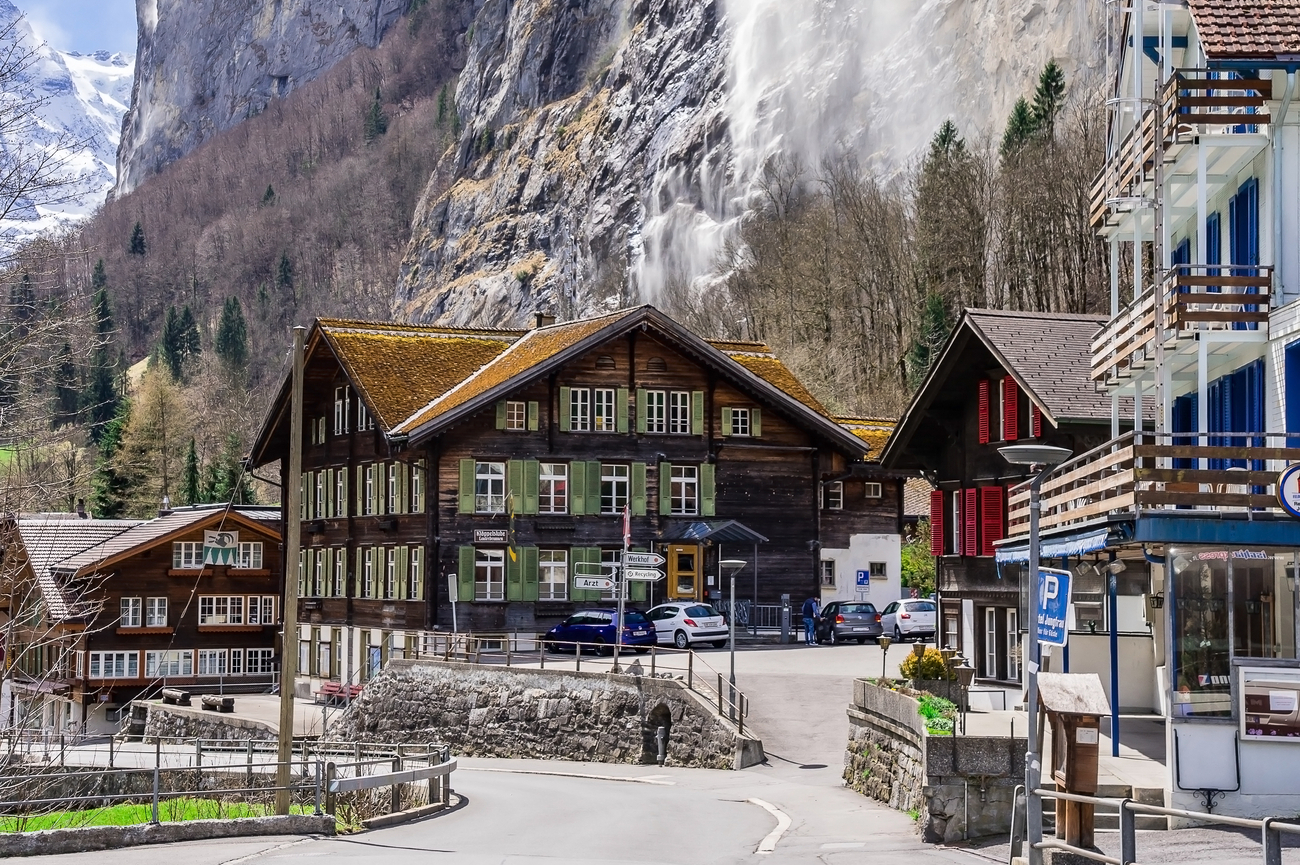
Mürren
Village
From the base of Staubbach Falls, hop aboard the cable car. The journey takes just about 20–25 minutes total, but every minute is cinematic.
Mürren is car-free, cloud-close, and utterly unreal. This place is often called the “balcony of the Bernese Alps,” and for good reason. The views here? Unapologetically jaw-dropping. There’s no rush here. Wander through the narrow lanes past sun-washed wooden homes and alpine gardens. Stop for a fresh-roasted coffee or a slice of apple strudel. Listen for cowbells.
For a luxury moment, consider a paragliding session that launches directly from the cliffs of Mürren. This offers aerial views of the Lauterbrunnen Valley that few ever see. This paragliding experience lasts for 30 to 40 minutes.
Alpine
Sports Center
A 5-minute stroll will take you to the Alpine Sports Center. Don’t let the cozy wooden exterior fool you. This is both a community hub and a haven for adventurers. And inside, you’ve got options.
Feeling active? Hit the indoor climbing wall or dive into the heated pool, complete with panoramic windows that frame the Eiger like a living mural. Looking for something restorative? There’s a wellness zone with sauna, steam bath, and massage services. And if you’re traveling with family, this is the perfect interlude. Kids can splash in the pool while you soak in the alpine view.
Afternoon:
Allmendhubel
It’s time to lift your afternoon, literally. Just steps from Mürren’s village center, hop aboard the charming funicular railway to Allmendhubel. In just 4 minutes, you’ll glide through a fairytale forest and emerge 1,907 meters above sea level.
Allmendhubel is affectionately known as Mürren’s flower mountain and the name couldn’t be more perfect. You’ll be greeted by open alpine meadows awash in wildflowers. You can hike the Flower Trail, enjoy a long, scenic lunch with a mountain view, or simply lie in the grass and watch clouds drift over the Eiger, Mönch, and Jungfrau.
Allmendhubel
Flower Park
Just a short 2-minute walk from the terrace lies one of the most delightful and unexpected surprises of the region: the Allmendhubel Flower Park. The Flower Park is an interactive alpine wonderland. Here, the hills come alive not just with wildflowers, but with sculpted slides, wooden climbing towers, suspension bridges, and whimsical play zones.
And yes, this place is made for all ages. Families can explore the Flower Park adventure playground, complete with wooden climbing sculptures and gentle slides carved into the hillside. But even if you’re not traveling with little ones, the Flower Park has its charm. It’s a space that celebrates nature through play, design, and perspective. For a special touch, time your visit with the alpine bloom season (June to August) when the hillside bursts into vibrant color.
Lauterbrunnen
Valley
Within 30–40 minutes, you’ll find yourself standing at the foot of Lauterbrunnen Valley. This place isn’t a fantasy. It’s geology, history, and culture all rolled into one staggering landscape. The valley is carved deep between towering cliffs, stretching 3 kilometers wide and framed by alpine giants. And listen to this. Here’s the magic number: 72 waterfalls, each tumbling with its own voice, rhythm, and story. You’ve already seen Staubbach Falls, now multiply that sense of wonder by, well, seventy-one.
You can book a private tour complete with fondue picnic and photoshoot to elevate your experience. Imagine yourself enjoying cheese bubbling over a burner, crusty bread, and a chilled glass of white wine, all set against the alpine skyline. Add in a Swiss chocolate tasting and you’ve just hit peak indulgence.
Evening:
Church of Lauterbrunnen
As the sun dips, go to a peaceful, soul-stirring stop— the Church of Lauterbrunnen. The church was built in 1487 and it has stood watch over the valley for centuries. Step inside, and you’ll find wooden pews, hand-carved details and stained-glass windows that glow warmly in the fading light. The churchyard overlooks a panorama that stretches across the Lauterbrunnen Valley. For a deeper moment of connection, you can light a candle inside the chapel. Or simply sit outside on one of the benches.
Trümmelbach
Falls
To end your day on an unforgettable note, make your way to Trümmelbach Falls. Trümmelbach is not your typical waterfall. In fact, you don’t even see it at first. That’s because it’s inside the mountain. Yes, you read that right. These are the only accessible glacier waterfalls in Europe that are located within a mountain.
Fed by the melting snow and ice of the Eiger, Mönch, and Jungfrau, over 20,000 liters of water per second surge through this network of chutes, corkscrews, and cascades. It’s raw, untamed power. And thanks to a series of tunnels, lifts, and illuminated pathways, you get to witness it all up close.
Day 2 - Lauterbrunnen Tour Map
Day 3

Morning: Wengen
Let’s start the day with pure altitude. Your morning begins in Wengen, a car-free mountain village that feels like it belongs on the cover of a vintage travel poster. This place is timeless, tranquil and suspended above the world. Wengen sits at 1,274 meters above sea level, basking in sunshine and jaw-dropping panoramas of the Jungfrau massif. Imagine yourself strolling through its charming main street lined with wooden chalets, flower boxes, and bakeries serving fresh pastries and alpine cheese.
Wengen
Church
Just a 10-minute walk from the city center and you’ll find one of Wengen’s best-kept secrets, the Wengen Church. It was built in 1928 and it exudes modern alpine architecture. Its whitewashed walls, wooden steeple, and slate roof blend effortlessly into the mountainscape. Once you step inside, you’ll be in awe of a peaceful interior bathed in natural light, with wooden beams overhead and hand-carved pews that invite quiet reflection.
Lauberhorn
Run
It’s time to turn up the tempo and there’s no better place to do that than the legendary Lauberhorn Run. Take a 15-minute walk from the church or take a quick lift ride. But as you climb higher, you’re not just following a path.
The Lauberhorn Run is the longest and one of the most iconic downhill ski races in the world. Every January, it becomes the adrenaline-charged stage of the FIS Alpine Ski World Cup. This is where racers hit speeds of up to 160 km/h (yes, that’s real) on a course that carves through forests, meadows, tunnels, and over jaw-dropping ridges. And if you’re visiting in the off-season, walking parts of the course is a thrill. You’ll pass legendary sections like the Hundschopf, where skiers launch off a rock ledge with nothing but air and Alps beneath them. Or the Kernen-S, a tight turn that challenges even the best. And you don’t have to be a ski pro to enjoy it. In the warmer months, the route becomes a scenic hiking trail with panoramic views that stretch across Wengen.
Wengernalp
As midday sun pours across the mountains, your next stop is in Wengernalp. It’s a short train ride from the Lauberhorn Run. This place is known as the balcony of the Bernese Alps. It sits between Wengen and Kleine Scheidegg and it offers uninterrupted, jaw-dropping views of the Eiger, Mönch, and Jungfrau trio. This is Alpine serenity at its finest.
Wengernalp has long been a favorite rest stop for mountaineers, hikers, and skiers. It was even mentioned in travel journals from the early 19th century when British explorers were first drawn to the region’s raw beauty. Today, it's where locals and visitors alike come to pause. Go there and take your time. Sit on a bench and let your eyes wander.
Kleine
Scheidegg
A 20-minute ascent will take you to Kleine Scheidegg. This place is nestled between the mighty Eiger and Lauberhorn. This high-mountain saddle has been a hub for mountaineers since the golden age of alpinism in the 1800s. It’s also the historic gateway to one of Switzerland’s most extraordinary engineering marvels: the Jungfrau Railway.
The views here are impossibly vast, glaciers sparkle in the sun, avalanches thunder in the distance, and the Eiger North Face looms above, as infamous as it is breathtaking. Luxury seekers? There are exclusive options too: private guided hikes, e-mountain bike tours, and photography sessions with a pro. And if you're visiting in winter, this is a skier’s paradise with pristine runs in every direction.
Eiger
Trail
From Kleine Scheidegg, lace up your boots and set off on one of the most iconic mountain trails in the Bernese Alps, the Eiger Trail. This is a pilgrimage along the base of a mountain that has captured the imagination of adventurers for over a century.
The trail begins right at the foot of the Eiger’s infamous North Face, and within minutes, you’ll be dwarfed by sheer vertical cliffs. As you walk, you'll pass interpretive signs that tell the dramatic stories of climbers who dared to take on the Eiger’s brutal wall. Names like Heckmair and Harrer come to life. If you’re lucky, you might even spot climbers inching up the rock face.
Evening:
Männlichen Panorama Trail
Take the cable car from Wengen or Grindelwald up to Männlichen. This trail is not about speed. It's about perspective. Running gently along a ridgeline from Männlichen to Kleine Scheidegg, the path offers a leisurely 4.5 km stroll with 360-degree views of the Eiger, Mönch, and Jungfrau. But in the evening, something magical happens. The light hits differently. The mountain peaks blush gold and violet. This trail is perfect for both beginners and experienced hikers.
Victoria-Lauberhorn
After a day tracing ridgelines, waterfalls, and the footsteps of mountaineering legends, it’s time to head to Victoria-Lauberhorn.
More than just a name, Victoria-Lauberhorn is part of the soul of this alpine village. This place was built in 1897 and it has served as a living witness to the golden age of Alpine tourism.
Tonight, you’ll step into that heritage, but with all the modern luxuries in tow. Imagine yourself on the terrace or lounge and sipping a glass of local white wine or hot glühwein. Behind you are elegant wooden interiors and quiet conversations. And in front of you are the glowing silhouettes of the Lauterbrunnen Valley and the Jungfrau range.
Day 3 - Wengen Tour Map
Day 4

Morning: Grindelwald
Let’s start the day in Grindelwald, a village that feels like it was plucked straight from the pages of a storybook. This is the place where the Alps feel close enough to touch. Start your morning with a leisurely walk through the village. The streets are lined with cozy wooden chalets and the mountain views feel almost unreal. You can stop at a local bakery and pick up a freshly baked croissant or grab a coffee. But don’t be fooled, there’s plenty of luxury in Grindelwald if that’s what you’re after. For those who want to take it to the next level, private mountain tours are the perfect way to get up close and personal with the Eiger. You can hop on a private gondola ride or even a helicopter tour to get a panoramic view of the entire region.
First
From Grindelwald, it’s time to elevate your experience even further—both literally and figuratively. Hop aboard the First gondola and ascend to First.
From the moment you step off the gondola, you’re greeted by 360-degree views of the towering peaks. For those with a thirst for adventure, First is a playground. Try the First Cliff Walk, an adrenaline-pumping suspension bridge that will have you walking along the edge of a cliff, with nothing but the vastness of the Alps ahead. It’s the perfect mix of awe-inspiring views and thrilling heights. Or if you’re after something even more adventurous, take the First Flyer, a zip line that lets you soar above the valley at speeds that make the world below blur into a sea of green and white. Then keep the adrenaline going with a ride on the Mountain Kart, a three-wheeled alpine go-kart, or the Trottibike, a cross between a scooter and a bike, both offering exhilarating descents through breathtaking alpine scenery.
Bort
It’s time to make your descent. But this is not simply “going down.” You should go and take the First to Bort trail, a scenic route that lets you glide through the alpine meadows and lush forests with the Eiger and Jungfrau looming in the distance. You’ll ride a gondola from First to Bort while having panoramic views of the Grindelwald valley below, the mighty peaks overhead and a series of waterfalls that cascade down the cliffs. And if you’re in the mood for something truly indulgent, consider booking a private cable car experience for an even more exclusive ride down.
Afternoon: Bachalpsee
After a quick bite, it’s time to slow down and embrace the serene beauty of Bachalpsee. It isn’t just a lake; it’s a mirror reflecting the majesty of the mountains surrounding it. The lake has been a popular destination for over a century and it was once only accessible on foot from Grindelwald. You can still go for this option by taking a leisurely hike around the lake where a gentle loop that lets you explore its surroundings while soaking in the calm beauty of the alpine landscape. The path is easy to navigate which makes it accessible for all levels of hikers.
Grindelwald
Glacier Gorge
After your retreat at Bachalpsee, it's time for an exciting change of pace as we head to the Grindelwald Glacier Gorge. This breathtaking gorge offers a unique glimpse into the raw power of nature. Carved over thousands of years by the Grindelwald Glacier, the gorge features narrow, jagged rock walls that rise high above.
As you walk along the wooden pathways and suspension bridges, you’ll find yourself surrounded by deep emerald waters, waterfalls cascading from the cliffs and dramatic rock formations. The Grindelwald Glacier Gorge is a geological wonder. And every step through the gorge feels like you’re walking through a living sculpture. If you are looking to make this experience even more extraordinary, consider indulging in a private guided tour. Your guide will share fascinating insights about the area, from the flora and fauna to the secrets hidden in the gorge’s rock formations.
Grindelwald Museum
Now it’s time to dig into history. Step back in time at the Grindelwald Museum, where you can get captivating stories of the alpine village. This museum is housed in a traditional Swiss chalet and it serves as a treasure trove of fascinating artifacts and historical exhibits that paint a vivid picture of Grindelwald’s past. You'll discover the area’s pioneering role in the early days of alpine tourism. It has exhibits showcasing antique climbing equipment, old photographs, and stories of mountaineers who risked it all to conquer the towering peaks of the Eiger, Mönch and Jungfrau. The museum’s interactive displays and multimedia presentations make it an engaging stop for visitors of all ages.
Evening:
Pfingstegg
As the golden hour approaches, make your way to Pfingstegg. You’ll be swept away by the tranquility, the crisp mountain air, and the sight of the towering Eiger, Mönch and Jungfrau.
To get there, you’ll ride a cable car from Grindelwald. But for those seeking something even more exclusive, consider a private helicopter tour to Pfingstegg. Imagine soaring above the valley, with the Eiger’s north face (Eiger Nordwand – German name) right in front of you. And if you’re up for it, take a private guided hike through the surrounding trails.
Bodmi
The final stop on today’s adventure is Bodmi. This charming spot is where nature and relaxation truly come together. It’s a place to wind down. Once you get here, you can stroll through alpine meadows, enjoy the fresh mountain air, and watch as the surrounding peaks glow with the soft light of the setting sun. The beauty here is simple, yet captivating.
You can put your ski boots on and try out sledding or tubing in the Bodmi Arena. This spot is a winter wonderland designed for both families and beginners. The gentle slopes and exciting activities offer a fun and carefree experience. For those seeking a touch of luxury, Bodmi offers the opportunity for night skiing.
Day 4 - Grindelwald Tour Map
Day 5

Morning: Jungfraujoch
Start your final day in the Swiss Alps with a journey to Jungfraujoch, often referred to as the "Top of Europe." This iconic destination is a must-see for any visitor to the region. The spot offers views that stretch across the majestic peaks of the Bernese Oberland and beyond.
As you arrive at Jungfraujoch, you’ll be greeted by breathtaking vistas of the Aletsch Glacier. If you’re looking to add luxury to this experience, you can consider booking a private tour of the Jungfraujoch complex, where you can enjoy exclusive access to some of the best viewpoints and skip the crowds for a more personalized experience. The Jungfrau-Aletsch region is a designated UNESCO World Heritage Site, recognised for its vast glaciers and alpine biodiversity.
Sphinx
Observatory
Now it’s time to head to one of the highest and most spectacular vantage points in the world. The Sphinx Observatory is perched at 3,571 meters and offers unparalleled views of the Swiss Alps. . From here, you’ll gaze out over the pristine Aletsch Glacier and the surrounding peaks of the Eiger, Mönch, and Jungfrau.
As you step onto the observation platform, the vastness of the alpine wilderness unfolds before you. The snow-capped mountains, the shimmering glaciers and the expansive skies make for an awe-inspiring backdrop. The observatory also provides an opportunity to delve into the science behind the stunning views. Its location makes it a key site for ongoing research into the region's weather patterns and glaciology.
Ice
Palace
After soaking in the sweeping views, it’s time to explore the Ice Palace. This is located beneath the glacier and it is one of the highlights of the "Top of Europe." As you step into the palace, you'll be surrounded by intricately carved ice sculptures, ice tunnels and frosty caverns that shimmer with an ethereal glow. The ice formations are constantly changing and shifting, creating a dynamic environment that feels like stepping into a living sculpture. As you wander through the tunnels, you’ll pass sculptures of animals, mythical creatures and abstract designs.
If you want a more luxurious experience, consider booking a private guided tour of the palace. With exclusive access, you can take your time exploring the palace, and your guide will offer you an in-depth understanding of the region’s geology and glaciology.
Alpine Sensation Tunnel
Now, take a walk through the Alpine Sensation Tunnel. This is an experience that will deepen your connection with the heart of the Swiss Alps. This fascinating tunnel stretches 250 meters beneath the Jungfrau and is a visual and emotional journey that narrates the history of the Jungfrau Railway.
As you move through the tunnel, you’ll encounter multimedia displays, striking visual effects and fascinating exhibits that showcase the incredible human effort and innovation required to build the Jungfrau Railway, which took over 16 years to complete. The visual experience is also complemented by an immersive sound design that brings the past and present together.
Afternoon:
Glacier Plateau
From the Alpine Sensation Tunnel, it’s just a short walk to the Glacier Plateau, and trust us, every step is worth it. Here, you'll experience the untamed beauty of the Swiss Alps in its purest form. The Glacier Plateau is a vast expanse of snow and ice, a place where time seems to stand still as you marvel at the natural beauty around you.
If you're feeling adventurous, there are also opportunities for snow-based activities like sledging or even trying out some skiing. For something more relaxed, you can simply sit and enjoy the quiet beauty of the plateau.
Snow
Fun Park
This place is where adventure truly comes alive. Just a short stroll from the plateau, this family-friendly, adrenaline-pumping playground offers the perfect way to embrace the wintry magic of Jungfraujoch.
The Snow Fun Park is a winter wonderland, offering a variety of exciting activities designed for all ages and skill levels. Whether you’re a thrill-seeker or simply looking to play in the snow, the Snow Fun Park has something for everyone. You can try your hand at sledging, snow tubing, or even the ice flyer. Imagine yourself trying out a unique ride that offers a bird's-eye view of the stunning alpine landscape.
Unspunnen
Castle Ruins
After thrilling activities at the Snow Fun Park, it’s time to take a scenic journey down to the Unspunnen Castle Ruins. This historic site offers a different kind of beauty.
The Unspunnen Castle Ruins date back to the 12th century, standing as silent witnesses to centuries of Swiss history. The castle was once a stronghold of medieval power and it now offers visitors a glimpse into the life of a bygone era. The site is steeped in legend, with ties to local folklore and tales of knights, battles and noble families. The contrast of the ancient stone walls against the majestic Alpine backdrop makes it a truly magical place. For those who enjoy history with a side of luxury, a private guided tour of the castle ruins offers deep insights into its history, its significance to the region and the surrounding legends that make the ruins even more enchanting.
Evening:
Hoheweg
Now, wrap up your day with a peaceful evening on Hoheweg, Interlaken’s elegant promenade where natural beauty, history and modern luxury blend together.
Hoheweg is known for its stunning views of the surrounding mountains, including the towering Eiger, Mönch, and Jungfrau. As you stroll along this promenade, you’ll pass quaint cafés, boutique shops, and galleries that embody the charm and elegance of Interlaken. You can relax and have a meal at one of the upscale restaurants along the promenade. Go and savor a gourmet dinner with locally sourced ingredients while watching the evening unfold in the breathtaking Swiss Alps as you mark the end of this breathtaking tour through the Jungfrau Region.
Day 5 - Jungfraujoch Tour Map
Other Things to do in the Interlaken & Jungfrau Region
If you think you’ve seen all the Alps have to offer, think again. It’s a place where nature performs daily miracles and mountains don’t just stand tall. Whether you’re in search of soul-stirring solitude, panoramic playgrounds or elevated alpine moments (and yes, luxury without the flash). Here are more spots you can visit in this region.
- Schynige Platte: Ride a century-old
cogwheel train to a mountaintop garden of over 600 alpine flower species. Here
you’ll find sweeping views of Eiger, Mönch, and Jungfrau. For a premium touch,
consider a privately guided botanical walk with
mountain folklore along the way.
- Giessbach Falls & Trail: Tumbling down 14 tiers into Lake Brienz, this majestic
waterfall is a sight—and sound—you won’t forget. You can also experience
passing through a waterfall, literally, as there is a part of the trail that passes behind the
waterfalls.
- St. Beatus Caves: Explore the
dragon-filled legends of these caves etched into the cliffs above Lake Thun.
According to legend, a dragon once lived here. Today, it’s a surreal natural
wonder of dripstone formations and underground waterfalls.
- Gimmelwald Village: No cars. No crowds. No noise except for the occasional cowbell echoing through the valley. Gimmelwald is an untouched mountain village and it’s only accessible by cable car or on foot. You can explore traditional wooden chalets draped in flowers and cheese cellars embedded into hillsides.
- Rosenlaui Glacier Gorge: Prepare to be humbled by nature. The Rosenlaui Glacier Gorge is a wild,
roaring chasm sculpted by centuries of glacial melt. You’ll experience raw
geology in motion. And what sets it
apart? It’s quieter than the more tourist-heavy gorges.
- Grosse Scheidegg Pass: This high mountain pass between Grindelwald and Meiringen is a scenic playground for cyclists, hikers, and anyone who appreciates a good mountain road without the cars.
- Bönigen Historic House Trail: If there’s a place where time lingers a little longer, it’s Böningen. This immersive self-guided walking trail takes you through the heart of Bönigen’s old quarter, where more than 30 historic homes still stand proud.
- Brienzer Rothorn: If you thought the views couldn’t get any
better, take the cogwheel train from Brienz to the Brienzer Rothorn. This
century-old railway winds its way up the mountain on a journey that feels like
stepping into a painting. Less crowded than Harder Kulm but every bit as
breathtaking, the summit rewards you with sweeping panoramas over Lake Brienz,
the Bernese Alps, and deep into the valleys below. It’s a peaceful, photogenic
escape that feels delightfully undiscovered.
- Brienz Rothorn Bahn: All aboard one of Switzerland’s last
remaining steam-driven mountain trains. The Brienz
Rothorn Bahn isn’t just
transport—it’s theatre. Billowing smoke, the nostalgic chug of the engine, and
the slow ascent through forests and cliffs make this ride a sensory experience.
The best part? Every window frames a masterpiece. It’s a must for lovers of
vintage travel and dramatic scenery alike.
- Thun: Just 30 minutes from Interlaken lies the
lakeside town of Thun—often overlooked, but never underwhelming. This is
Lucerne’s quieter cousin, with a mediaeval Old Town wrapped in cobblestone
alleys, boutique shops, and riverside cafés. Don’t miss Thun Castle, perched
high above the town like a crown. For a different kind of indulgence, explore
the town’s elegant lakefront or join a private boat tour for sunset. It’s
romance and history rolled into one perfect afternoon.
- Aareschlucht (Aare Gorge): Between towering rock walls and icy-blue waters lies a secret canyon you can walk through—welcome to the Aareschlucht. Just outside Meiringen, this glacial gorge is carved by the powerful Aare River and makes for an otherworldly stroll on raised walkways and tunnels. It’s cool, family-friendly, and perfect for a mid-summer refresh. For a luxury twist, consider booking a private naturalist guide to decode the geology and legends that shaped this dramatic landscape.
- Kunsthaus Interlaken: If you’re looking to feed your soul then head to Kunsthaus Interlaken is the creative heartbeat you didn’t know you needed. It hosts four rotating exhibitions annually covering 19th-century classics and contemporary works. And if you drop by, you might also get a chance to witness artist talks and even join workshops.
Day Trips from the Interlaken & Jungfrau Region
Because adventure doesn’t end at the edge of the valley, sometimes it’s just a ride away. Here’s the truth about Interlaken and the Jungfrau Region: it’s a dream. But even dreams have horizons and beyond them are more marvels waiting to be explored. These day trips are easy to reach, wildly photogenic, and packed with elevated experiences.
- Bern: Just an hour by train from Interlaken, Bern will
impress you with the UNESCO-listed
Old Town wrapped in six kilometers of arcaded walkways, medieval fountains, and
terracotta rooftops. You can visit Zytglogge, a 13th-century clock tower that
performs a mechanical show every hour. And for a luxurious twist, indulge in a
private guided art tour at the Zentrum Paul Klee or take a helicopter ride.
- Lucerne:
About 1 hour and 45 minutes
from Interlaken, Lucerne is a picture-perfect lakeside city with snow-dusted
peaks in the backdrop. Its pastel-colored facades, cobbled squares, and the
iconic Kapellbrücke paint a postcard. You can elevate your visit with a luxury
cruise on Lake Lucerne or even book a private tour through the Rosengart
Collection.
- Montreux: A 2-hour train ride away from Interlaken, Montreux is where the Swiss Alps meet Riviera glamour. This town is known for its jazz festival, lakeside promenade, and Chillon Castle. You can also get a taste for the finer things by booking a private wine tasting in Lavaux vineyards just up the hill.
- Zermatt: Roughly 2 hours and 30 minutes away, Zermatt is a world unto itself. Car-free and home to the legendary Matterhorn, it’s a haven for lovers of both luxury and adventure. To get the best view of the place, you can take a private helicopter tour around the Matterhorn. You can also experience a one-of-a-kind dining experience at one of the highest restaurants in Europe, the Matterhorn Glacier Paradise.
- Emmental: Just under two hours from Interlaken, Emmental is a countryside escape dotted with rolling green hills, traditional farmhouses and of course, cheese. Visit an artisan dairy where Emmentaler AOP is crafted using age-old methods. Or you can also join a private tasting experience that pairs these nutty wheels with regional wines.
- Sion: A 2.5-hour journey from Interlaken will take you
to the historic capital of the Valais region. This place is known for its twin
hilltop castles and sun-drenched vineyards. The town itself is rich with Roman
roots and Gothic cathedrals, while the surrounding terroir boasts some of the
oldest continuously cultivated vines in the world. You can join a luxury wine
tour through some of its cellars and sample rare vintages of the region.
- Twann: Take a 1-hour and 45-minute trip to Twann. This place is known for boutique vineyards and historical trails. Here, wine is a way of life. This is another spot where you can take a guided vineyard walk through steep hillside plots. Aside from tours, you can also indulge in a luxury tasting session followed by a boat ride across the lake.
Things to Do with Kids in the Interlaken & Jungfrau Region
The Interlaken & Jungfrau Region creates childhood dreams that are painted against a backdrop of snow-capped peaks, mirror-like lakes and meadows that seem to come straight out of cartoons. This area is a playground at the roof of Europe where families can trade screen time for lifetime memories.
- Ballenberg
Open-Air Museum: You can step
into Swiss history at this incredible open-air museum. This is where over 100
traditional farmhouses, barns and workshops are scattered across meadows and
forests. Your little ones can pet farm animals, watch blacksmiths at work and
even try their hand at baking or crafting.
- Heimwehfluh
Funicular and Toboggan Run: If
you are looking for hilltop fun, then this is the place to be. You can ride a charming wooden funicular
car from 1906 up to a hilltop with sweeping views over Interlaken. Then, zoom
back down on a thrilling toboggan run that kids absolutely love!
- Harder Kulm Panorama Platform: This place is known as the "Top of Interlaken.” Harder Kulm Panorama Platform is the viewpoint that offers 360° views of lakes, valleys, and towering peaks like Eiger, Mönch and Jungfrau.
- Bort Alpine Playground: This spot is located right
next to the Bort gondola station. This playground looks like something straight
out of a storybook. Expect giant trampolines, zip lines, climbing towers, and
open alpine meadows for running wild.
- Glacier
Canyon Grindelwald: You’ll
experience an adventure underground as you walk through the icy blue canyons
carved by glaciers. This place is complete with waterfalls and the daring
"Spiderweb" net that brave kids can climb.
- Männlichen Royal Walk: This easy, kid-friendly trail leads to a crown-shaped lookout point offering jaw-dropping views. You’ll spot playful signs and interactive activities along the trail keeping kids excited every step of the way.
- Lieselotte Cow & Trail, Männlichen: Towering at 8.5 metres, Lieselotte the cow is the star of Männlichen’s mountaintop playground. Inspired by the beloved children’s book character, she’s a hit with little explorers. Follow the fun along the “Lieselotteweg” trail to Holenstein. This themed walking path features interactive stations and playful installations inspired by Lieselotte’s adventures, turning an alpine hike into a whimsical storybook journey that kids will absolutely adore.
- Sherlock
Holmes Museum: Here, you can
introduce your kids to the world’s most famous detective at this atmospheric
museum featuring a perfect replica of Holmes' Victorian-era study. There is
also an adventure trail leading to the Reichenbach Falls.
Ski Spots in the Interlaken & Jungfrau Region
The Interlaken and Jungfrau Region is a playground for skiers when winter wraps around Switzerland. Here, the slopes are not just trails down a mountain; they’re portals into the wild. Whether you’re a seasoned pro carving down black runs or a beginner chasing your first snowplow turns, this region delivers with style.
- Grindelwald-First:
Grindelwald-First is the spot
where you’ll find a true skier’s paradise. Here, wide-open slopes,
adrenaline-pumping snow parks, and thrilling freeride zones come together to
create a winter playground that feels almost tailor-made for adventure seekers. You can also take your adventure up a
notch by arranging a private helicopter drop over untouched snowfields and you
can be at the summit for an
unforgettable run.
- Kleine
Scheidegg-Männlichen (Grindelwald-Wengen Ski Area): Imagine skiing beneath the mighty Eiger, with
bluebird skies overhead and some of Switzerland’s most beautiful groomed runs
underfoot. That’s what awaits you at Kleine Scheidegg-Männlichen. This area is
a dream for intermediate skiers who want endless vistas and silky-smooth
descents.
- Wengen
(Grindelwald-Wengen Ski Area):
This is the spot if you want the mix of beginner runs, sweeping cruisers, and
heart-racing World Cup courses like the Lauberhorn. Here, you’ll glide through
timeless landscapes, then ski straight into a luxury chalet perched on the
mountainside.
- Mürren-Schilthorn: Here’s a picture-perfect spot. Mürren is car-free, quiet, and utterly enchanting.
But just beyond the tranquility, Schilthorn’s steep slopes are there to provide
the thrill. This is also the spot where you’ll find the legendary Inferno Race
course, which is known to be the largest
amateur ski race in the world.
- Lauterbrunnen
Valley: Skiing doesn't always
have to mean racing downhill. In Lauterbrunnen Valley, you can cross-country
ski along peaceful trails that wind past frozen waterfalls and snow-dusted
cliffs. This trail is on the valley
floor between Lauterbrunnen and Stechelberg and it runs along the White
Lutschine River.
Golf Courses in the Interlaken & Jungfrau Region
What if your next round of golf came with glaciers sparkling in the background? Golf isn’t just a game in the Interlaken and Jungfrau Region. Here, the courses are as much about the views as they are about the swing. Ready to tee off?
- Interlaken-Unterseen
Golf Club: Set between the
shimmering waters of Lake Thun and Lake Brienz, Interlaken-Unterseen Golf Club
is one of Switzerland’s finest alpine courses. Imagine fairways framed by
snowcapped peaks. And if you want to immerse yourself fully in the golfer’s lifestyle, the Golfer Hotel
Interlaken is right by the course. This hotel offers golf-focused luxury stays
complete with priority tee times, private lessons, and post-round spa
treatments.
- Golf Club Thunersee: Golfclub Thunersee offers nine holes of pure Swiss bliss with the Niesen mountain towering above and Lake Thun sparkling below. It’s a technical but accessible course. It is perfect for sharpening your short game or simply enjoying a relaxed afternoon round. This golf course also has top-notch training facilities with a driving range as well as pitch & putt courses perfect for those who would like to sharpen their skills.
- Golfclub
Gstaad-Saanenland: If you
want to experience golfing the true alpine way,
then Gstaad-Saanenland is worth the drive. This golf course is perched at 1,400
meters and it lets you play amid rugged peaks and lush alpine meadows. It’s
pure mountain golf, with a hint of Riviera chic.
Racecourses
in the Interlaken & Jungfrau Region
While the Interlaken and Jungfrau Region is a playground for nature lovers and adventurers, it doesn't have its own traditional racecourses. There are no grandstands or racetrack buzz tucked between the mountains here. But don’t hang up your racing dreams just yet! There are a few options that are a few hours away.
- Frauenfeld
Racecourse: A 2.5-hour ride will take you to
Switzerland’s famed Derby. Frauenfeld Racecourse offers a vibrant blend of
traditional racing and sophisticated hospitality. If you are a VIP ticket
holder, then you can also enjoy access to
private viewing terraces, elegant pavilions serving gourmet menus and curated
Swiss wine selections.
- White
Turf, St. Moritz: Roughly 4 and
a half hours away from the region, this is the ultimate winter course racing
experience. White Turf transforms the frozen Lake St. Moritz into a dazzling
stage of speed, style, and luxury. Imagine thoroughbreds galloping across
snowfields while you sip champagne from a private VIP lounge, complete with
gourmet Swiss cuisine and front-row views.
Vineyards
in the Interlaken & Jungfrau Region
While the Interlaken and Jungfrau Region is
famous for its snow-dusted peaks and crystal-clear lakes, it isn’t exactly
grape country. The alpine climate doesn’t favor vineyards. But don’t worry,
Switzerland’s most prestigious vineyards are just a few hours away. Here’s
where you can get your next glass of Swiss wine:
- Lavaux
Vineyard Terraces: A 2-5-hour
drive will take you to a UNESCO World Heritage Site. Lavaux is Switzerland’s
vineyard crown jewel,
stretching along the shores of Lake Geneva. Here, ancient stone terraces cradle
endless rows of vines. Don’t forget the sweeping views of the lake and
mountains beyond. And if you are up for a more luxurious experience, you can
book a private wine-tasting cruise on Lake Geneva or arrange a VIP vineyard
tour with a local winemaker.
- Twann Vineyards: Less than 2 hours away from the region, the Twann region is another must-visit for wine lovers. This is set along the northern shores of Lake Biel. A handful of family-owned vineyards offer intimate tastings. Check out Weinbau Domaine Murset to try out barrel-aged wines like their anniversary wine "Le Luisant” and classics like Pinot Noir.
- Sion Vineyards: 2 hours and 15 minutes away
from Interlaken and you’ll be in Sion. This is a medieval town wrapped in
rolling vineyards, famous for its powerful reds and fresh whites. You can visit
Les Celliers de Sion, where you can experience indoor wine tasting at the foot
of the heroic Clavau vineyard.
Michelin-Starred Restaurants in the Interlaken & Jungfrau Region
When people think of the Interlaken and Jungfrau Region, they often picture towering peaks. But here’s a delicious secret: it’s also a playground for food lovers. Whether you crave a once-in-a-lifetime tasting menu or a luxurious twist on local flavors, these Michelin-recognized restaurants turn dining into an unforgettable experience.
- Radius
by Stefan Beer: Prepare for a
journey of the senses at Radius,
where Chef Stefan Beer crafts one of Switzerland’s most talked-about tasting
menus. Sourcing only the finest ingredients within a 50-kilometer
"radius" of Interlaken, every plate is a creative love letter to the
Alps. The luxury experience doesn’t stop at the food: dine in the elegance of
the Victoria Jungfrau Grand Hotel.
- 1910
Gourmet by Hausers: This
Michelin star restaurant is located high in Wengen with sweeping views of the
Jungfrau massif. This intimate restaurant focuses on modern Swiss gastronomy as
it blends local flavors with avant-garde techniques. Go and treat yourself to
their signature tasting course, paired beautifully with rare Swiss vintages you
won't find anywhere else.
- Alpenblick: Alpenblick in Wilderswil is a culinary treasure where rustic Swiss
charm meets Michelin-starred finesse. Helmed by Chef Richard Stöckli, the
restaurant is celebrated for its beautifully balanced dishes. Imagine delicate
mountain trout, handmade pasta, and imaginative desserts. For an
ultra-luxurious touch, book their exclusive “Chef’s Table” experience. Here,
you’ll enjoy a customized menu crafted just for you.
Restaurants
in the Interlaken & Jungfrau Region
Adventure feeds the soul, but let’s not forget the stomach. After a day scaling glaciers, wandering mountain villages or gliding across crystal-clear lakes, you deserve a dining experience that’s just as spectacular as the scenery. Here are spots where you can loosen your hiking boots, raise your glass and dive fork-first into the flavors of the Alps.
- La
Terrasse Brasserie: Set inside
the grand Victoria-Jungfrau Grand Hotel, La Terrasse Brasserie is where luxury
and ease dance beautifully together. This place is known for
Mediterranean-inspired dishes and local Swiss specialties. Imagine a silky
lobster bisque, a tender Swiss veal, or a perfectly crisp tarte flambée served
as you enjoy the view of the Alps winking at you through the window.
- Restaurant
Taverne: This culinary bridge
between old-world Swiss tradition and modern flavour is located in the historic
Hotel Interlaken. Known for its rich Zurich-style veal and its local fish
straight from Lake Thun, Taverne’s kitchen proudly champions regional
ingredients. Dining is truly an experience here. Try out their summer garden
terrace, which feels like
dining inside a secret garden, complete with mountain breezes.
- Schuh
Restaurant: This is a Swiss
experience in Interlaken. Since 1818, it has been a beloved destination for
visitors seeking the true taste of Switzerland. Think fondue so velvety it
almost feels illegal. You can also enjoy Swiss desserts made with their own
house-made chocolate (Yes, there’s a chocolate factory on-site!).
- Ristorante
e Pizzeria Sapori: Another gem
in the Victoria-Jungfrau Grand Hotel, Sapori serves up authentic Italian
cuisine with a dash of alpine elegance. It is a colorful and energetic spot
perfect for when you’re craving Mediterranean sunshine on a Swiss evening. This
place is known for handmade pastas, wood-fired pizzas, and impossibly fresh
seafood. And if you are looking for a luxurious bottle, you can also grab wine
here, as they have an
extensive Italian wine collection.
- Restaurant
Bären: High in the car-free
village of Wengen, Restaurant Bären is a celebration of authentic alpine
cuisine served with gourmet flair. Here, everything is local, seasonal, and
passionately crafted. Slow-roasted lamb is what they do best.
- Restaurant Alpenruh feels like an alpine haven tucked
away in the Kiental valley. Step inside and you’re greeted by the warm scent of
bubbling cheese and woodsmoke, where aged timber walls echo with mountain
stories. The menu stays true to Swiss mountain soul—creamy fondues, raclette
oozing with alpine cheese, and golden rösti crisped to perfection. The peaks of
the Bernese Alps don’t just sit in the distance—they lean in, close enough to
feel like dinner companions. This isn’t just a meal; it’s mountain soul served
on a plate.
- Restaurant Spycher – Interlaken: Nestled in the heart of Interlaken, Restaurant Spycher blends Swiss fine dining with the rich flavours of alpine tradition. Renowned for its refined take on mountain cuisine, this elegant venue offers a culinary experience that’s anything but ordinary. Think delicate venison paired with wild berry jus or mountain mushrooms elevated with a hint of truffle—each dish a tribute to the region’s rustic charm, reimagined with gourmet precision.
Where to Drink in the Interlaken & Jungfrau Region
In a place where the mountains touch the sky, it’s only fitting that your drinks should be just as unforgettable. Whether you’re toasting with Swiss craft beer after a long hike or enjoying a glass of local wine as the sun sets over the Alps, drinking in the Interlaken and Jungfrau Region is an experience. Here’s where to raise your glass.
- Goldener Anker: Step inside Interlaken’s legendary Goldener Anker and you’ll feel like you’re walking into the heart of the town’s social life. This bar draws a lively crowd of travelers and locals alike with its slightly bohemian vibe.
- Hüsi
Bierhaus: Beer aficionados,
this one’s for you. Hüsi Bierhaus is at the center of Interlaken and it’s a
temple to the craft beer movement. With over 80 different types of beers from
Switzerland and beyond, it’s easy to lose yourself in a tasting flight or two.
- Balmers
Club: Party vibes more your
speed? Balmers Club in Interlaken has you covered. Famous across Switzerland
for its vibrant nightlife, this underground club is where DJs spin dance tracks
late into the night. The club hosts themed nights and great drink deals.
- Gepsi Bar: And if you are planning to drink while you’re in Wengen, then head to Hotel Eiger. Gepsi Bar feels like an elegant alpine living room, complete with roaring fires and stylish cocktails. Their menu features local spirits and inventive seasonal drinks. This spot is perfect for winding down after a day of skiing or hiking.
- On the
Rocks Bar: This is where
Interlaken’s trendsetters gather. Picture a chic, stylish and always buzzing bar with an extensive
cocktail menu and sleek design. If you want to dress up a little and try out a
signature drink, then this is the place to be. The bar also has an outdoor
patio, a perfect luxury spot to enjoy a
martini with a view of the Alps.
Cafes
in the Interlaken & Jungfrau Region
There’s a cozy cafe on every corner. The café culture of the Interlaken and Jungfrau Region is where every sip comes with a side of jaw-dropping scenery. Here’s where to find the best coffee, cakes and cozy corners.
- Café de Paris: Experience Paris right in Interlaken. Café de Paris oozes European
charm, offering fresh croissants, artisan coffee and an inviting terrace
perfect for people-watching. It is often a go-to for those who would want a
leisurely brunch or a sweet afternoon escape.
- Barracuda
Cafe & Bar: A little Edgy,
a little artsy. Barracuda is where locals go when they want great coffee with a
side of creativity. Located near the Interlaken West station, it blends relaxed
café vibes by day with cool bar energy by night. You should try out their
homemade cakes and seasonal lattes.
- Confiserie
Rieder: Confiserie Rieder is
where your sweet tooth dreams come true. Known for handcrafted chocolates,
elegant pastries, and traditional Swiss sweets, this café is another treasure
in Interlaken. You should grab a coffee and one of their signature truffles.
Where to Stay in the Interlaken & Jungfrau Region
- Victoria-Jungfrau
Grand Hotel & Spa (5 stars): Sitting
proudly between Lake Thun and Lake Brienz in Interlaken, this historic icon has
been welcoming royalty, celebrities, and dreamers since 1865. Here, luxury is
redefined. Imagine grand Belle Époque interiors, a 5,500-square-meter spa
sanctuary and Michelin-starred dining. This hotel is not just a place to stay
but an experience.
- Romantik
Hotel Schweizerhof (5 stars): At
the foot of the mighty Eiger in Grindelwald sits Romantik Hotel Schweizerhof.
This is a five-star hideaway that blends traditional Swiss coziness with
contemporary elegance. Travelers rave about the chalet-style suites, the spa
that feels like a mountain cave and the incredible proximity to cable cars and
hiking trails. Romantic? Absolutely. But also perfect for families and
travelers.
- Beausite
Park Hotel (4 stars): Located
in Wengen, Beausite Park Hotel is all about alpine serenity wrapped in luxury.
It’s famous for its personalized service. You’re not just a guest; you’re
treated like family. The rooms open up to sweeping views of the Jungfrau massif
and the wellness area (with indoor pool and garden sauna) is a haven after a
day on the slopes.
- Hotel
Silberhorn Wengen (4 stars): Hotel
Silberhorn feels like it’s straight out of a storybook and yet, it’s fully
modern where it matters. This retreat offers direct access to the
Wengen-Männlichen cable car, so you can be skiing or hiking within minutes of
leaving your room. For more luxury, opt for their suites. They come with
panoramic balconies overlooking the Lauterbrunnen Valley.
- Belvedere
Swiss Quality Hotel Grindelwald (4 stars): If you’ve ever dreamed of waking up with a front-row seat
to the Eiger, the Belvedere Swiss Quality Hotel is your place. This hotel has been family-run since 1907 and it
offers timeless hospitality with modern luxury. The heated saltwater outdoor
pool surrounded by snow in winter is an absolute showstopper on Instagram.
- Hotel and
Restaurant Alpina (3 stars): Hotel
und Restaurant Alpina sits dramatically on the cliffs of Mürren. This 3-star
hotel offers soul-stirring Switzerland at its best, without the five-star
pretense but with a five-star view.
-
Hotel Oberland (2 stars):
Hotel Oberland
is a favorite for travelers who want a peaceful base close to both
Interlaken and the Jungfrau Region. It’s located in Wilderswil, with proximity
to Wilderswil’s train connections. The hotel is known for its fresh, minimalist
alpine style, friendly atmosphere and easy access to hiking trails.
- Backpackers
Villa Sonnenhof: Backpackers
Villa Sonnenhof isn’t your average hostel. It is known across Europe for
winning awards for cleanliness, service, and atmosphere. You will love the big gardens, free
Interlaken public transport passes and communal vibe of this place.
Best Time to Visit the Interlaken & Jungfrau Region
If you could bottle up the feeling of pure wonder — golden sunrises over glacier-capped peaks, lazy afternoons by turquoise lakes, and evenings filled with the scent of wildflowers — that bottle would be labeled "Interlaken & Jungfrau, Summer Edition.”
Though each season offers its own charm, summer, from June to early September, is undeniably the best time to experience everything this awe-inspiring region has to offer. As the snow begins to melt, the entire landscape transforms into a vibrant, thriving paradise. You’ll get to enjoy hiking along trails where wildflowers are in full bloom, exploring lakes with crystal-clear waters and riding the cable cars to the top of the world for views that will leave you speechless.
Summer is like the best of both worlds. And
unlike Summer from 500 Days of Summer, this
season in Interlaken & Jungfrau is nothing short of magical. This isn't one
of those summers where you’re stuck listening to bad playlists and feeling the
weight of Monday looming. No, this is a summer where every day feels like an
adventure, and the only thing you’re worried about is whether you’ll have
enough time to squeeze in another hike. Forget about summer flings, this place
has real magic, the kind you can actually take home in your heart (and maybe a
few extra photos for your feed).
Festivals
in the Interlaken & Jungfrau Region
- Interlaken
Classics Festival: For classical
music enthusiasts, the Interlaken
Classics Festival is like stepping into a dream. The event is held in August
and it brings world-renowned orchestras and musicians to one of the most
beautiful corners of Switzerland. Imagine yourself listening to magnificent
symphonies with the Jungfrau peaks in the
background.
- International
Trucker & Country Festival: If
you love country music or just want to experience something unique, the International
Trucker & Country Festival in Interlaken is an event you won’t want to
miss. Every July, the town transforms into a country music haven, complete with
live performances, dancing, and, of course, a parade of massive trucks.
- Alpabzug
Festival: Picture this: a sunny
June day in Grindelwald, with cows adorned in colorful flowers and large bells
making their way up the mountainside as part of the Alpabzug Festival. This beloved event marks the start
of summer grazing in the Swiss Alps. Aside from the cows, you’ll also be
surrounded by alpine music and the smell of Swiss cheese.
- World
Snow Festival: Where art meets
snow in Grindelwald. Held each January, this festival brings together snow and
ice sculptors from all over the globe to create breathtaking masterpieces. This
is where you can watch artists carve larger-than-life sculptures from massive
blocks of snow.
- Swiss
National Day: Celebrate the
Swiss sense of national pride during Swiss National Day on August 1st. It is
especially festive in Interlaken, where the night sky is set ablaze with spectacular
fireworks over Lake Brienz.
- Top
Taste of Grindelwald Alpine Excellence Food Festival: Calling all foodies! This is where you can
indulge in some of the finest culinary delights of the region. Every September,
this festival brings together the best of Swiss alpine cuisine. From gourmet
dishes prepared by top chefs to locally sourced ingredients that give you a
true taste of the Alps, it’s a celebration of both tradition and innovation.
- Mürren
Village Festival: This festival
is the epitome of a laid-back Swiss celebration. Mürren Village festival is
held each September and it showcases local culture, so you can expect lively folk music, traditional dancing,
and plenty of local food.
Our offices:
